Bhutan/Nepal Exploration Trip
April 3 – April 21
Embark with me now on a 16-day hiking journey through the Asian countries of Bhutan and Nepal. The trip was a small group tour sponsored by Smithsonian Journeys. To begin with, let me provide you some context vis-a-vis the two countries and the region in which they are found.
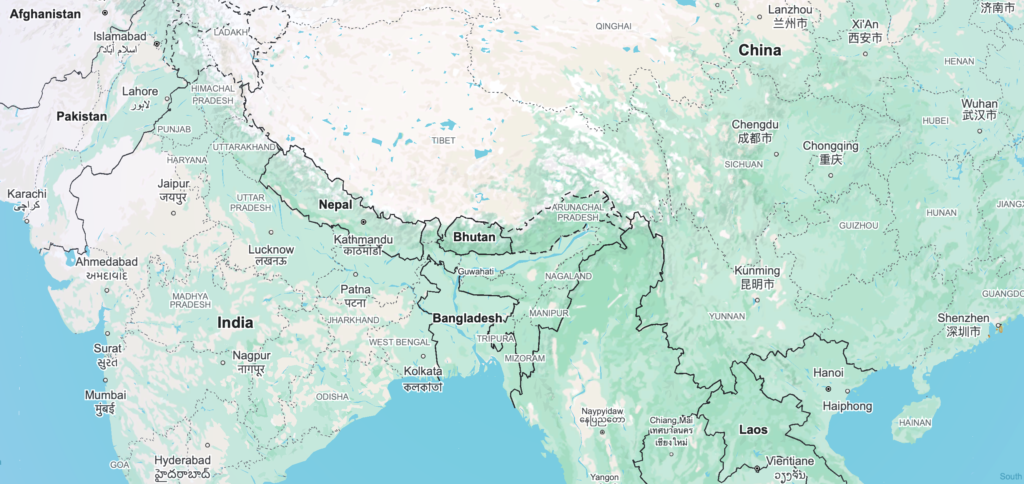
Nepal and Bhutan are both land-locked countries, bordered by China to the north and India to the south.
Bhutan 1
Bhutan, at 14,824 square miles, is slightly larger than Maryland and about 1/2 the size of Indiana. It had a 2024 population of 884,546 people, 48.3% of which are women, with a median age of approximately 30.5 years. According to the International Monetary Fund, GDP per capita is $6,952 (2025 est). According to the 2023 Bhutan Salary Calculator, the average monthly salary in Bhutan is $456. 12.4% of the population is estimated to live below the poverty line. The primary sectors of origin of the countries GDP is 14.7% agriculture, 31.8% industry, and 51.2% services (2022 est). The country’s economy can be summarized through the following bullets:
- hydropower investments spurring economic development;
- Gross National Happiness economy;
- sharp poverty declines;
- low inflation;
- strong monetary and fiscal policies;
- stable currency;
- fairly resilient response to COVID-19;
- key economic and strategic relations with India; and,
- climate vulnerabilities.
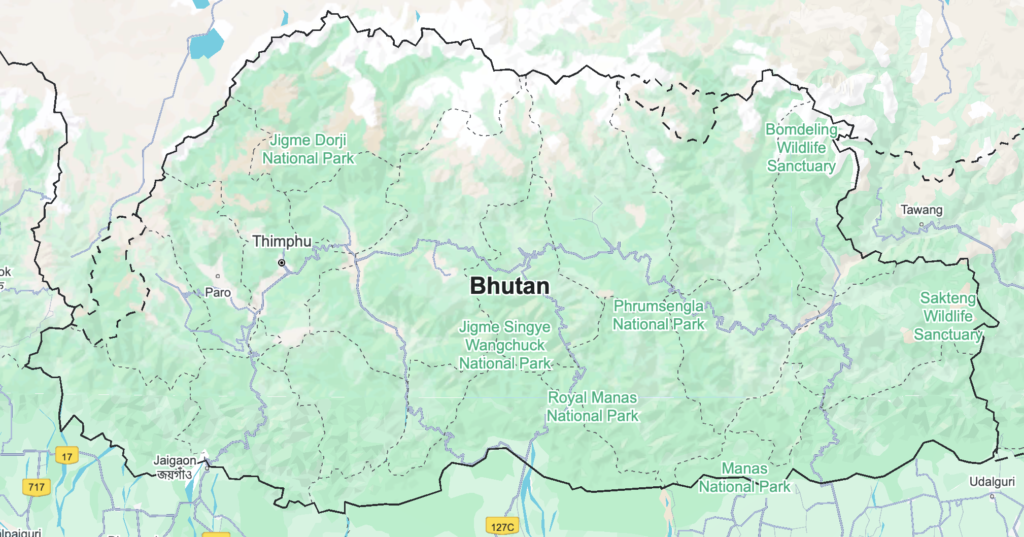
Bhutan strictly regulates tourism by charging an access fee of $100 per visitor ($15 if you’re from India) and limiting the number of tourists permitted to access the country. In 2024 Bhutan allowed 150,000 visitors, and expects to allow300,000 in 2025.
With regard to communications, according to the CIA Fact Sheet, the small land-locked Kingdom of Bhutan has only recently emerged from decades of isolation from the modern world. That, and its mountainous terrain, left the country far back in the field in terms of teledensity as well as access to the Internet. Over the last decade, the country has undergone a significant transformation due to the opening of its borders, liberalization of its telecom sector, and the active support from the government towards increased competition in the mobile, broadband, and ISP segments. The relatively widespread availability of the mobile platform has caused an explosion in mobile broadband subscriber numbers, growing from zero to 100% penetration in the ten years between 2010 and 2019.
With regard to religion, the country is comprised of:
- Lamaistic Buddhist 75.3%,
- Indian- and Nepali-influenced Hinduism 22.1%, and,
- other 2.6% (2005 est.).
Nepal 2
Nepal, at 56,827 square miles, is slightly larger than New York State. It has a 2024 population of 31,122,387 people, 51% of which are women, with a median age of approximately 27.5 years. According to the International Monetary Fund, GDP per capita is $1,490 (2025 est). According to Wikipedia, the average monthly income is $234. 20.3 % of the population is estimated to live below the poverty line. The primary sectors of origin of the countries GDP is 21.2% agriculture, 12.1% industry, and 55.4% services (2023 est). The country’s economy can be summarized through the following bullets:
- low-income South Asian economy;
- post-conflict fiscal federalism increasing stability;
- COVID-19 hurt trade and tourism;
- widening current account deficits;
- environmentally fragile economy from earthquakes; and,
- growing Chinese relations and investments.
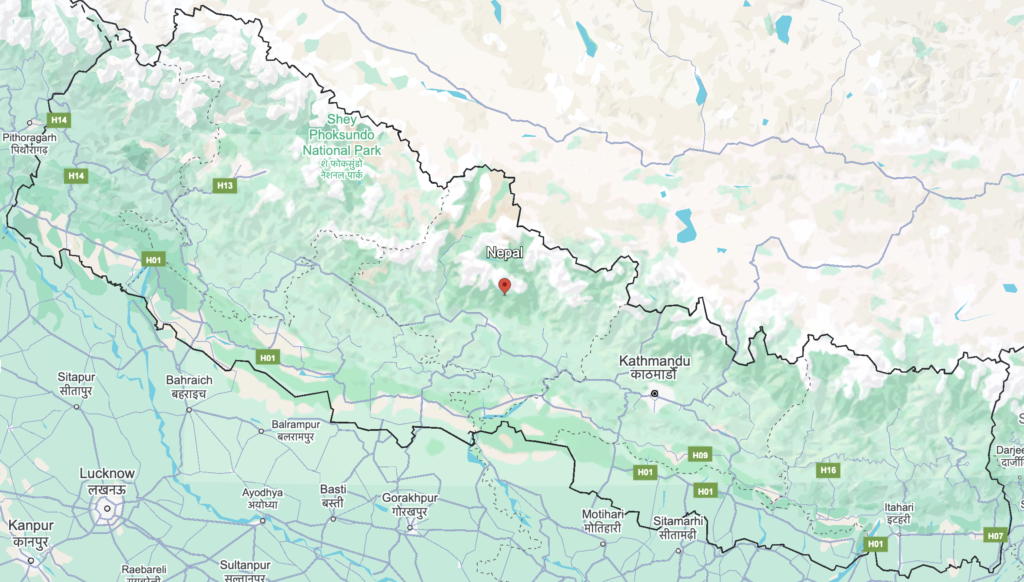
Wikipedia says the following about Nepal: “Nepal, officially the Federal Democratic Republic of Nepal, is a landlocked country in South Asia. It is mainly situated in the Himalayas, but also includes parts of the Indo-Gangetic Plain…. Nepal has a diverse geography, including fertile plains, subalpine forested hills, and eight of the world’s ten tallest mountains, including Mount Everest, the highest point on Earth. Kathmandu is the nation’s capital and its largest city. Nepal is a multi-ethnic, multi-lingual, multi-religious, and multi-cultural state, with Nepali as the official language. 3
The trip covered a wide range of altitude as shown in the graph below, which made packing a bit of a challenge as we were limited to 33 pounds due to internal flight restrictions..
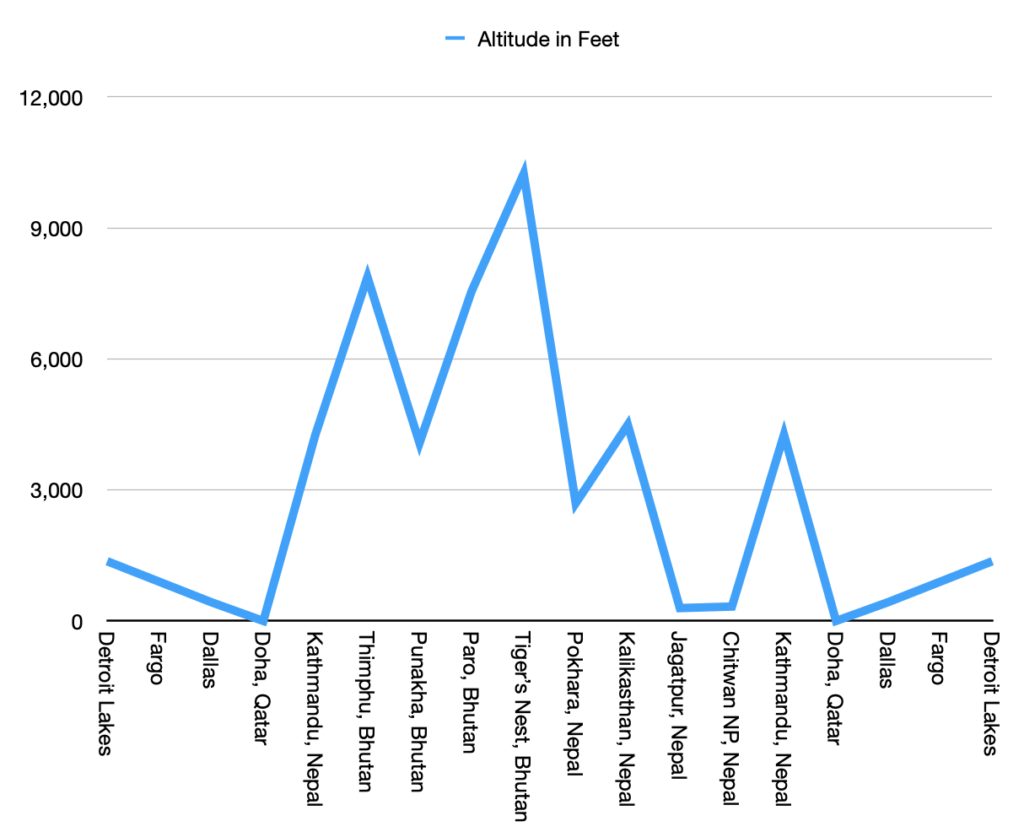
Also, as measured by latitude, Kathmandu is 1,318 miles south of Detroit lakes, MN. As a result, the temperatures at the altitudes shown above were warmer than one might expect at a latitude further north.
Now that the foundation has been laid, on with the trip! You can click on each image to see the full-size photo.
Trip Details
April 3 – 5 – Travel Days
I left Fargo, North Dakota on a 5 p.m. American Airlines flight on April 3. The first stop was the Dallas/Fort Worth (DFW) airport. The DFW airport is quite large and gave me an opportunity to stretch my legs before the next flight, a more than 14-hour Qatar Airways flight to the Hamad International Airport (DOH) in Doha, Qatar. To get some much-needed rest during my 4-hour layover in Doha, I headed to the Al Mourjan Business Lounge – South. The lounge is the best I have experienced. It is spacious, well designed, and caters to the needs of travelers. The on-site restaurant was great, with a variety of food including sushi. The next flight was from DOH to the Tribuhuvan International Airport (KTM) in Kathmandu, Nepal, arriving at 8 a.m. on April 5. Getting through the visa and passport control process at KTM was straightforward if the traveler applied for their visa in advance online (which I did). Upon entering the arrivals area of the airport I was greeted by a representative from Smithsonian Journeys. We waited for two other clients to emerge before we loaded into the van (Trudy and Lynn, from California and Fairbanks, AK, respectively). We were then transported to Soaltee Hotel – Kathmandu for a day at leisure (i.e., to adjust to the time change and our fatigue due to the long flights). Blending royal and traditional elegance, the Soaltee Kathmandu is set amid 12 lush acres with, according to its website, “magnificent views of the Himalaya.” I was not, unfortunately, able to see the mountains from the hotel due to the significant air pollution in the area due to forest fires in the mountains surrounding the city. After our arrival at the hotel, we were greeted with a simple check-in process. Because our rooms weren’t yet available, we retreated to the Patio Bar to enjoy a light lunch. For dinner I went to the indoor hotel restaurant for a wonderful buffet at a cost of $20. The buffet was substantial with a broad variety of food options to choose from. The Soaltee presented what was to be some of the best food during the entire trip.
April 6 – Kathmandu, Nepal
After waking up a couple of times during the night, I got up at 6 a.m. and headed down to the indoor restaurant for a buffet breakfast. Again, the food and service were wonderful and well worth the $16 price tag. I then went for a walk in the area surrounding the hotel. After relaxing during the heat of the day, I met the tour group for an orientation and a walk through the neighborhood surrounding the hotel. We then returned to the hotel for a welcome dinner to kick off the trip. While I have not traveled with a group very often, this group of travelers was punctual, easy going, conversational, and a delight to spend time with. According to others in the group, it was one of the best travel groups they had experienced! The group was comprised of Americans, mostly from the east and west coasts, and three married couples, two couples traveling together (i.e., 2 sisters and 2 friends), and four solo travelers (including me). The age range within the group was 62 to 76.
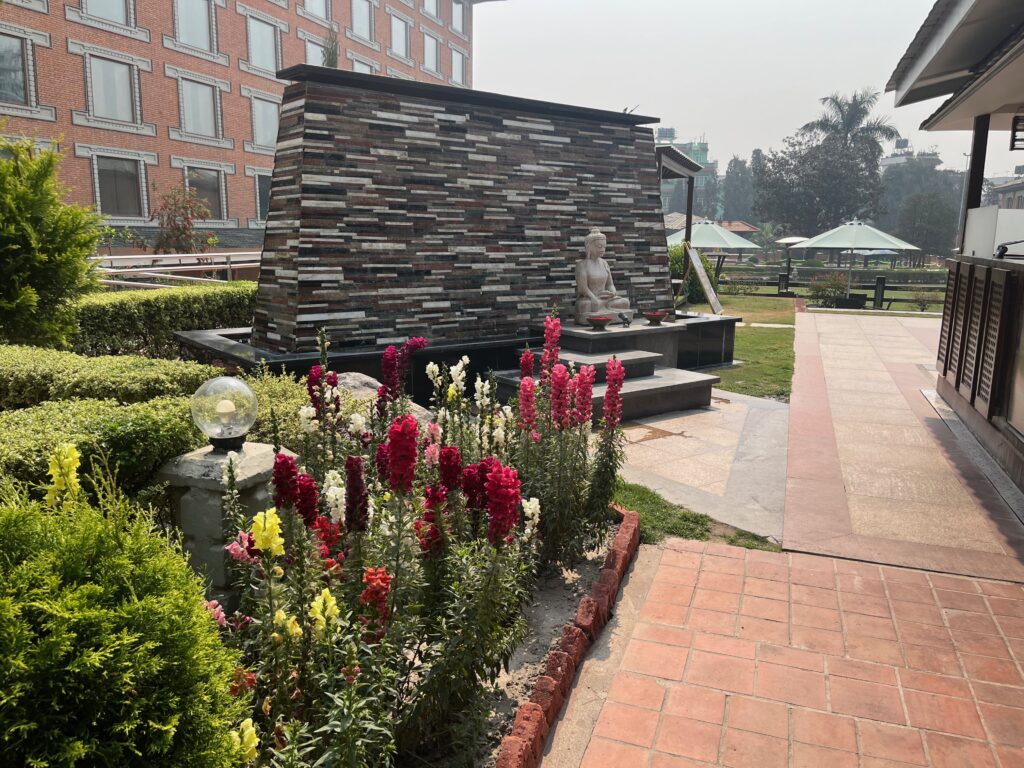
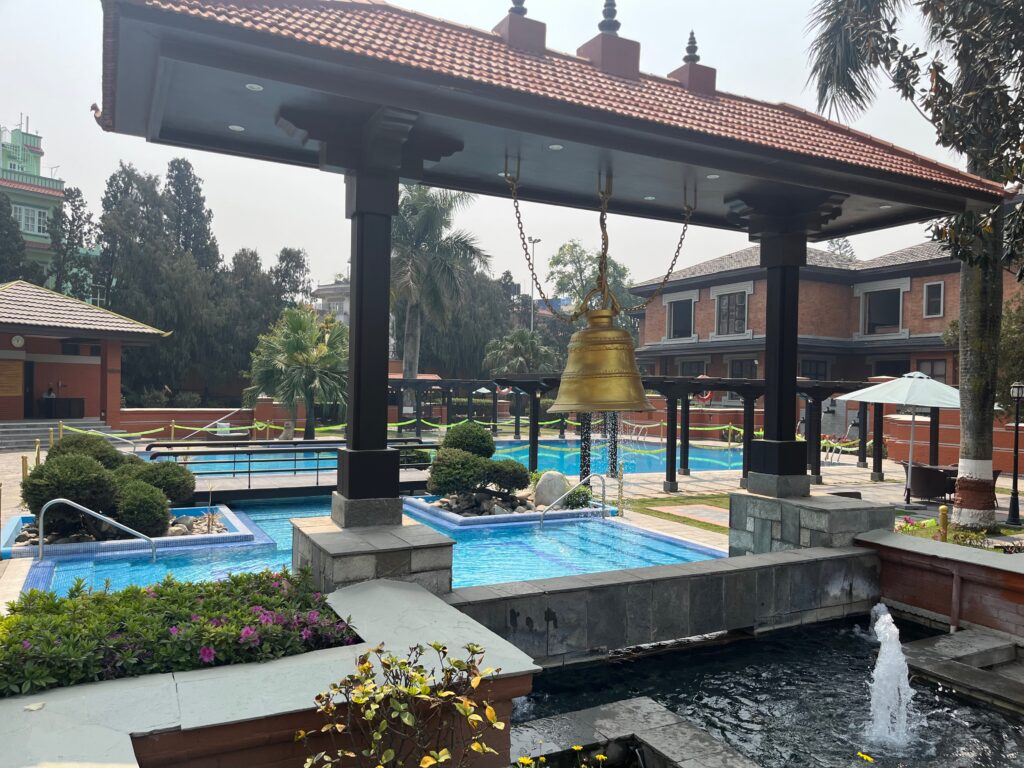
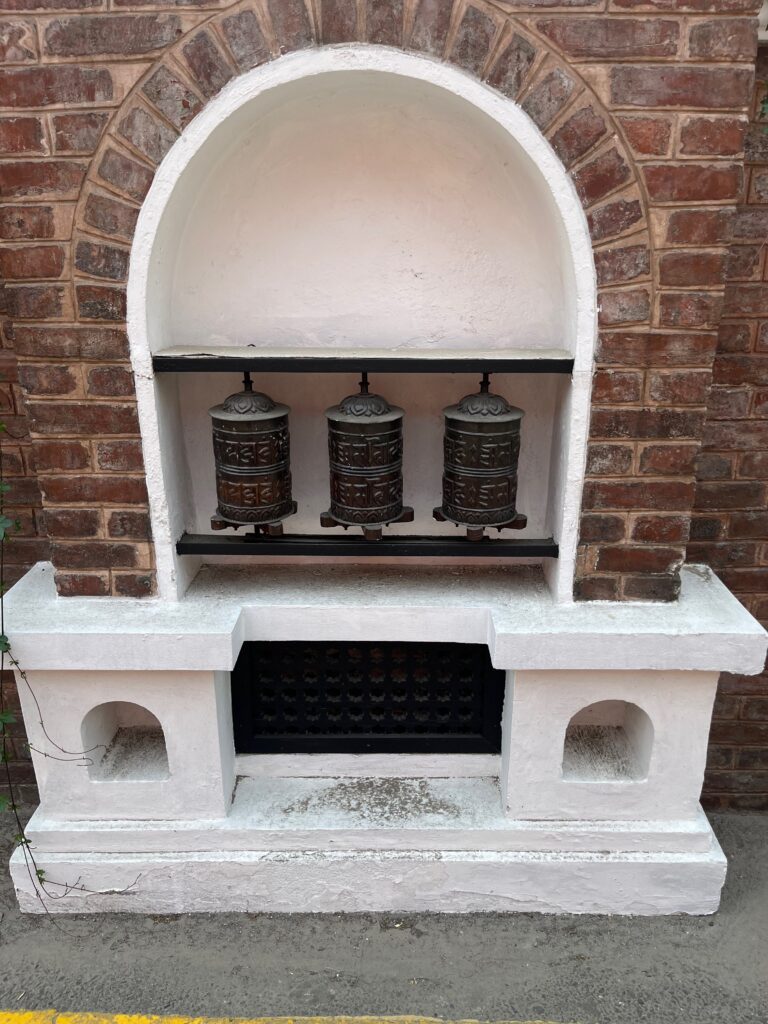
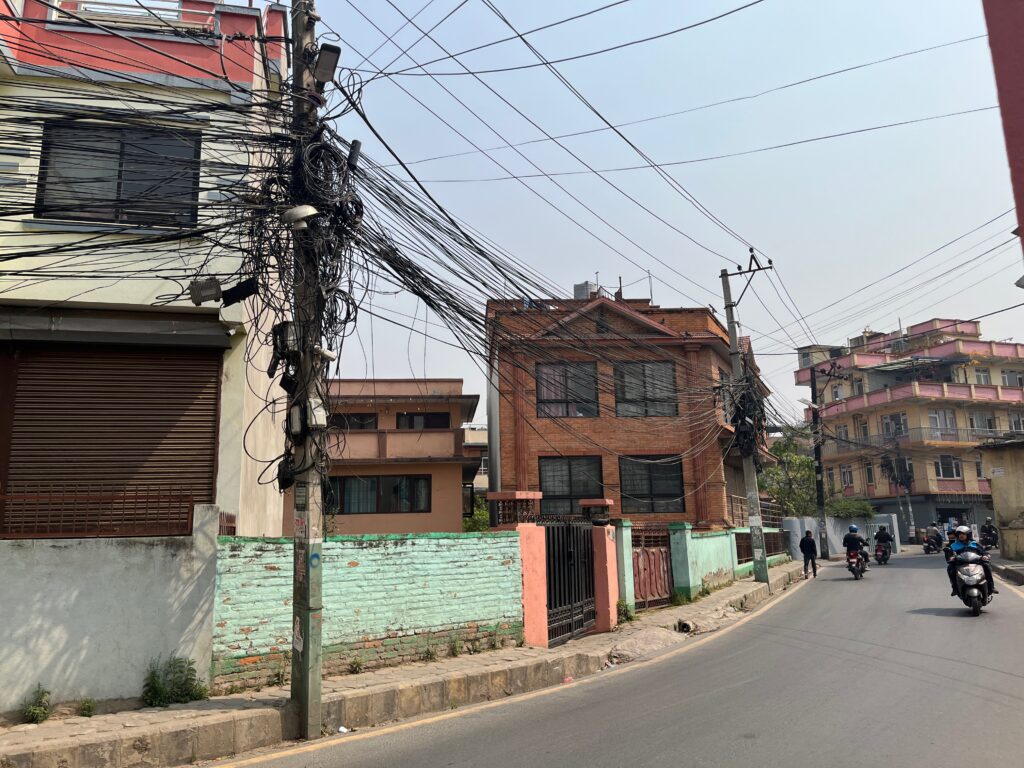
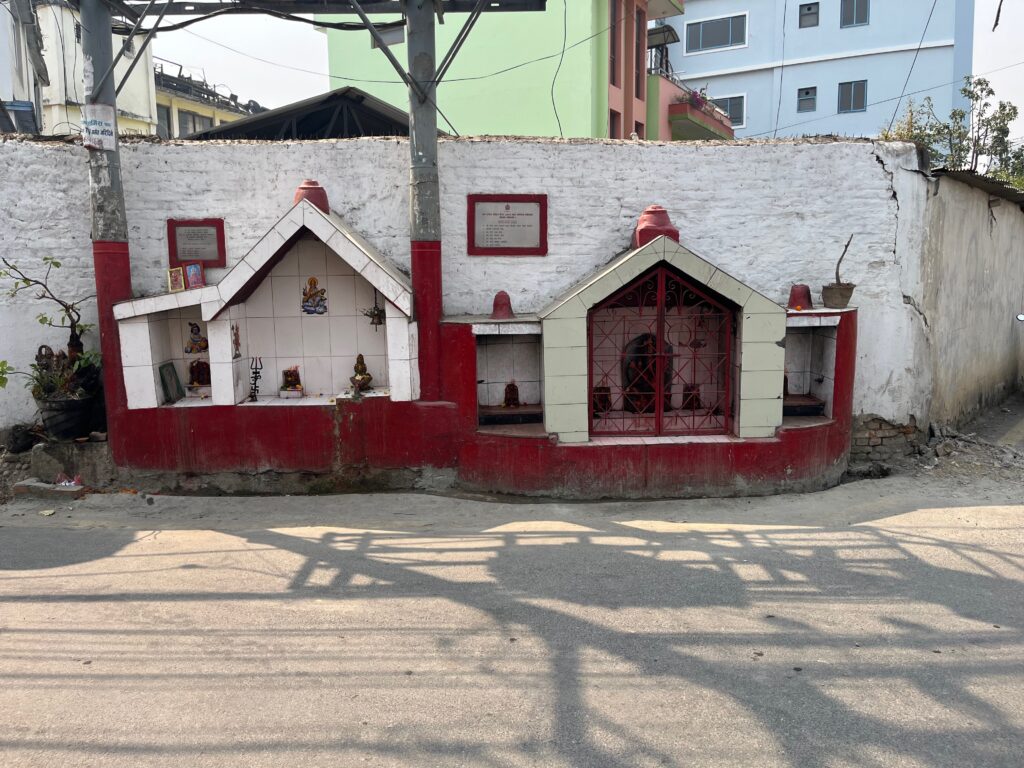
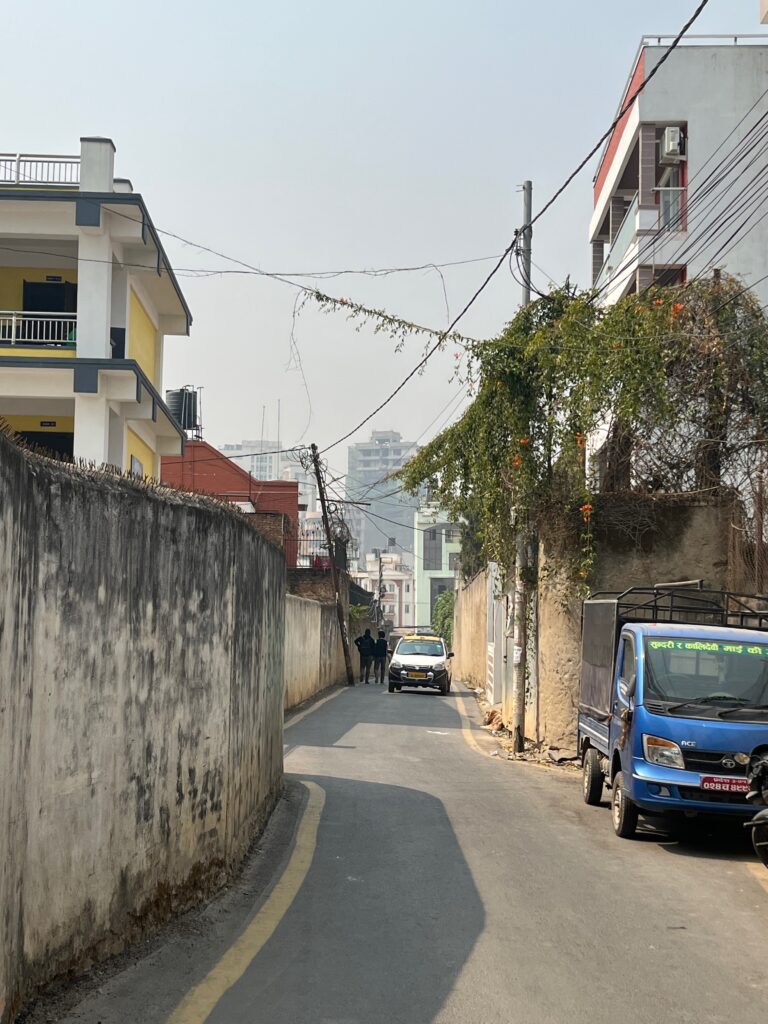
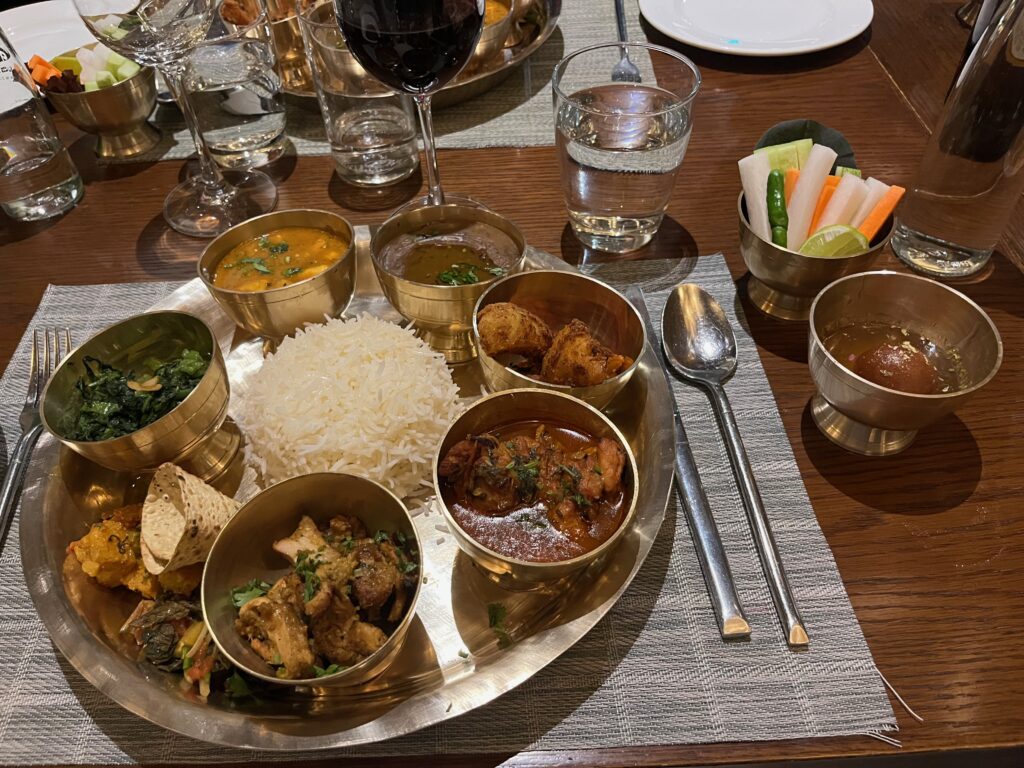
April 7 – Thimphu, Bhutan
A morning flight brought us to Paro, Bhutan. The airport in Paro is reportedly one of the most difficult landings in the world. According to Atlas Obscura, only eight pilots are certified to land at the airport (our guide told us the number is now in the low 20s). We then raveled 32 miles overland to Thimphu, set at 7,775 feet in an amphitheater of mountains and surrounded by hiking trails.
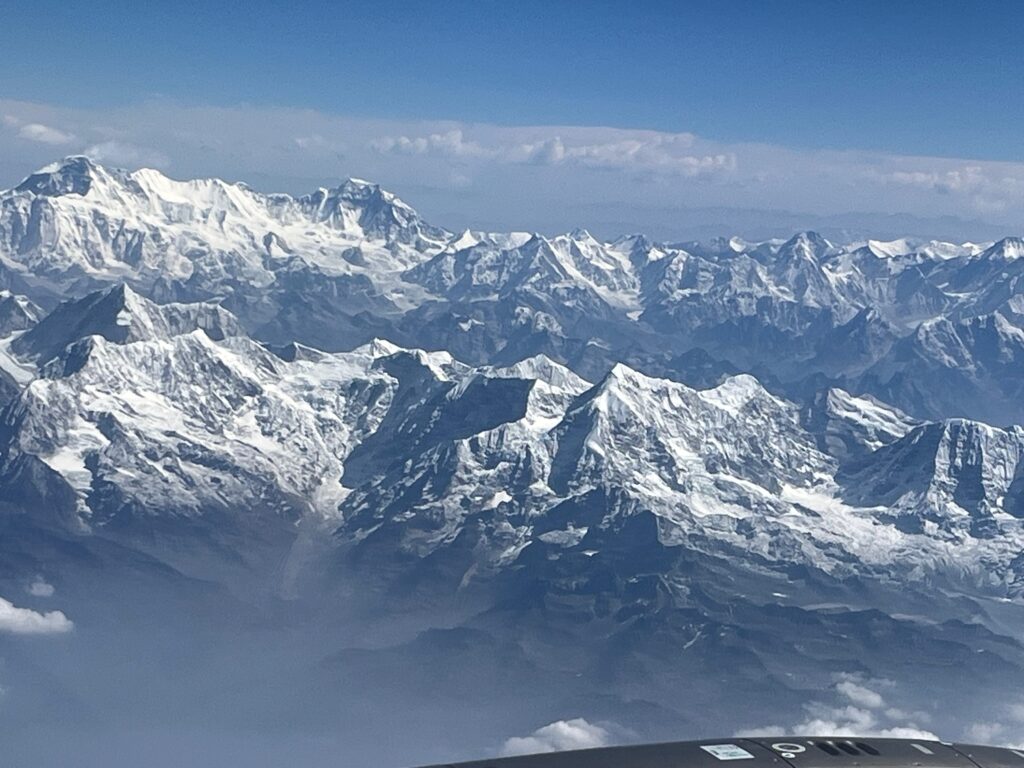
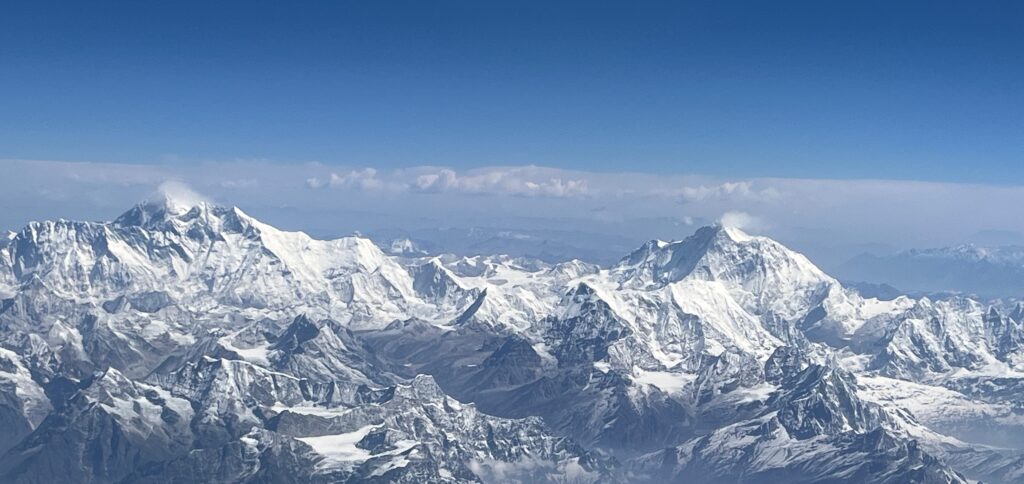
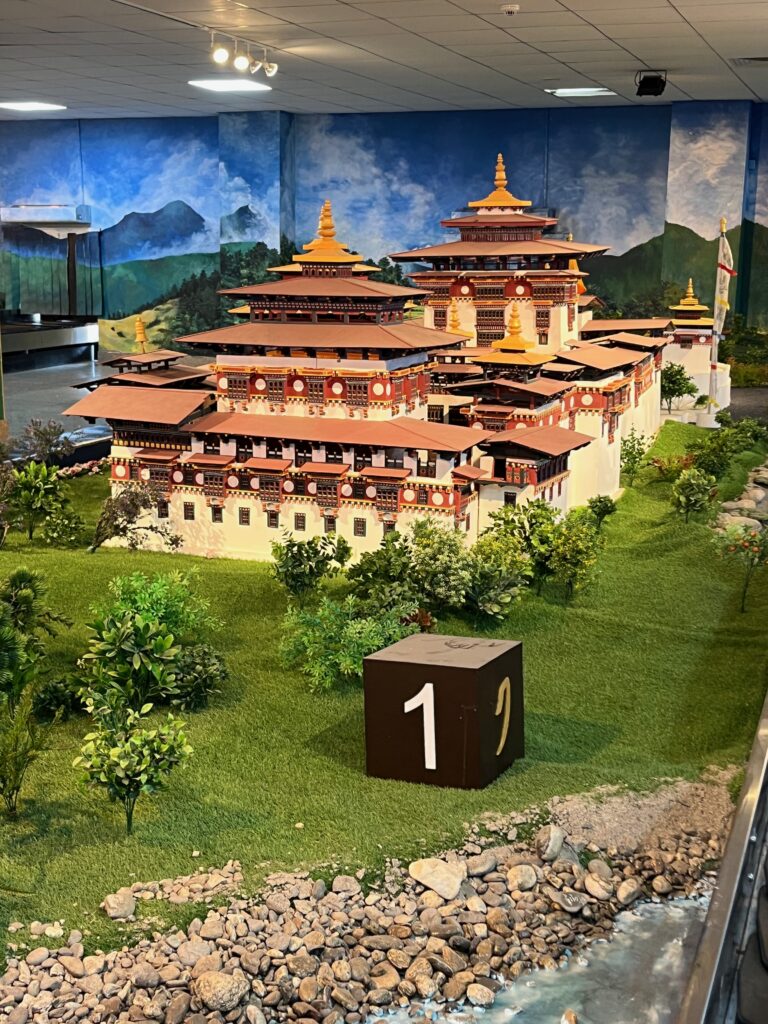
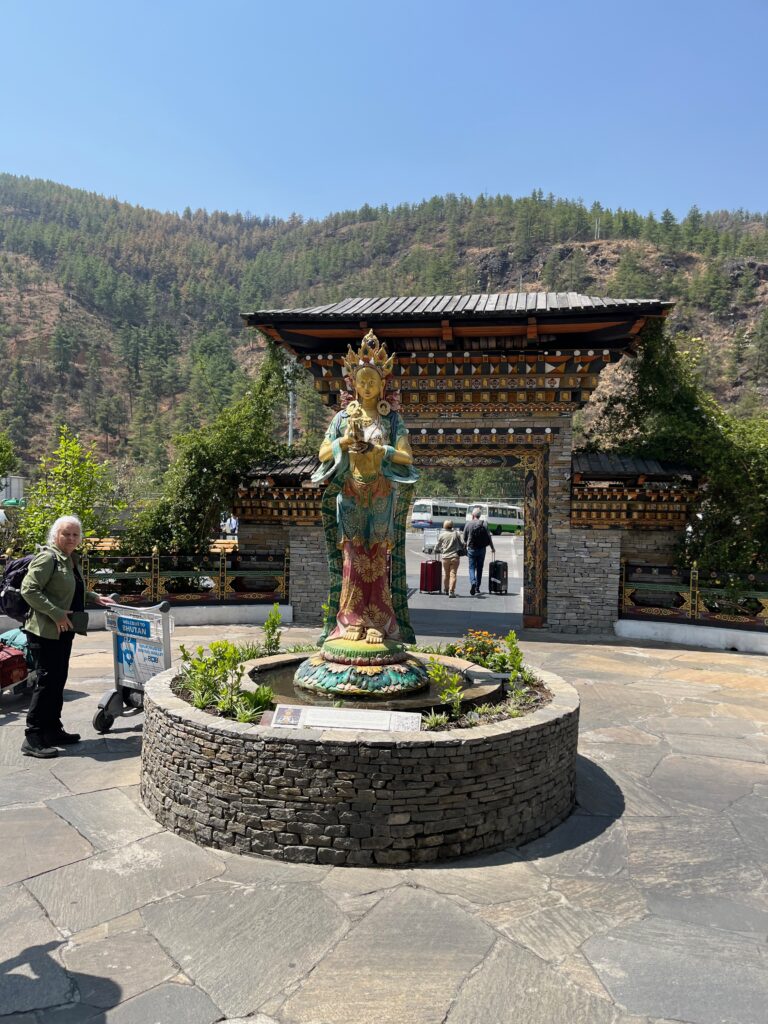
Thimphu is the sixth highest capital in the world by altitude. After lunch and a little time on our own we took a walking tour to get acquainted with this hub of art and culture, which became Bhutan’s official capital in 1962. Thimphu has a population of about 115,000.
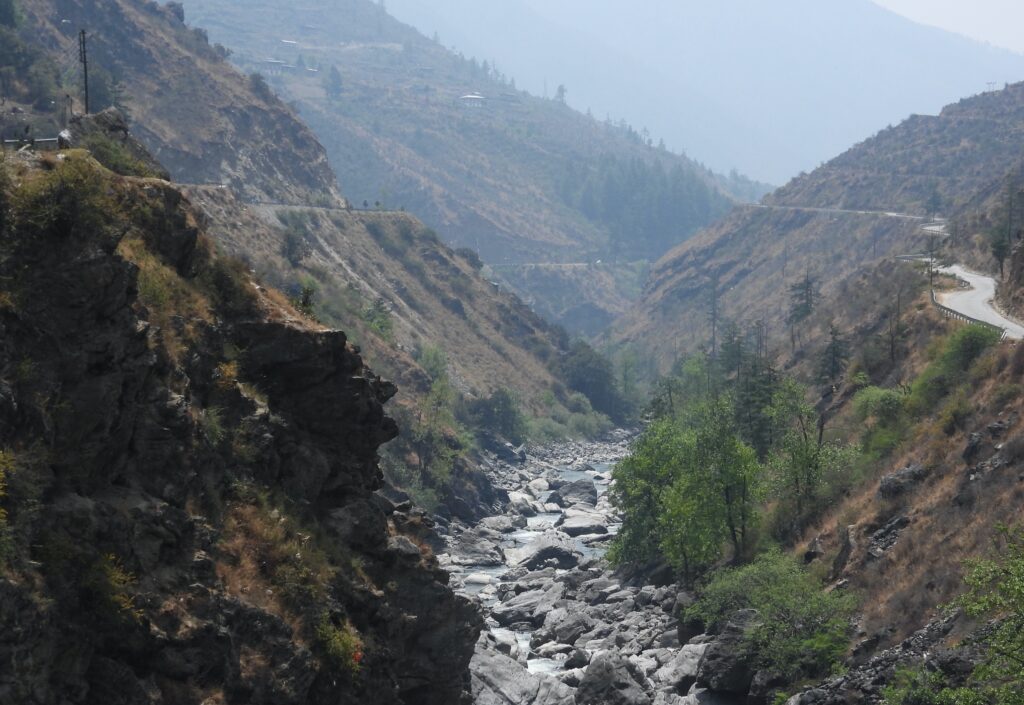
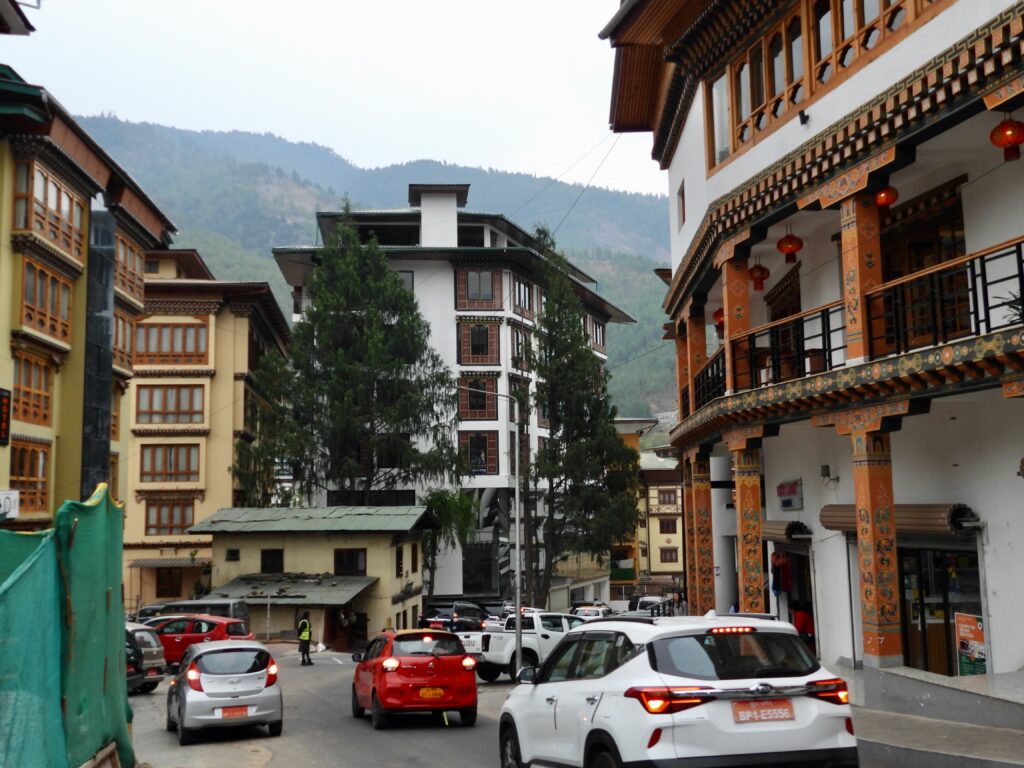
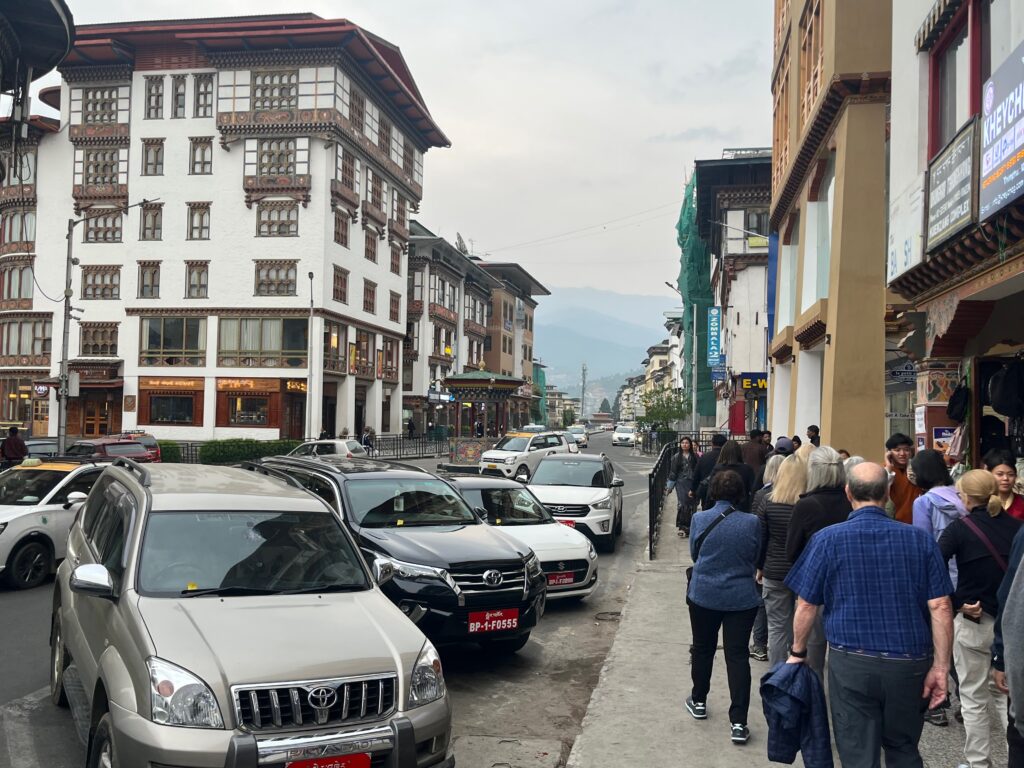
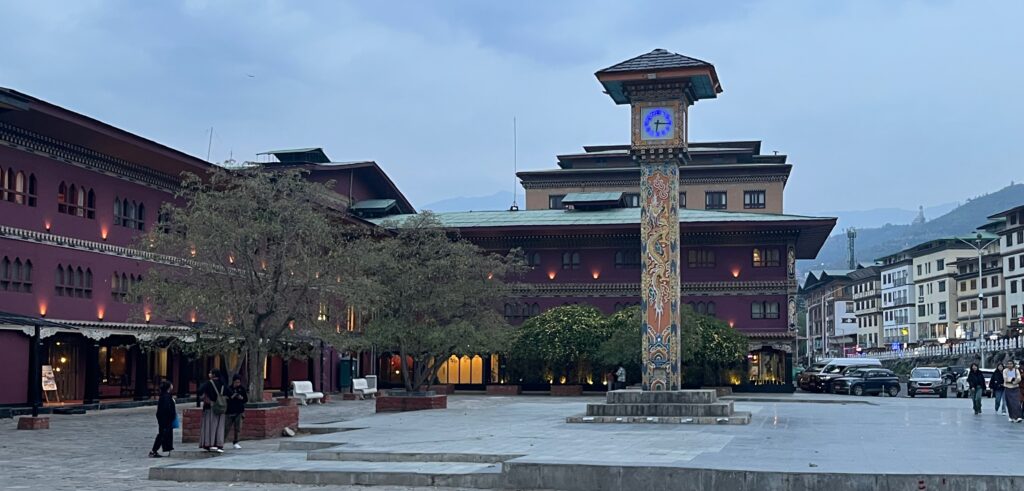
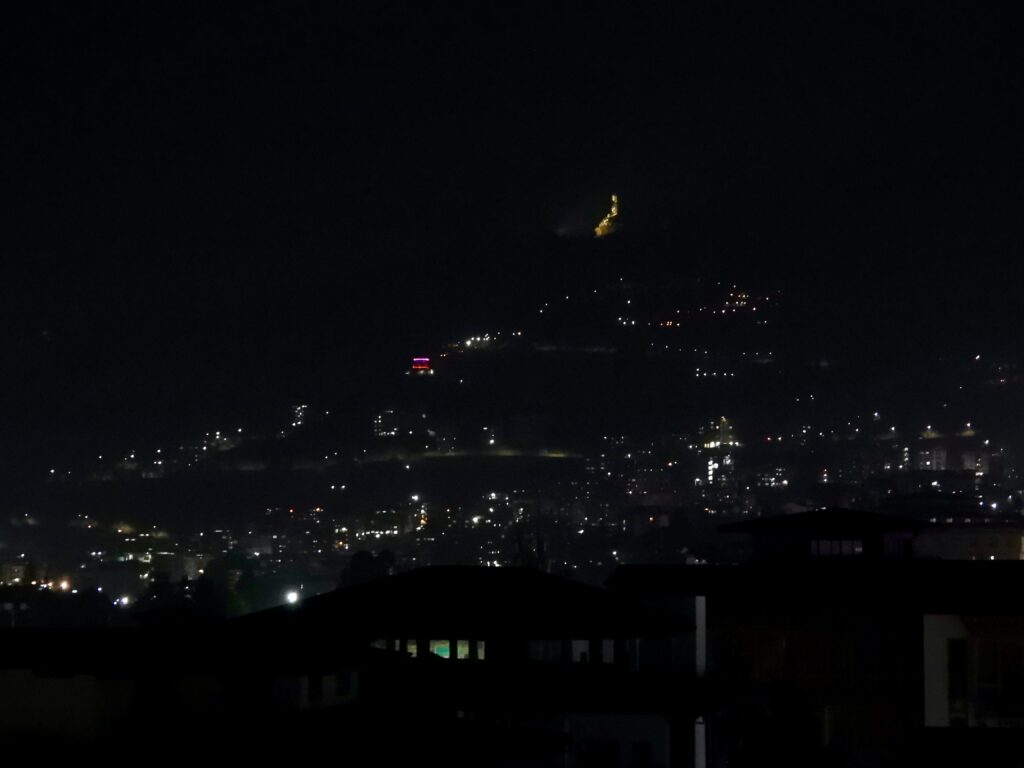
Hotel: The Capital Hotel Thimphu: The Capital Hotel, a four-star luxury boutique hotel in the center of Thimphu, offers modern facilities and amenities that incorporate traditional Bhutanese motifs to provide a unique and comfortable stay. The hotel room was spacious with a beautiful view of the surrounding mountains, the city, and of the prayer flags adorning the surrounding hills.
April 8 – Thimphu, Bhutan
We began our first day of touring with a 1-hour+ ascent through pine trees and oak trees to Tango Monastery, an institute for higher learning that was founded in the 13th century. The hike was steep, starting at an altitude of 8,800 feet and climbing 900 feet to 9,700 feet. The current structure, built in the 1600s, remains a working religious university and an important Buddhist site. According to legend, Phajo Drugom Zhigpo propounder of the teachings of Dodeyna who was on a visit to this place during his teaching mission heard the neighing of a horse coming from the direction of the Tango. Concurrently, he witnessed the cliff in the form of god Tandin (horse head or Hayagriva) engulfed in flames. The deity appearing before Zhigpo prophesied that the place was meant to build a monastery for meditation. The monastery was preceded by a group of Gray Langur monkeys which inhabited the area near the monastery entrance. The monastery was beautiful and made the effort of the climb worth it. Unfortunately, no photos are allowed in any monastery located in Bhutan to protect the religious relics contained therein.
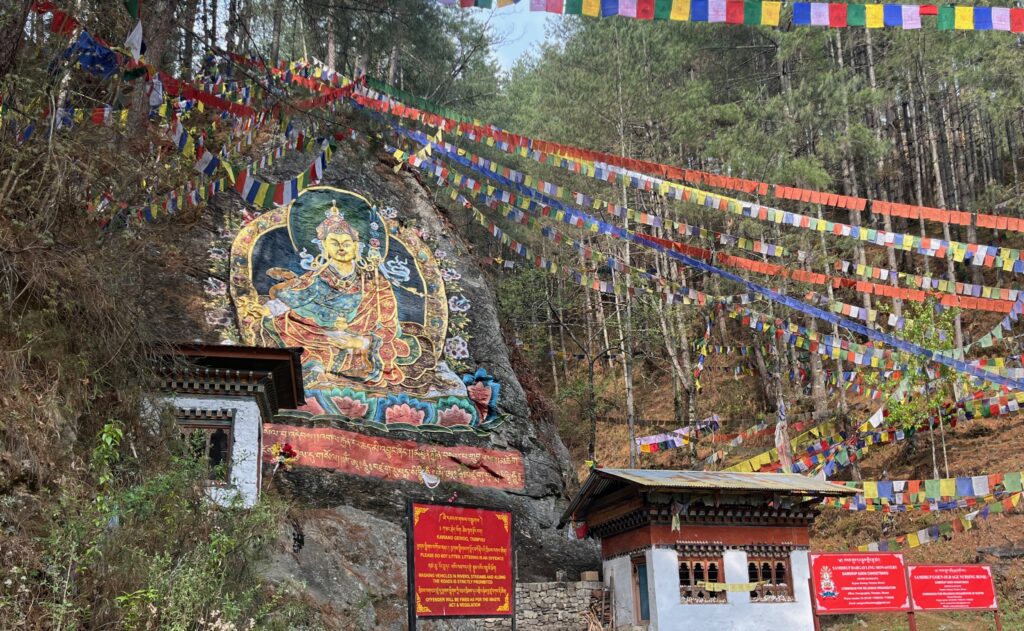
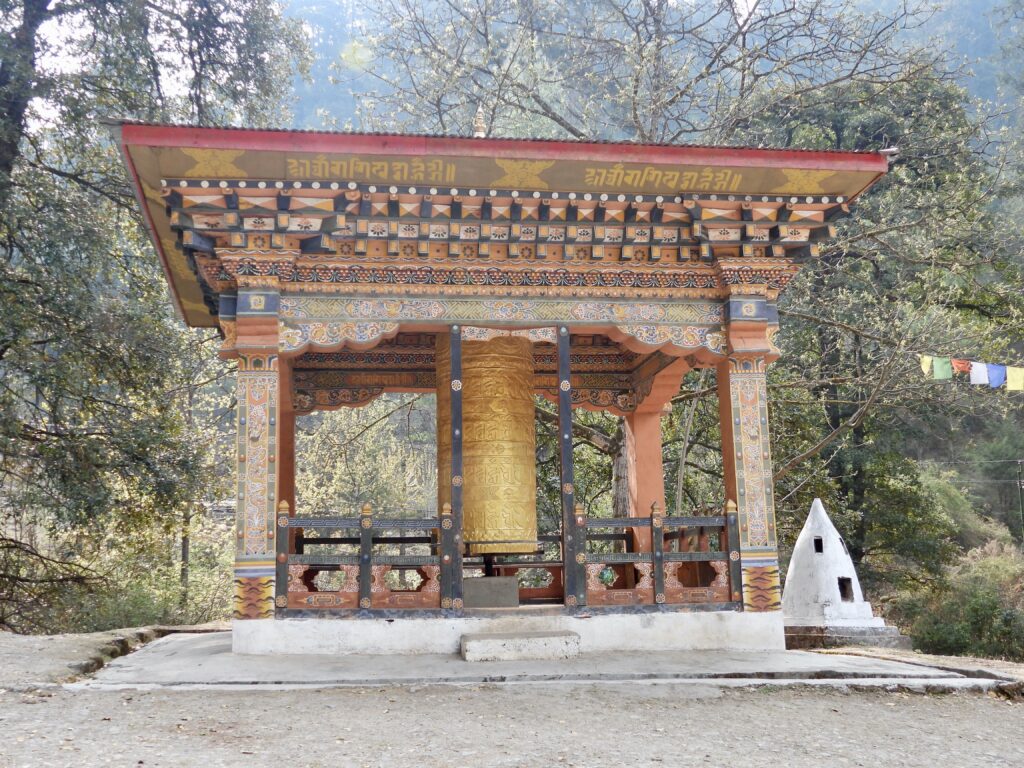
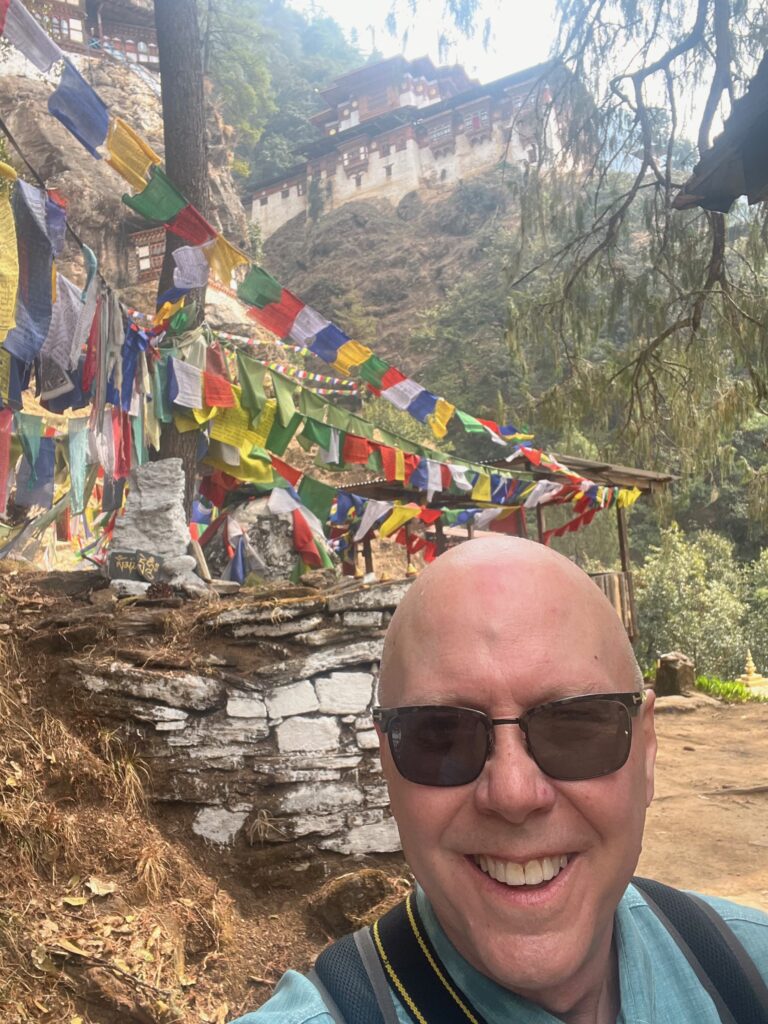
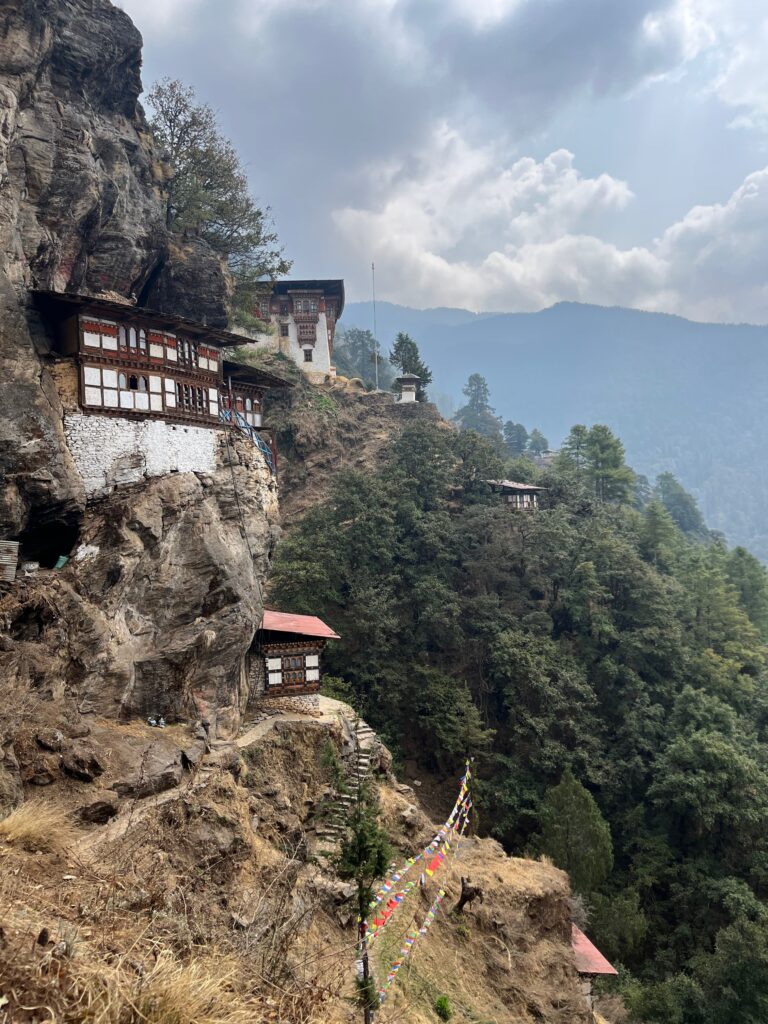
What is a Tsa-Tsa? Along the route to the Tango Monastery, as well as in other parts of Bhutan, we saw small conical-shaped objects. These are Tsa-Tsa, small memorials to the dead, molded by monks, that are created from ash collected from funereal cremation pyres. Tsa-Tsa, is a word transliterated from Sanskrit to Tibetan and refers to the miniature Buddha.
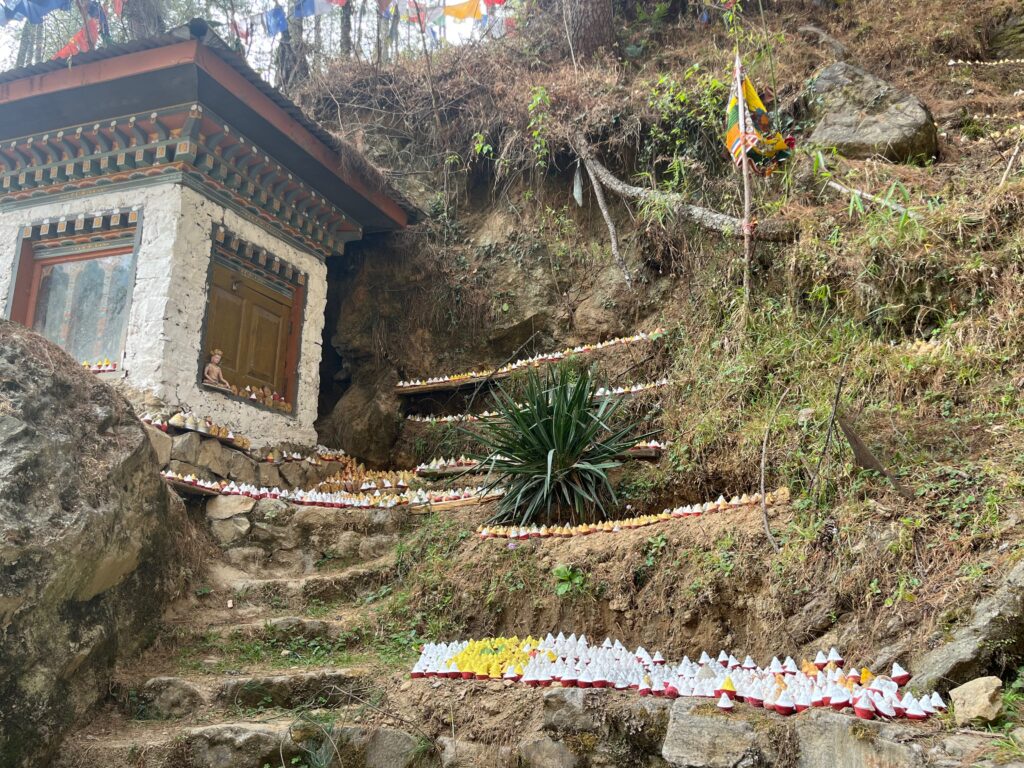
After touring the monastery, we returned to our bus (thankfully downhill) which took us to a lovely restaurant with a great view over the city of Thimphu.
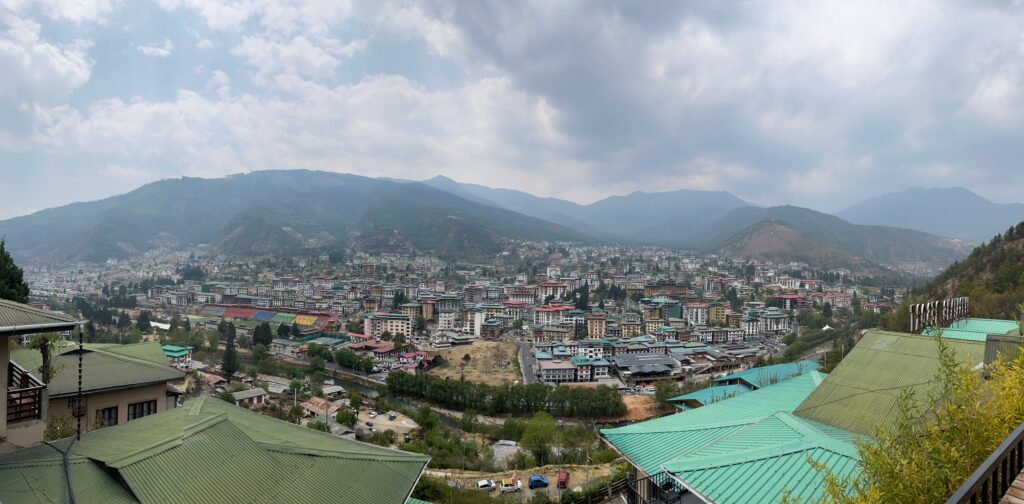
We then toured some of Thimphu’s main sites, including:
- The Folk Heritage Museum where we learned about rural life in Bhutan.
- The Motithang Takin Preserve, a wildlife reserve area for takin, the national animal of Bhutan. The reason for declaring takin as a national animal of Bhutan is attributed to a legend of the animal’s creation in Bhutan in the 15th century by Lama Drukpa Kunley.
- The Buddha Dordenma, a golden Buddha statue overlooking Thimphu Valley. The statue celebrates the 60th anniversary of fourth king Jigme Singye Wangchuck.The statue houses over one hundred thousand smaller Buddha statues, each of which, like the Great Buddha Dordenma itself, are made of bronze and gilded in gold. The completed work is one of the largest Buddha rupas (a depiction of the historical Buddha) in the world, at 177 feet (54 m).
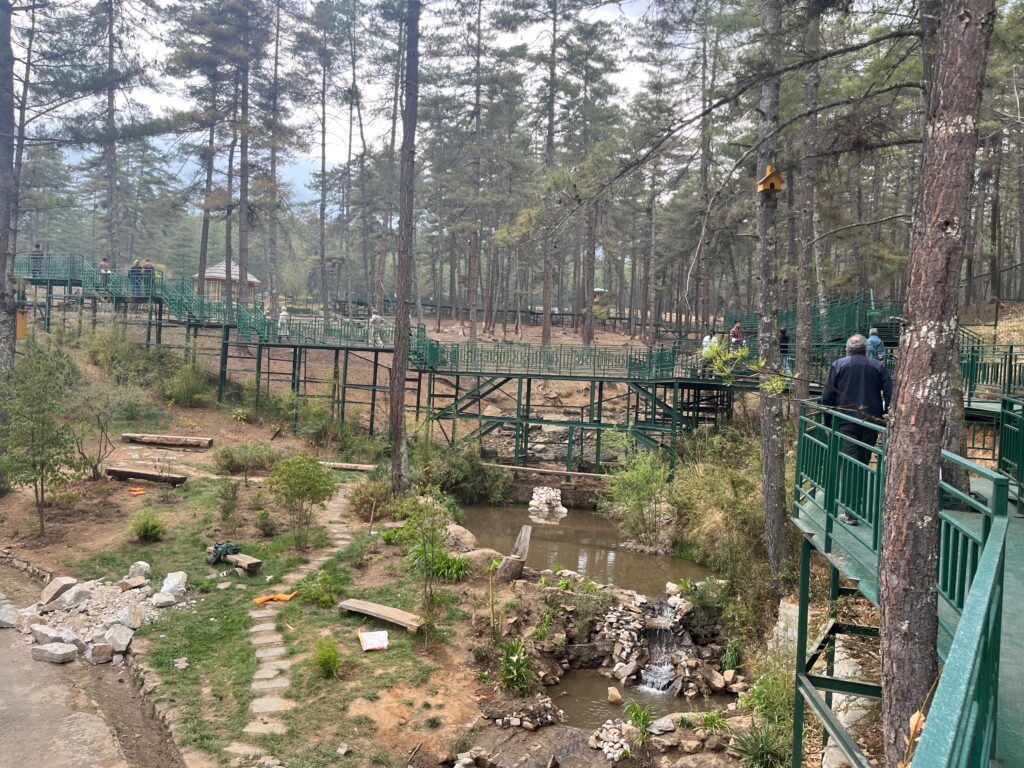
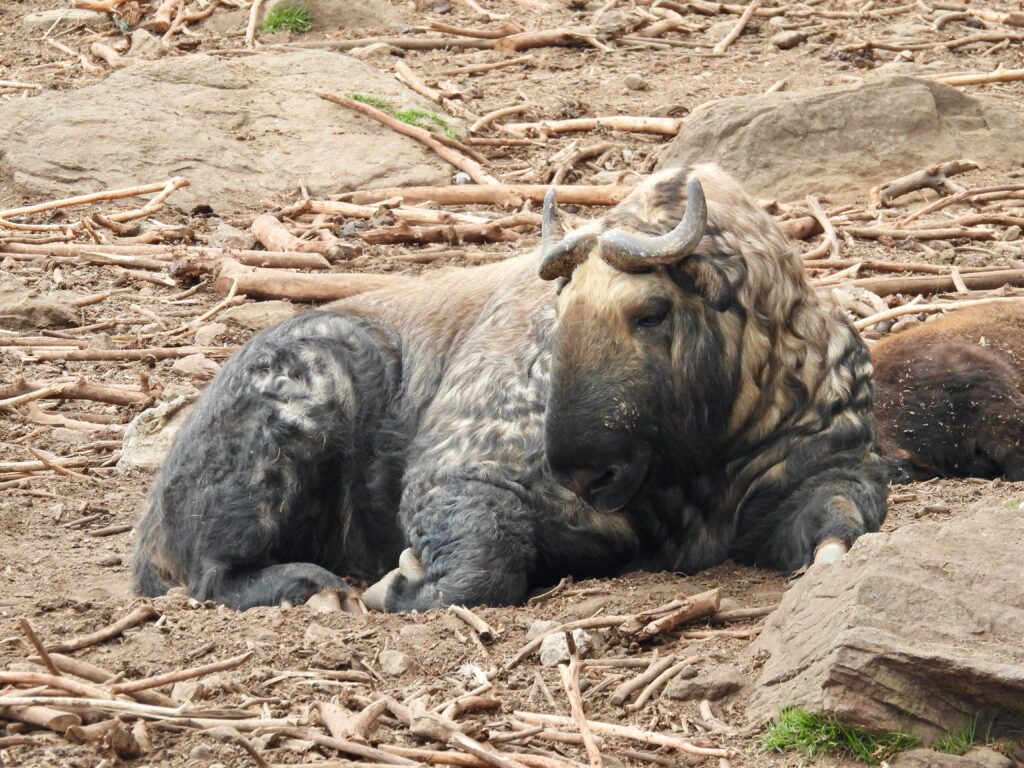
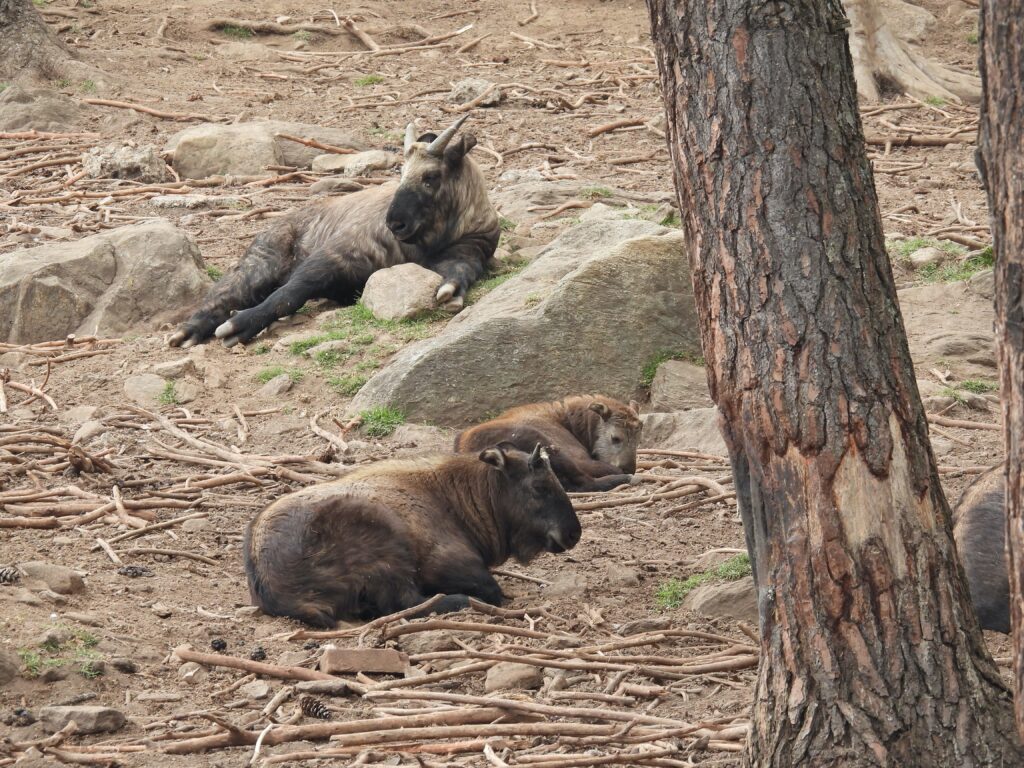
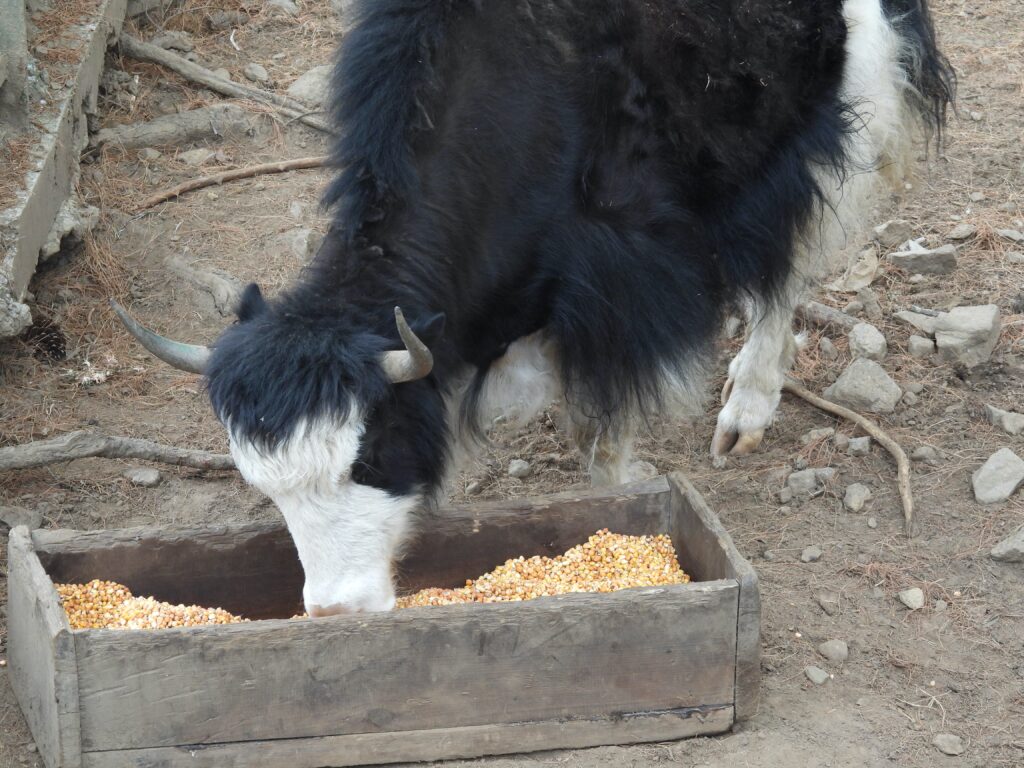
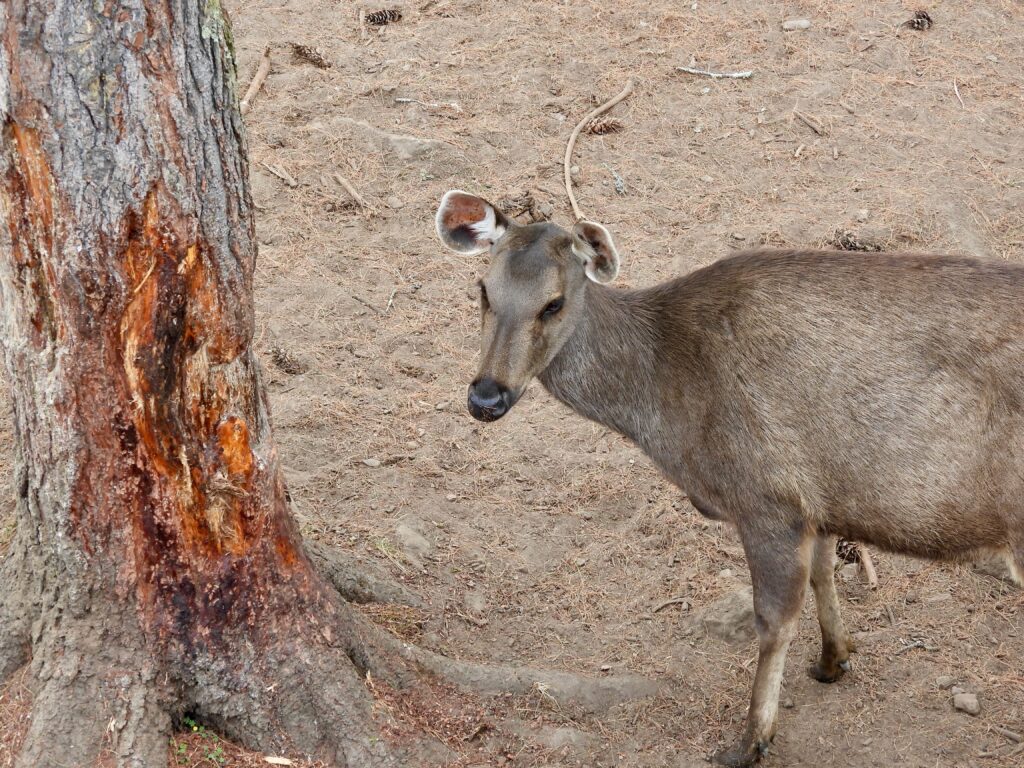
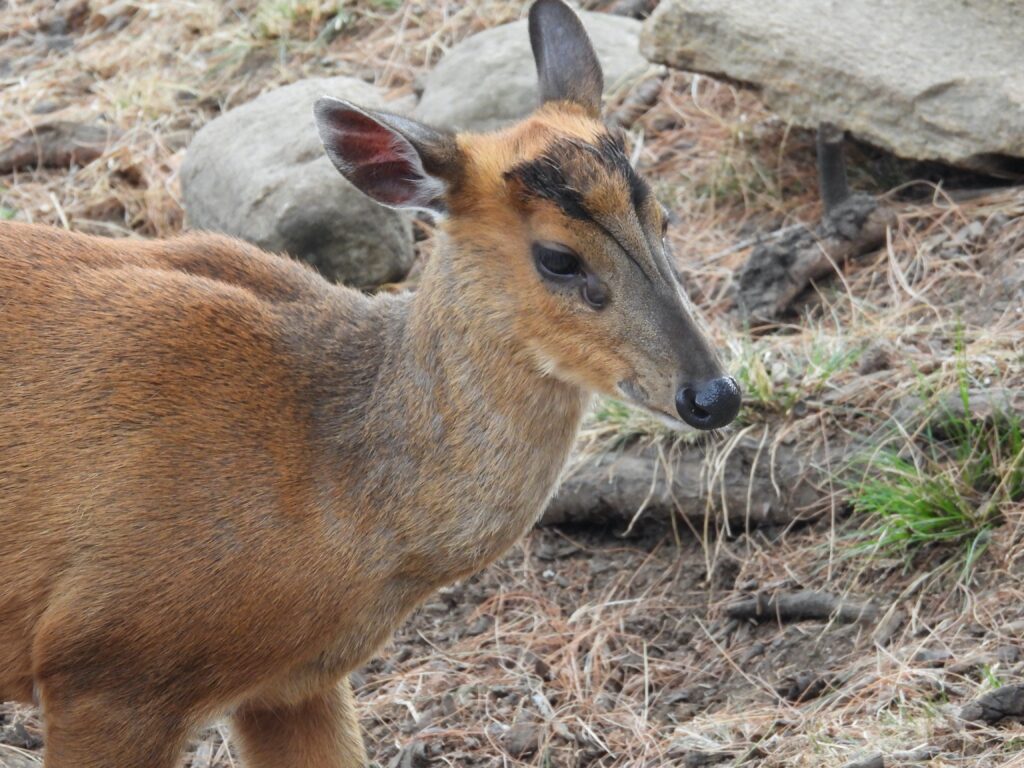
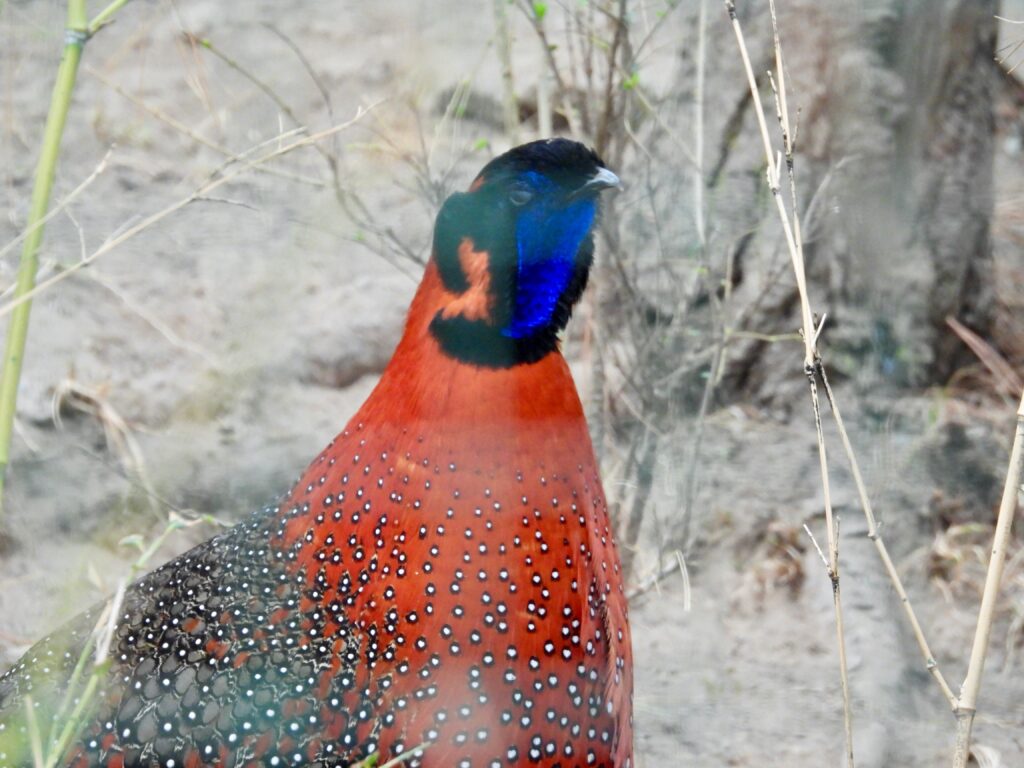
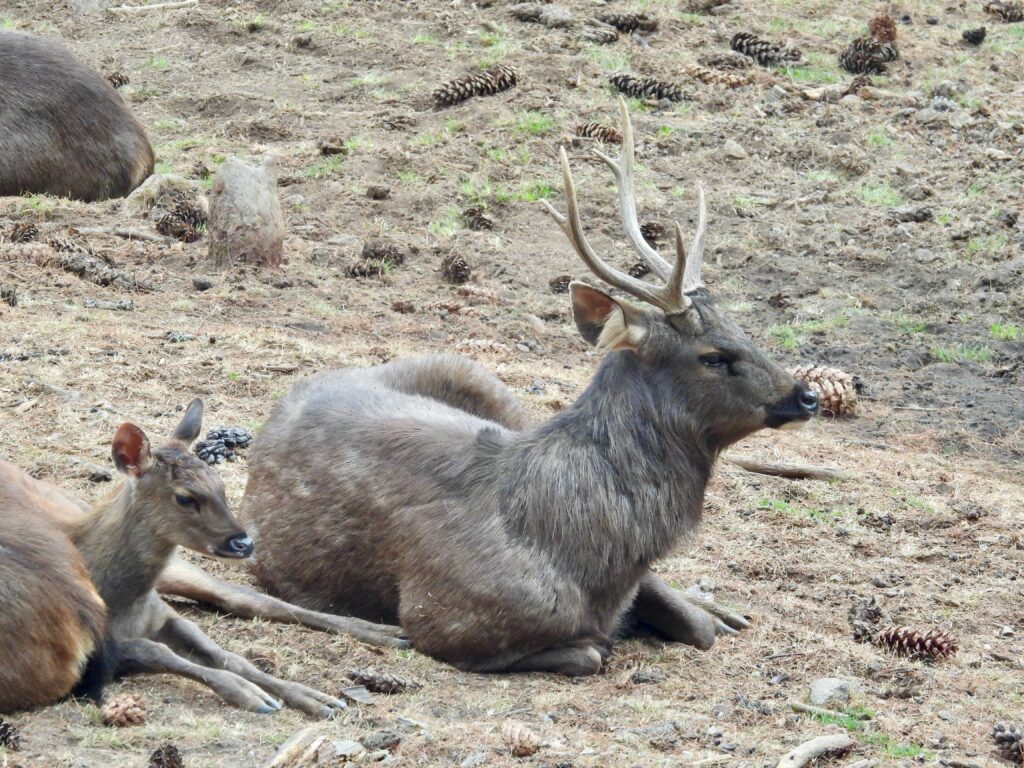
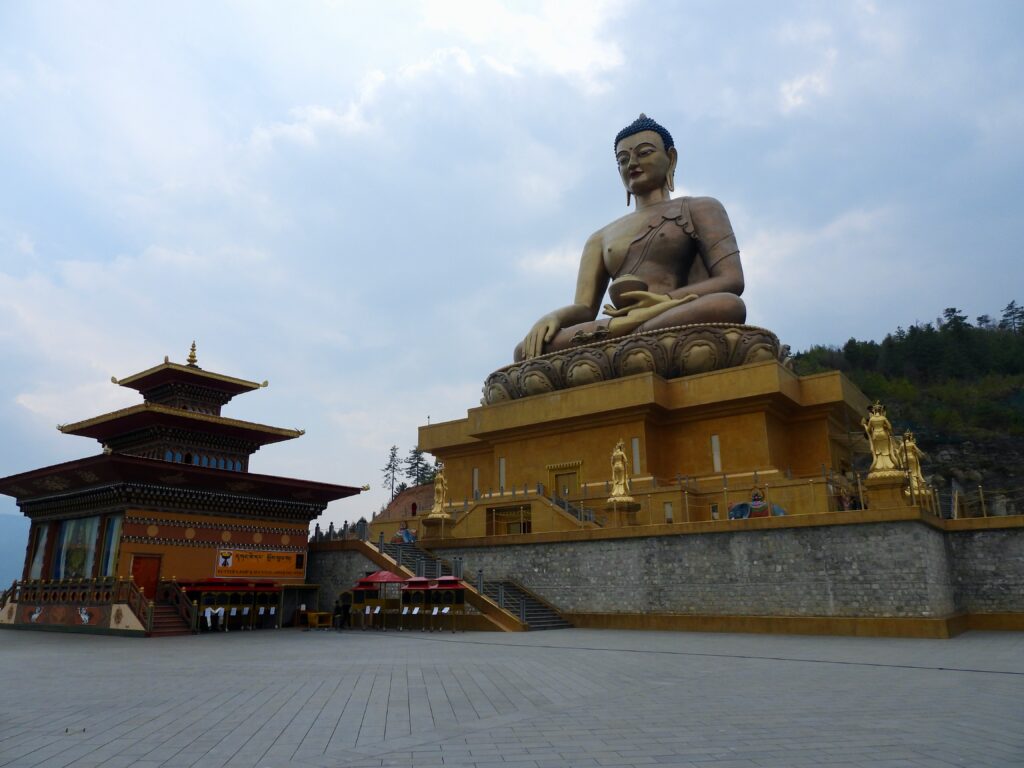
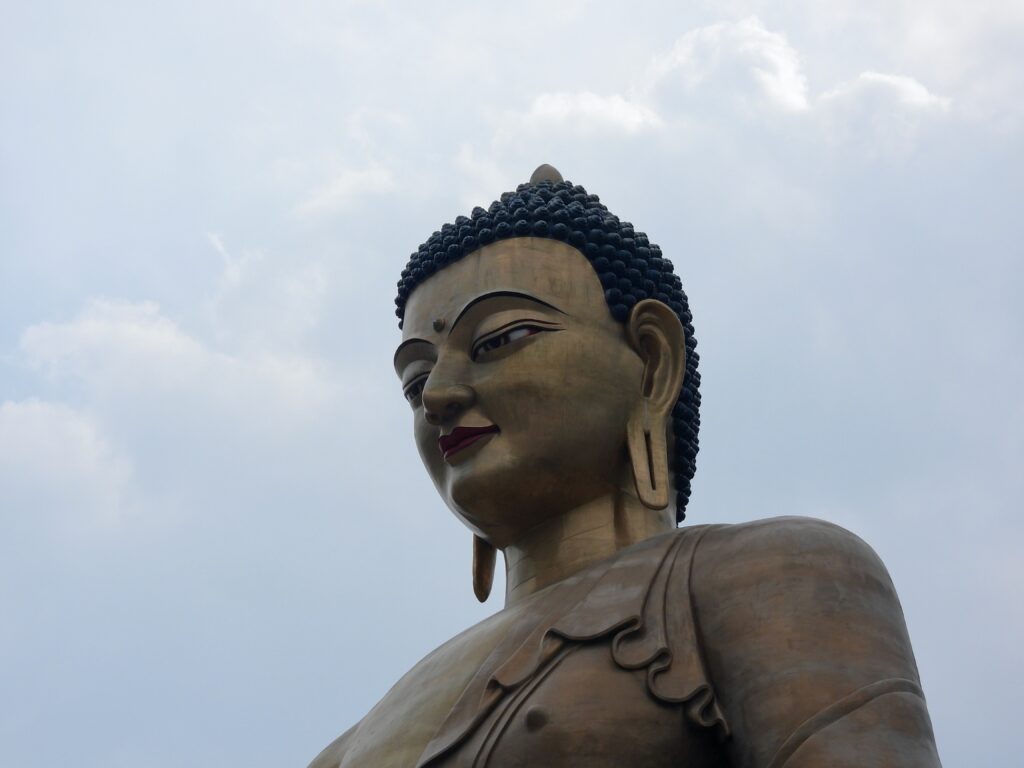
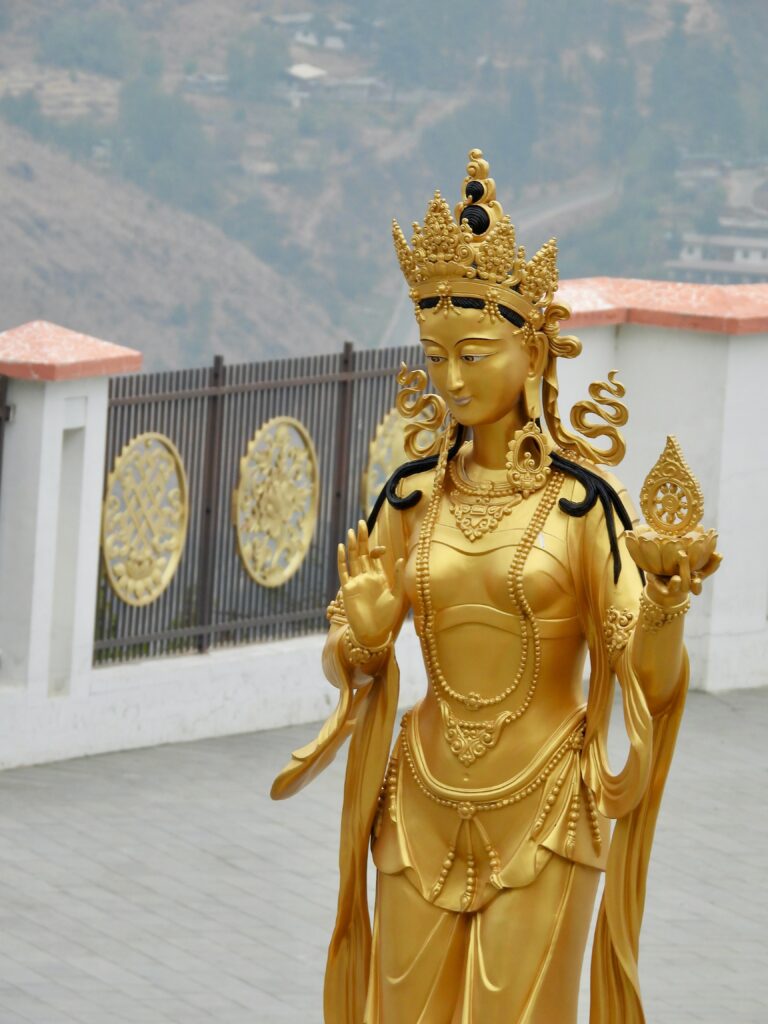
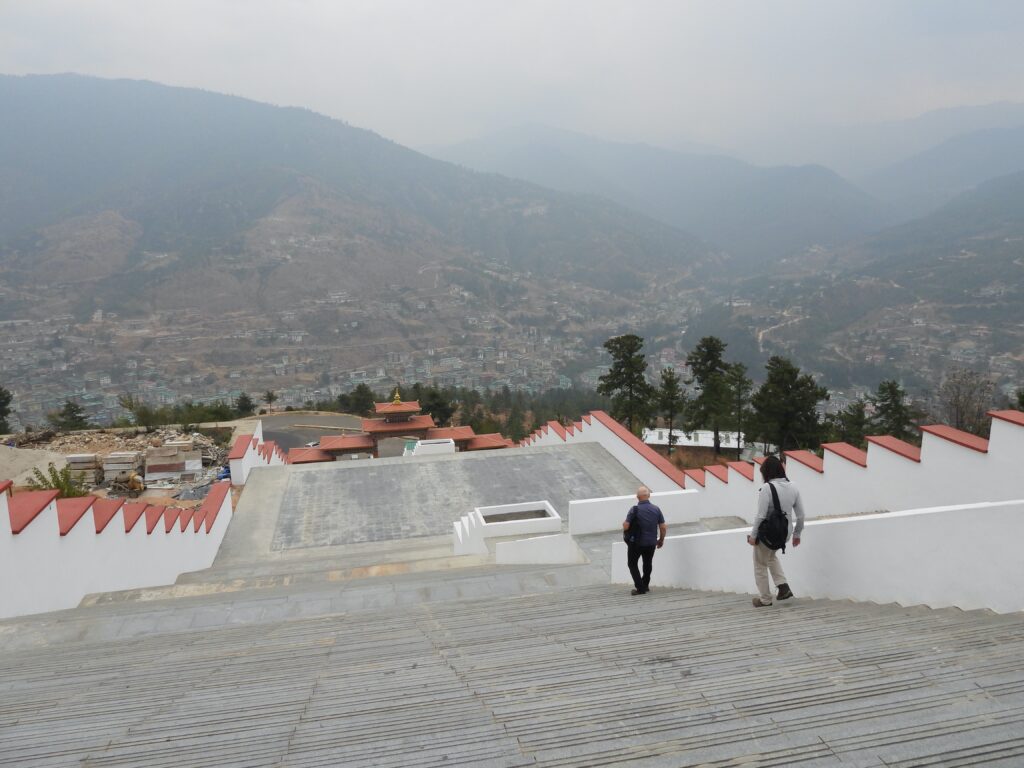
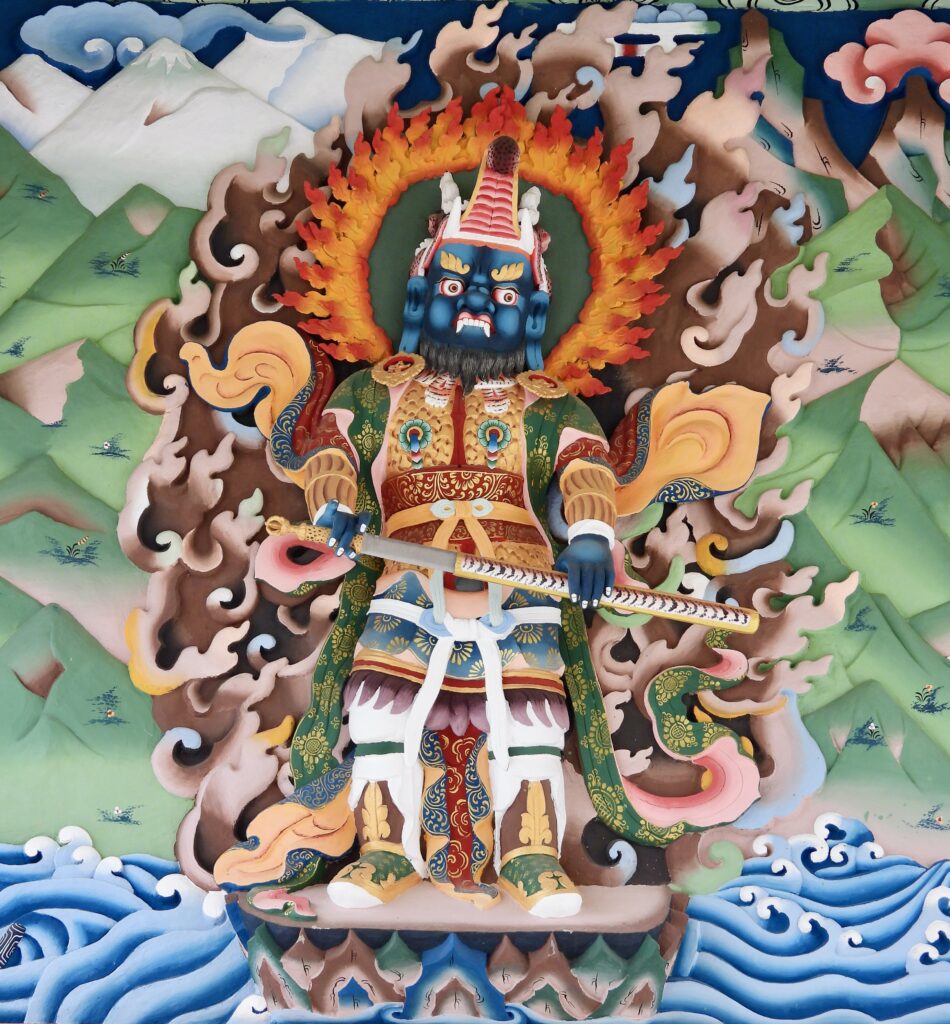
We then enjoyed dinner together at a restaurant in town before retiring for the evening.
Hotel: The Capital Hotel Thimphu
April 9 – Punakha
We awakened to breakfast at our hotel, followed by a visit to The National Memorial Chorten. The stupa, built in 1974 to honor the third Druk Gyalpo, Jigme Dorji Wangchuck (1928–1972), is a prominent landmark in the city with its golden spires and bells.
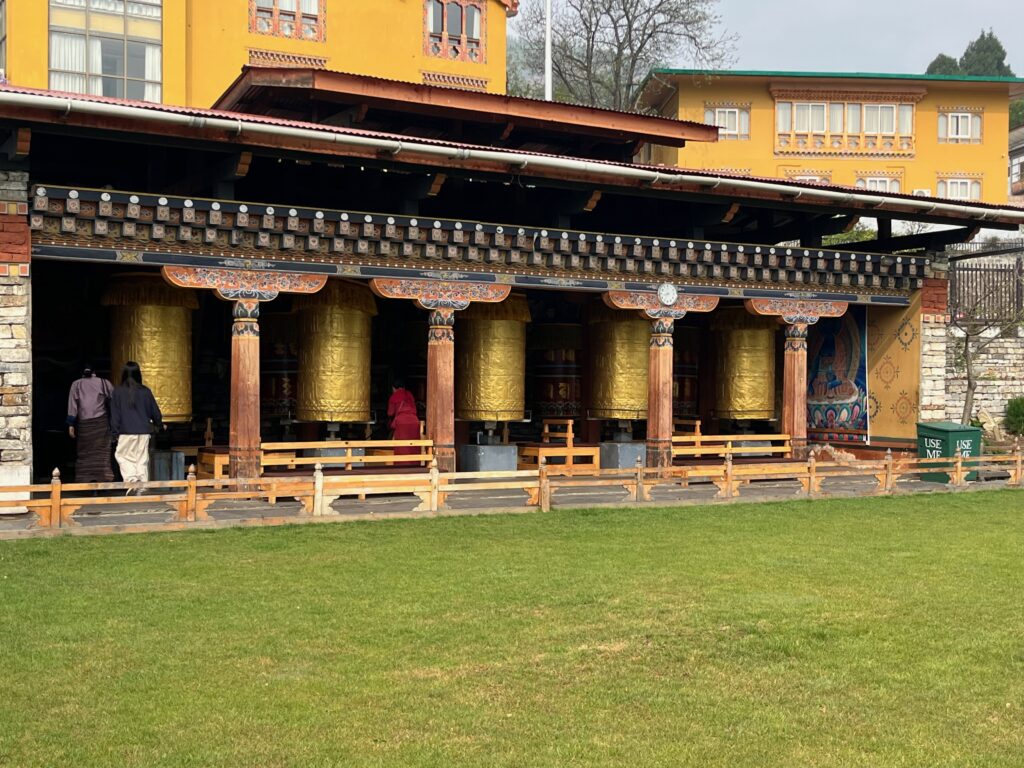
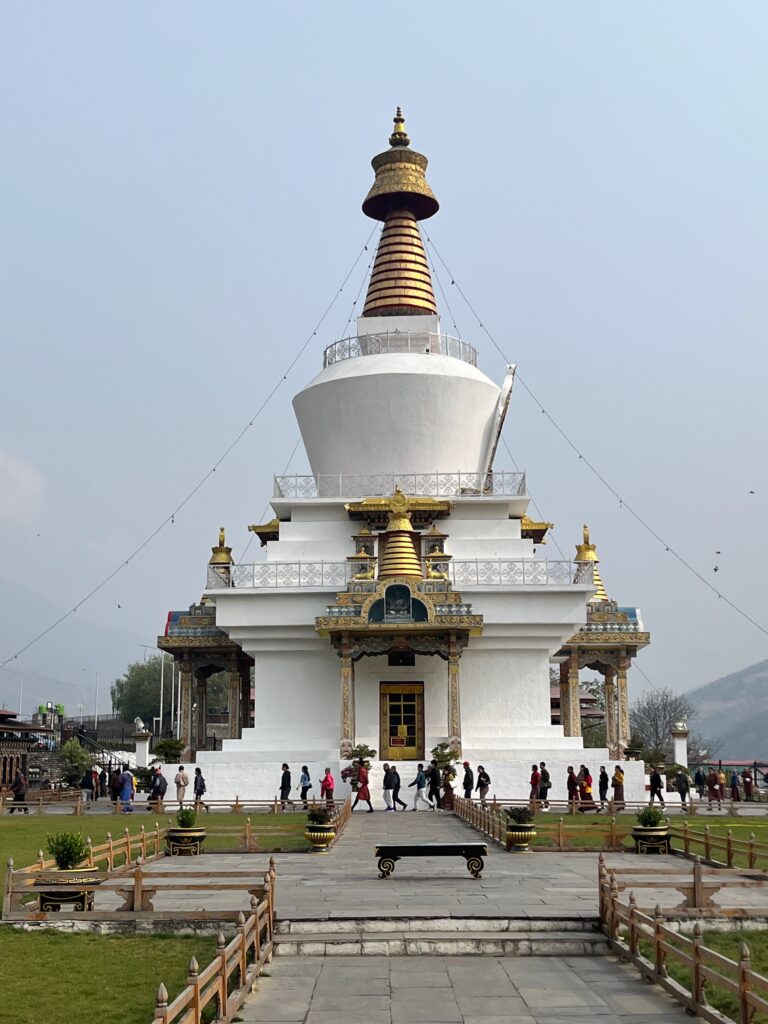
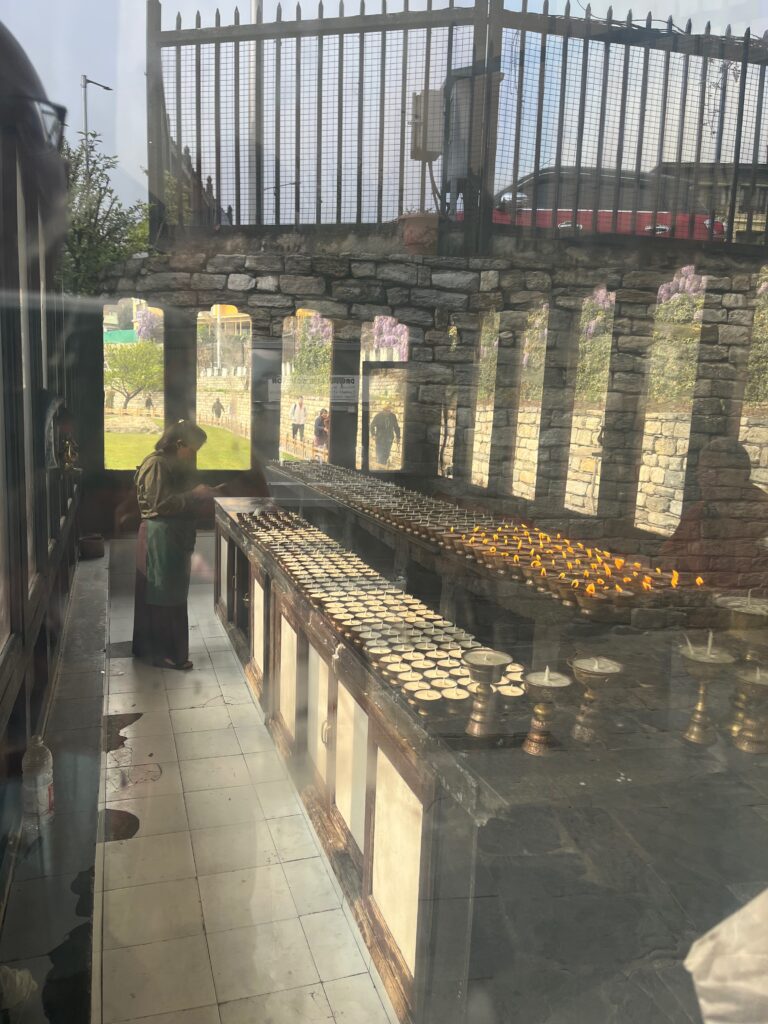
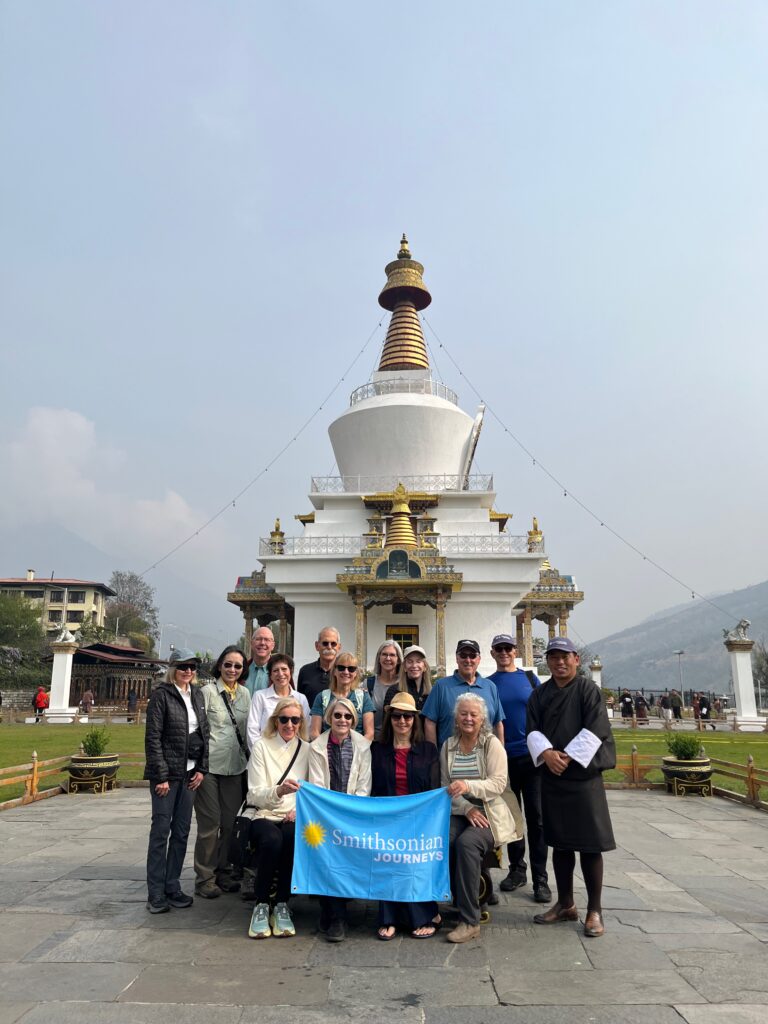
We then returned to our bus and began the drive to Dochu La, a mountain pass at 10,171 feet where more than 100 picturesque chortens perch on the slopes. The group walked among the chortens while I sprinted off into the hills to locate and explore the nearby meditation caves, which I had read about prior to the trip. The slopes around the pass are festooned with colorful religious flags fixed by the Buddhist people as a mark of veneration. The flags, made in five colors representing the natural forces, — “blue (sky), white (clouds), red (fire), green (water) and yellow (earth)” – are inscribed with Buddhist scriptural prayers to usher prosperity and peace around the country.
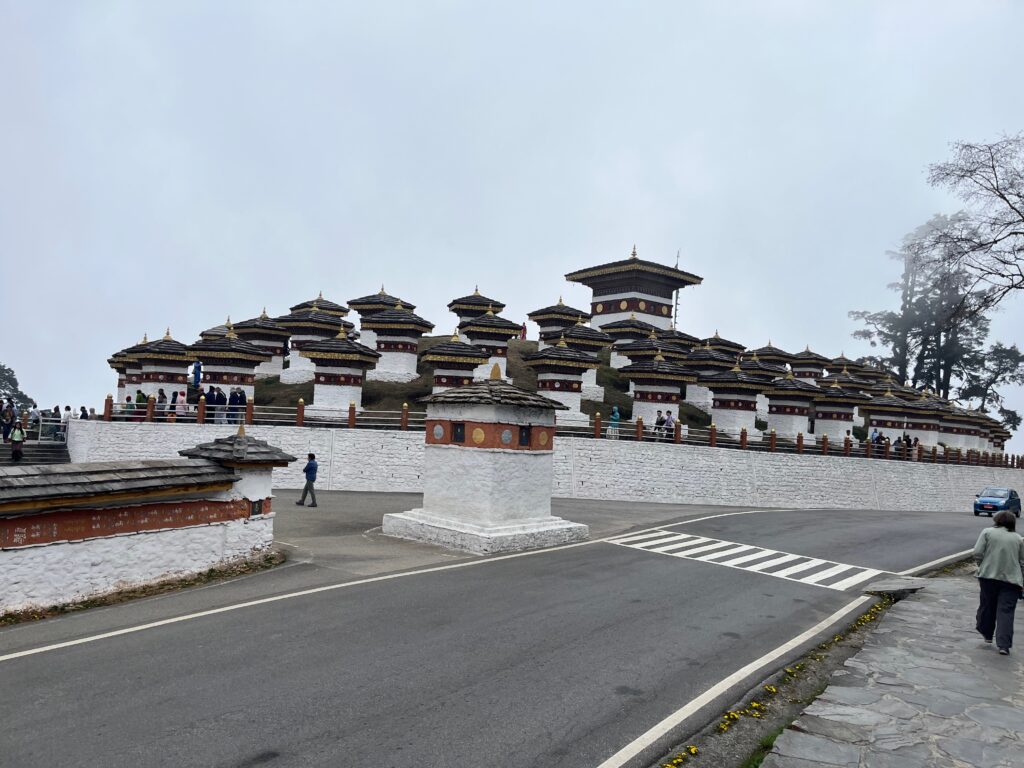
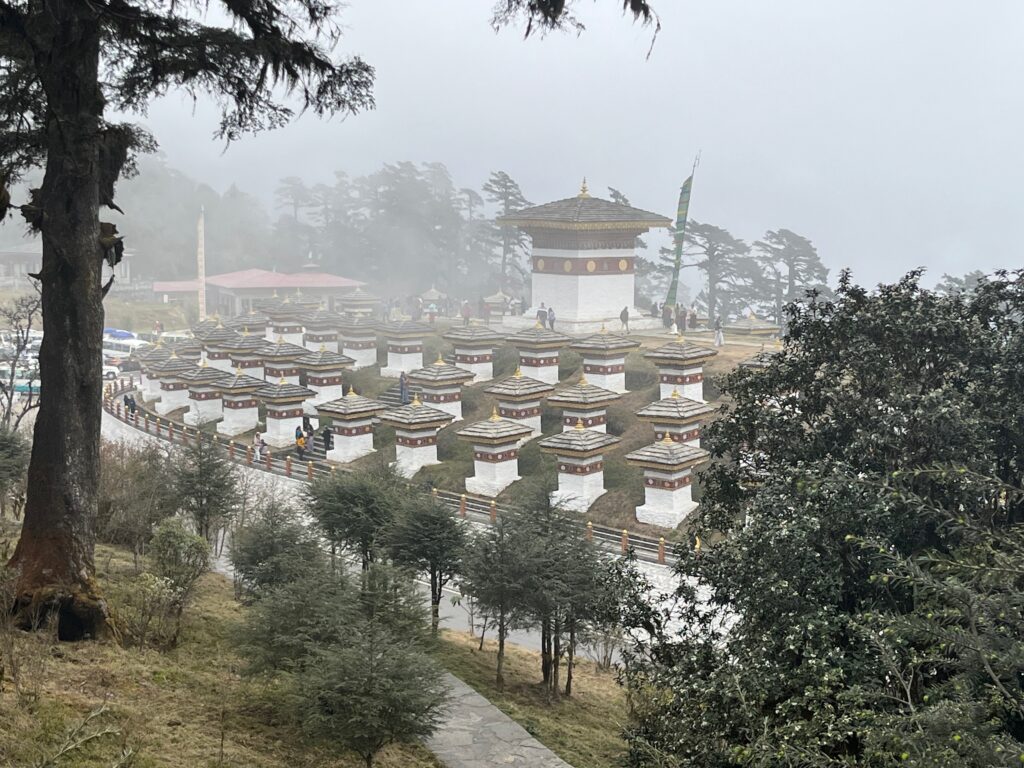
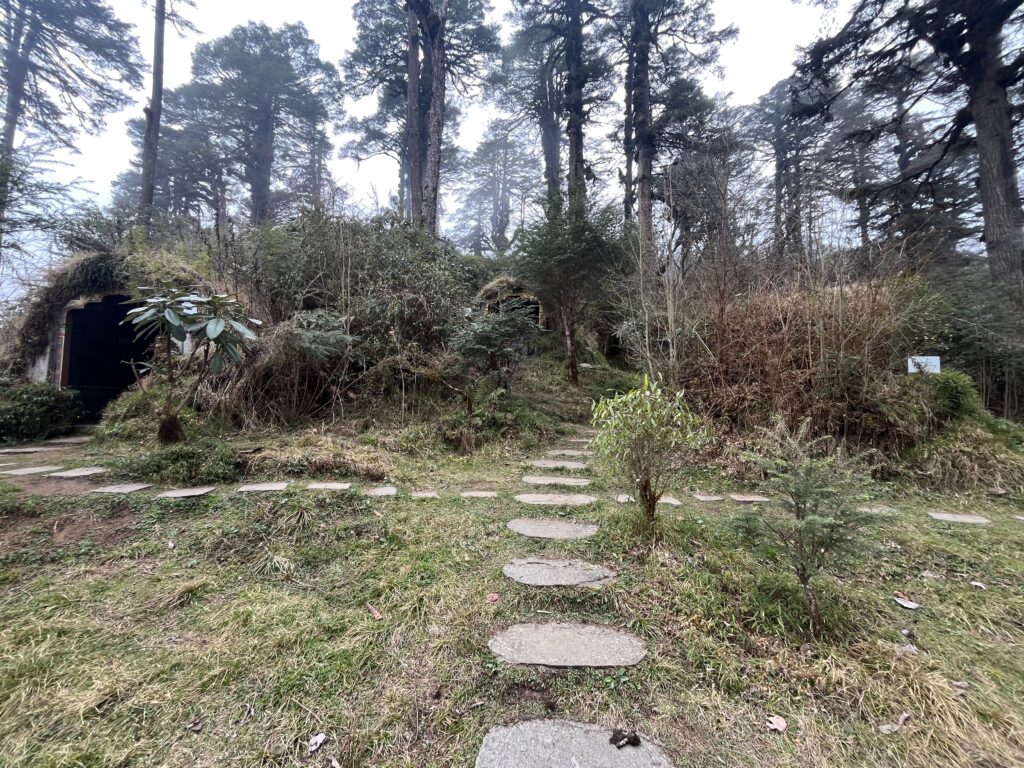
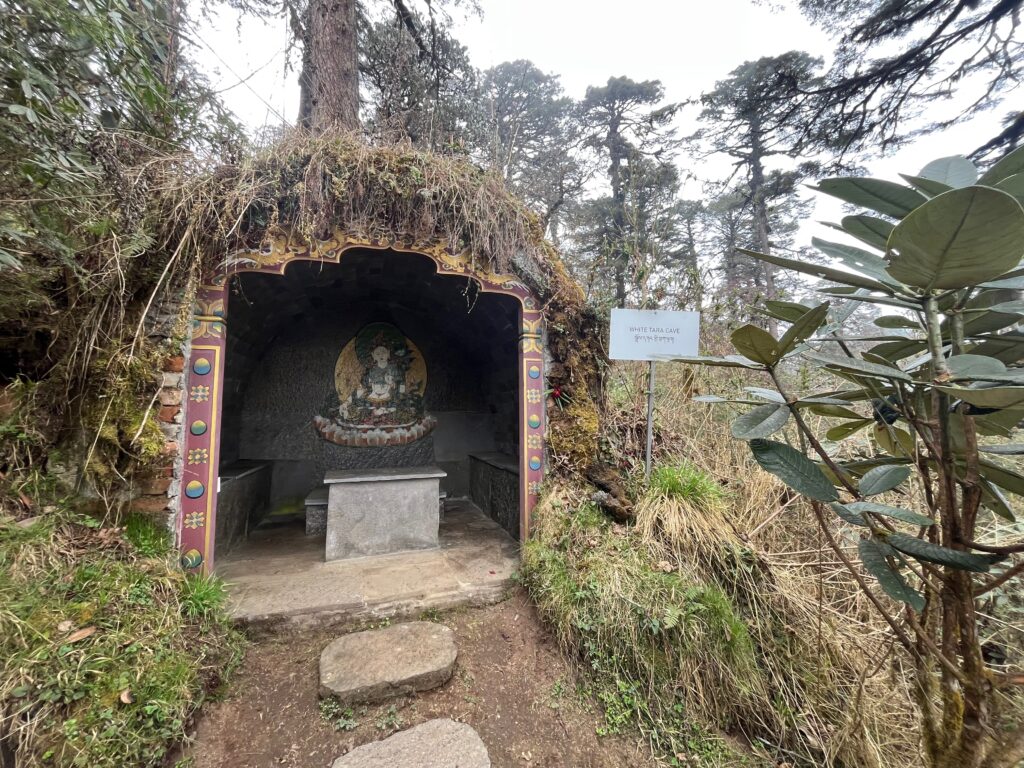
We then stopped at a beautiful restaurant for tea before continuing our journey to Chimi Lhakang temple. founded and built in 1499. This so-called “Fertility Temple” displays an inordinate amount of phallic imagery which, to be understood, requires that you read this summary on Atlas Obscura. While the temple displays some phallic imagery, the surrounding community has fully embraced the concept and offers a vast array of phallic souvenirs!
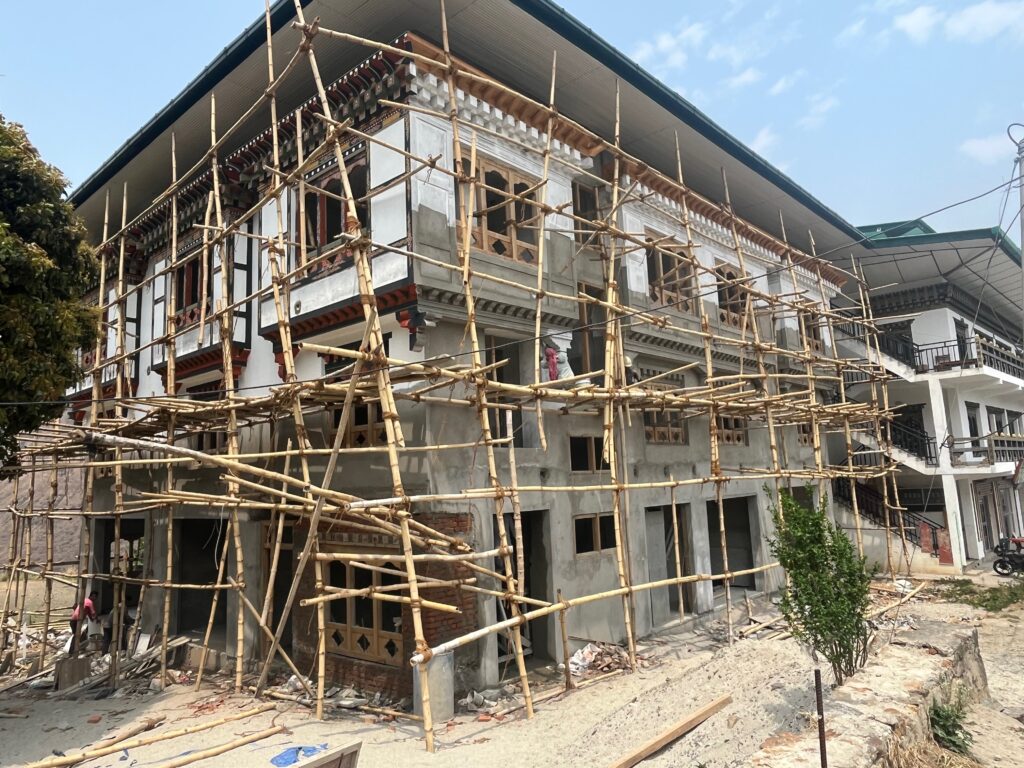
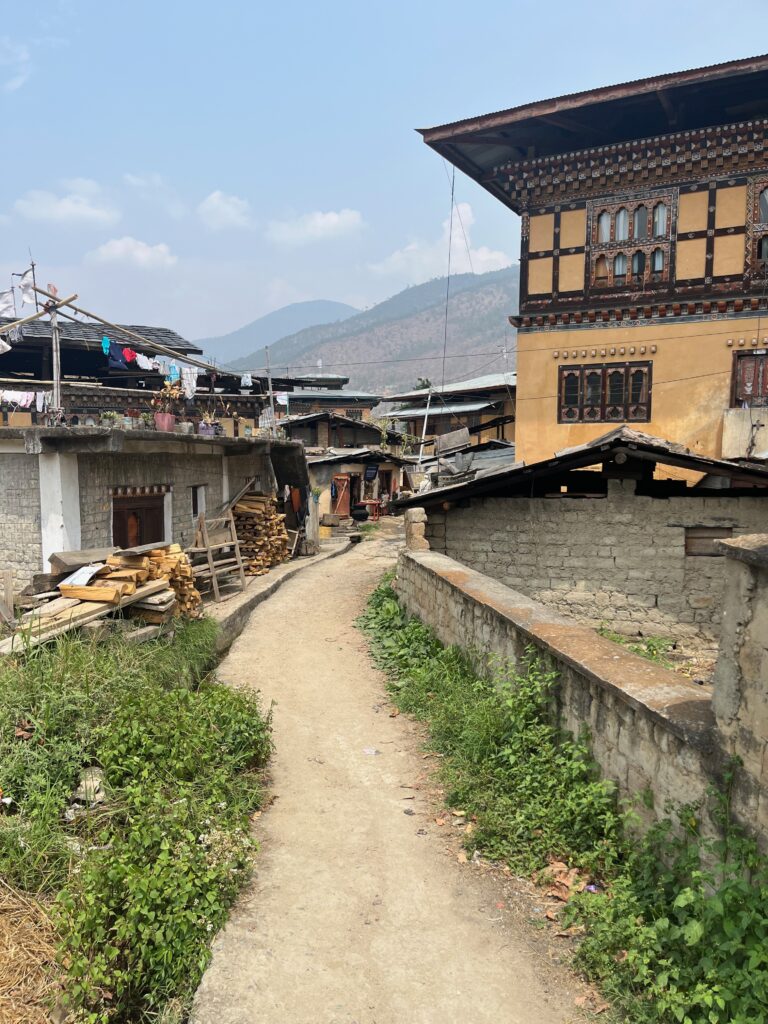
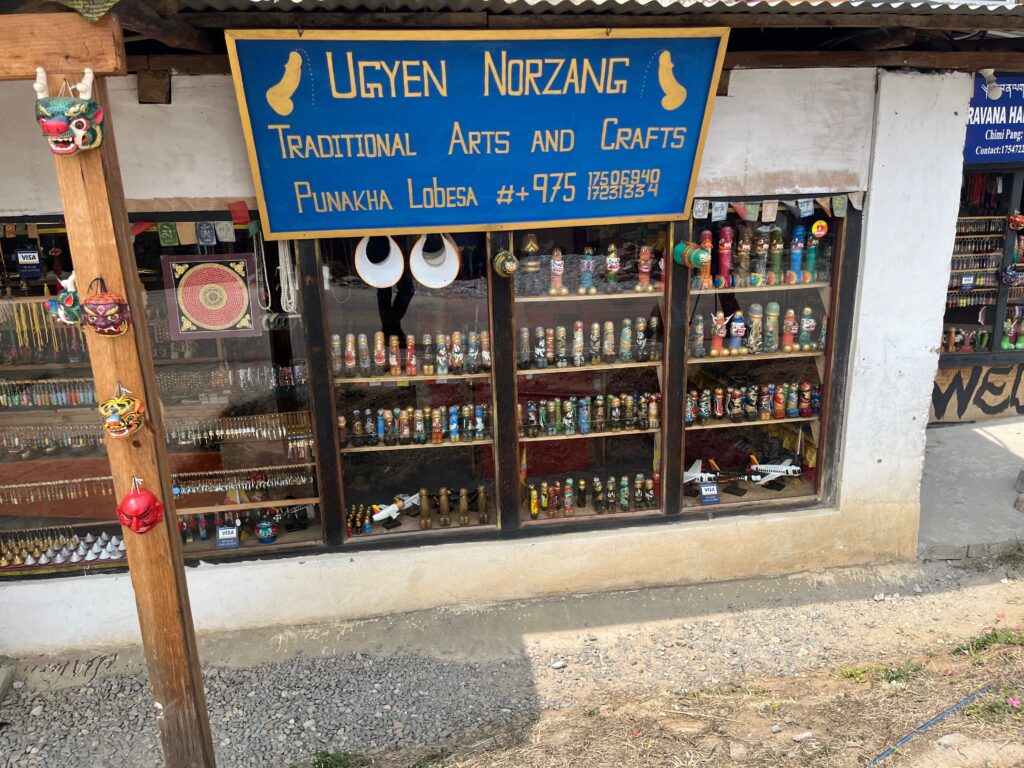
We were then transported to Punakha to explore the town, including its impressive dzong (fortress-monastery), located at the confluence of the Mo (mother) and Pho (father) rivers. The Punakha Dzong is is the second oldest and second-largest dzong in Bhutan and one of its most majestic structures. The dzong houses the sacred relics of the southern Drukpa Lineage of the Kagyu school of Tibetan Buddhism.
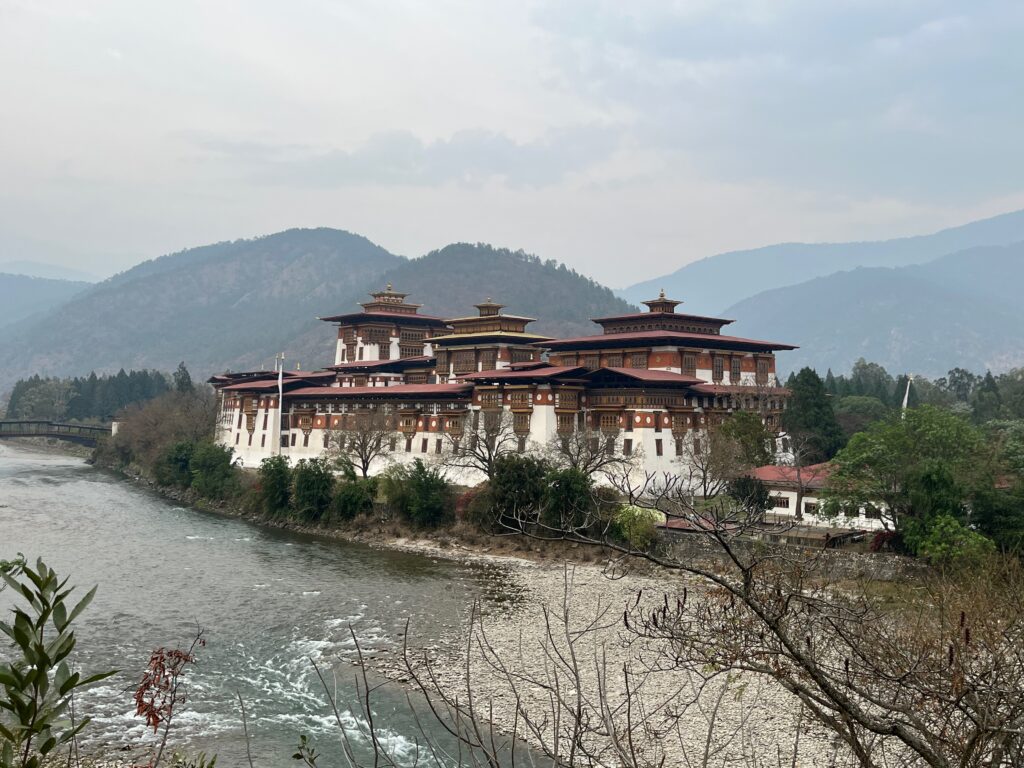
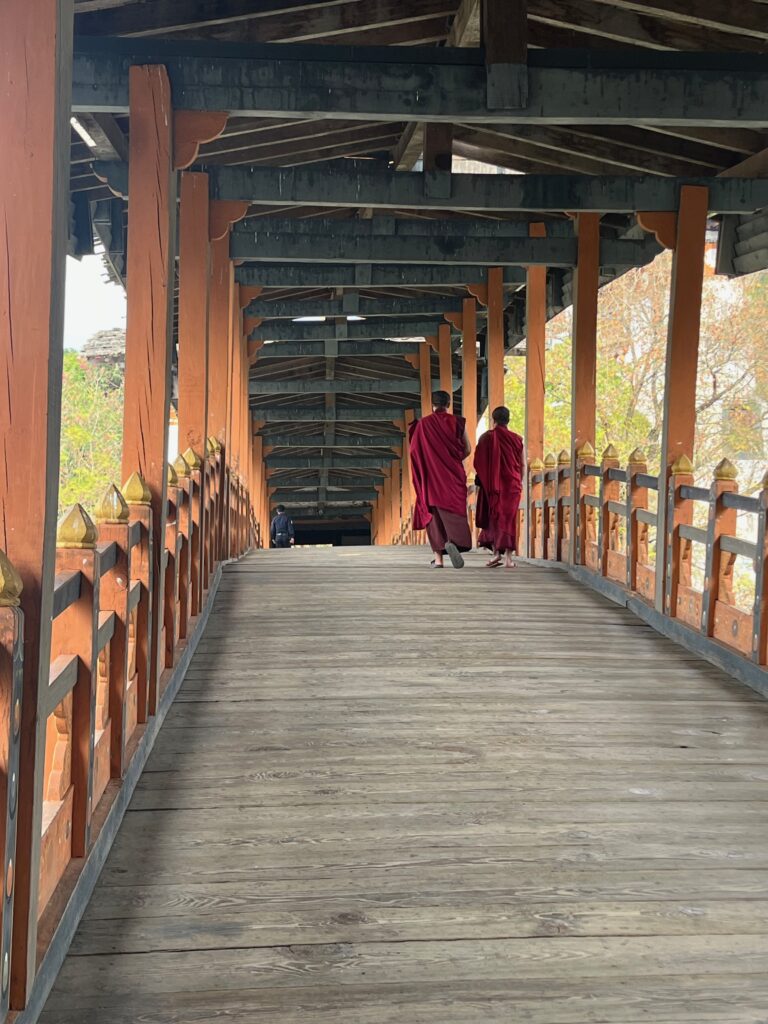
Hotel: Dhensa Boutique Hotel: Dhensa sits in the heart of the tranquil and lush Punakha Valley. Flanked by thick pine forests, it overlooks the Punakha River and hundreds of terraced paddy fields that stair-step down to the valley floor. Each suite has its own private balcony., a tranquil place to take a break from the activities of the day. The Dhensa was, by far, the best hotel at which we stayed in Bhutan.
April 10 – Paro
Today we returned to Paro, arriving in time for lunch at the Valley View Restaurant. After lunch we visited the Ta Dzong, a seven storied watchtower fortress that was established in 1968 as the location of the National Museum. The National Museum is home to a collection of thangkas (scroll paintings), bronze statues, and intricate stamps. Today, the National Museum has in its possession over 3,000 works of Bhutanese art, covering more than 1,500 years of Bhutan’s cultural heritage. Its rich holdings of various creative traditions and disciplines, represent a remarkable blend of the past with the present and is a major attraction for local and foreign visitors.
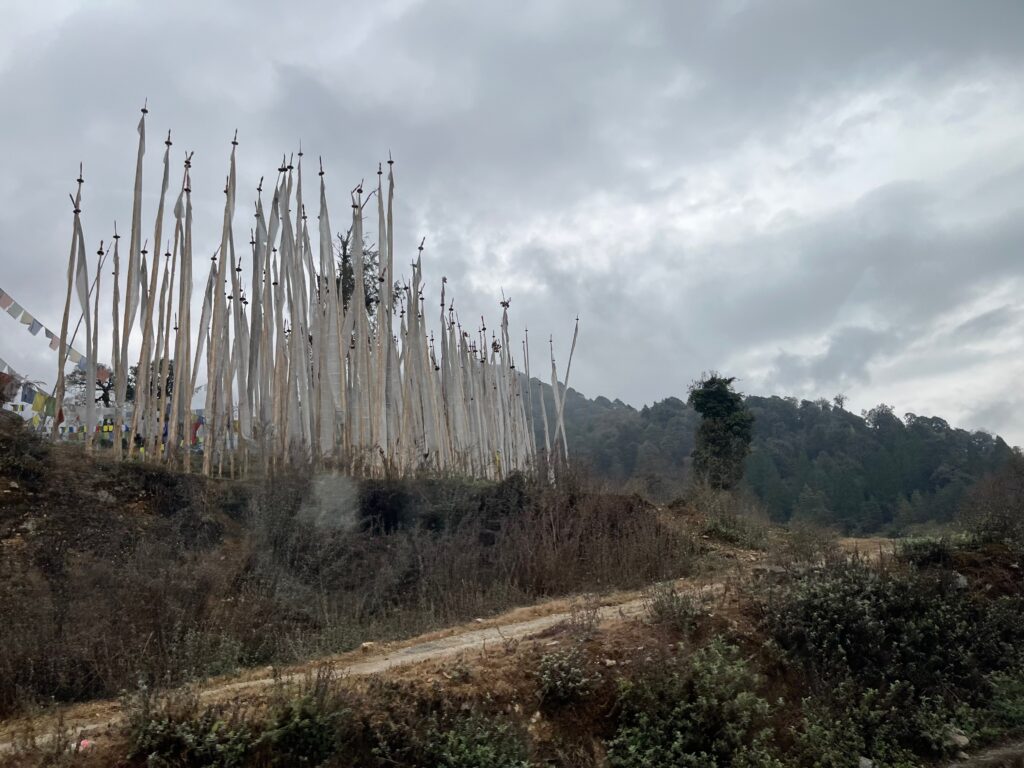
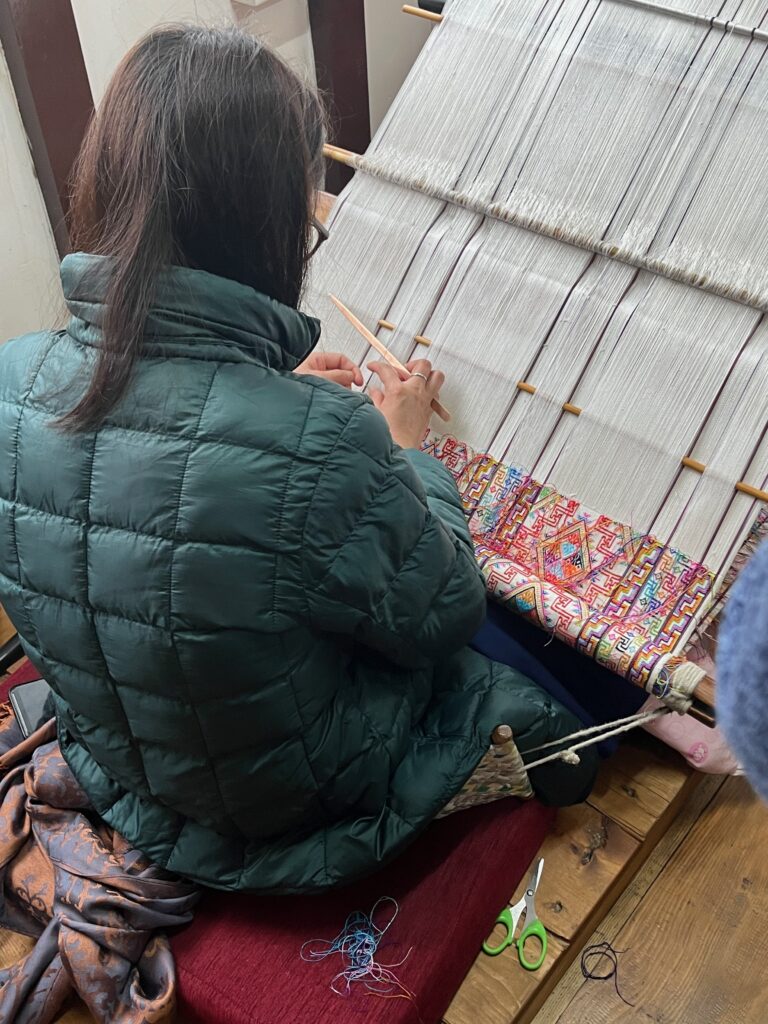
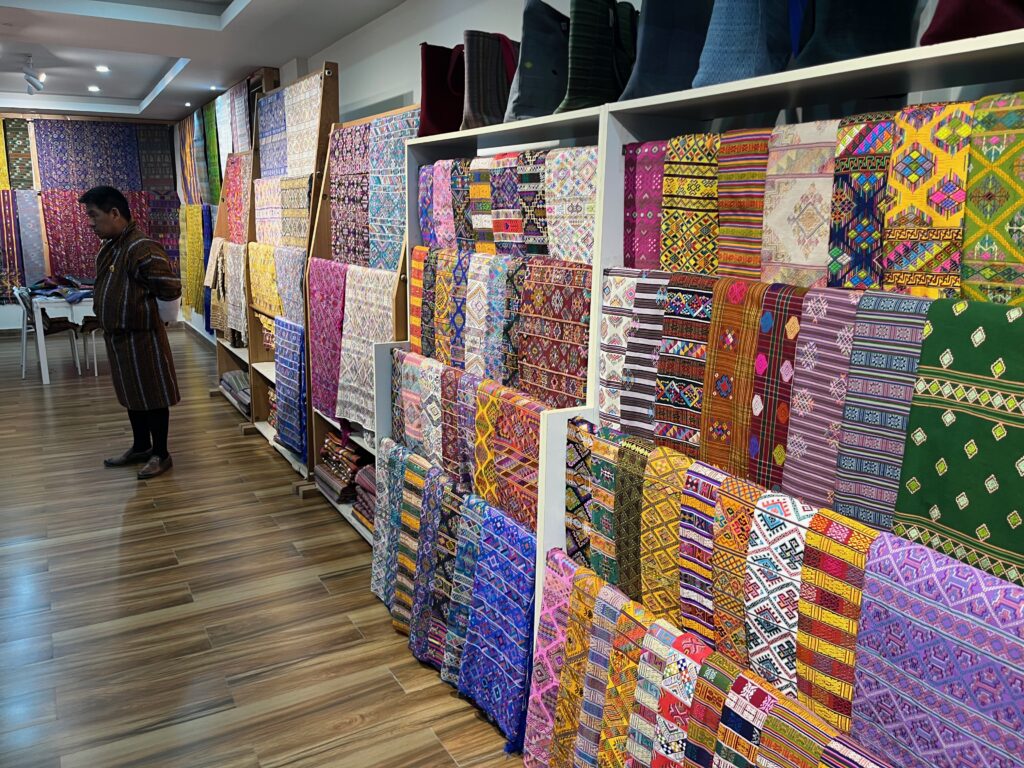
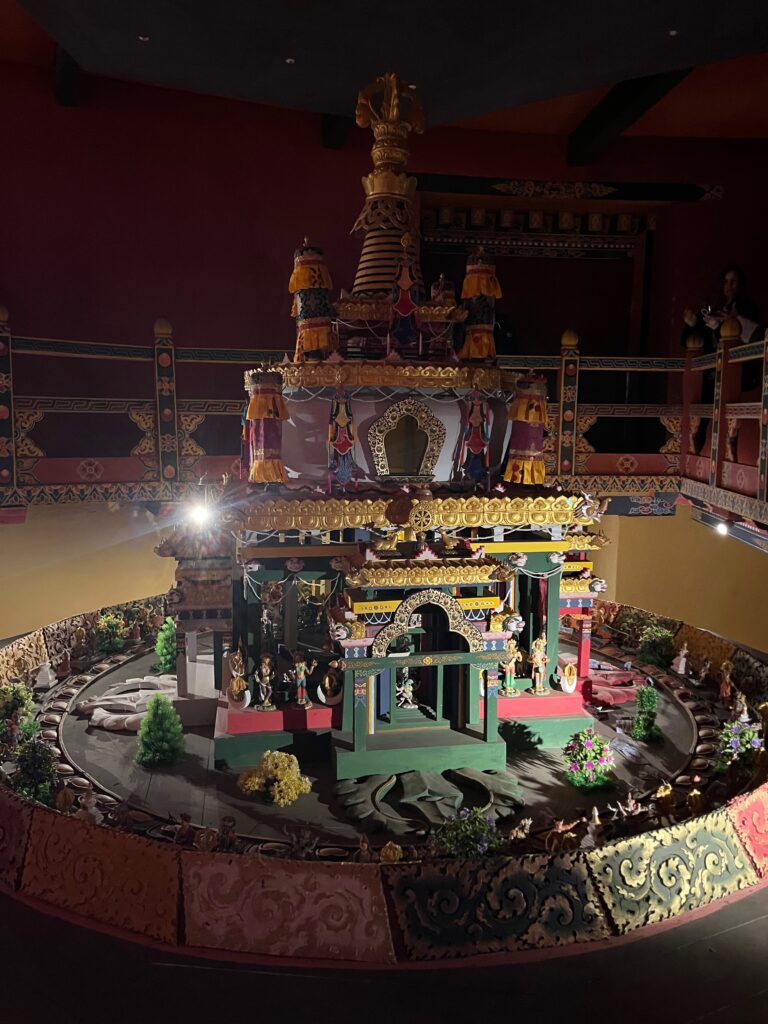
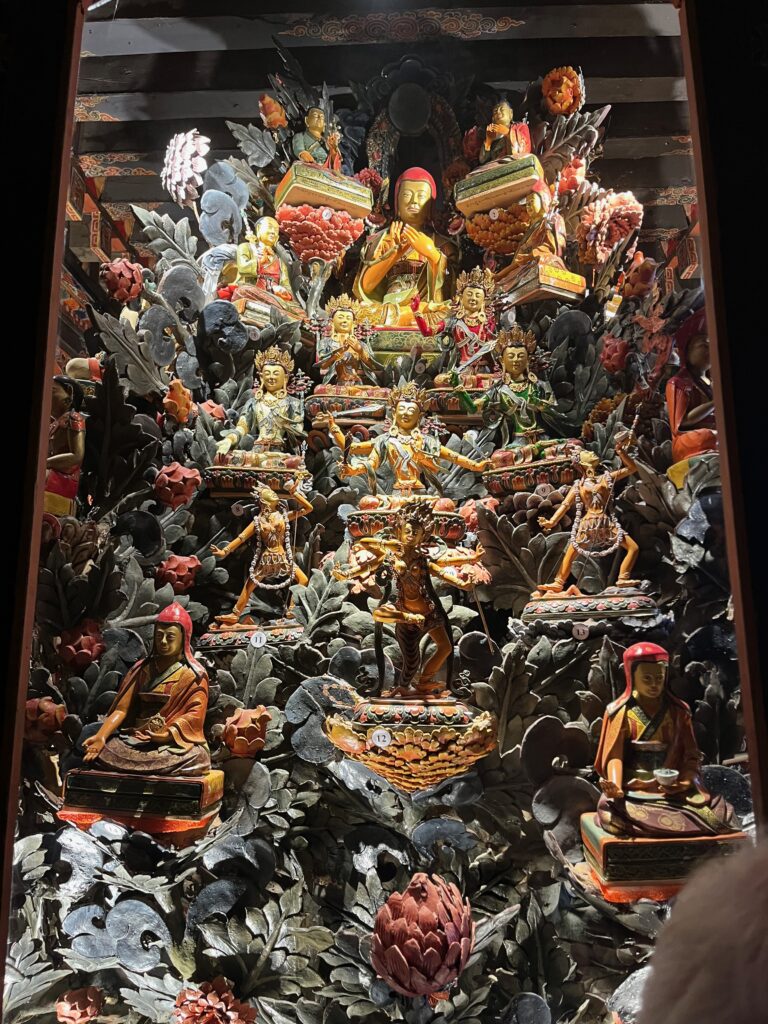
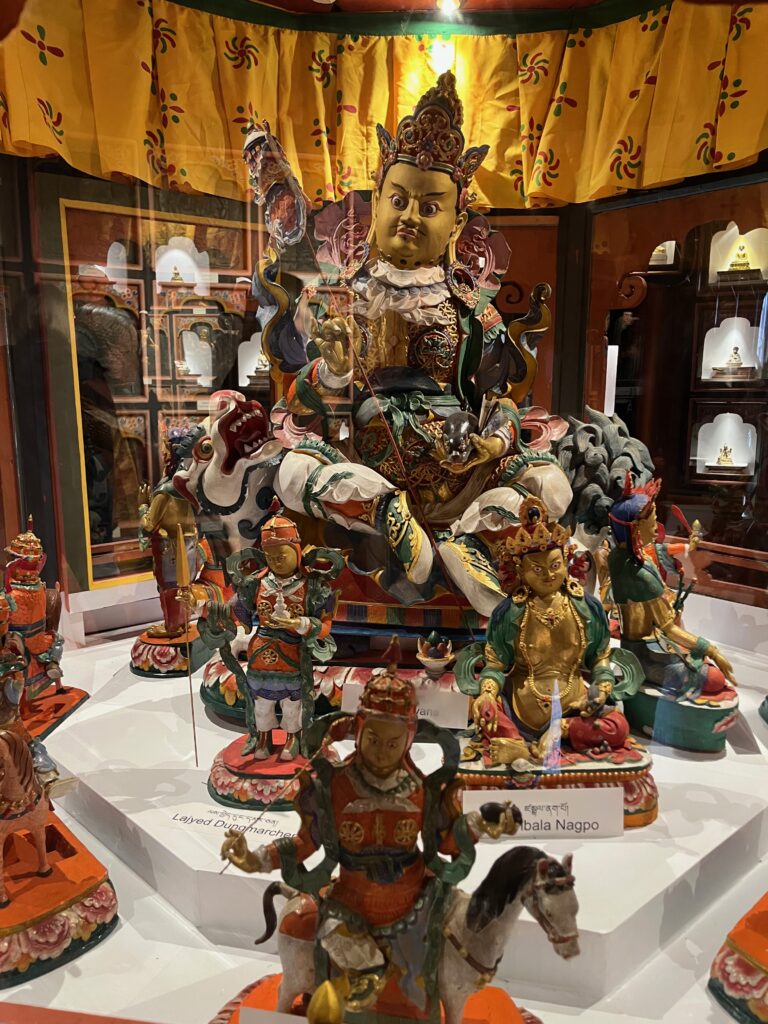
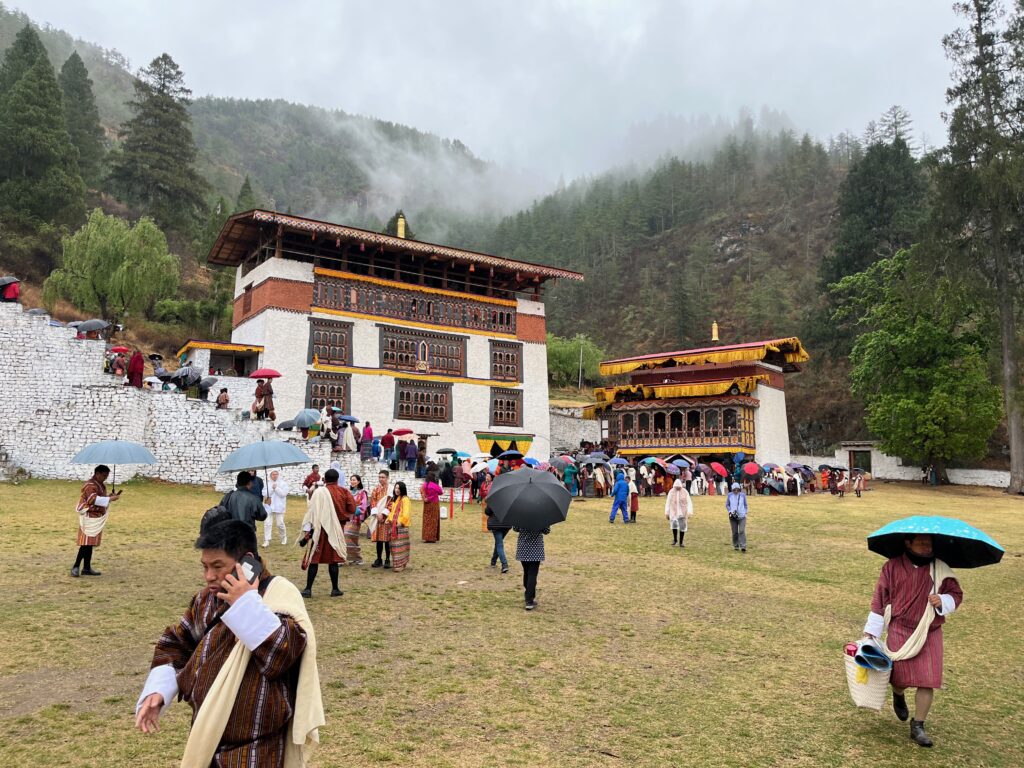
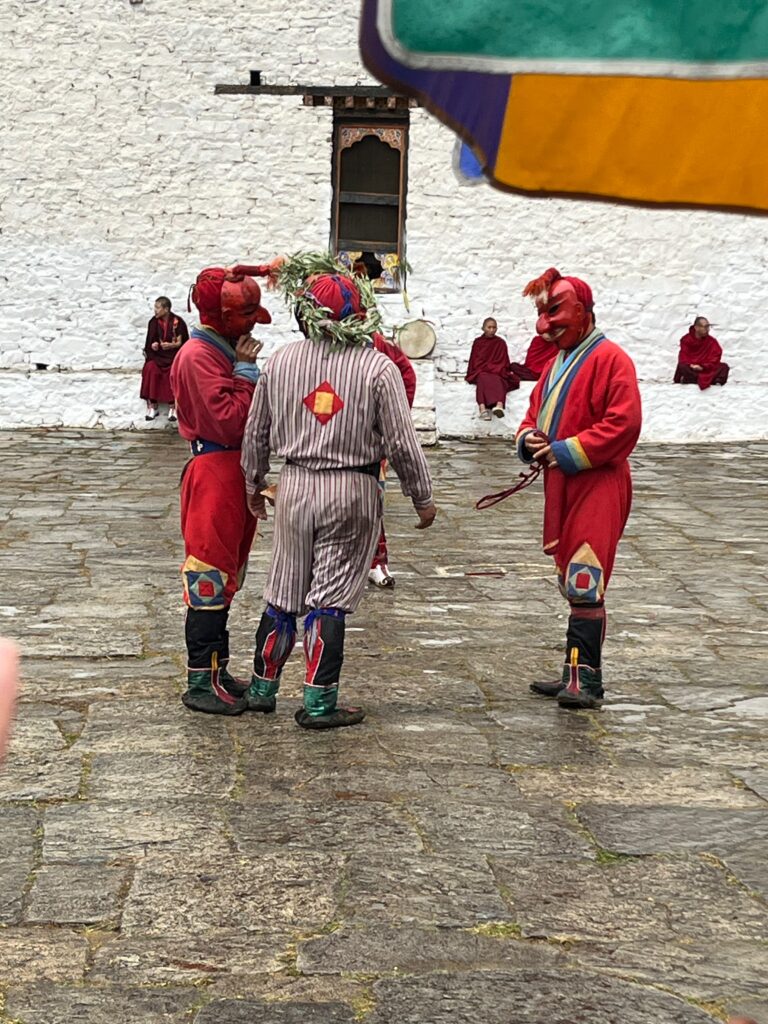
After the museum we stopped to watch a portion of the Paro Tshechu Festival. According to Wikipedia, “Tshechus are large social gatherings, which perform the function of social bonding among people of remote and spread-out villages.… The focal point of the tshechus are Cham dances. These costumed, masked dances typically are moral vignettes, or based on incidents from the life of the 9th century Nyingma teacher Padmasambhava and other saints. Typically, monks perform unmasked in certain group dances, including the Black Hat dance, while laymen perform masked, in largely different plays.” We then were dropped off in the main part of Paro to explore the town before heading for our nearby hotel.
Hotel: Resort Thim-Dorji: This resort in Paro is set along the Paro River with a backdrop of pine forests. My room was spacious and comfortable, with a view of the courtyard bordering the nearby river. The hotel restaurant provided a very nice buffet for breakfast, similar to those experienced elsewhere in Bhutan.
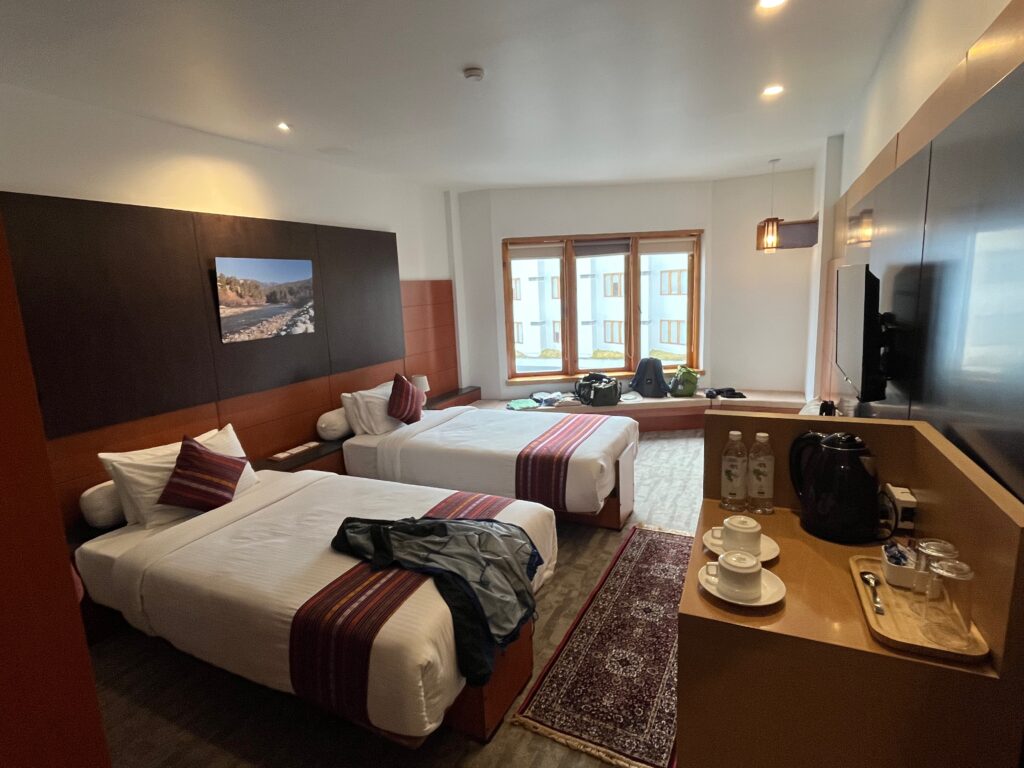
April 11 – Paro and Tiger’s Nest Monastery
Today we set out at 5:30 a.m. for a vigorous 6-mile morning hike to the iconic Tiger’s Nest Monastery, or Takstang, which clings to the cliff side some 2,700 feet above the valley floor (10,240 feet above sea level). The trail zigzags uphill through forests to scenic viewpoints, including a teahouse perched on the slopes across from this beautiful pilgrimage site. The beginning part of the hike is on dirt trails with frequent wooden steps, roots, and rocks. The teahouse is reminiscent of an alpine lodge and provides a view of the monastery above, as well as beverages and food. The terrain after the teahouse is less steep, but provides some challenging steps before reaching the final ravine before the monastery. Upon reaching the final ravine, the hiker must descend about 350 steps before ascending an additional 200+ steps to reach the monastery. The steps are made of stone and are not uniform in height, length, depth, or shape. Like all the temples and monasteries in Bhutan, no photos were allowed. Upon returning, of course, you must reverse the order of events to reach the monastery. In some ways, the hike back was more difficult than the ascending hike due. In addition to the challenge of the steps, the altitude definitely plays a role for those who are not accustomed to hiking at over 10,000 feet of altitude. After the hike, we enjoyed lunch and had time to relax.
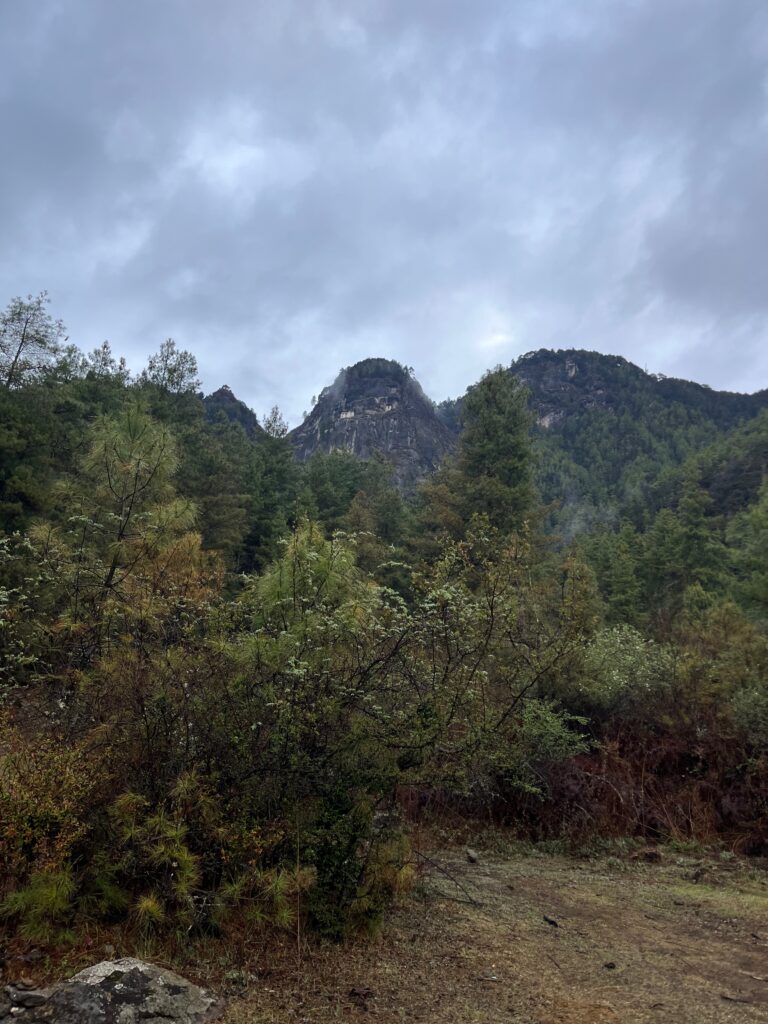
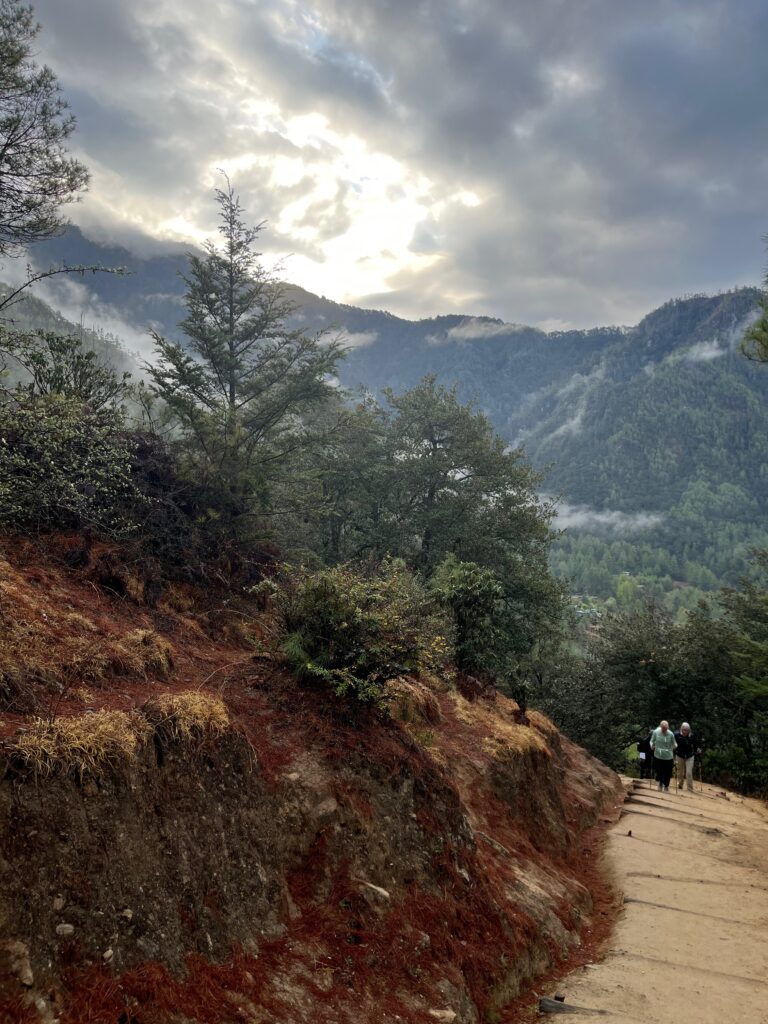
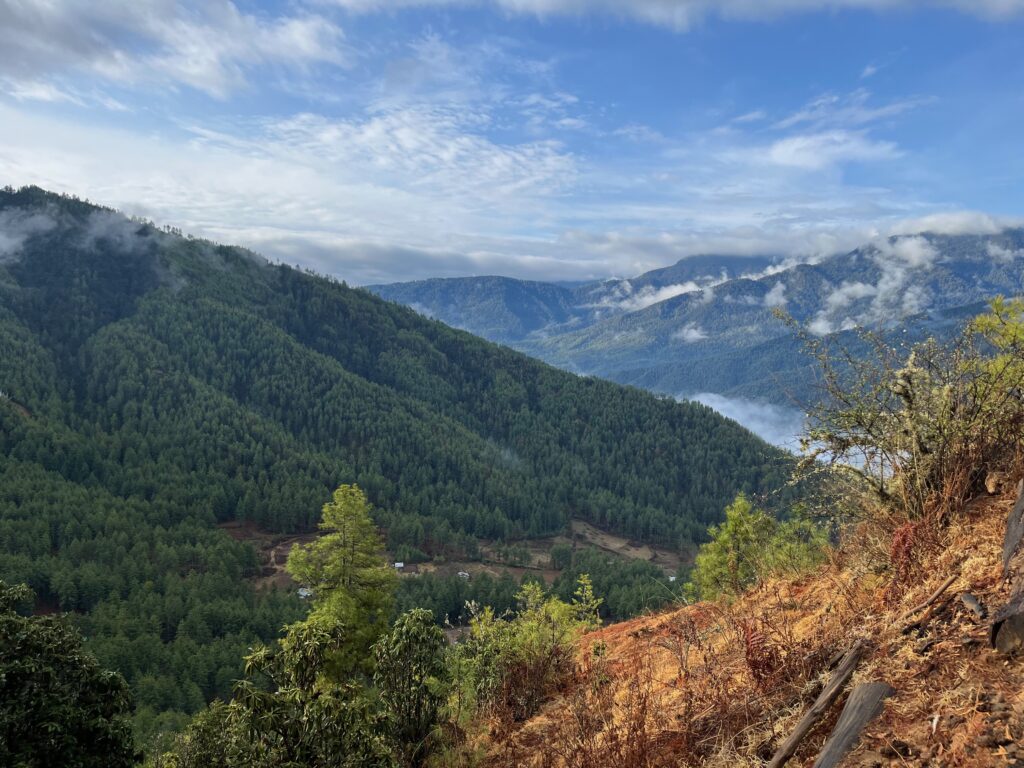
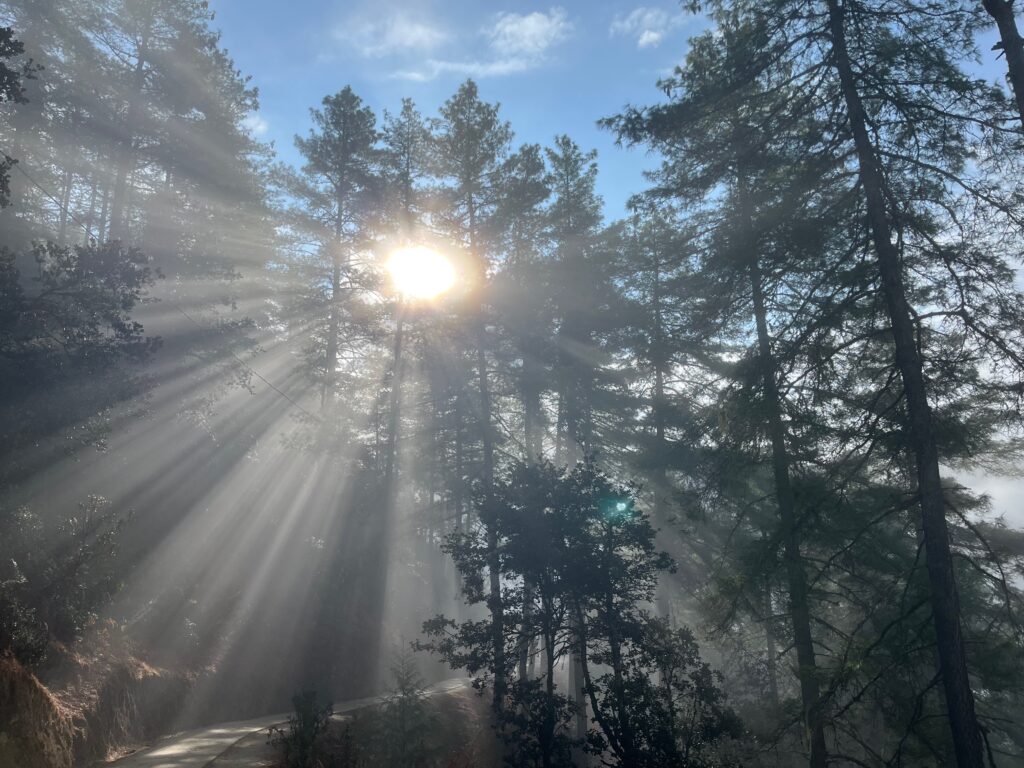
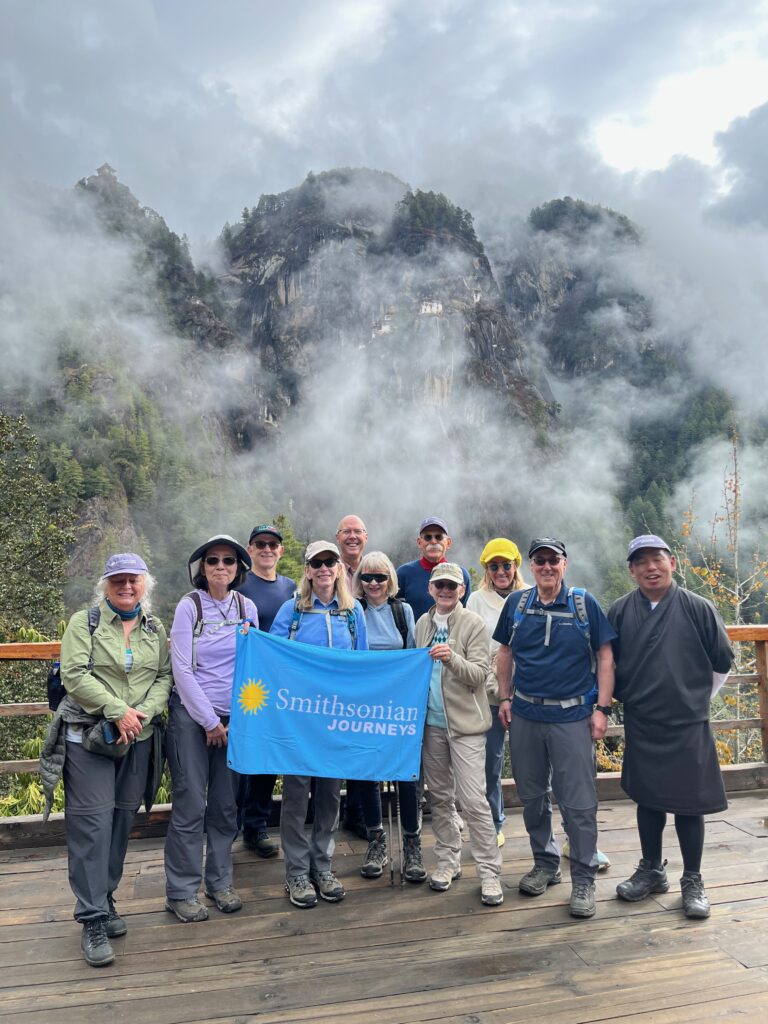
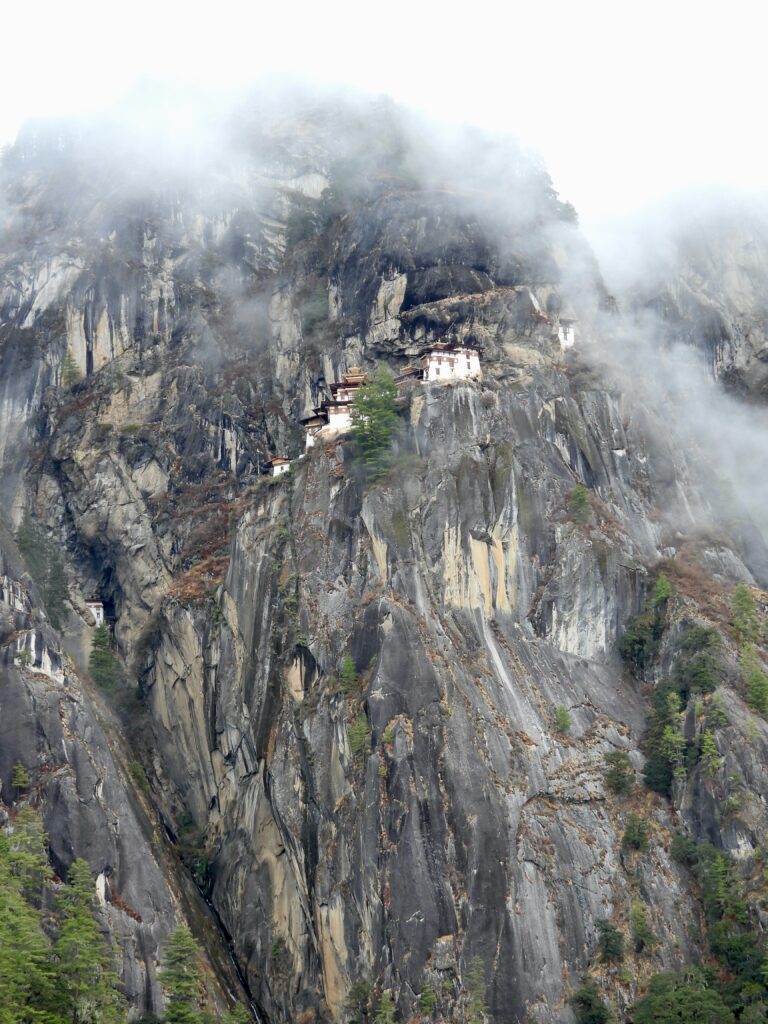
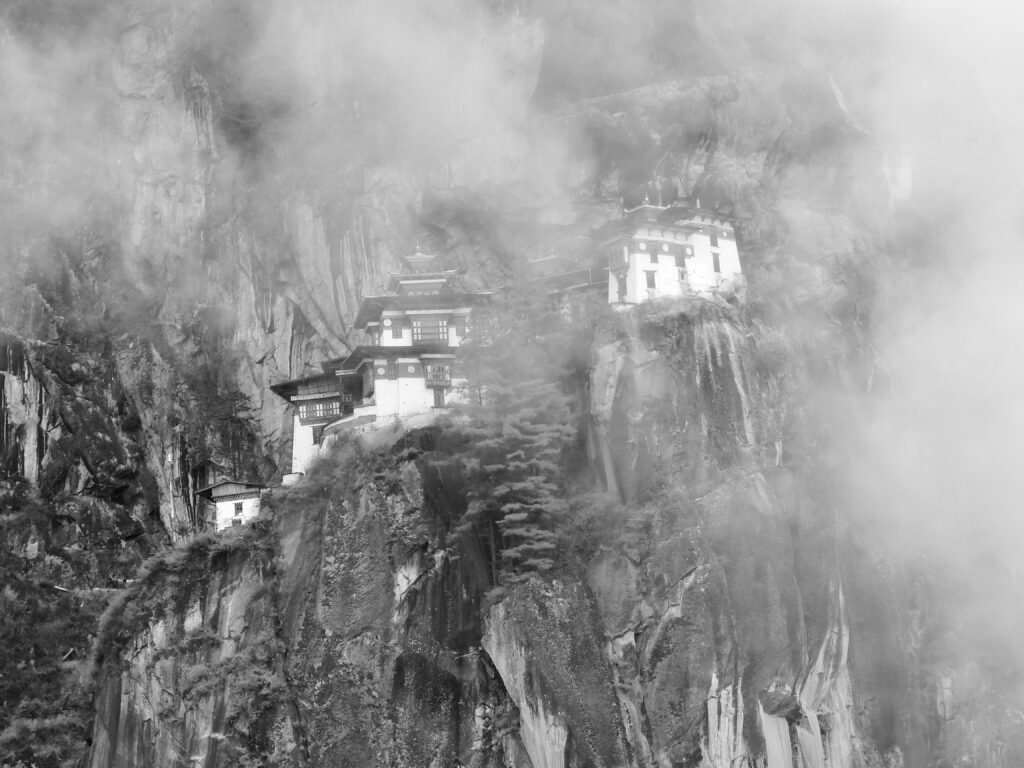
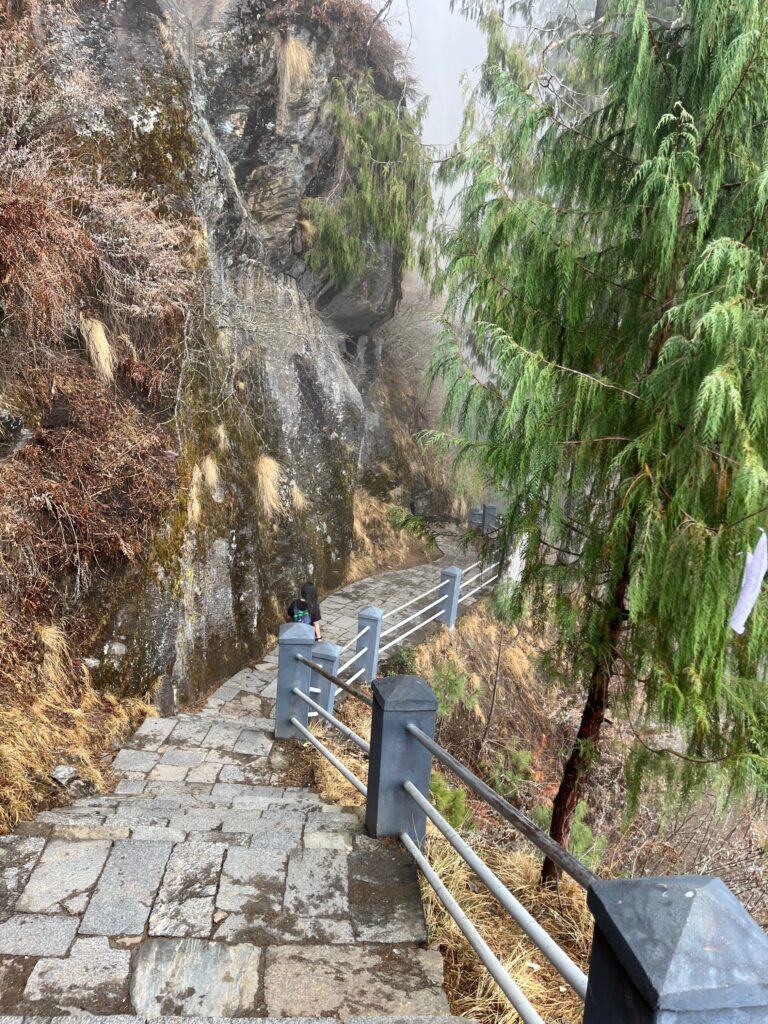
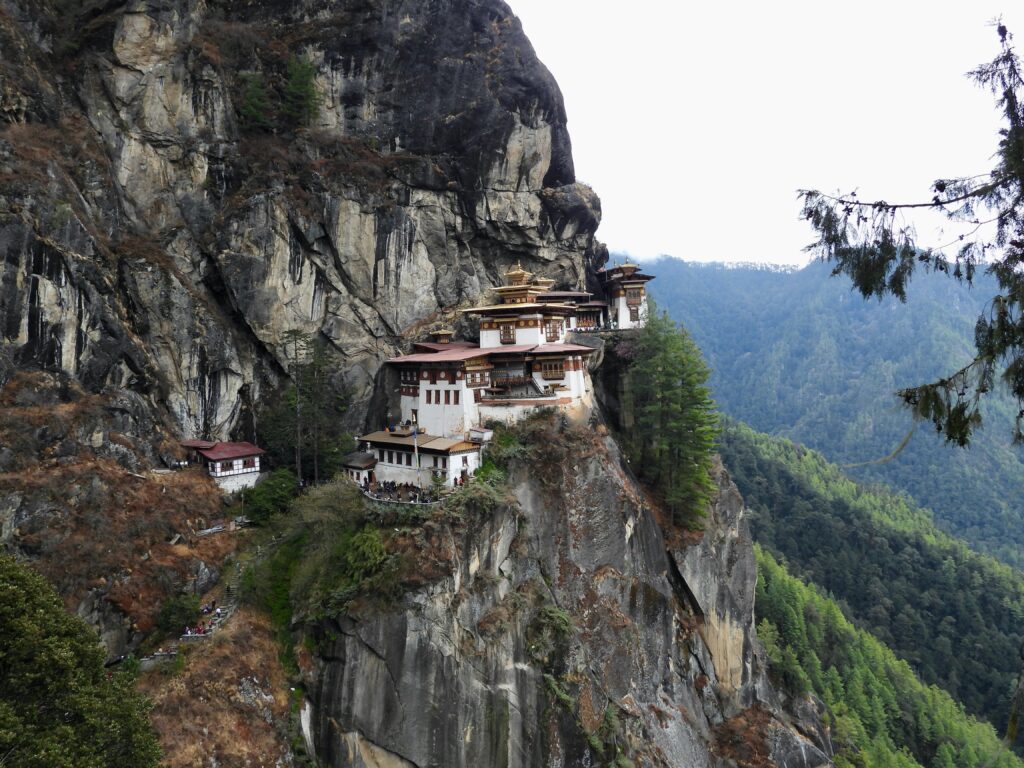
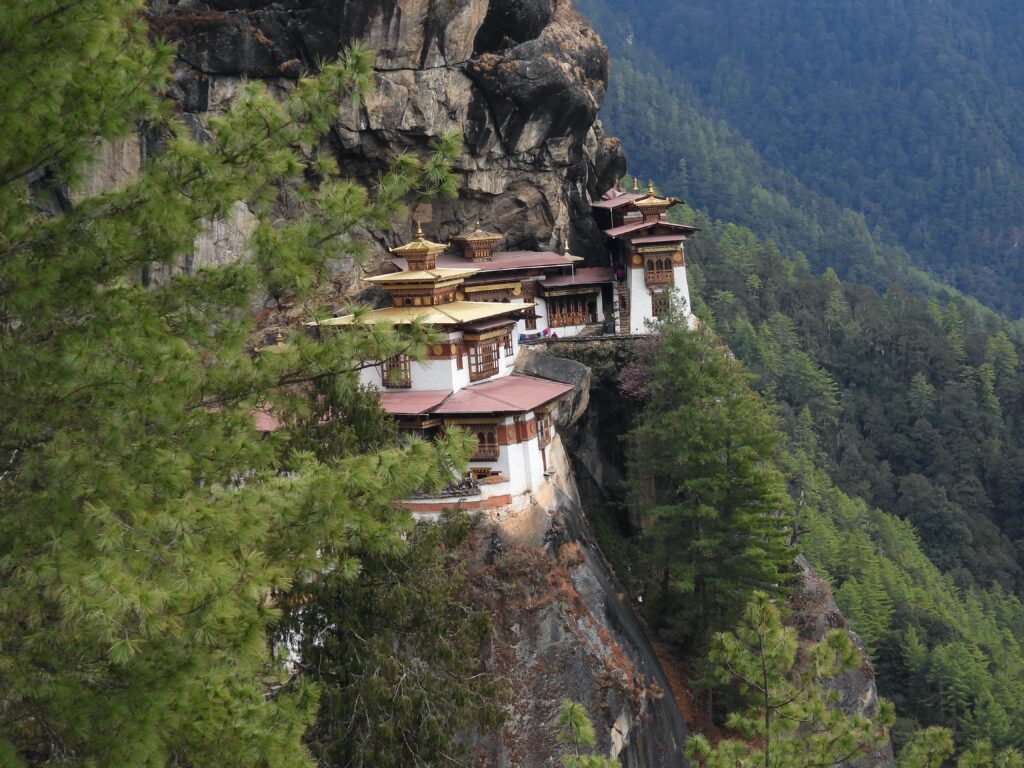
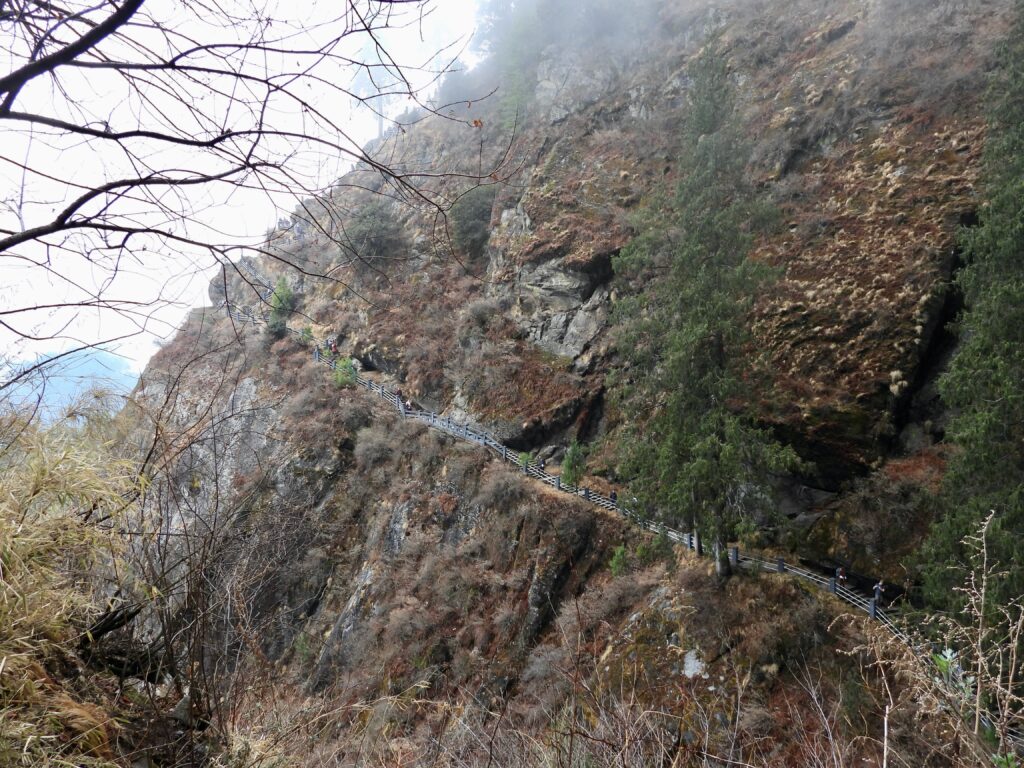
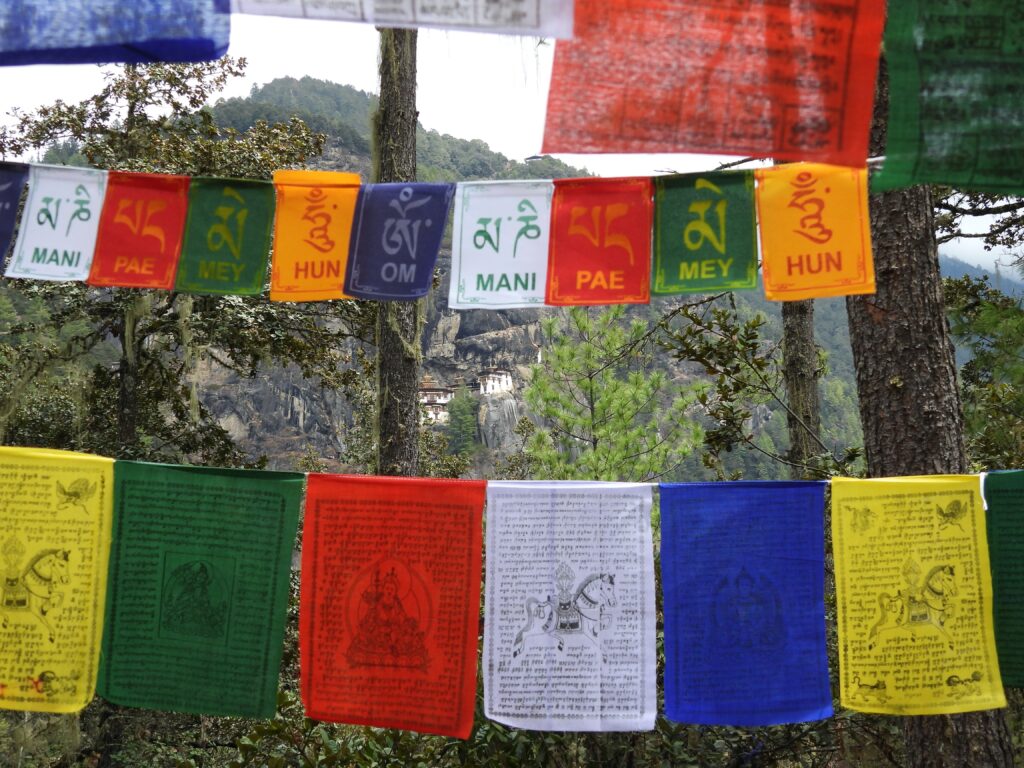
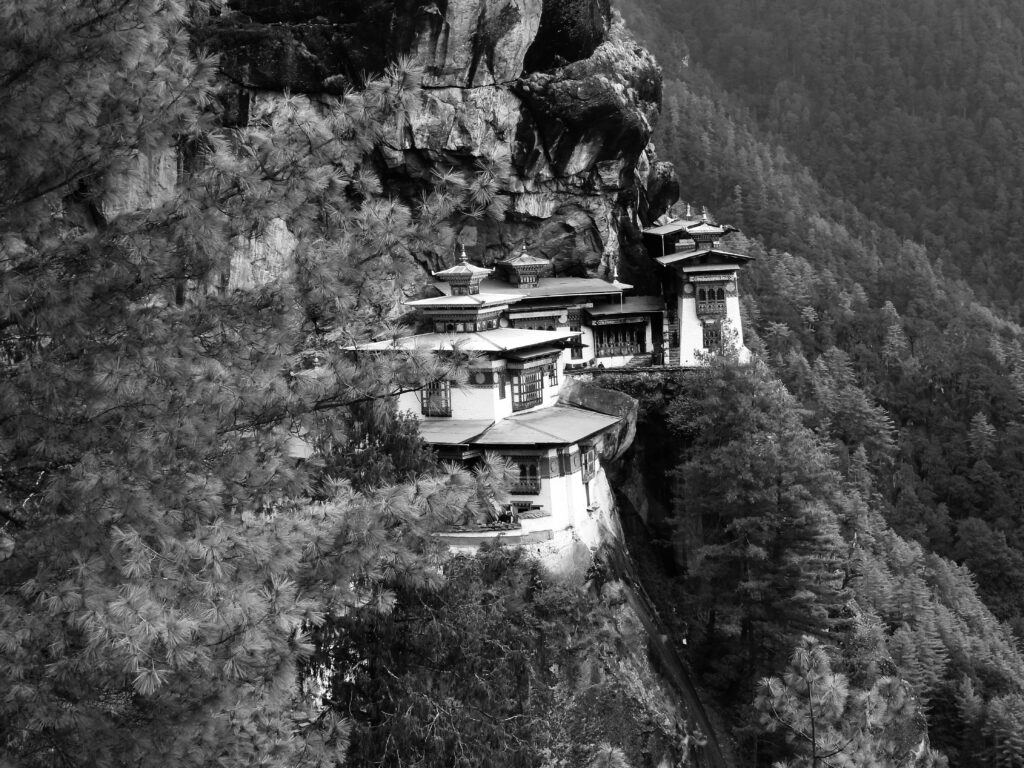
In the evening we enjoyed cultural entertainment in the form of traditional Bhutanese dances.
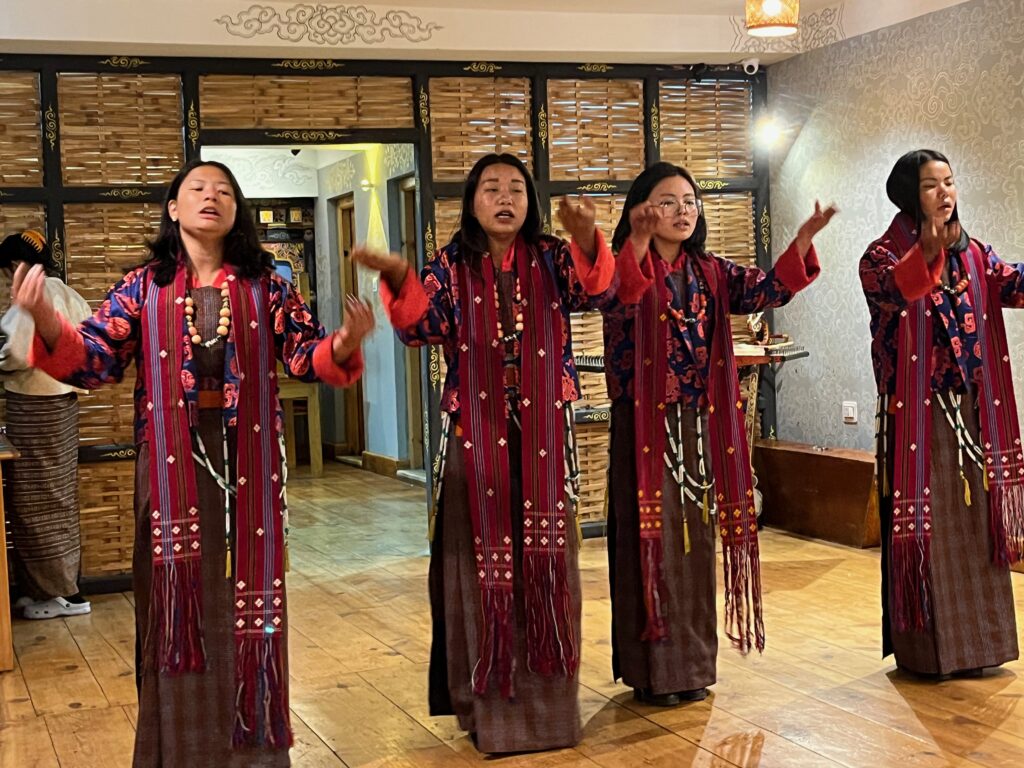
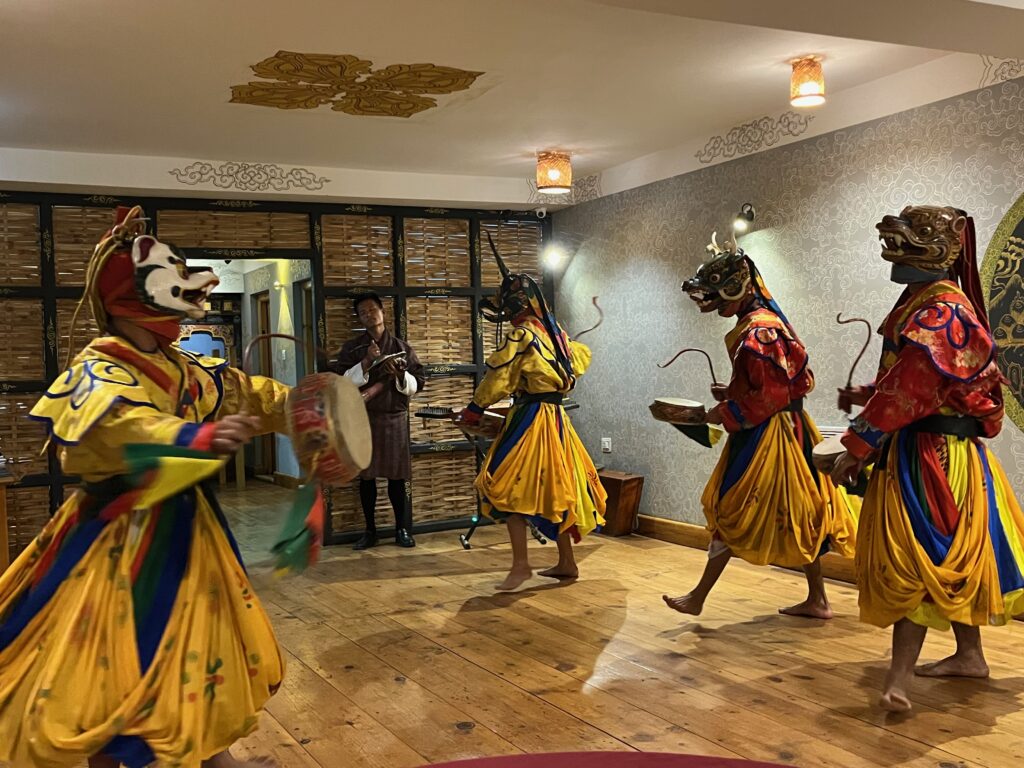
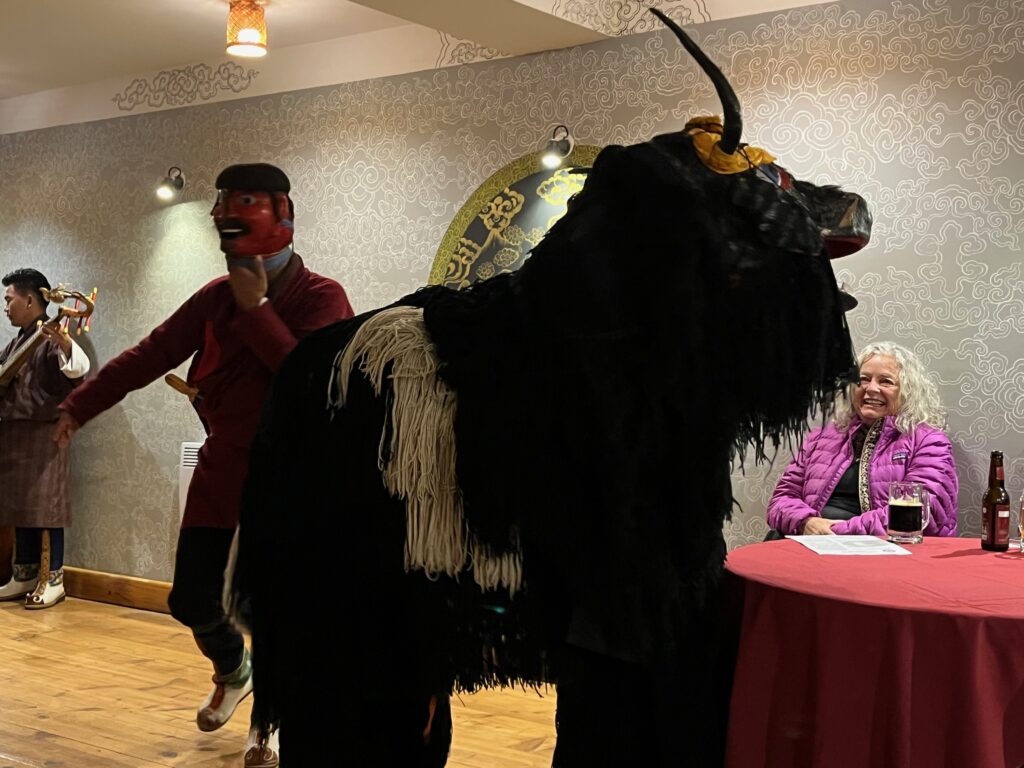
Hotel: Resort Thim-Dorji
April 12 – Pokhara, Nepal
In the morning we said to our goodbyes to Bhutan and our guide Kinley, and boarded a flight back to Kathmandu. Upon landing in Kathmandu, we were transferred by bus from the International Terminal to the Domestic Terminal for a short domestic flight to the lovely lakeside town of Pokhara (the two terminals are adjacent to each other but lack a good route to walk from one to the other, hence the bus). We drove to the edge of Phewa Lake and were transferred to the Fish Tail Lodge, our accommodations for the night. The lodge is in a beautiful setting and provides wonderful views of the surrounding peaks of the Annapurna mountain range. Phewa Lake is the second largest lake and most visited lake in Nepal. Phewa lake is located at an altitude of 742 m (2,434 ft) and covers an area of about 5.7 km2 (2.2 sq mi). That evening we enjoyed a wonderful dinner at the lodge restaurant, accompanied by a wonderful view of the lake, town, and mountains.
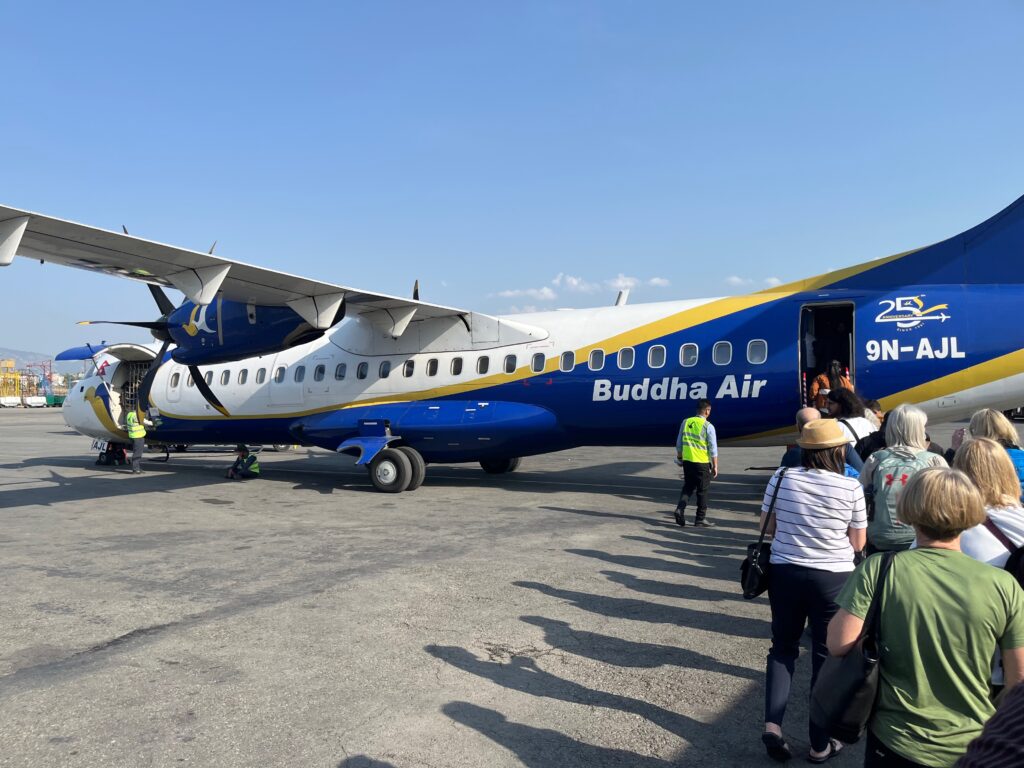
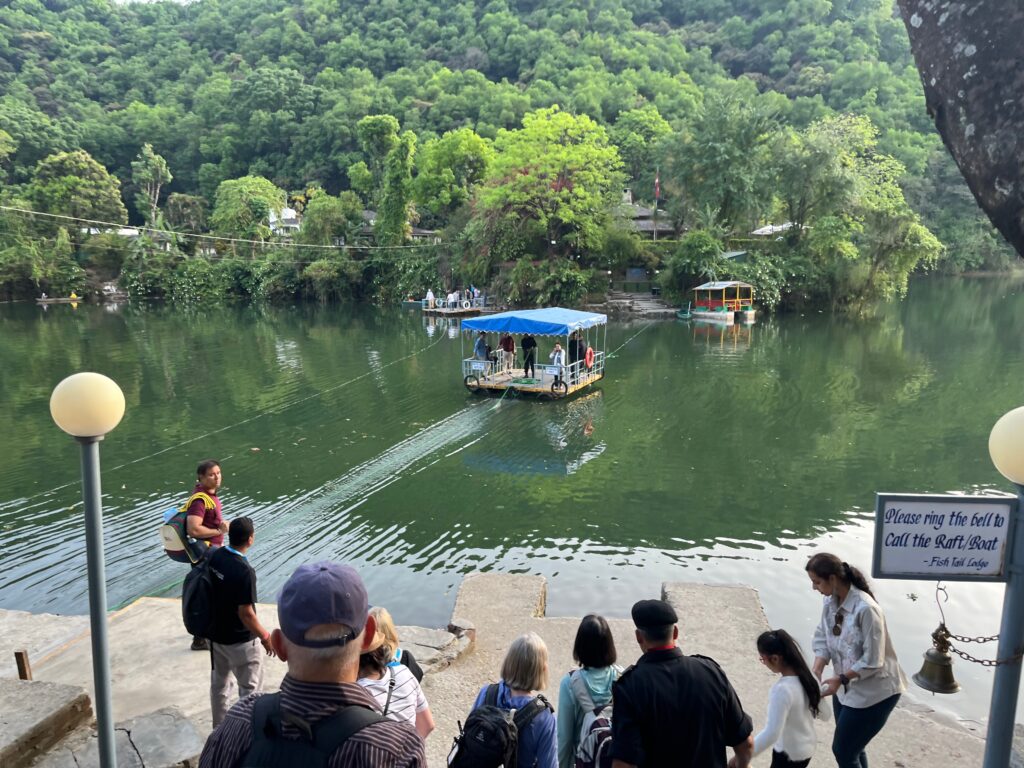
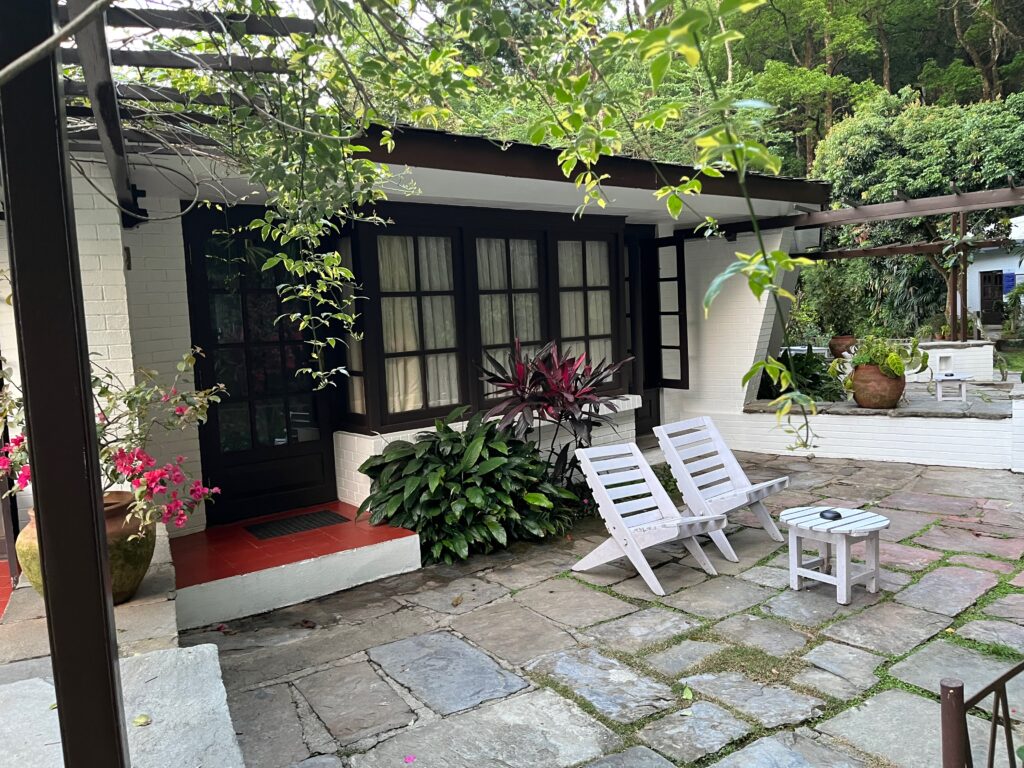
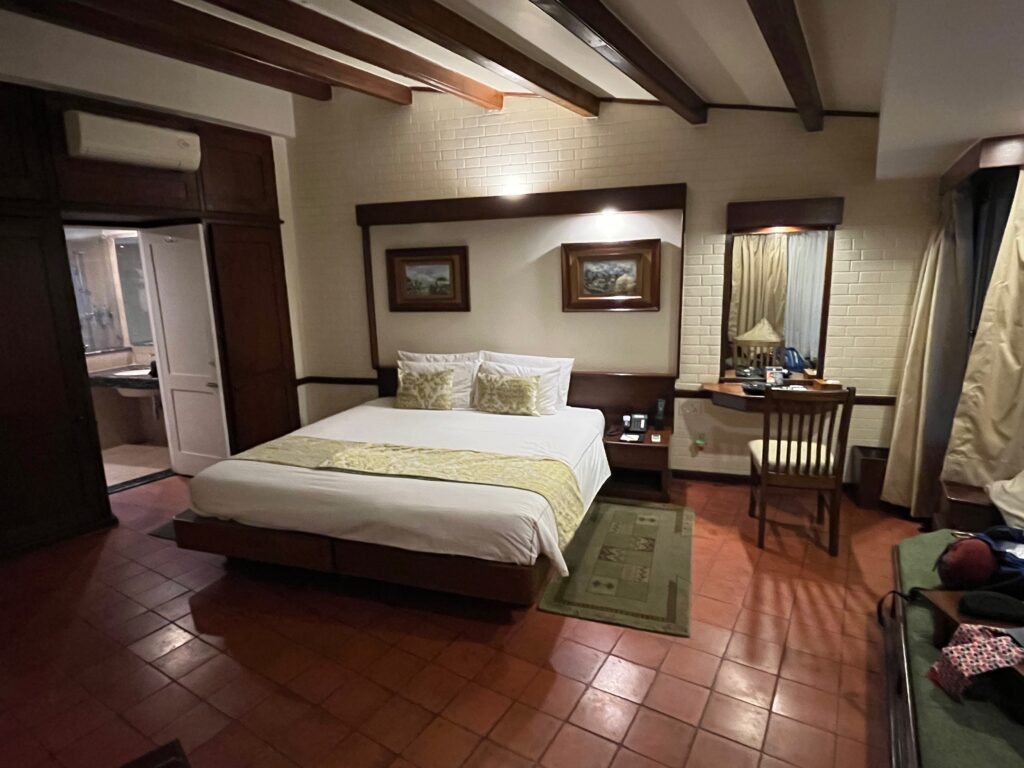
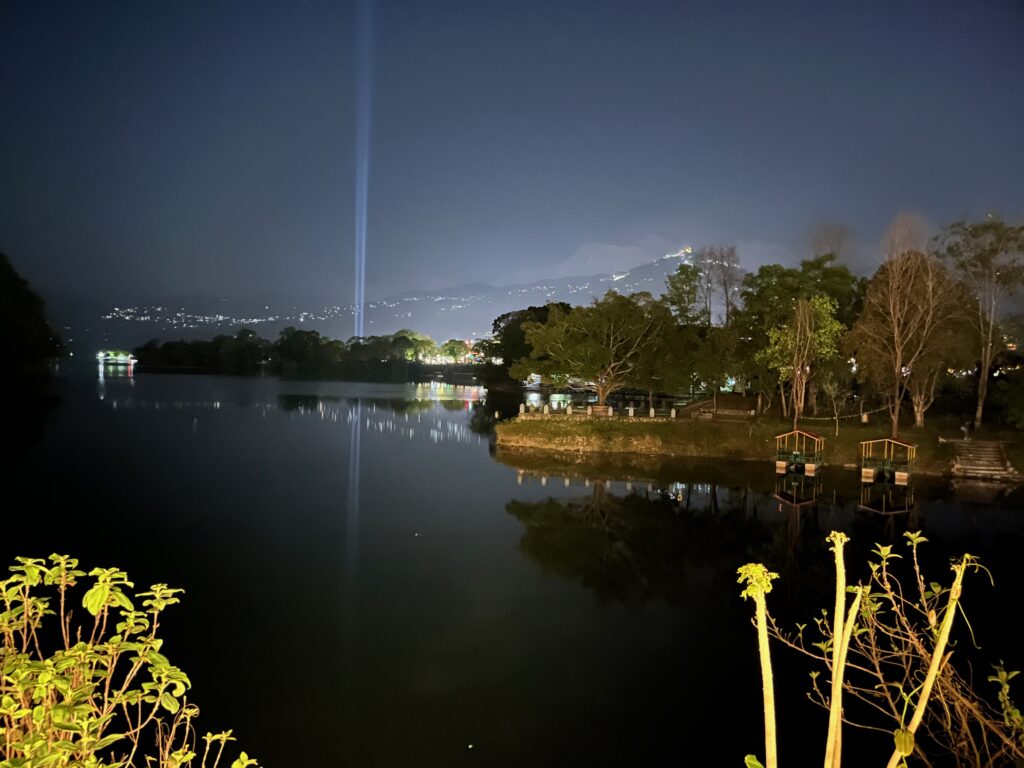
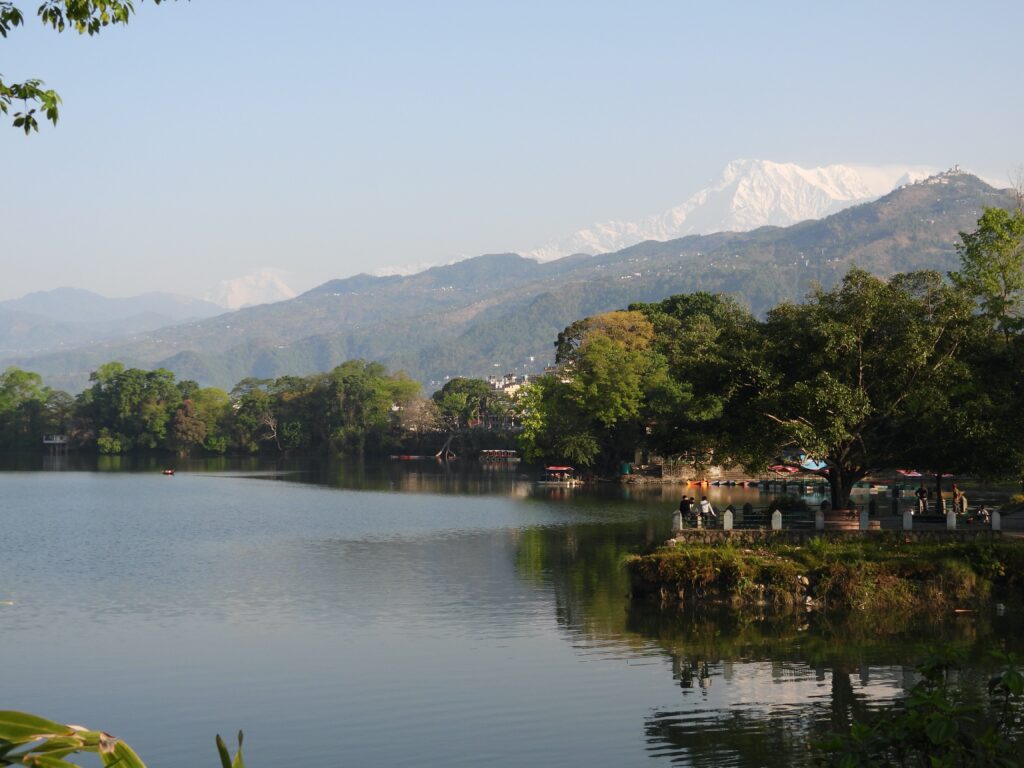
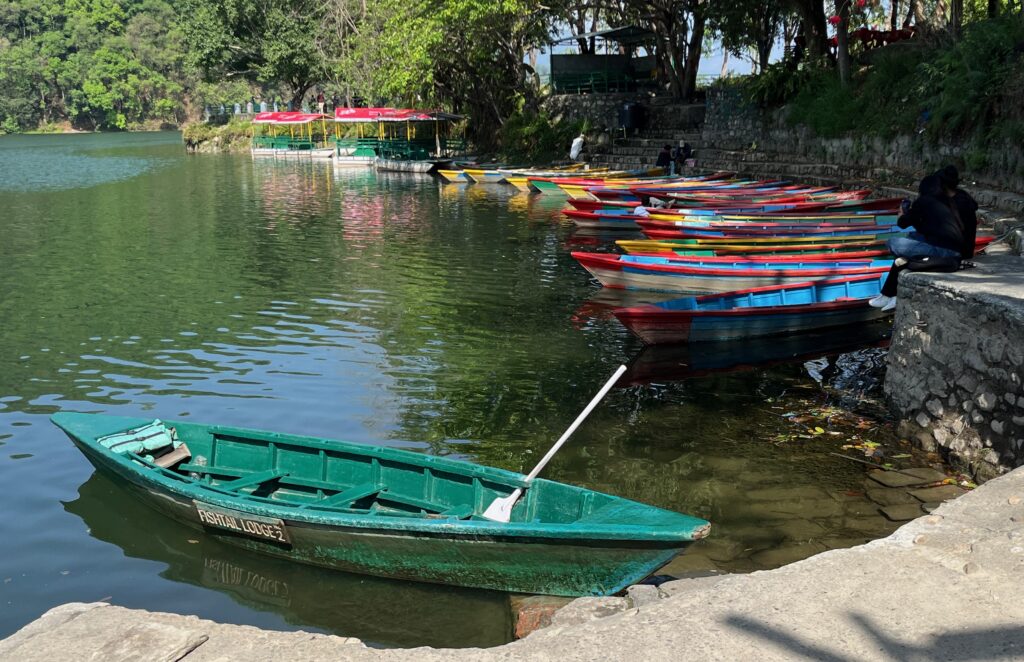
Hotel: Fish Tail Lodge: Situated next to a forest on the shores of Phewa Lake, Fish Tail Lodge is a haven of lovely gardens and charming round cottages not far from the heart of Pokhara. Guests are transported to the lodge via rafts or boats. All profits generated by Fish Tail Lodge are donated to the Princess Jayanti Memorial Trust, which provides free healthcare and public health services to underprivileged Nepalese people. The Fish Tail Lodge was one of the best all-around accommodations we experienced during the entire trip!
April 13 – Lumle to Tomijong Village
In the morning we packed our bags and were driven to the mountain community of Lumle to head into the fabled Annapurna mountains. Lumle is well known for its agricultural centre on a hillside above the village founded in 1968 to train British Gurkha ex-servicemen farmers. Its role was expanded in 1975 to benefit the communities from which Gurkhas were recruited. We then embarked on our trek for the day, our destination being a charming stone lodge near the village of Tomijong. Upon our arrival at the lodge we were greeted with a beverage and assigned our rooms for the night. The rooms were rustic, yet beautiful and spacious. There were no heaters, but each bed had an electric blanket which made the room very comfortable for sleeping. After we arrived, a thunderstorm rolled in, which led to the electricity shutting down for a couple of hours. I think the group was more than happy, at this mid-point of the trip, to have a relaxing afternoon to read and/or take a nap. We later gathered in the lodge restaurant for dinner and fellowship.
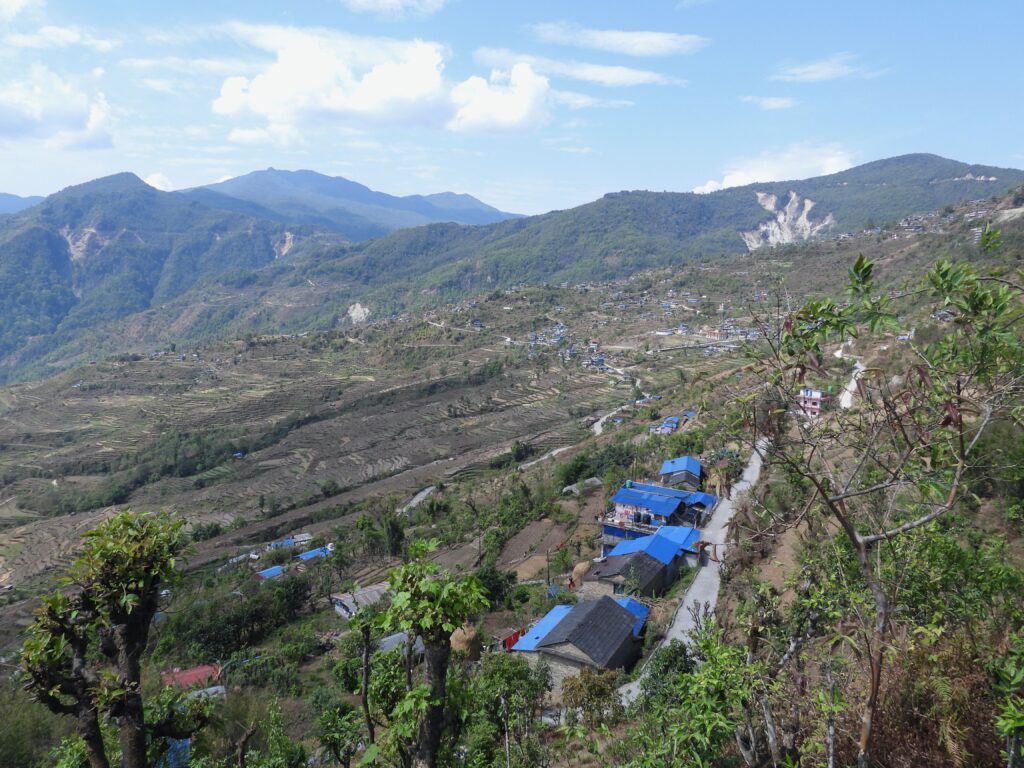
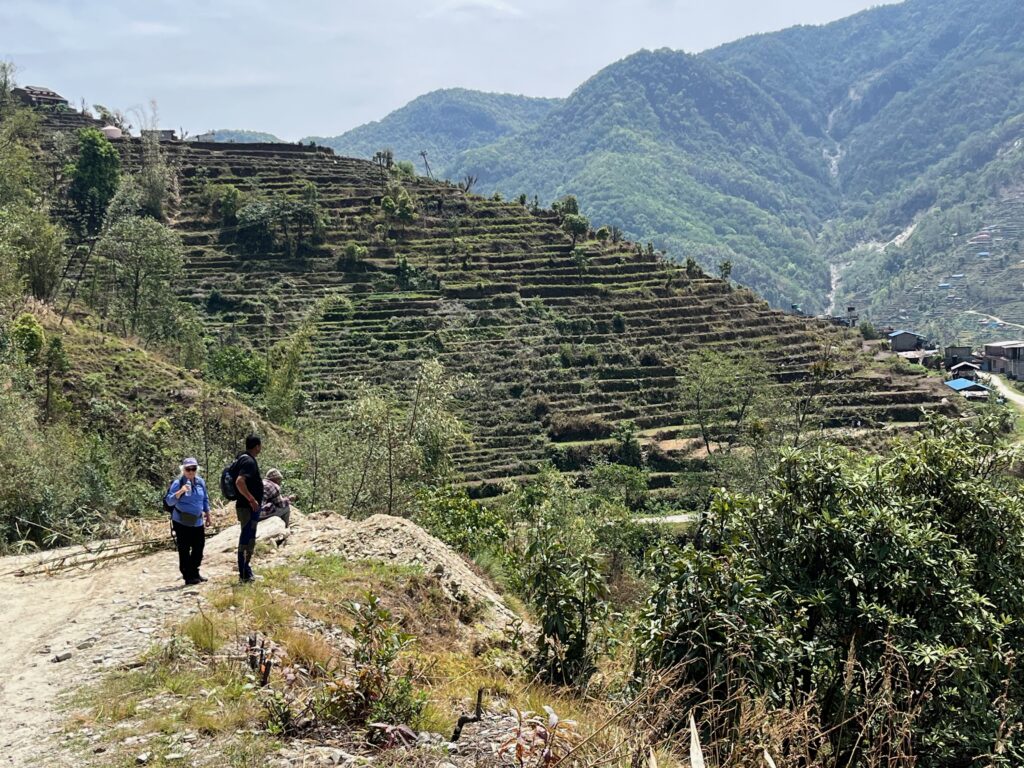
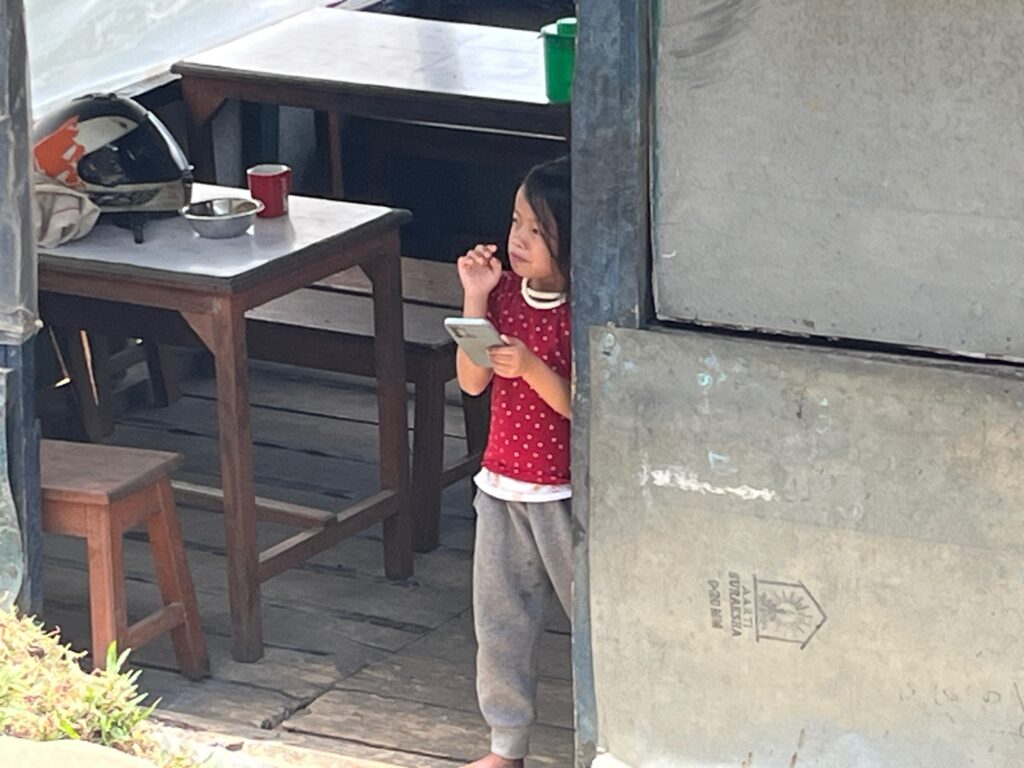
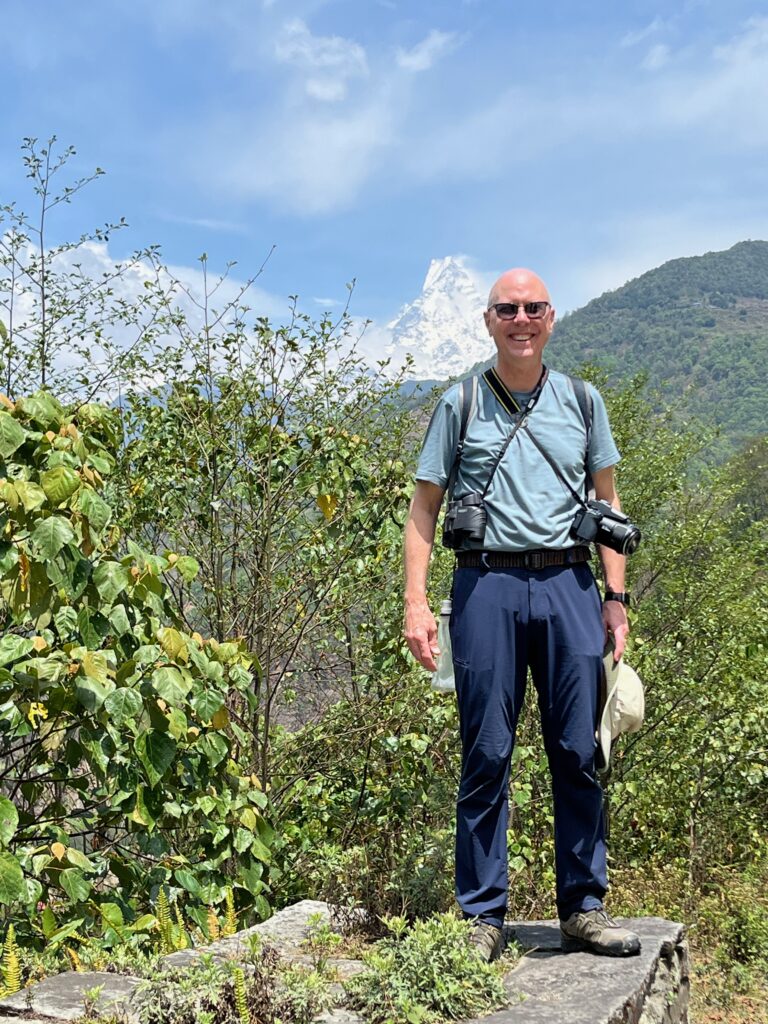
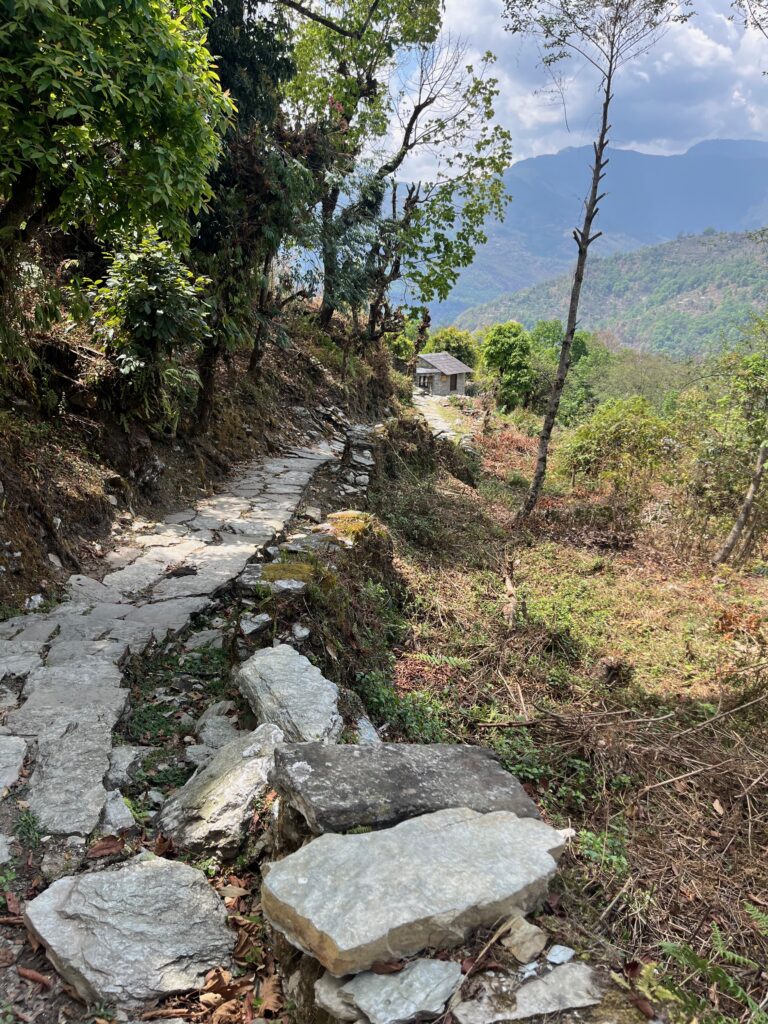
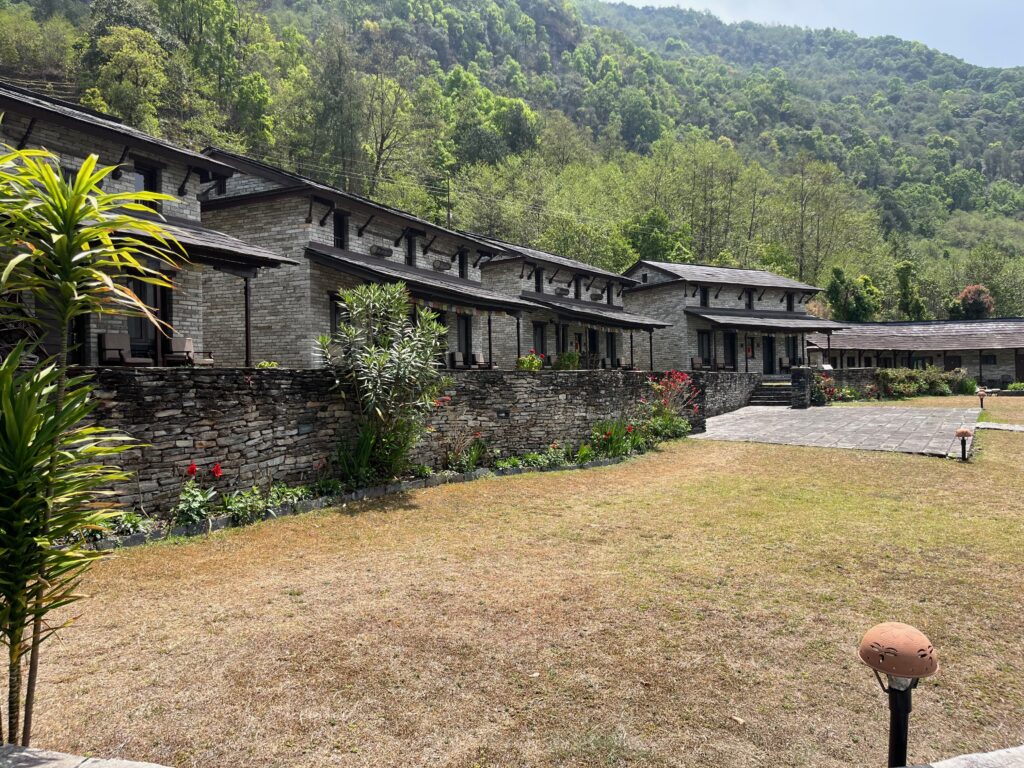
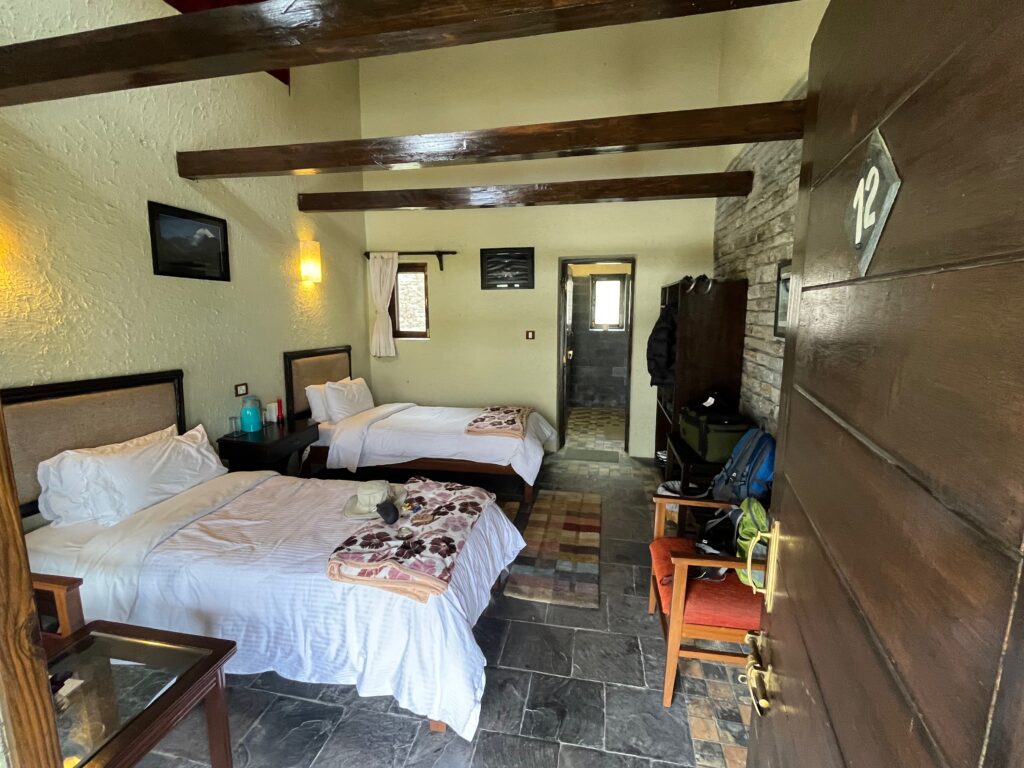
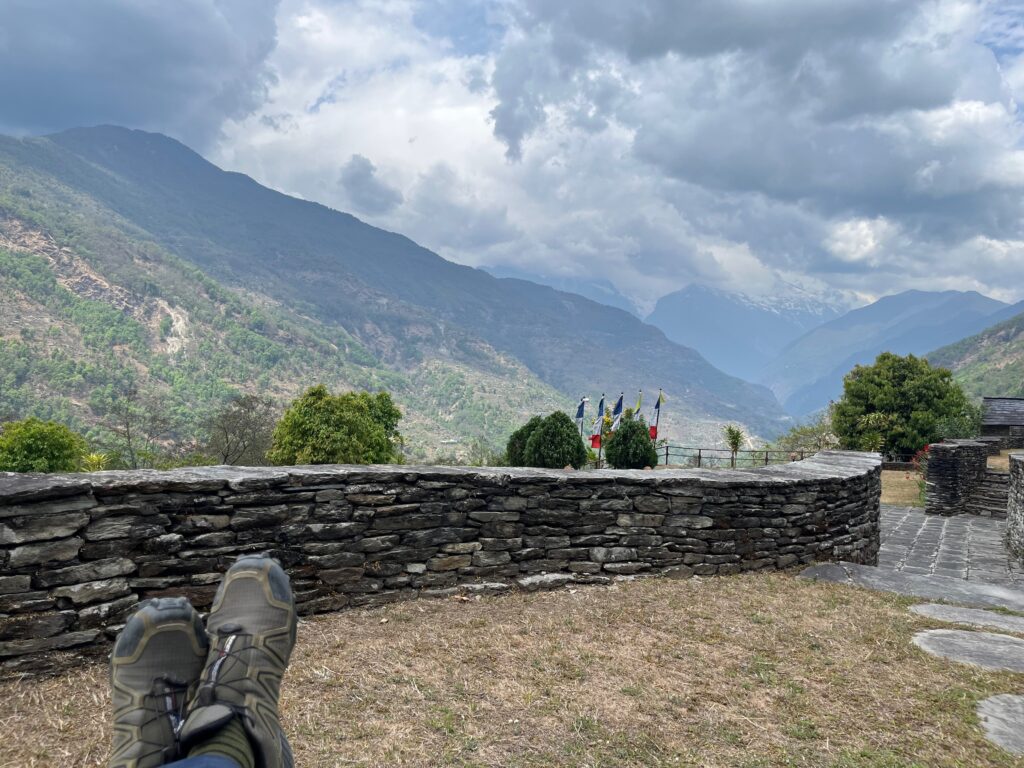
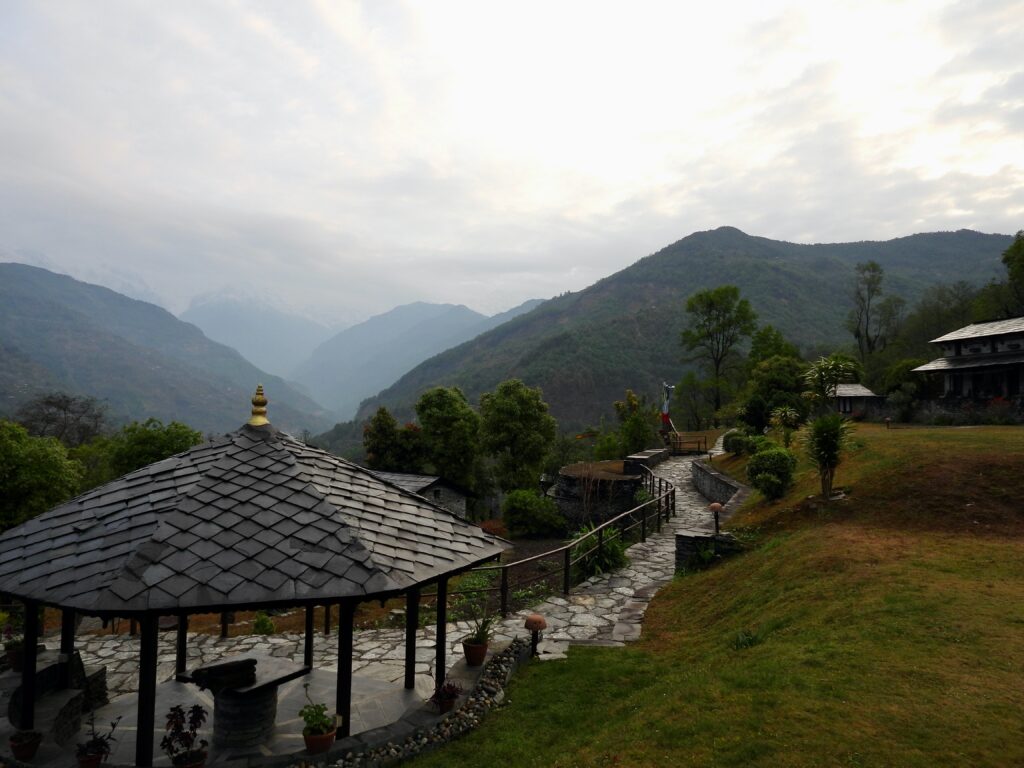
Hotel: Tomijong “Mala” Lodge: Situated among rice terraces in the Modi valley, this mountain lodge is housed within traditional-style stone buildings set among tranquil gardens beneath the looming peak of Machapuchare, Fishtail Mountain.
April 14 – Tomijong to Kande/Pokhara
Today we embarked on the longest hike of the trip: 8 miles. We followed the trail from Tomijong south along the slopes, passing through dense rhododendrons and bamboo groves. After a couple of hours of hiking, we stopped for lunch at the See Lodge and Restaurant, a popular wayside rest for trekkers embarking on the popular Annapurna Circuit. After lunch, we gradually ascended to Australian Camp, poised at 6,500 feet and affording panoramic views of the Annapurna peaks. We then descended via hundreds of stone steps to Kande, emerging from thick forests into meadows and terraced rice fields where local farmers tend to their crops. We met our bus in Kande and were transported to our home for the next two nights: Tiger Mountain Lodge.
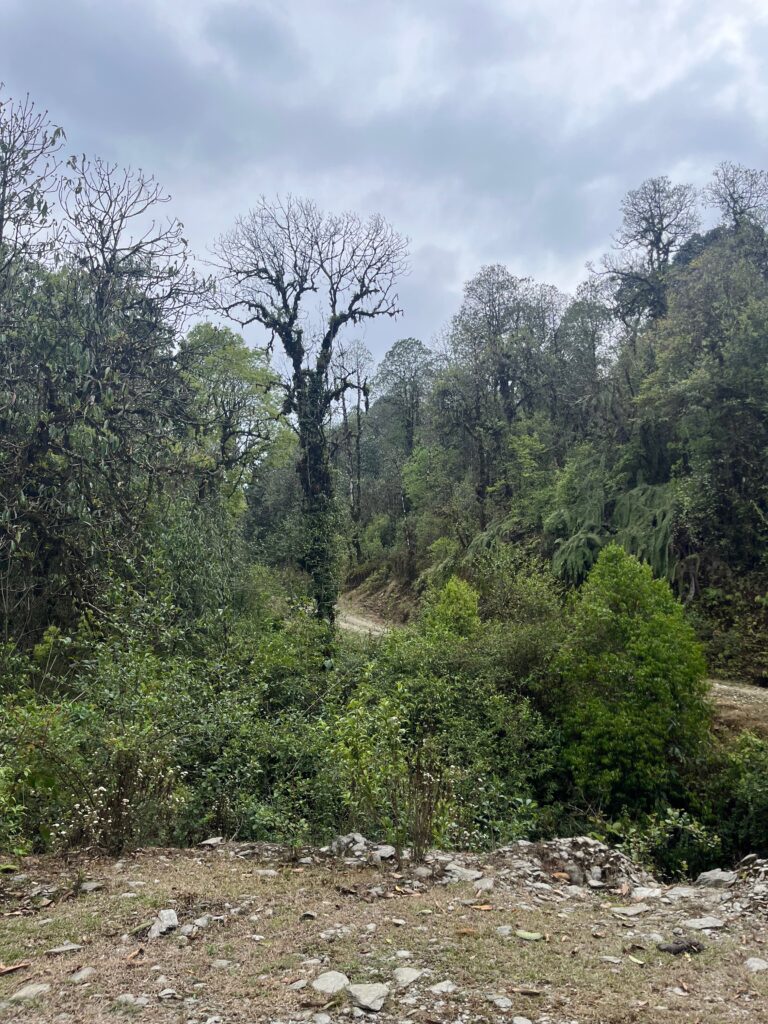
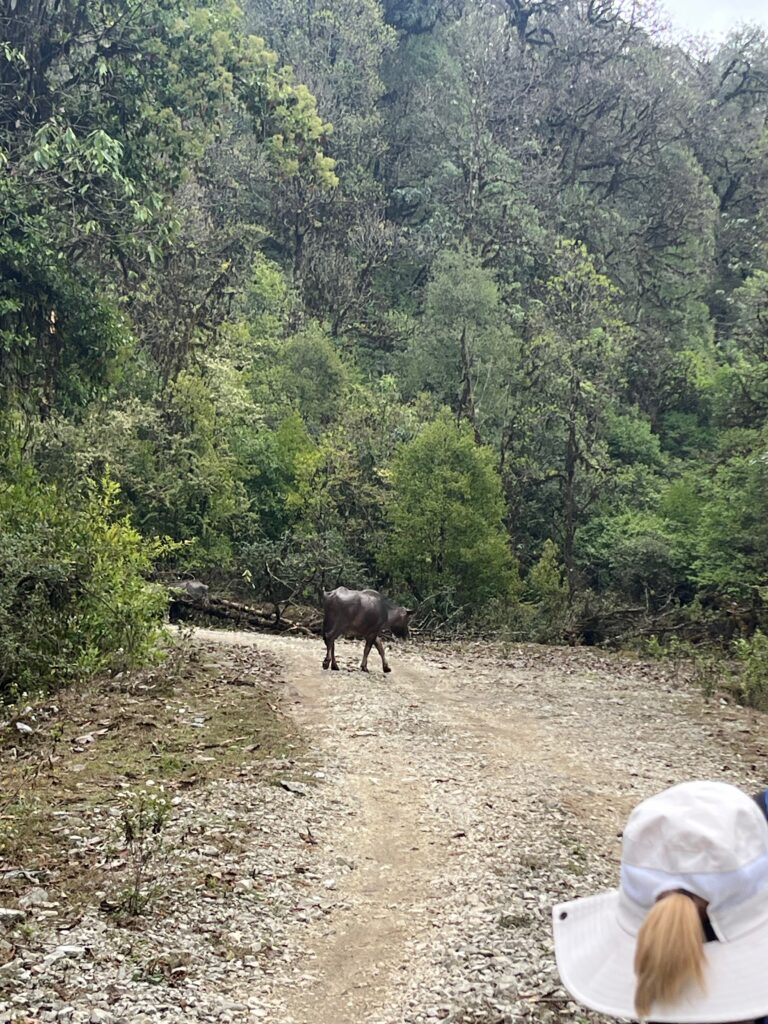
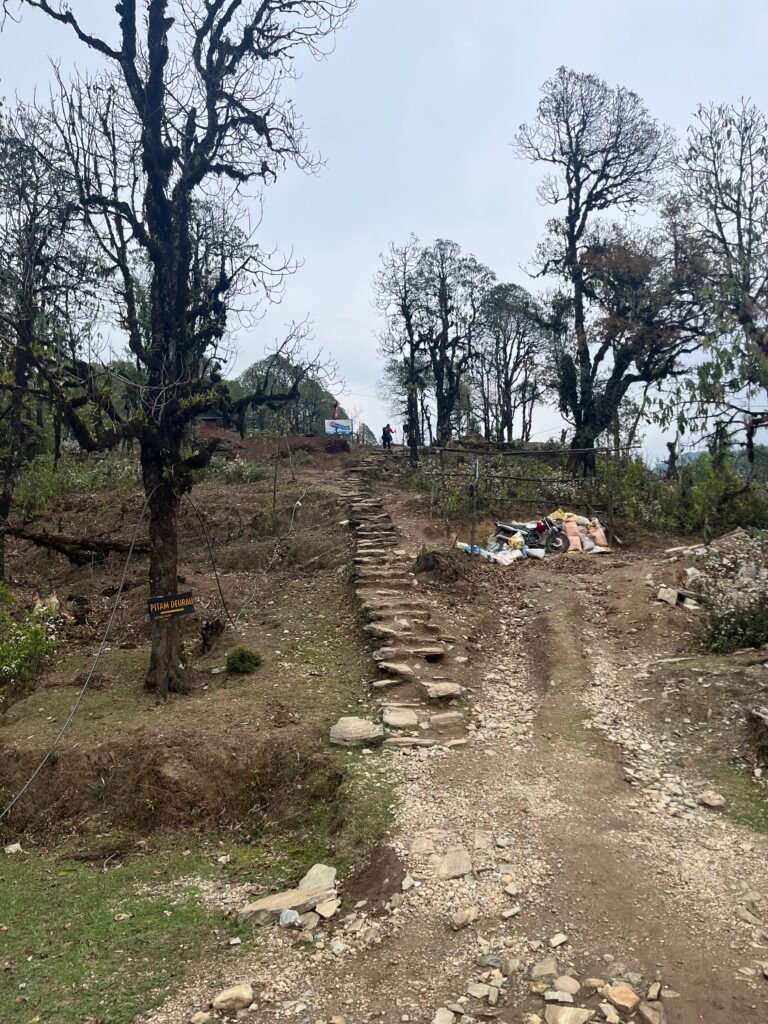
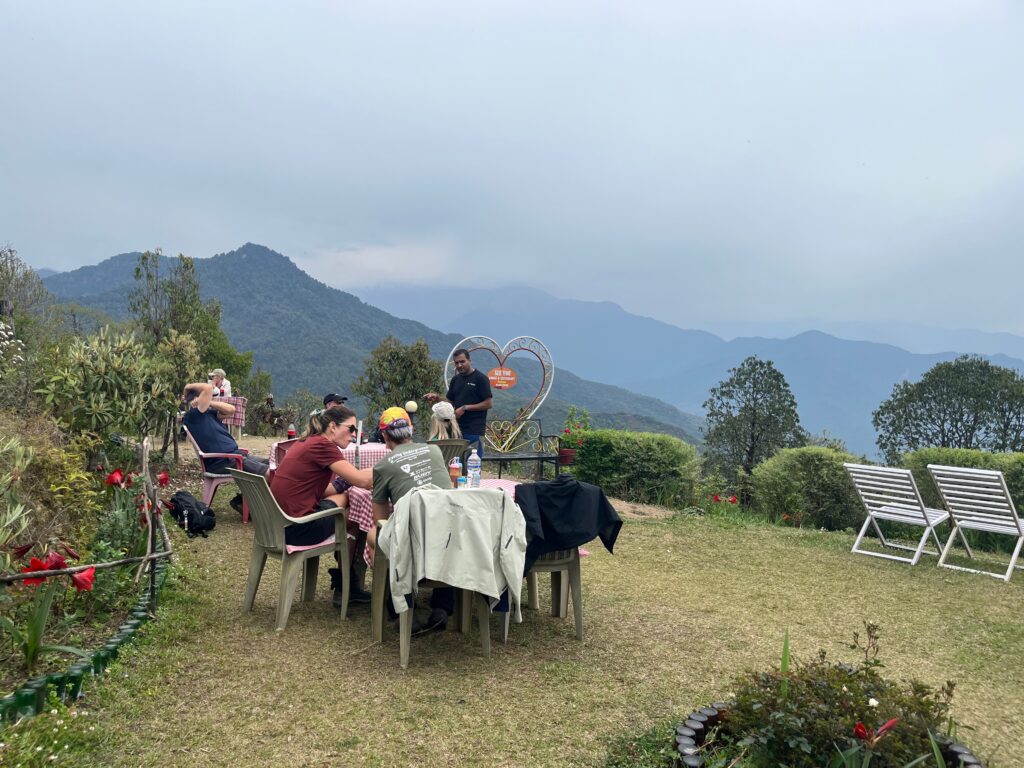
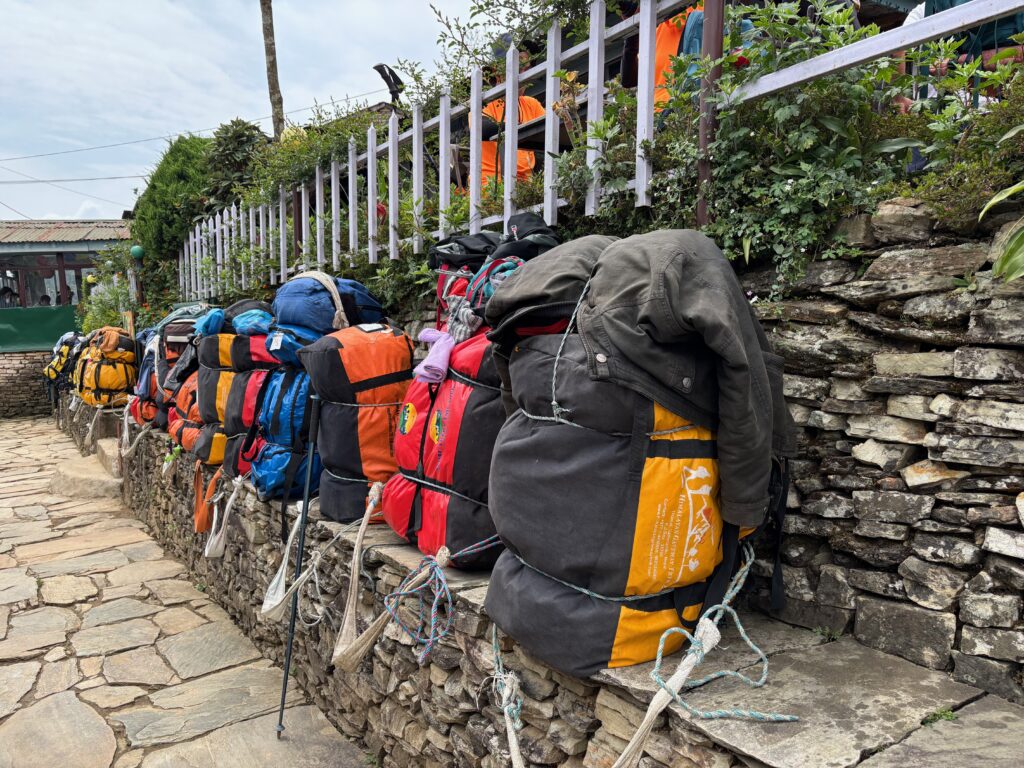
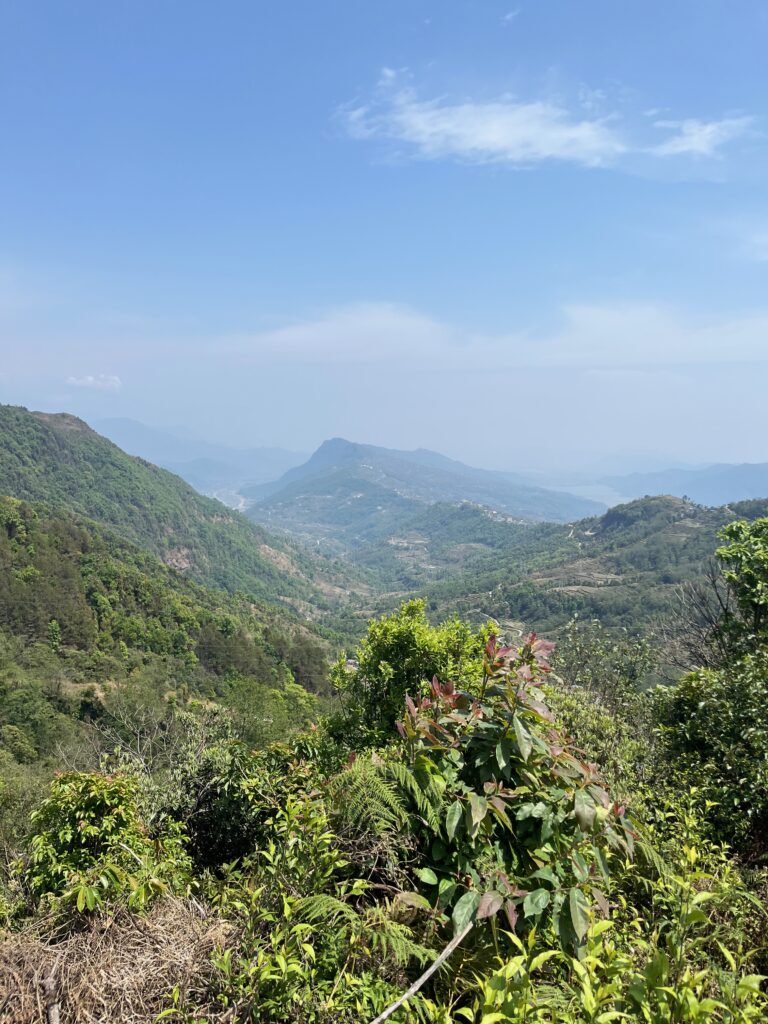
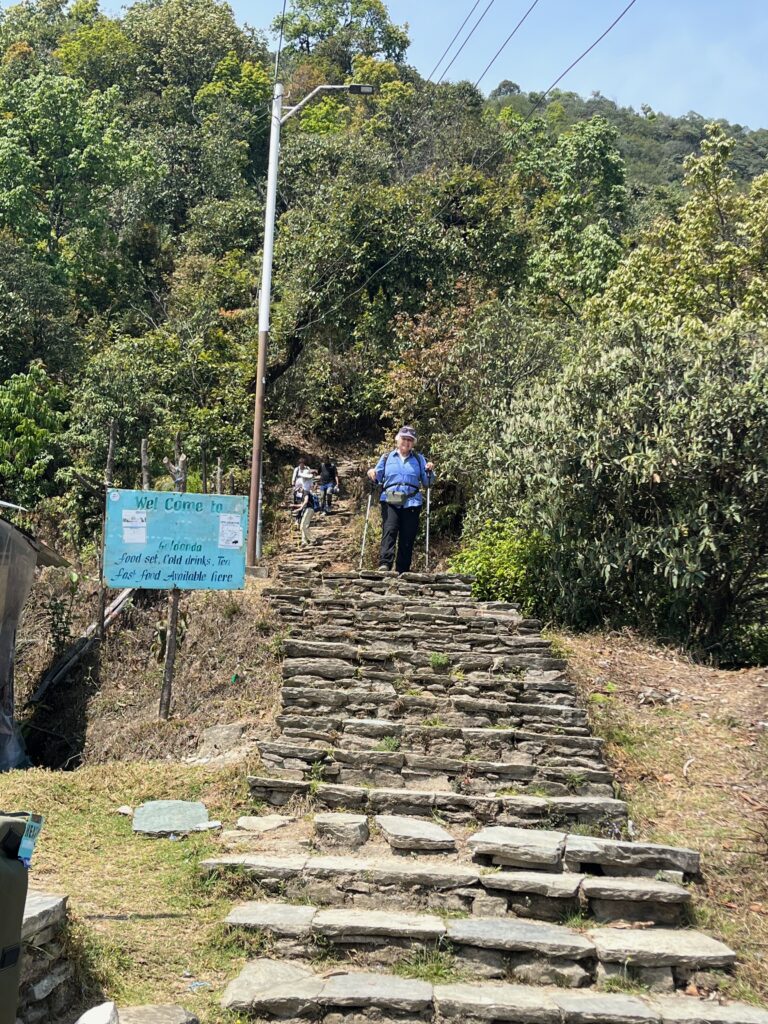
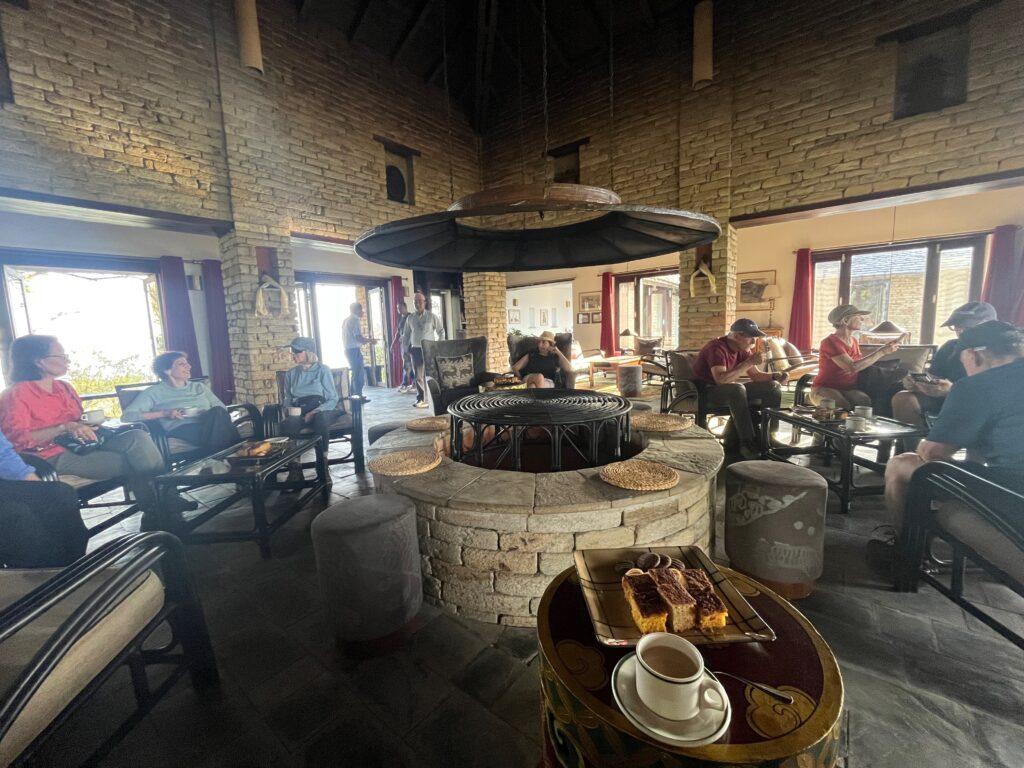
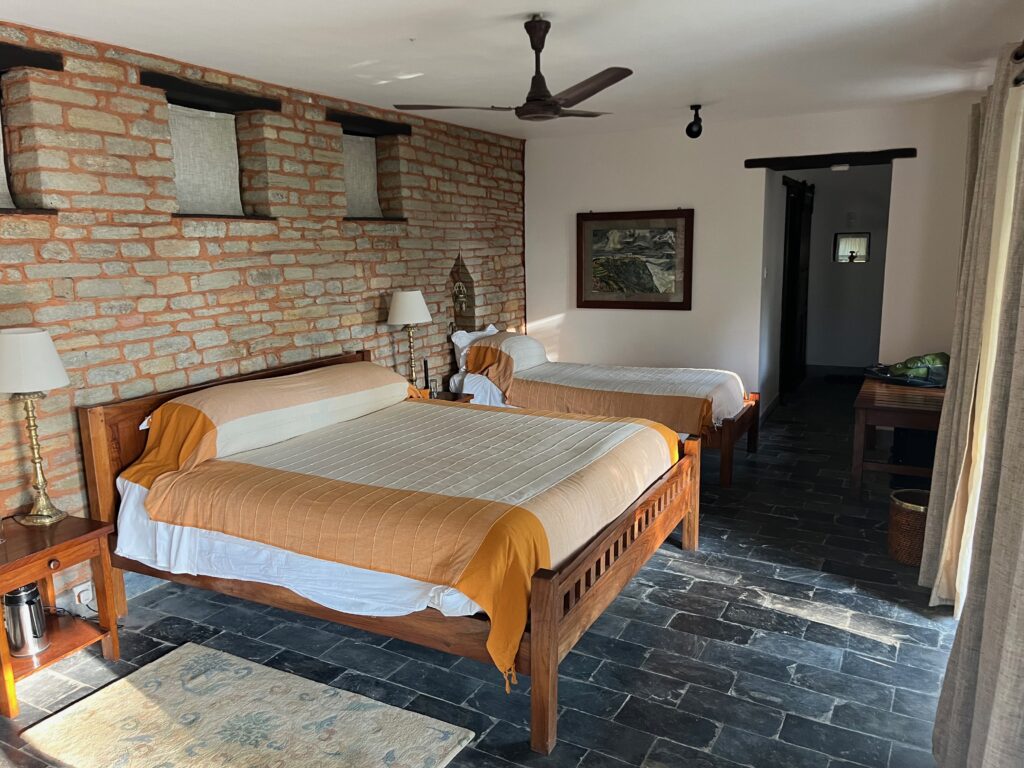
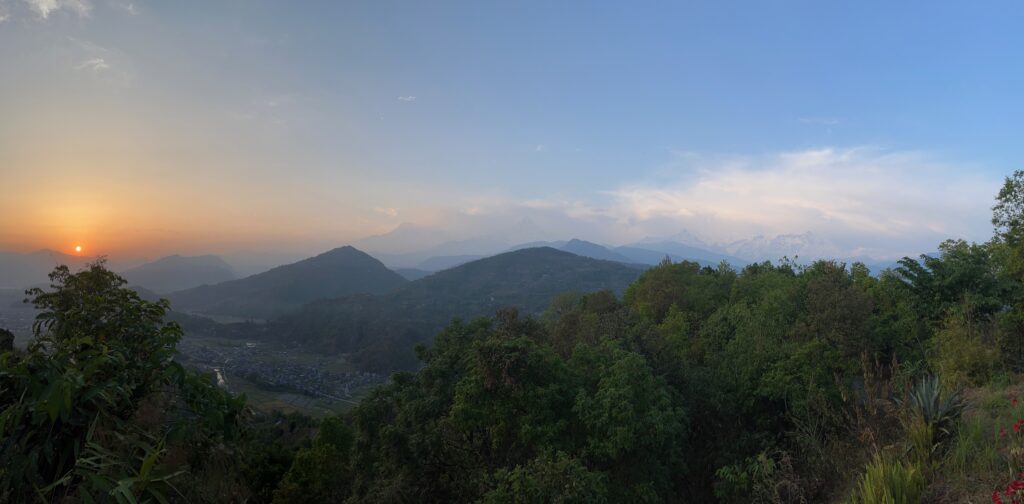
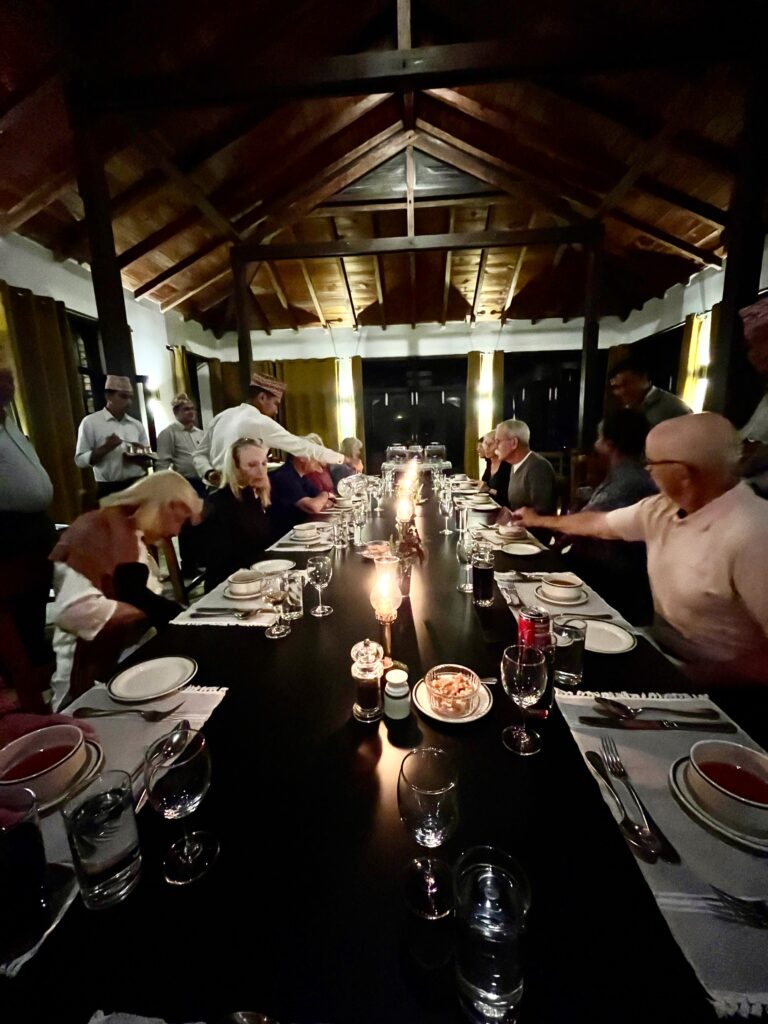
Hotel: Tiger Mountain Lodge: Perched 1,000 feet above the Pokhara Valley with a spectacular Himalayan backdrop, Tiger Mountain Pokhara Lodge was opened by the legendary Sir Edmund Hillary in 1998. Tiger Mountain Lodge is very popular and requires reservations nearly a year in advance. Guest rooms are set within clustered cottages to resemble a Nepali village, and each features modern conveniences and a private veranda. The central lodge features a bar and dining room that serves three-course meals using local and organic ingredients when possible. The lodge is beautiful, is set in a stunning location, and staffed by a highly attentive crew (mostly men). The central lodge also provides a terrace with beautiful views of the Annapurna Range and Pokhara. My cottage was 425 steps from the main lodge, and approximately 200 steps from the outdoor pool. I did take advantage of the pool during the day, enjoying a wonderful conversation with a separate group of travelers and wonderful view of the mountains.
April 15 – Gurung Village
Today, three members of our group hiked along the ridgeline east from the lodge, passing through the village of Kaliksthan on the way to Thuloswara, a community of indigenous Gurung people. The Gurung people are known especially for their service as Gurkha soldiers in the British and Indian armies. While we did not get to meet any retired Gurkha soldiers (they were all in Pokhara for the day), we did get to stop at a local house for some Sprite and the opportunity to cool off. We also had the opportunity to chat with the locals and learn about their way of life. Agriculture plays a significant role in the lives of the Gurung people, their crops including coffee and rice. Most of the field work is done manually or with the assistance of yaks, although we did watch one group of farmers using a roto-tiller to work the ground in a nearby field. After spending time in the village, we walked down hundreds of stone steps to the bus which took us back to our lodge.
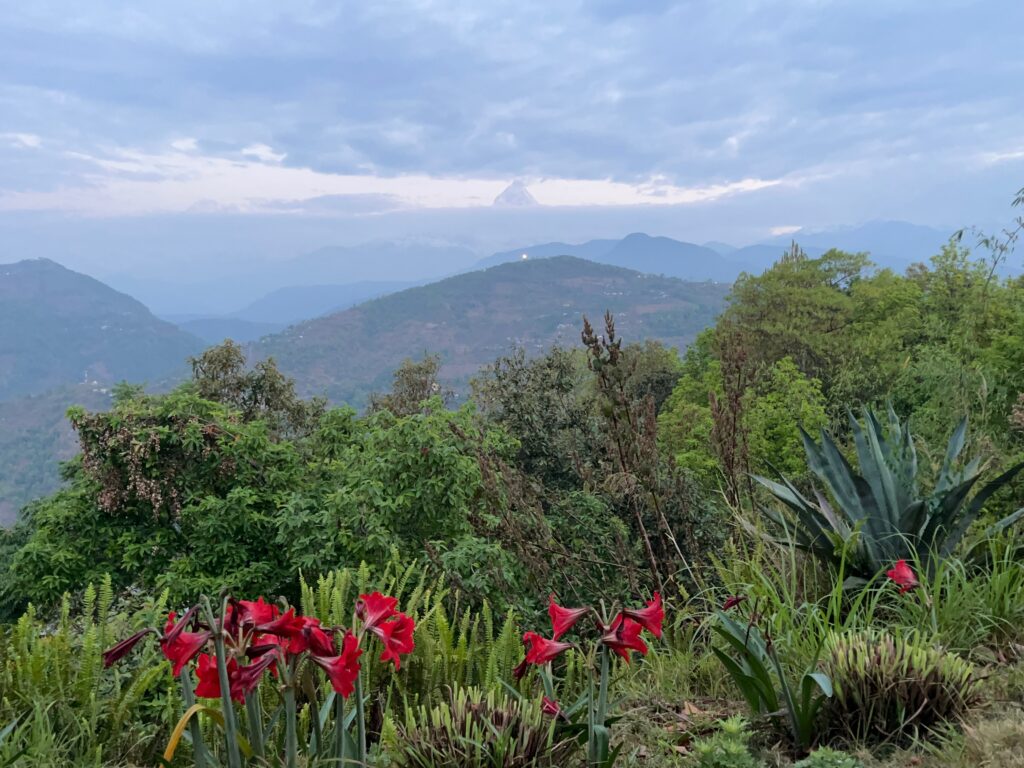

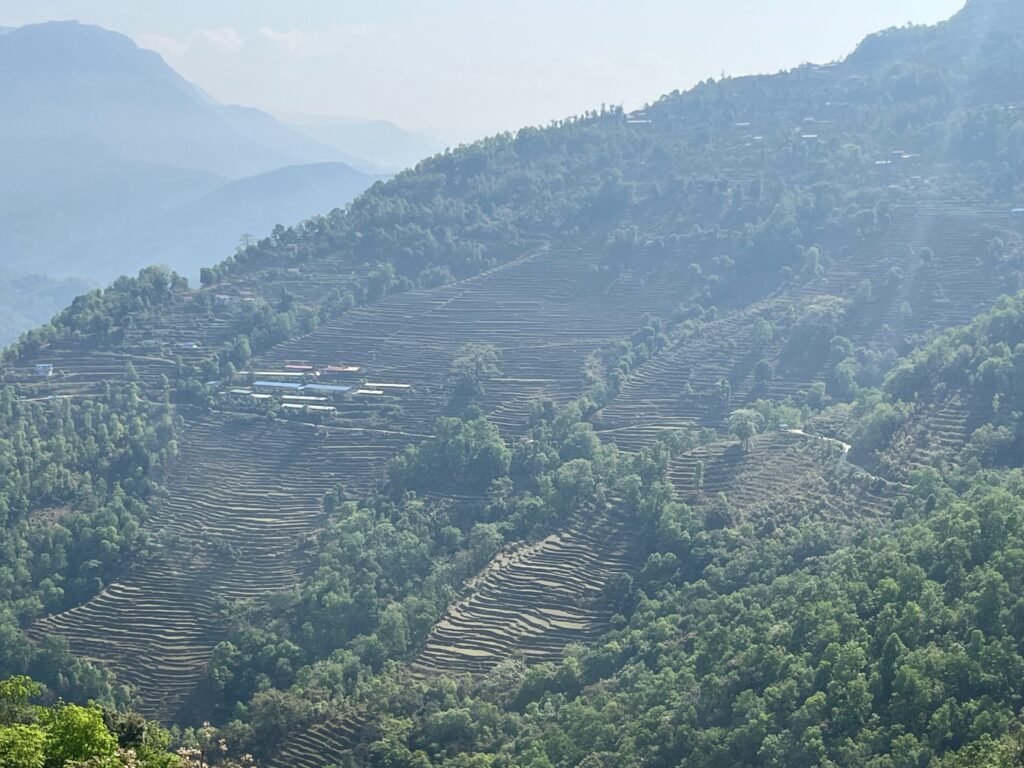
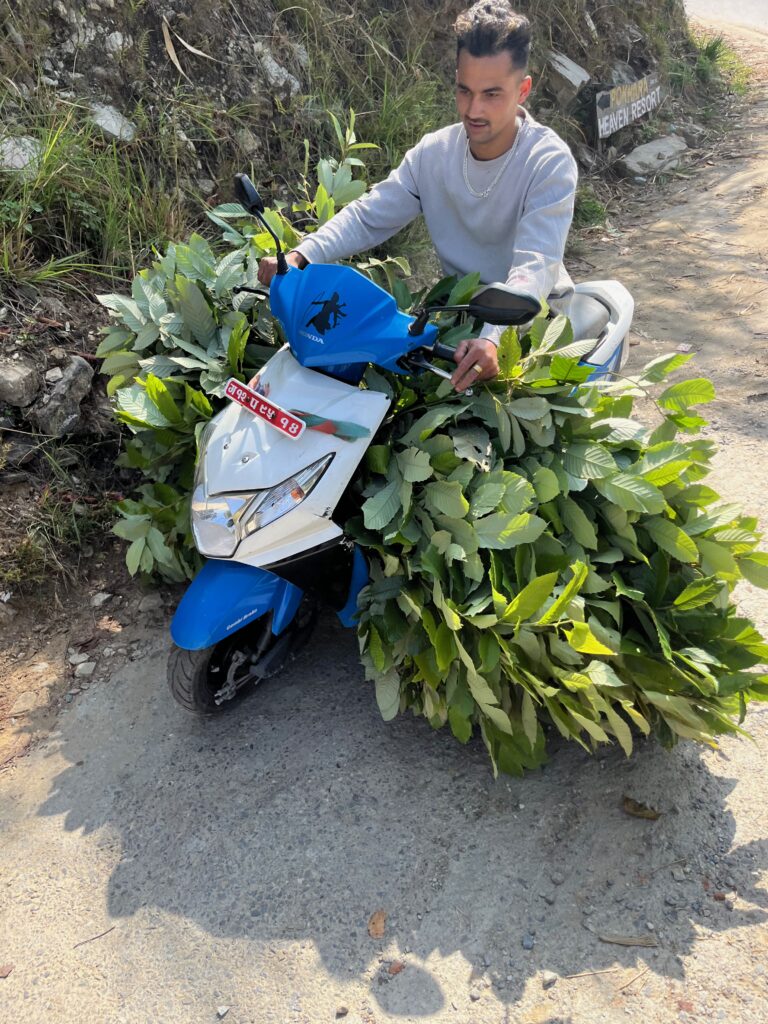
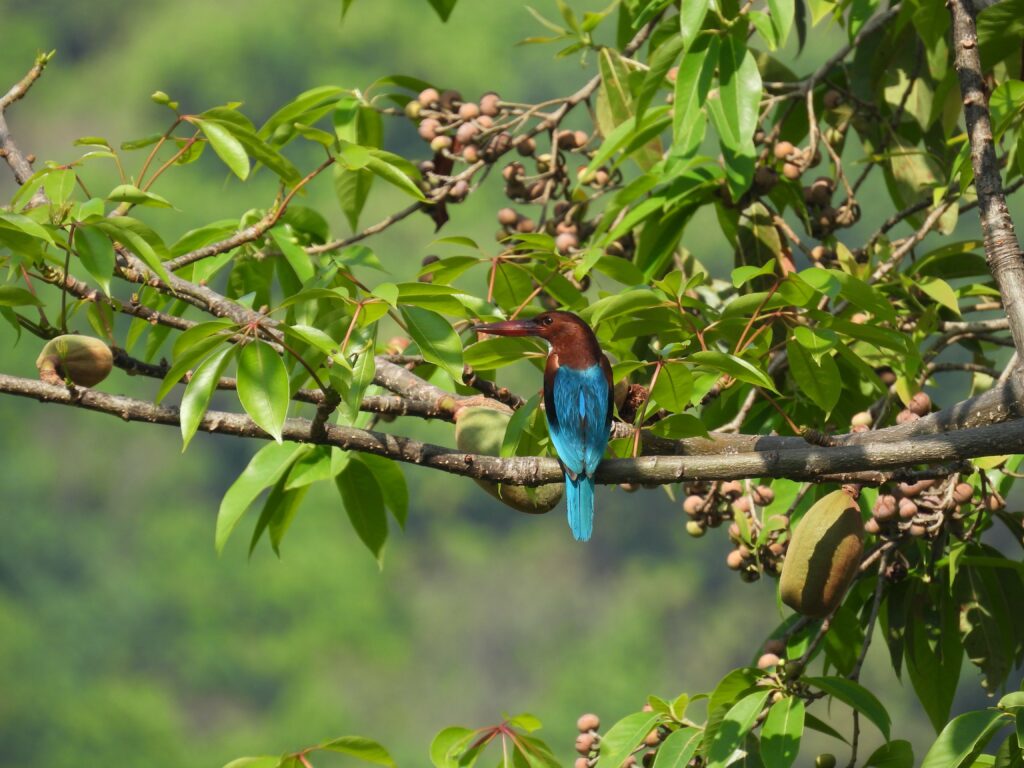
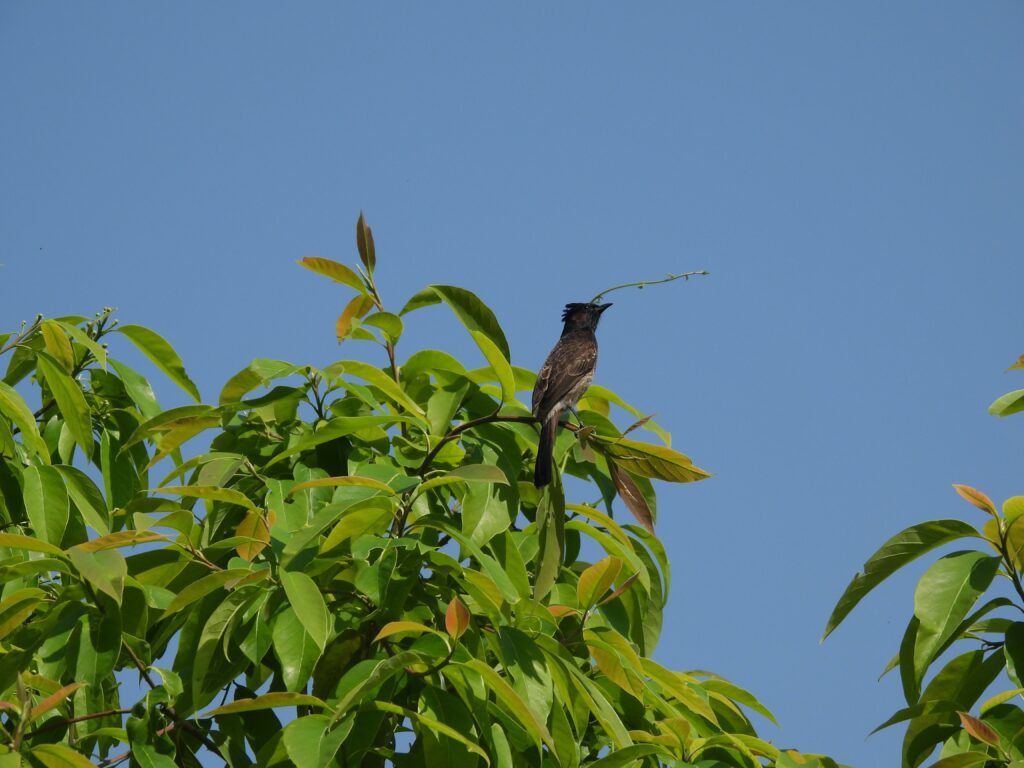
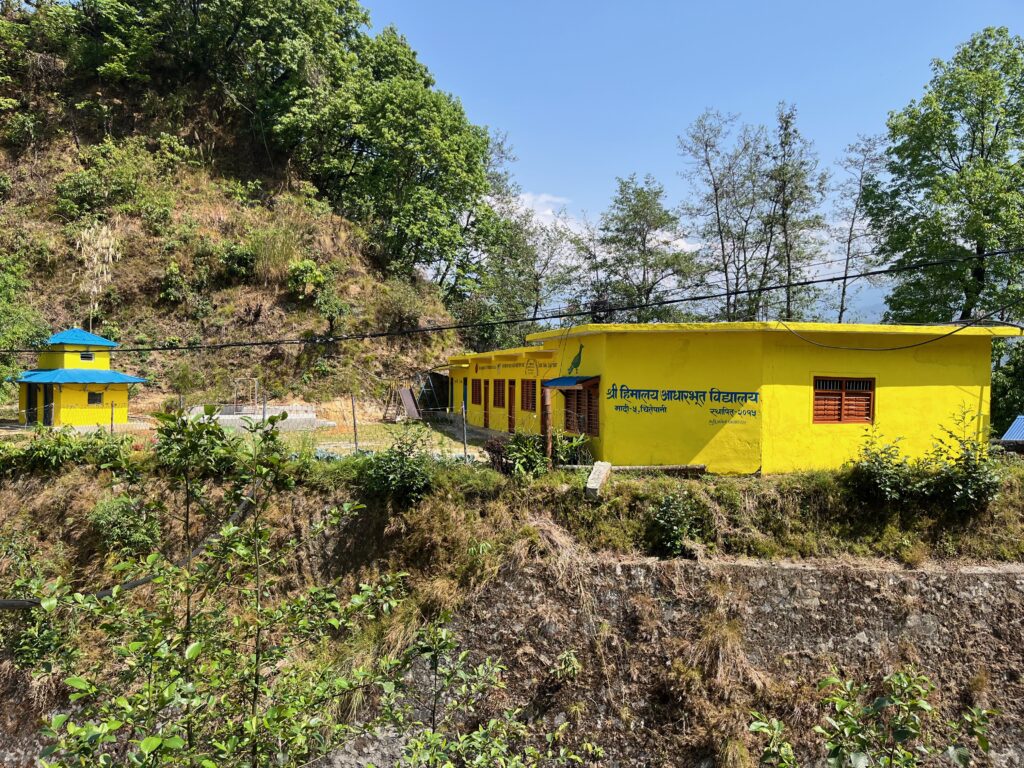
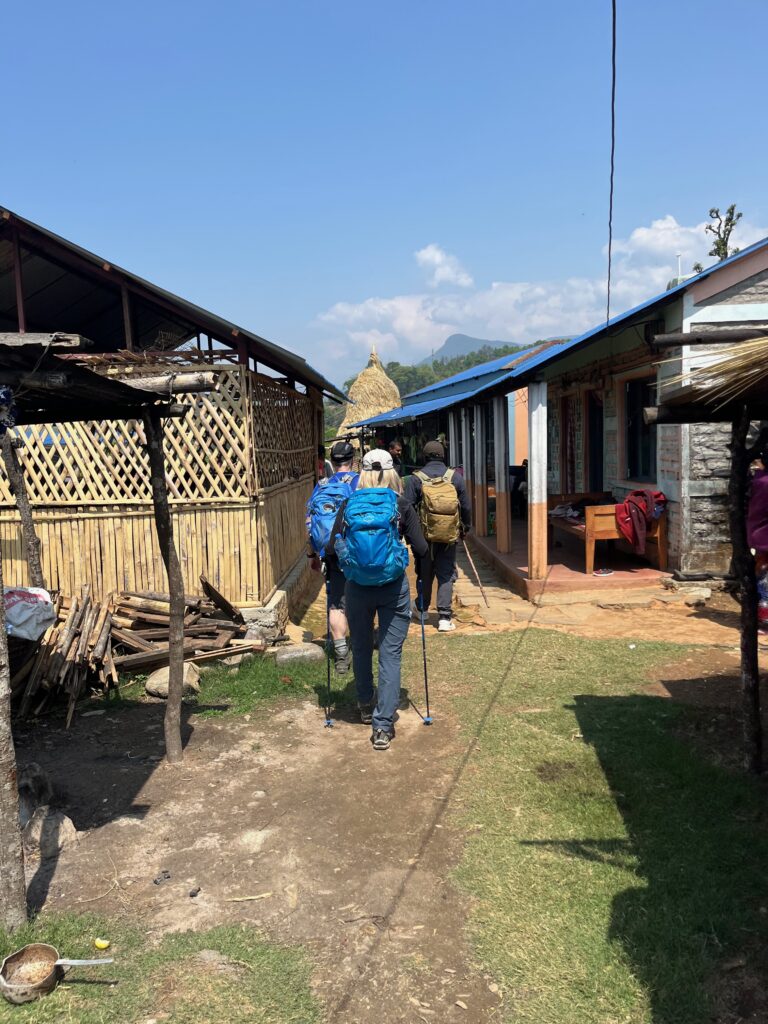
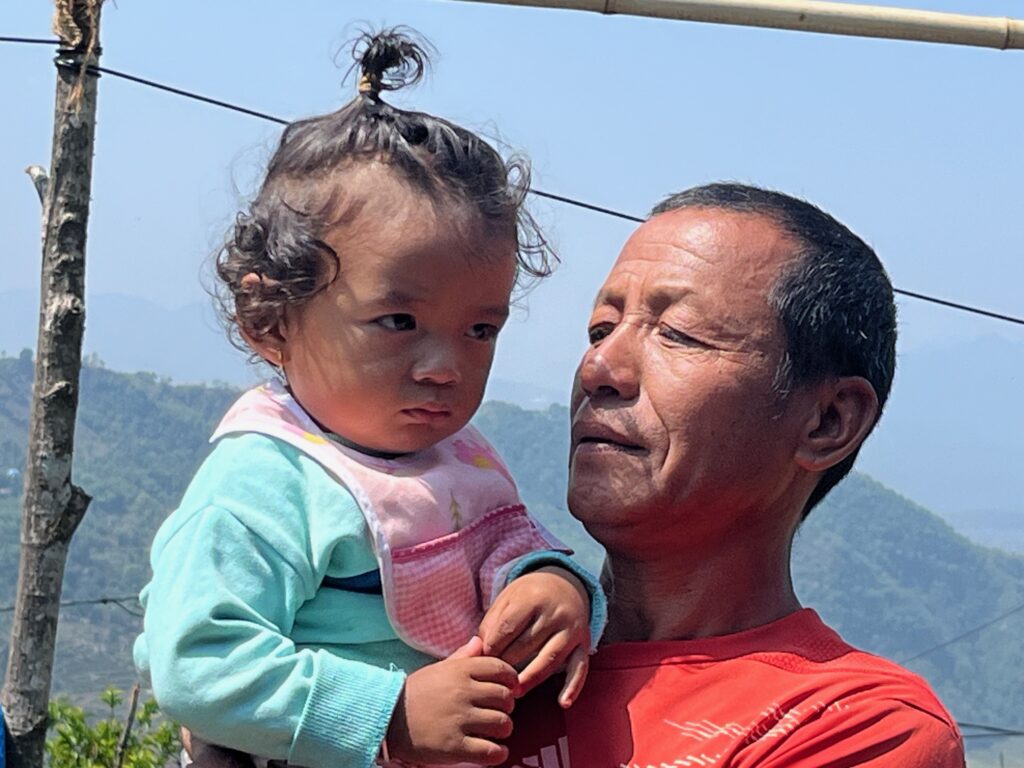
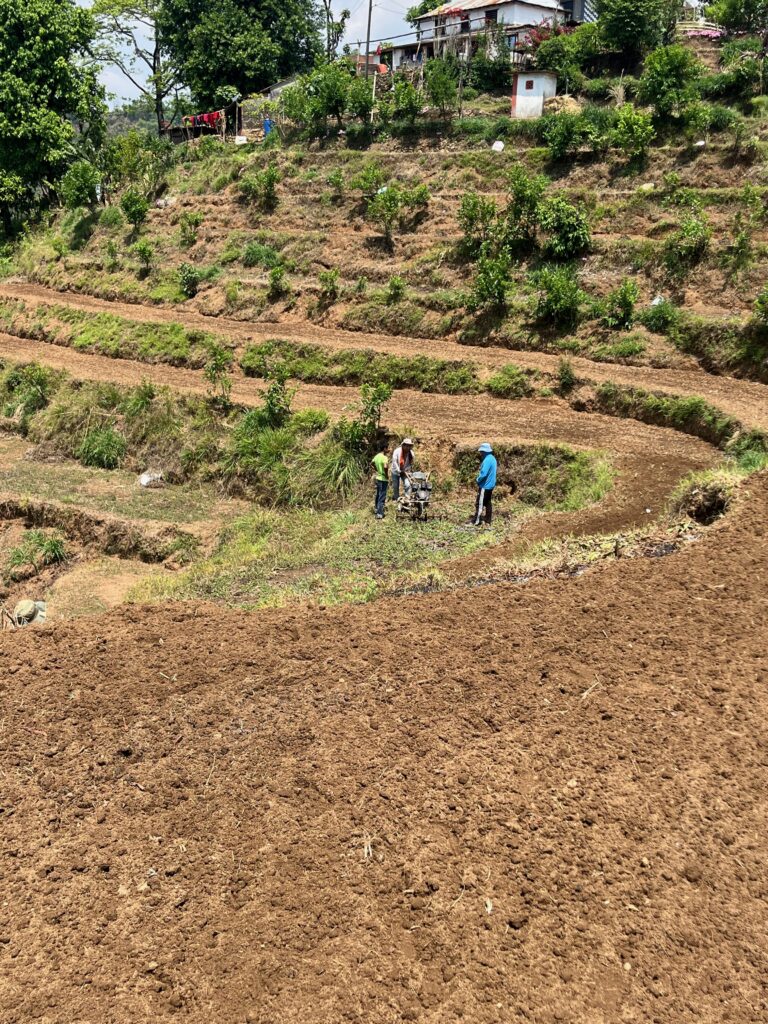
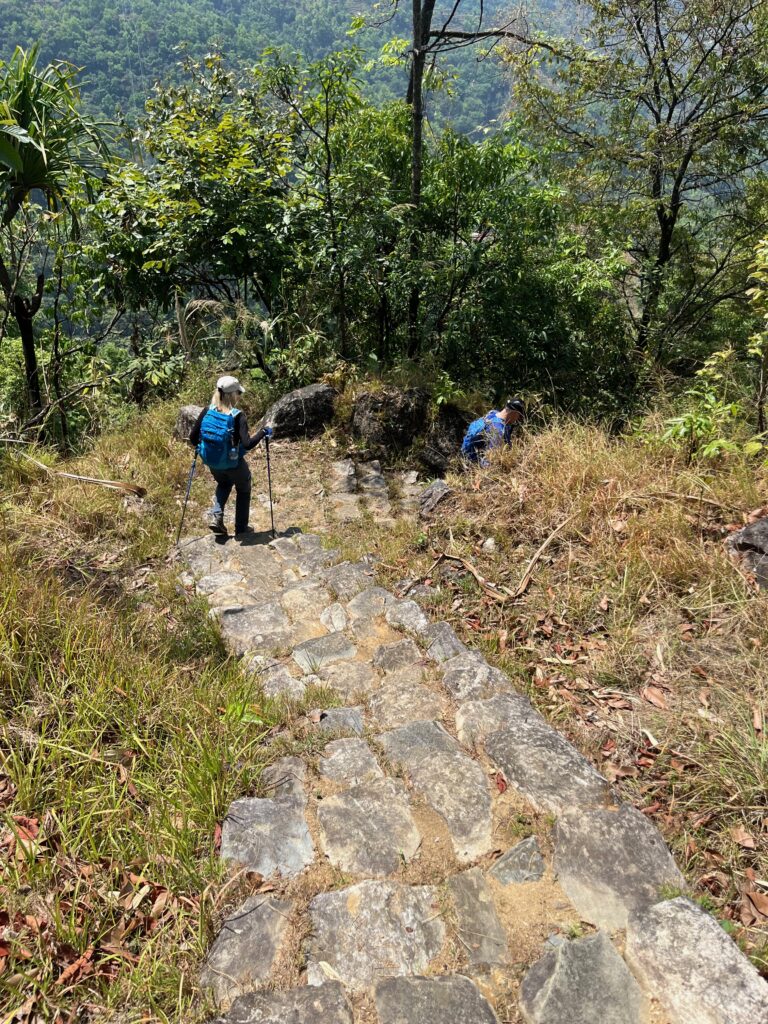
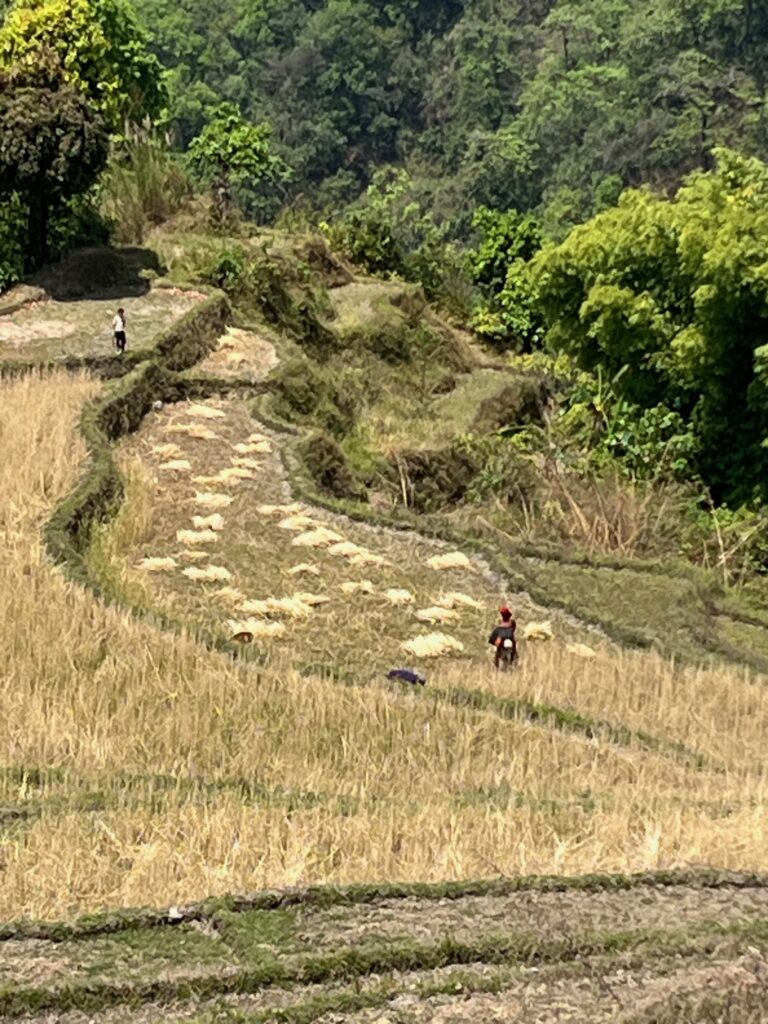
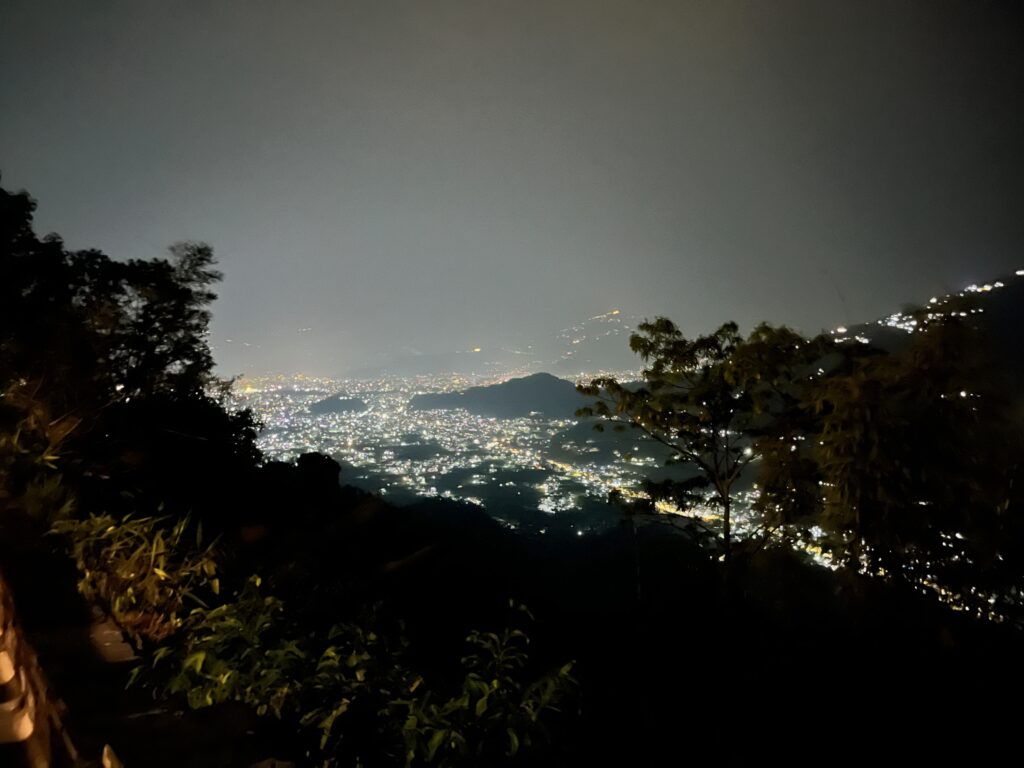
Hotel: Tiger Mountain Lodge
April 16 – Chitwan National Park
After breakfast we headed out of the mountains by bus towards the lush plains of Chitwan, gazing at an ever-changing vista of stunning landscapes and rural life in Nepal. We stopped for lunch along the way at Motel Du Mugling, where we enjoyed grilled cheese sandwiches and french fries. The cafe is perched on bluff overlooking the confluence of the Marsyangdi and Trisuli Rivers.
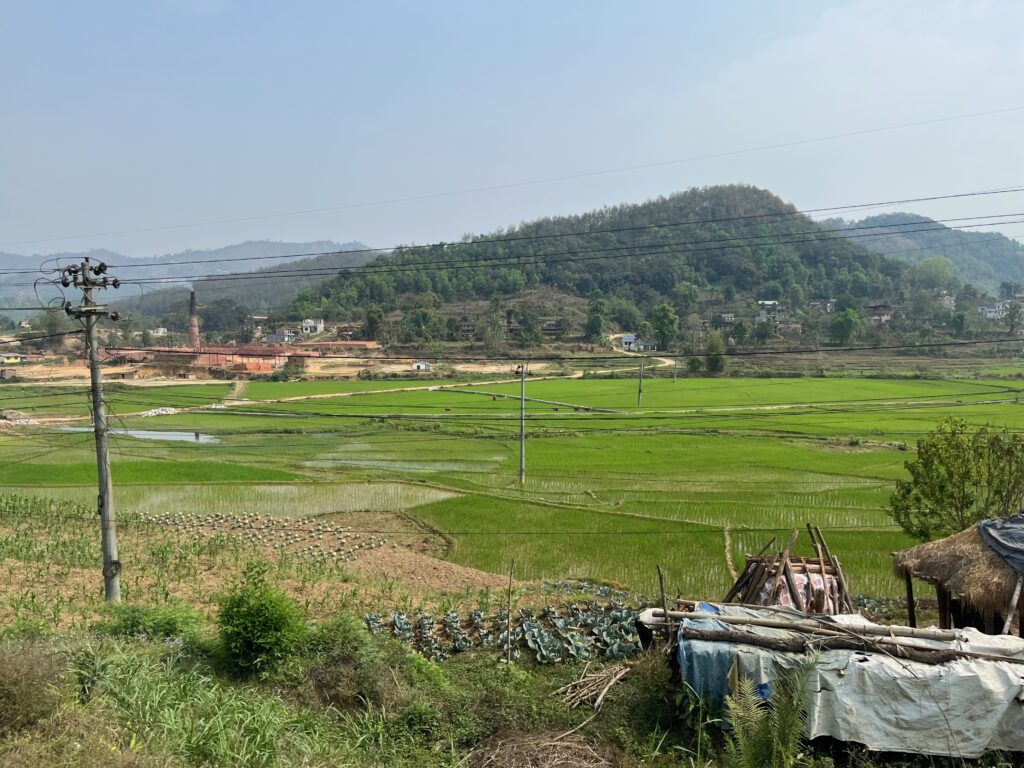
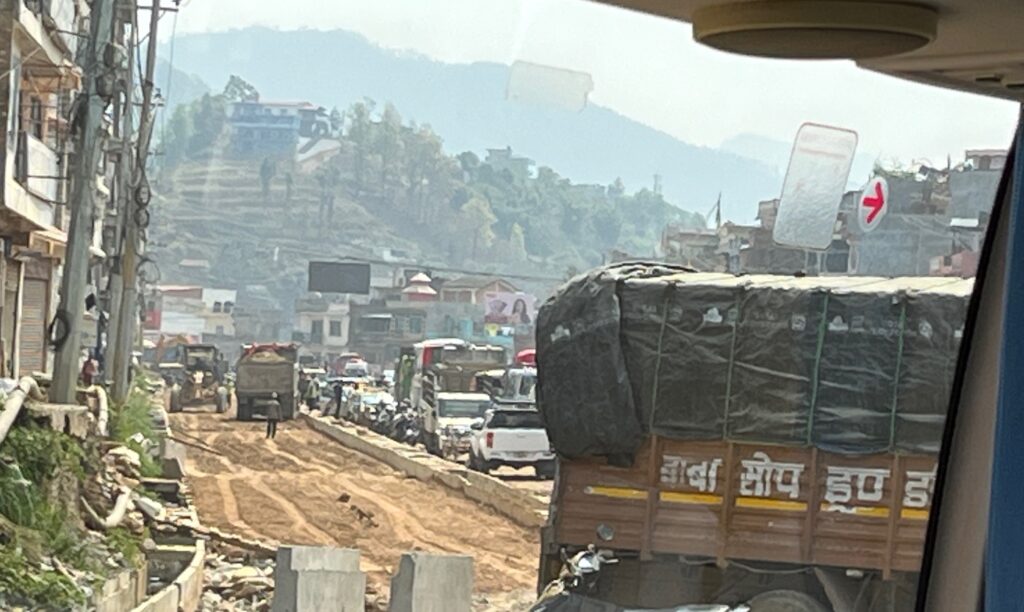
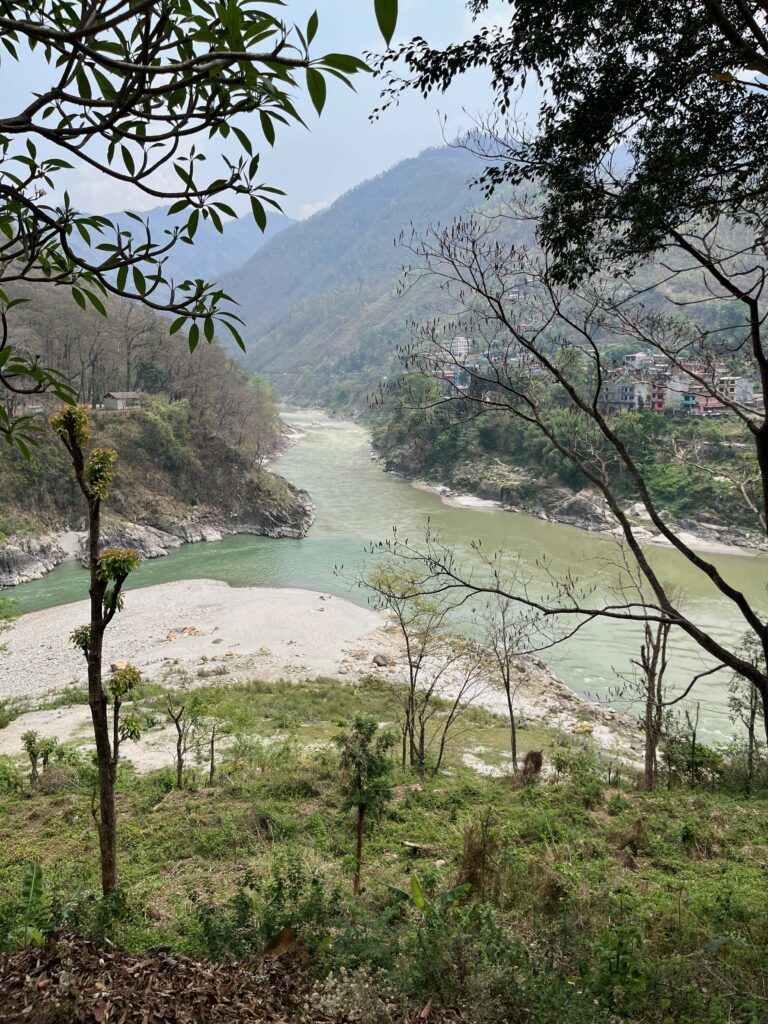
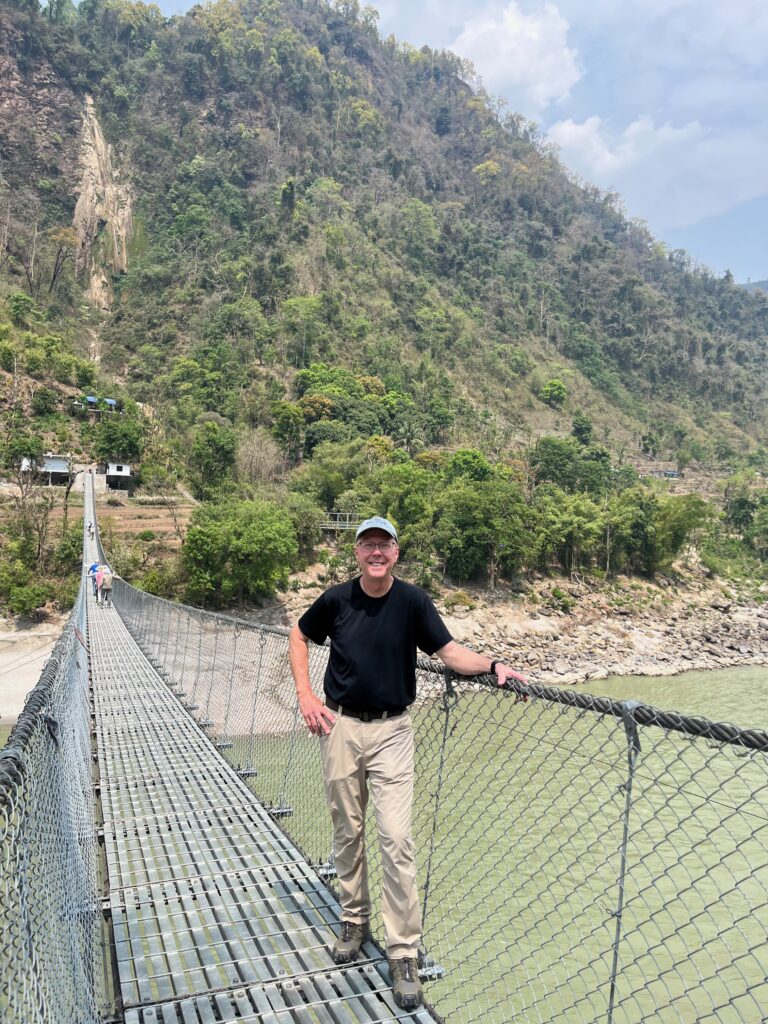
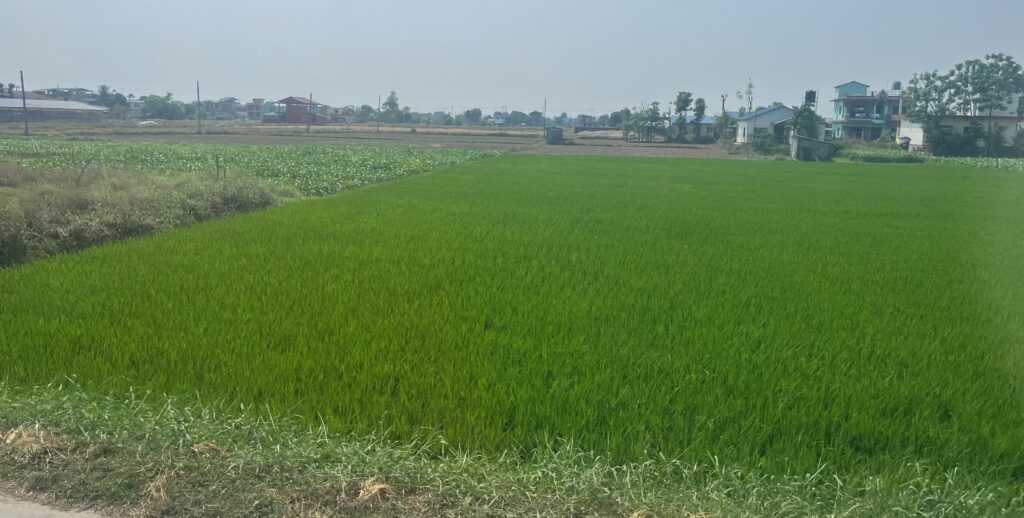
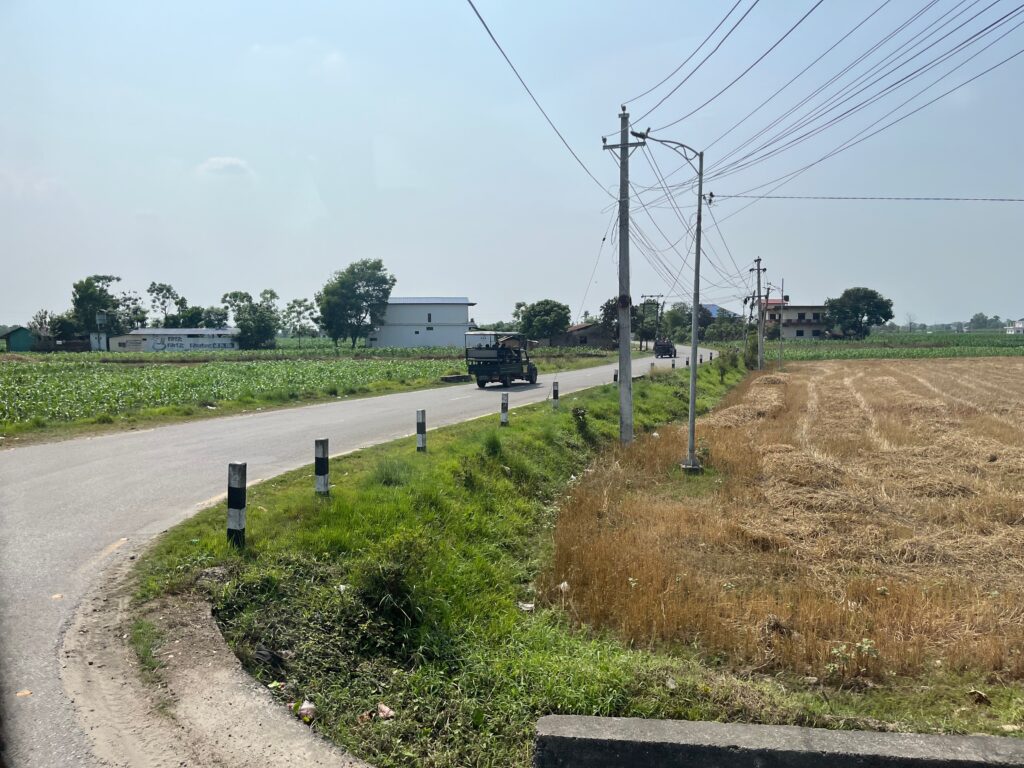
We then returned to the bus and continued our journey to Jagatpur, a gateway to Chitwan National Park. The highway we were traveling on is the main road to India and, as a result, has heavy traffic, particularly tractor-trailer rigs.
After an opportunity to get settled at our lodge, we embarked on a ~45-minute bike ride that included rocky, paved, and sandy terrain to reach the Rapti River, where we enjoyed a “sundowner” as the sunset. We then biked back to the lodge for the evening. The bike ride was very hot, which made the sundowner beverage taste even better! Our hotel was the Jagatpur Lodge. The lodge was in a beautiful location, had delightful grounds, and a relaxing pool (which I enjoyed 3 times). The buffet meals were good and provided a moderate selection of food choices.
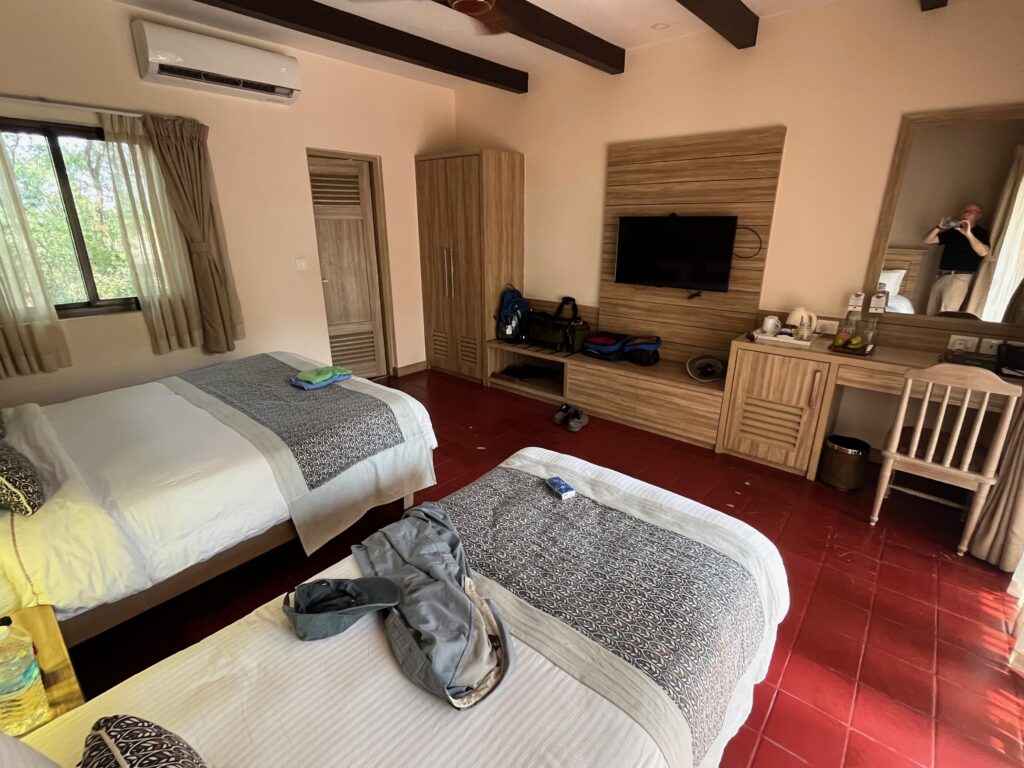
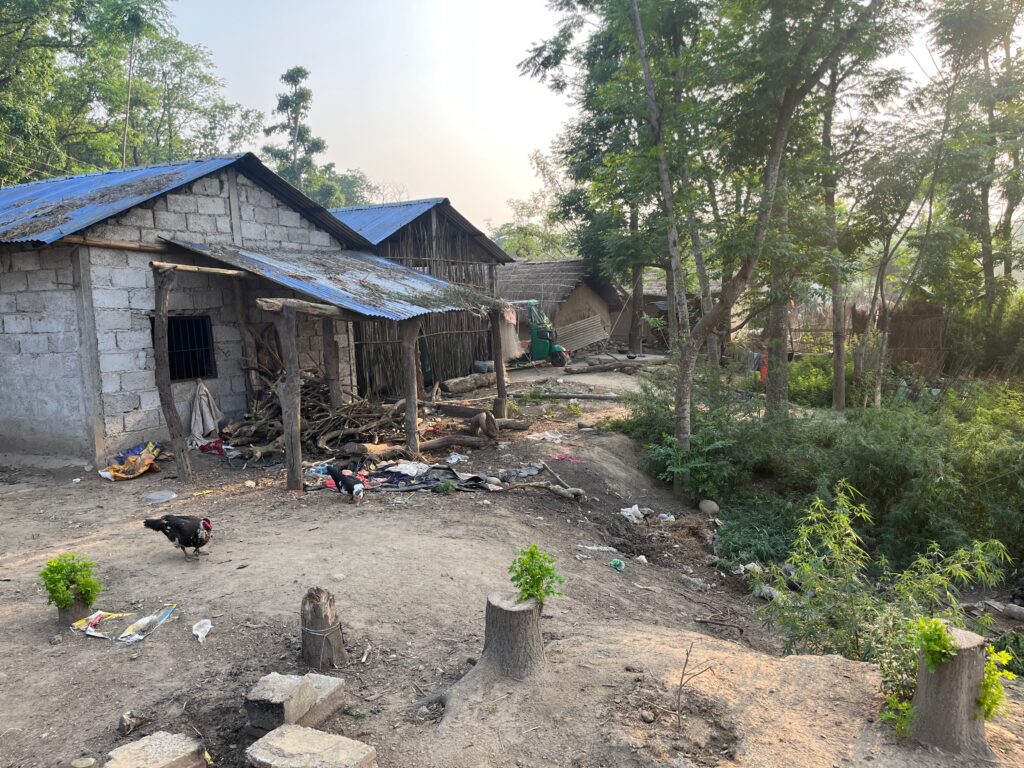
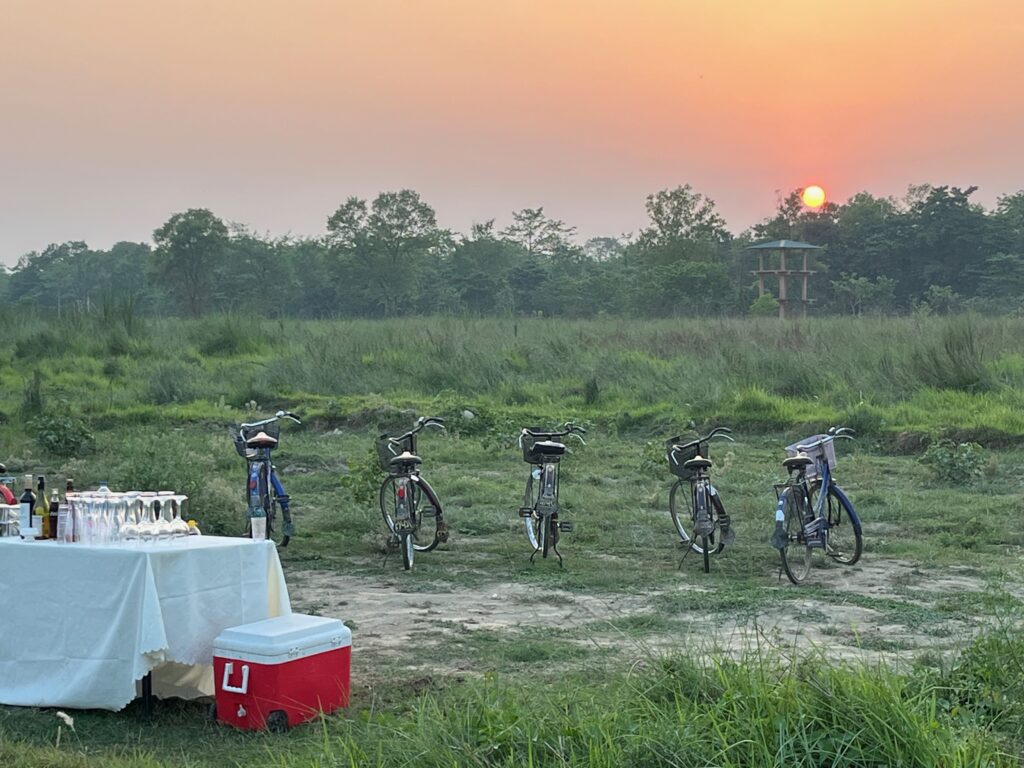
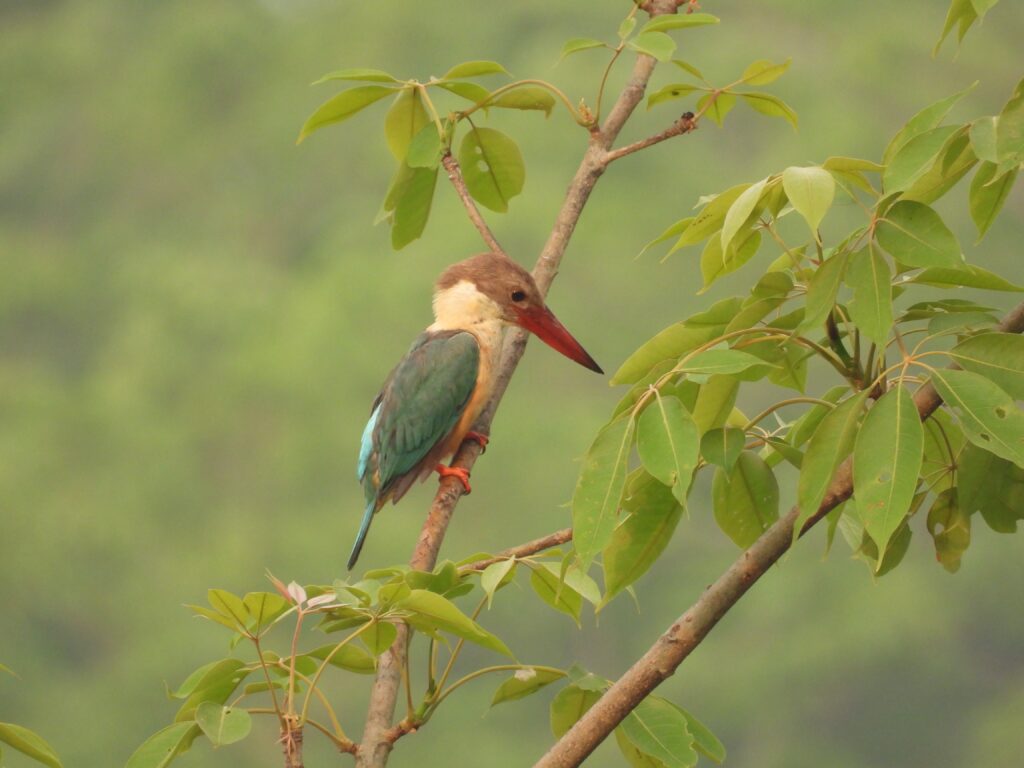
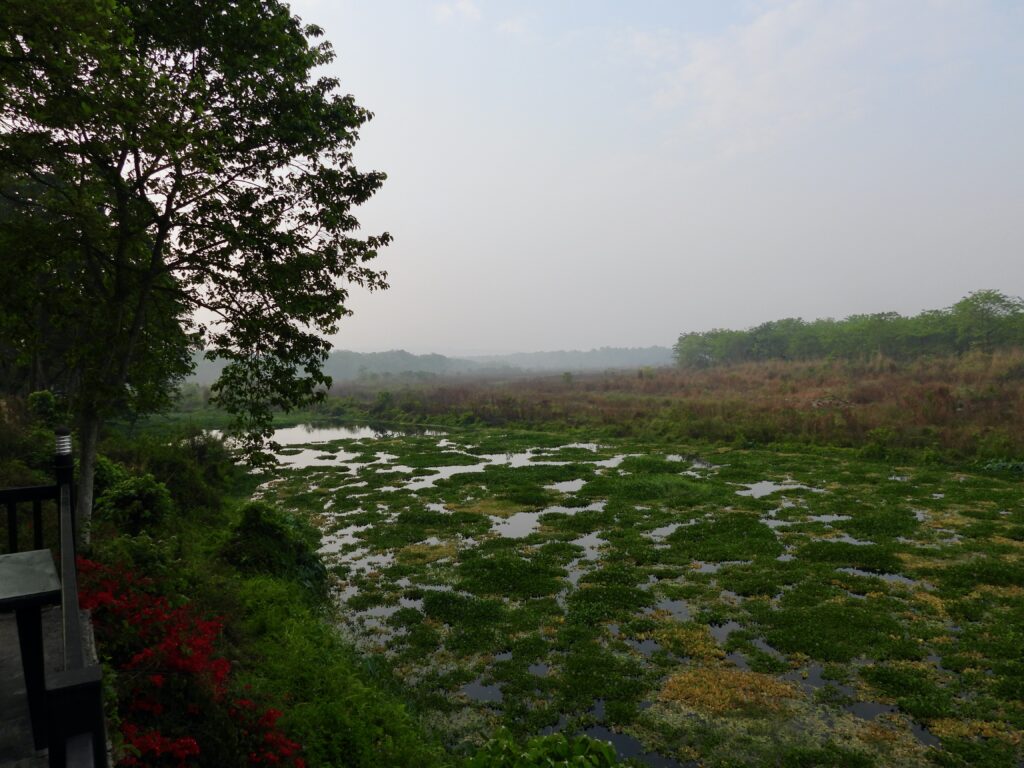
Hotel: Jagatpur Lodge: Set by the Rapti River, on the edge of the World Heritage-listed Chitwan National Park, the lodge combines the natural beauty of its surroundings with an understated elegance. The lodge is nestled in two acres of woodland and bamboo groves and accommodations include luxurious safari tents and deluxe rooms with balconies or patios. Our group was assigned rooms (i.e., not the tents) because there were not enough tents for everyone. I did, however, have a chance to explore one of the tents and would recommend a tent over the rooms. Unfortunately, the rooms are appointed with average-at-best furniture and come across and cheap, whereas the tents provide a more luxurious feel.
April 17 – Chitwan National Park
In the morning we boarded boats for a drift down the Rapti River, watching for wildlife such as mugger crocodiles, gharial crocodiles, and a variety of birds. While drifting we did observe several crocodiles, a few beautiful birds, and a couple of turtles. After lunch we were joined by a local naturalist on an afternoon safari in Chitwan National Park, a World Heritage site of marshlands and forested hills that harbors unusual flora and fauna, including single-horned asiatic rhinoceros, langurs, rhesus macaques, and some 500 bird species. We saw 10+ rhinoceros, dozens of Peacocks, hundreds of spotted deer, a wild boar, and a large male elephant (named Valentino) among a few other animals. Although we saw none of them, the park is also a refuge of several elusive species, including the Bengal tiger, leopards, and sloth bears. Unlike African safaris, the terrain here is mostly treed, and not an open savannah. As a result, it is sometimes difficult to see the animals through the vegetation.
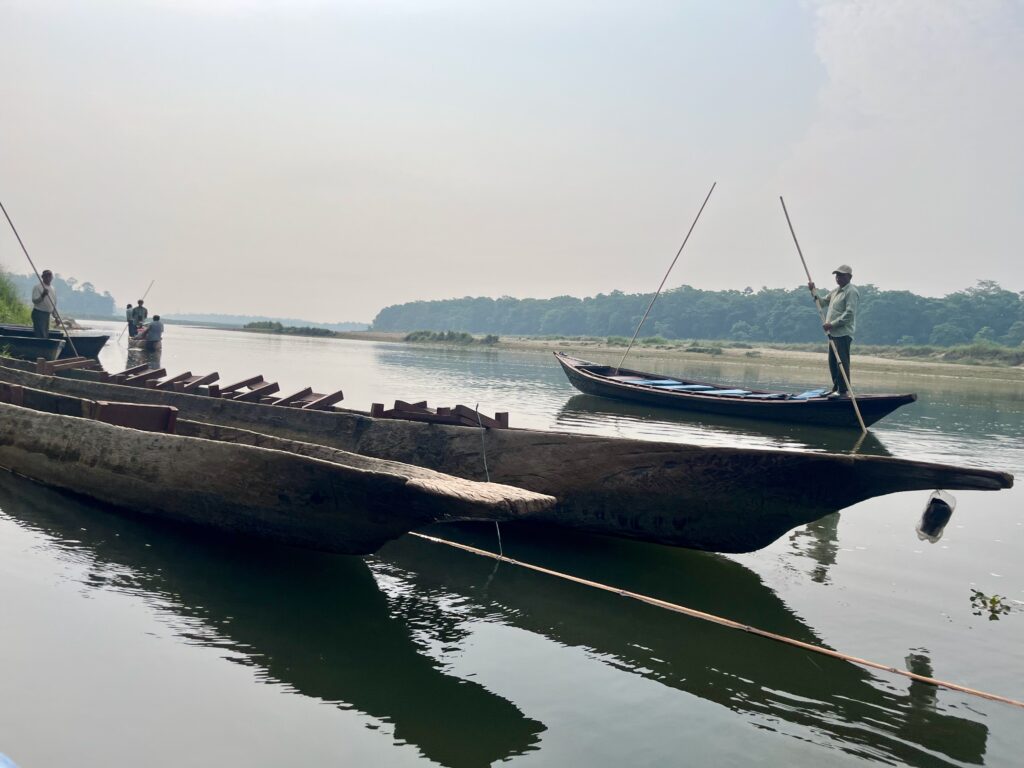
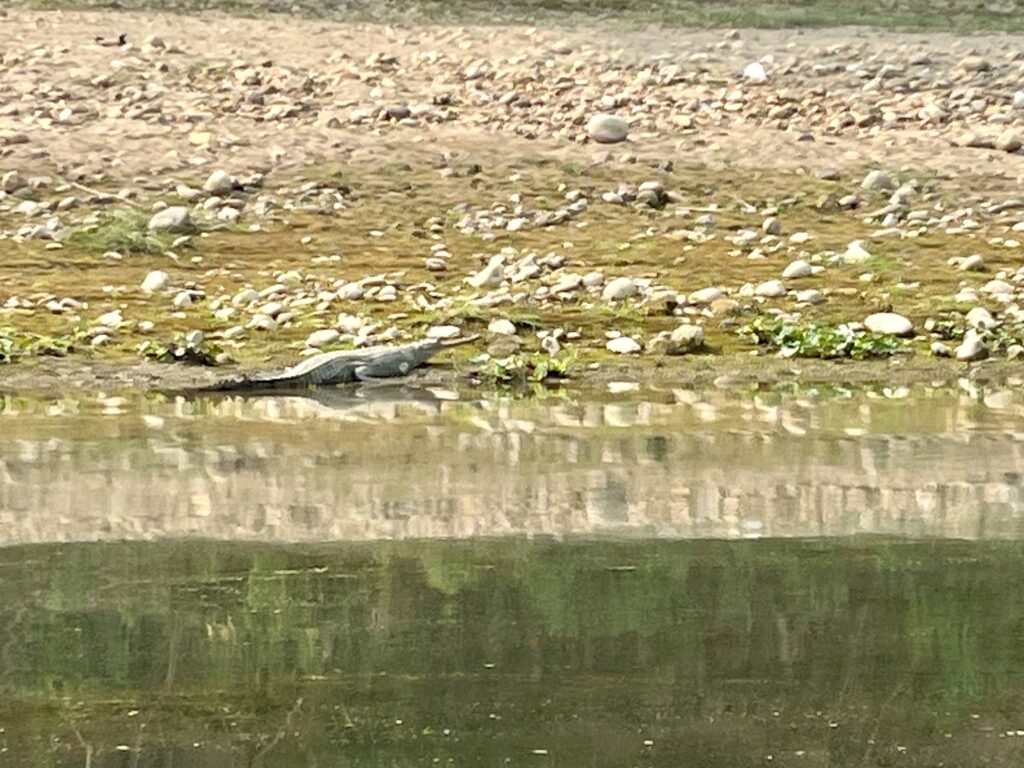
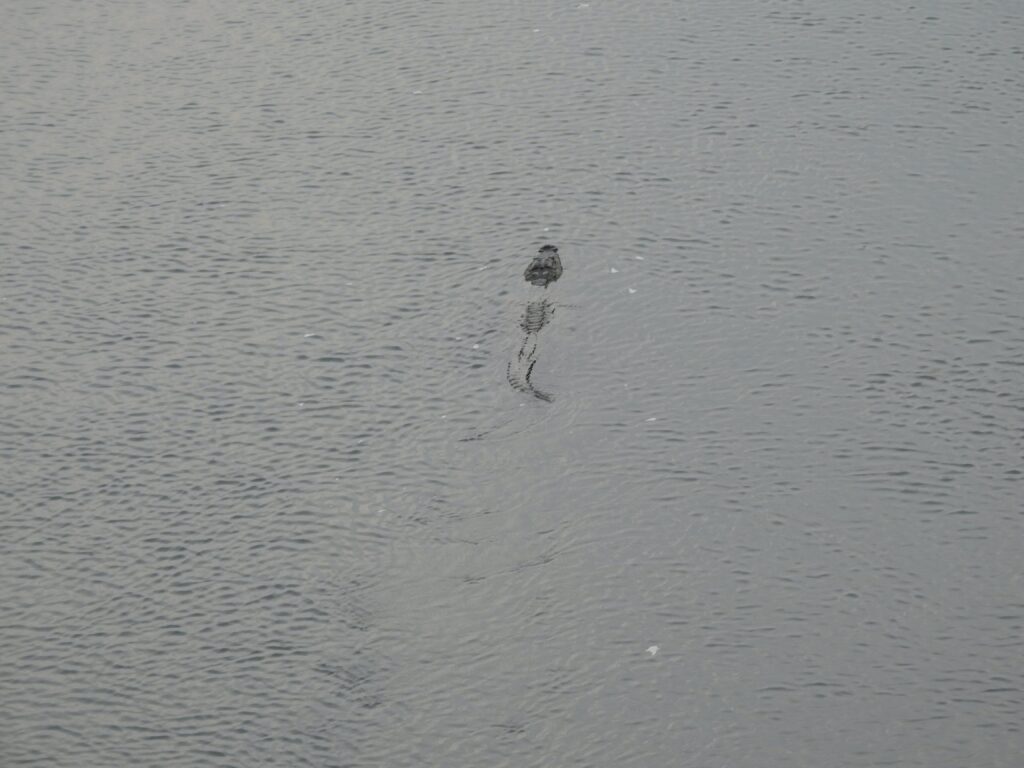
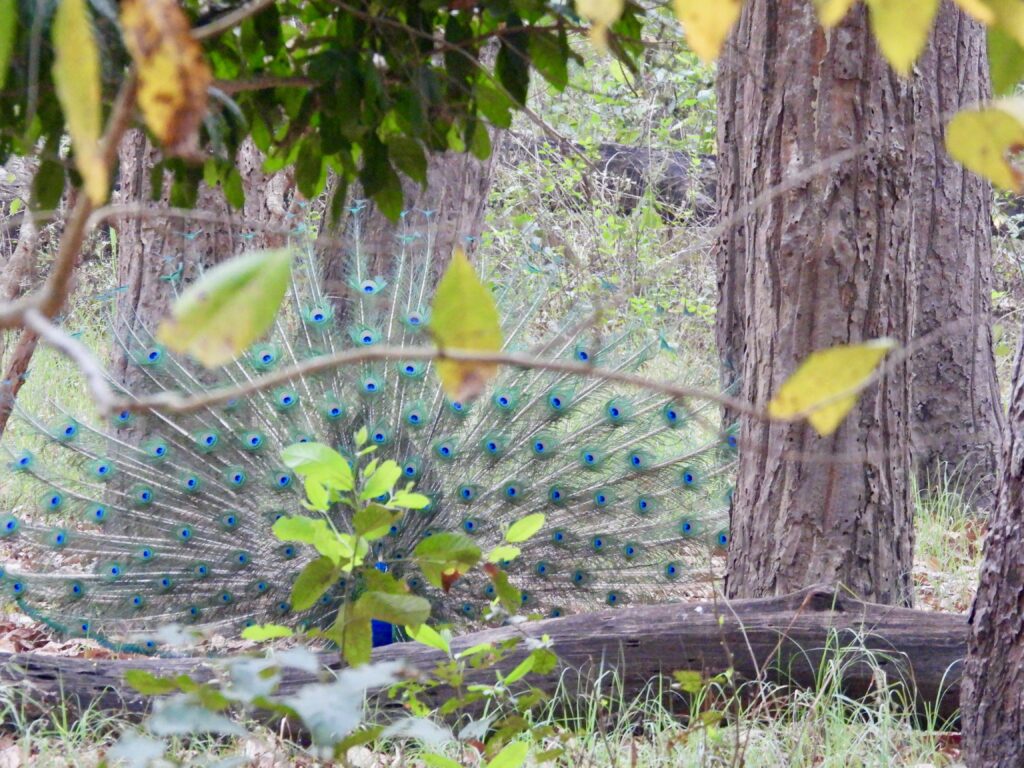
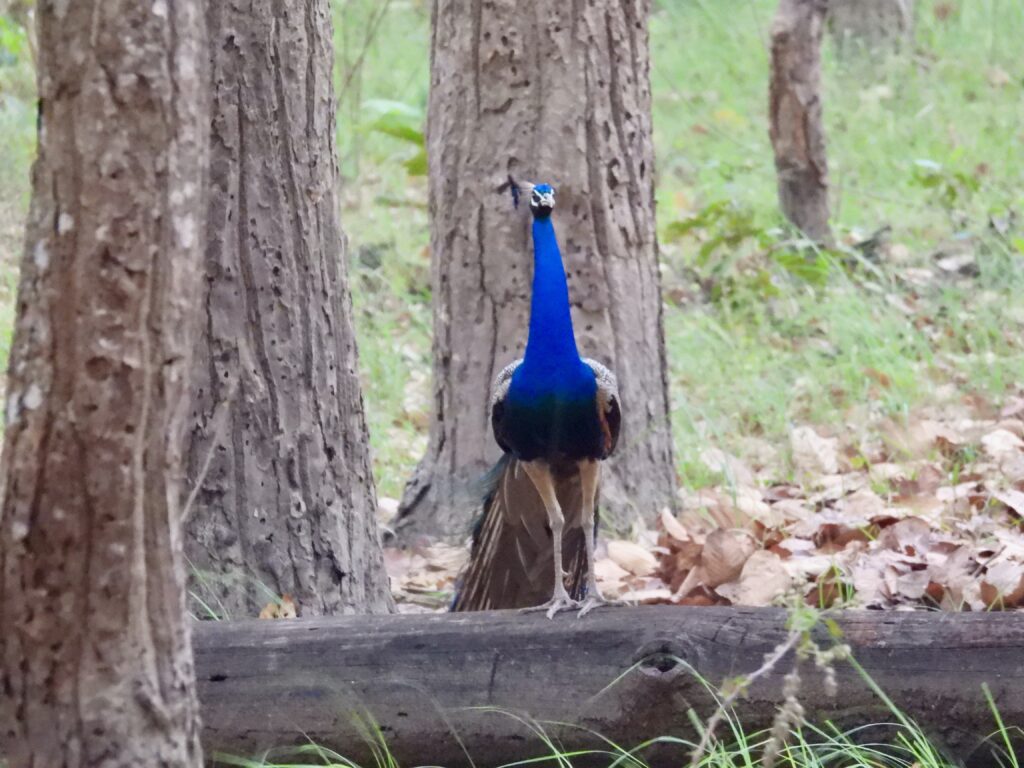
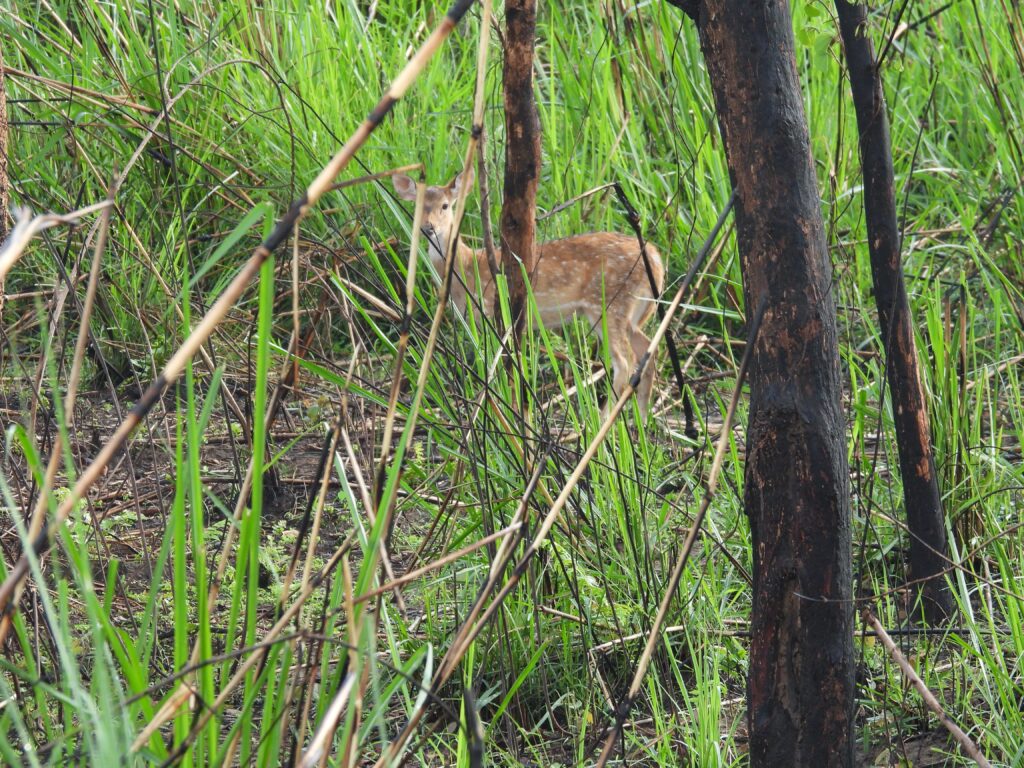
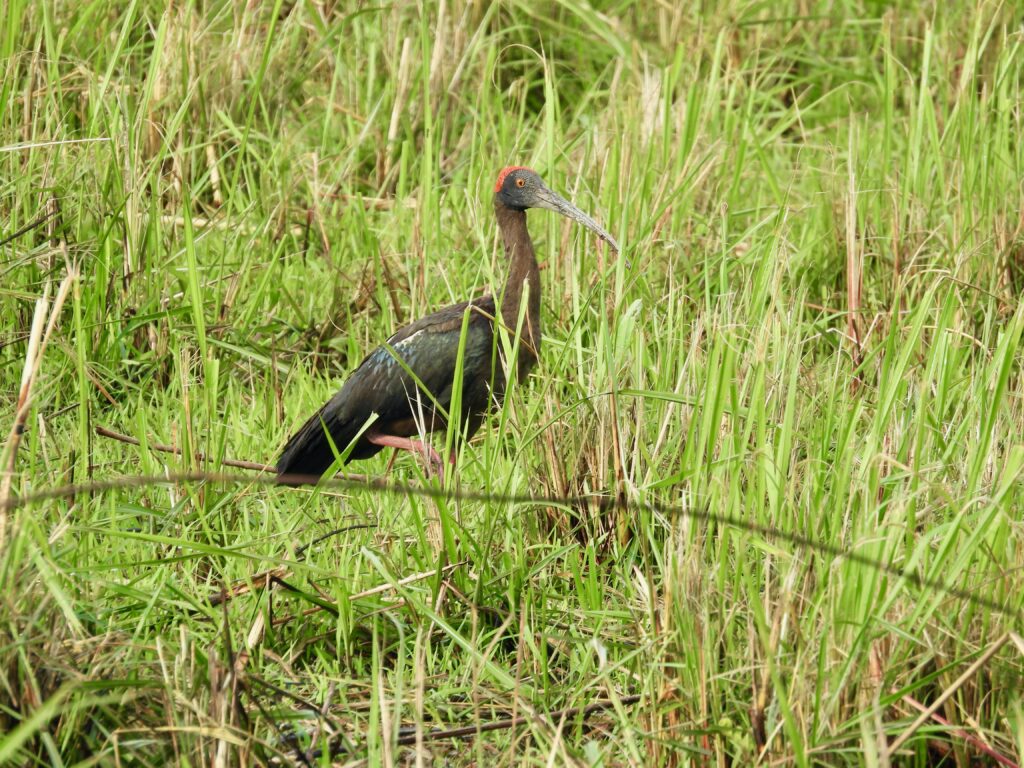
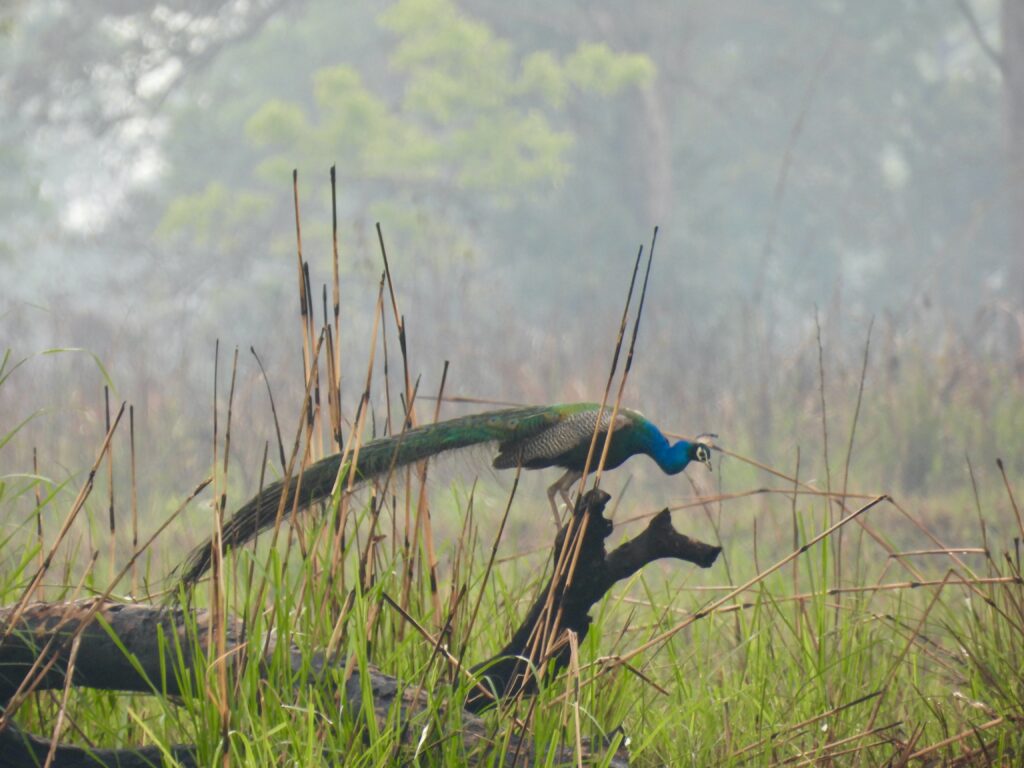
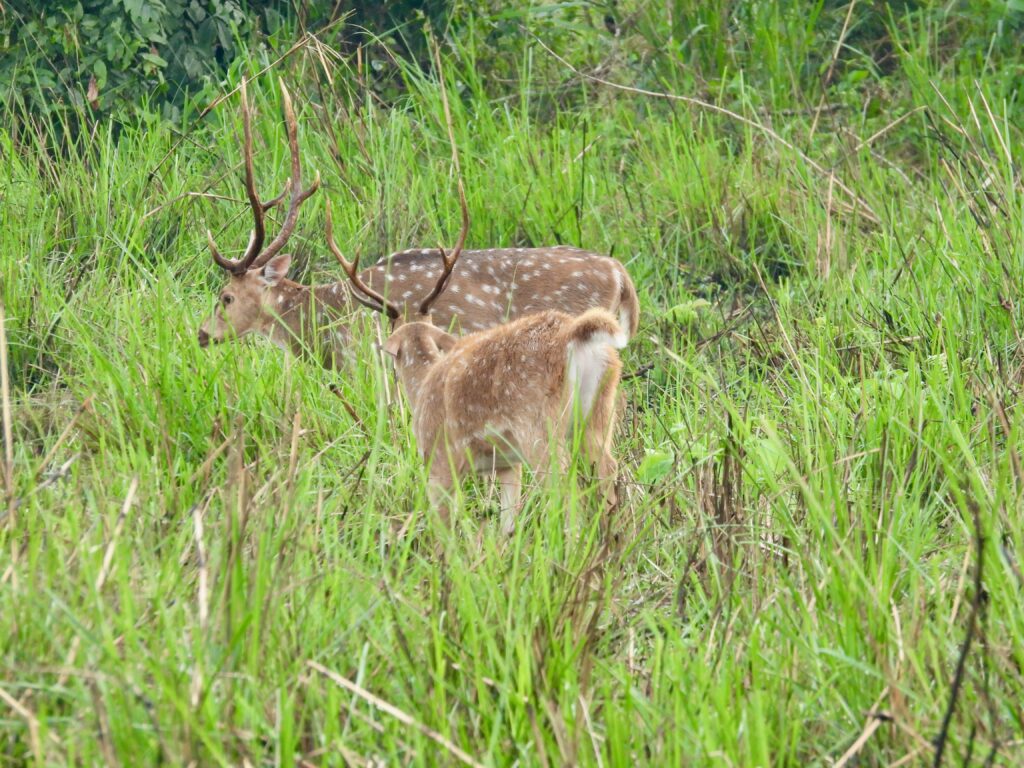
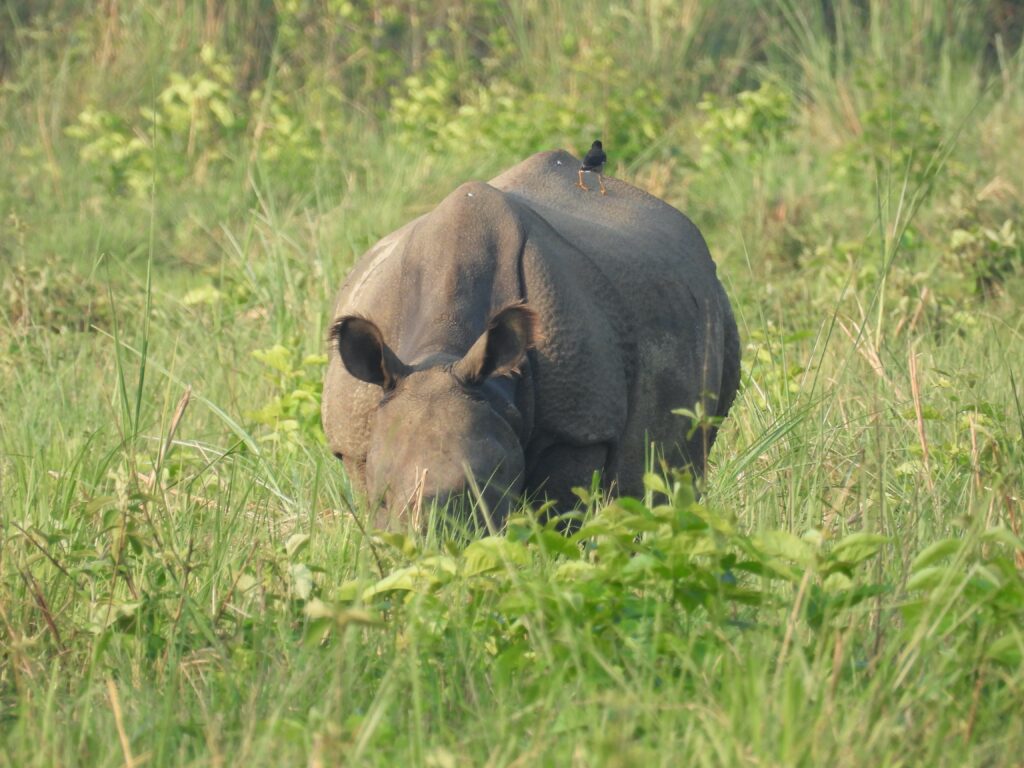
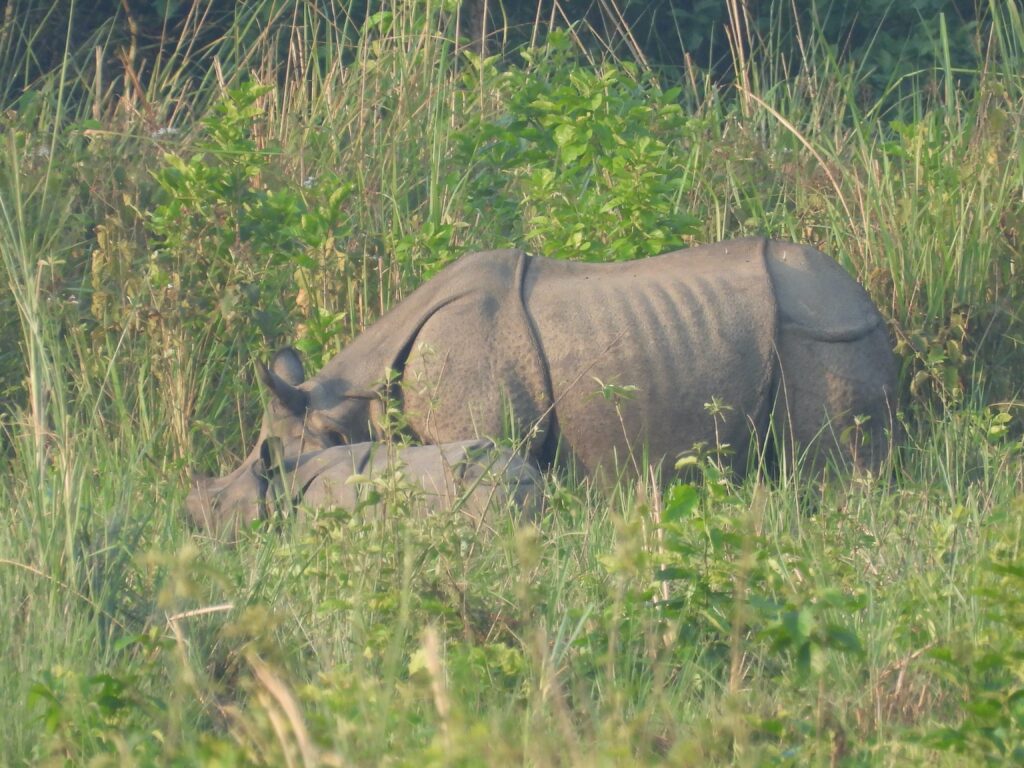
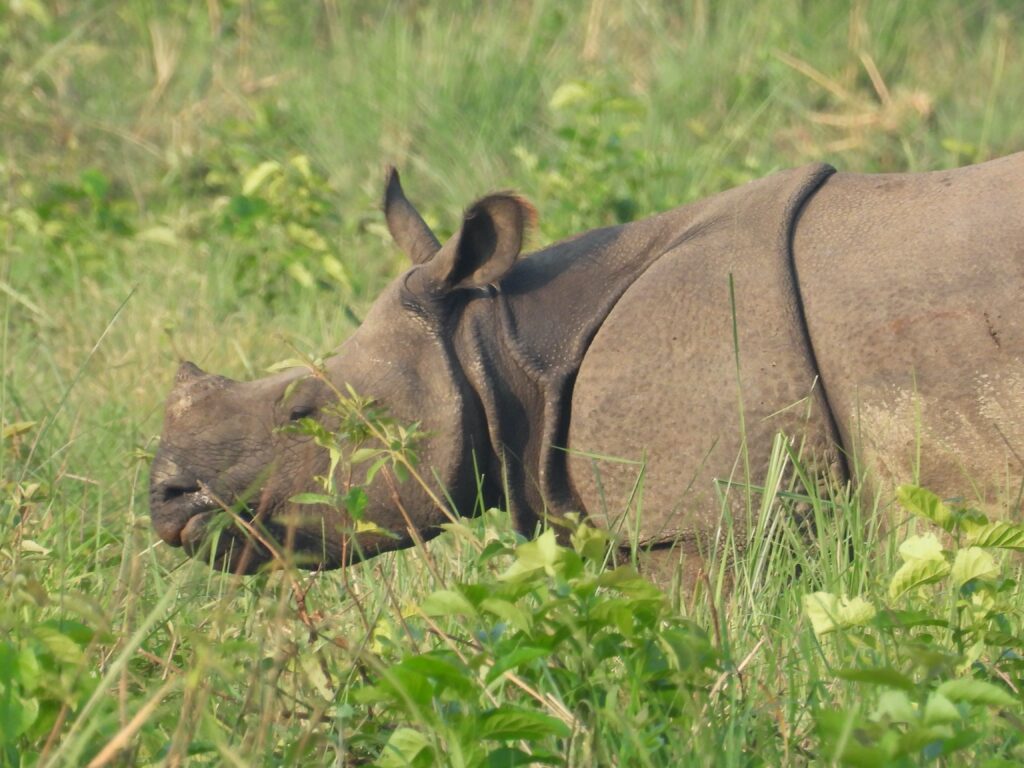
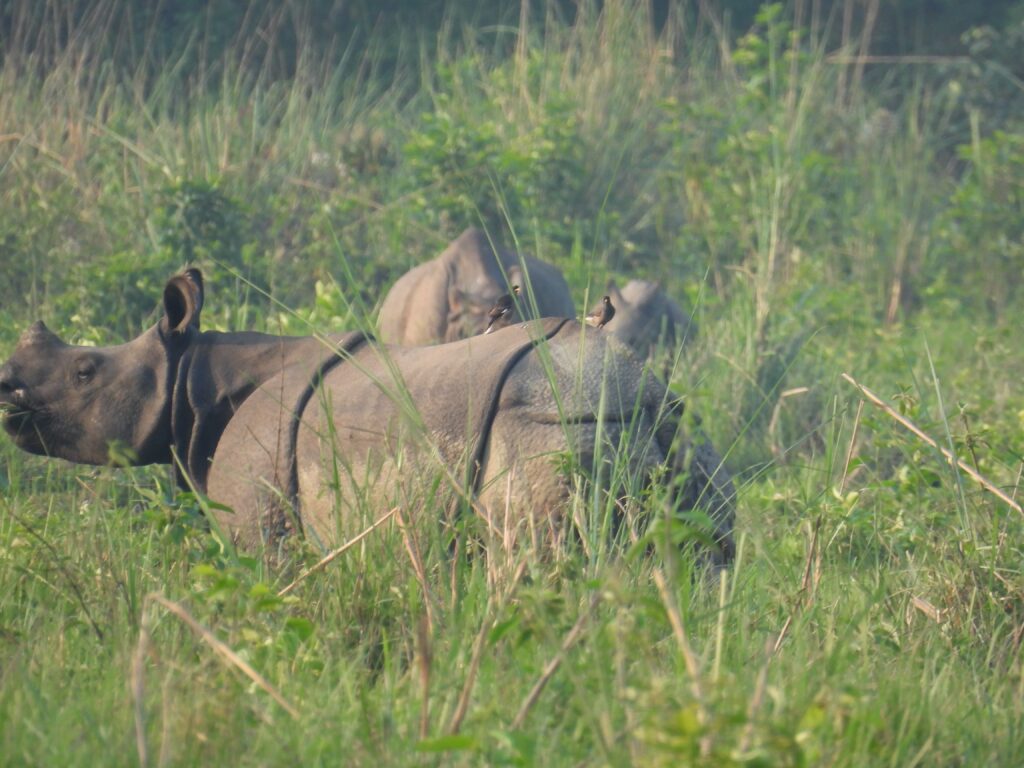
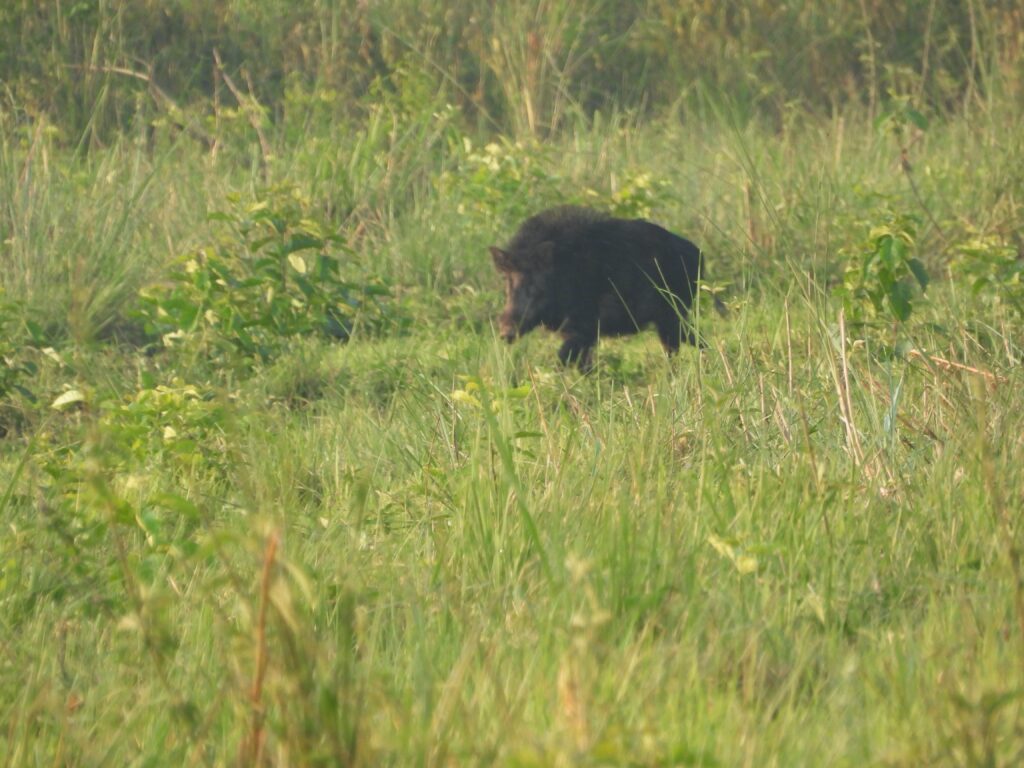
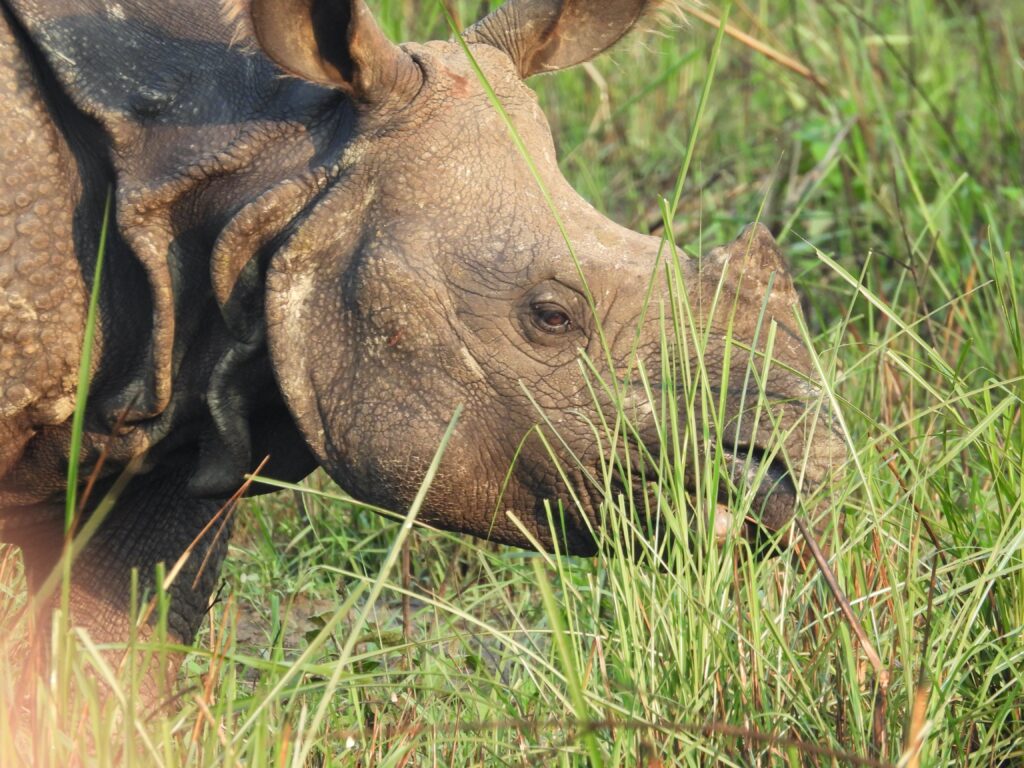
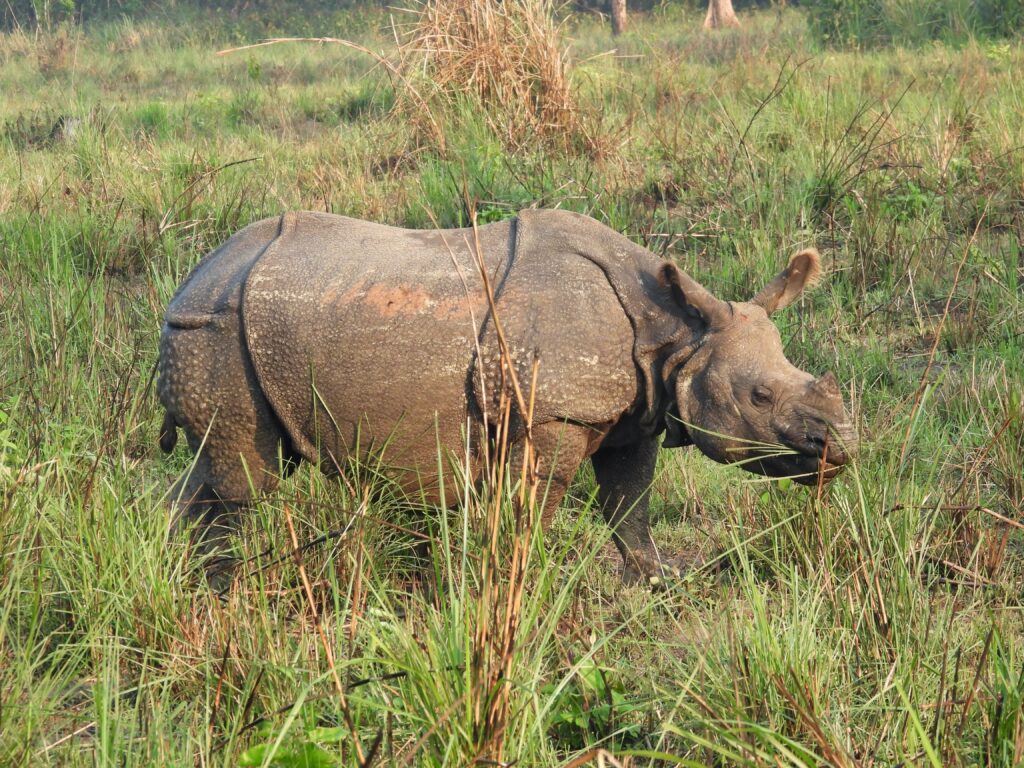
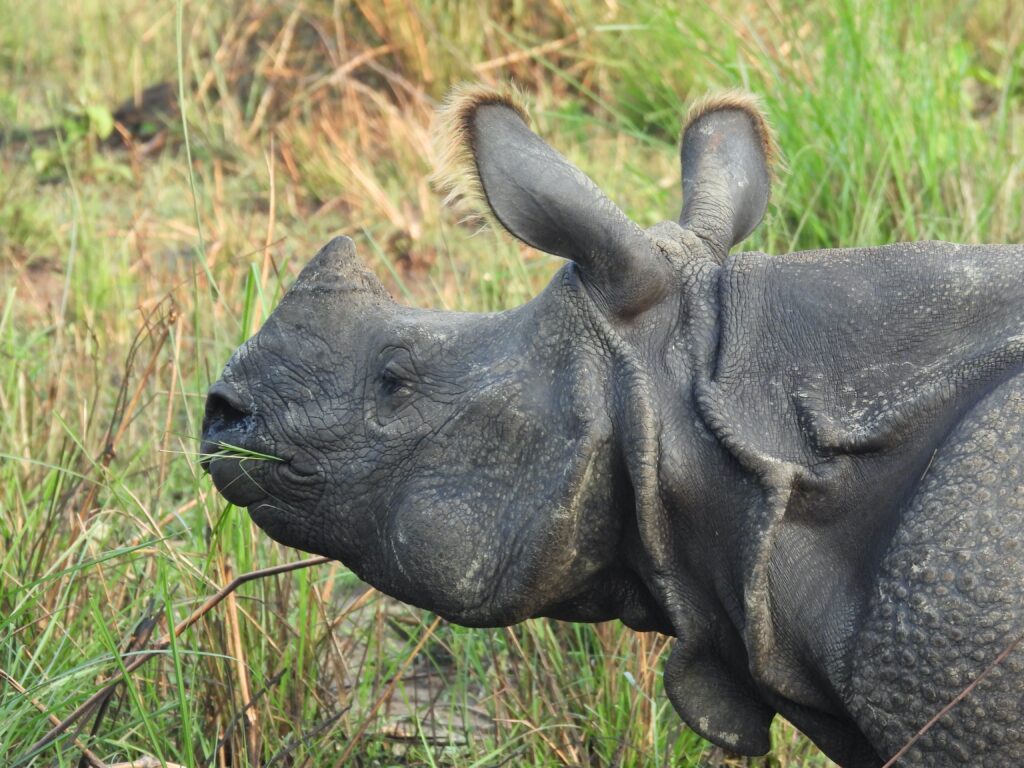
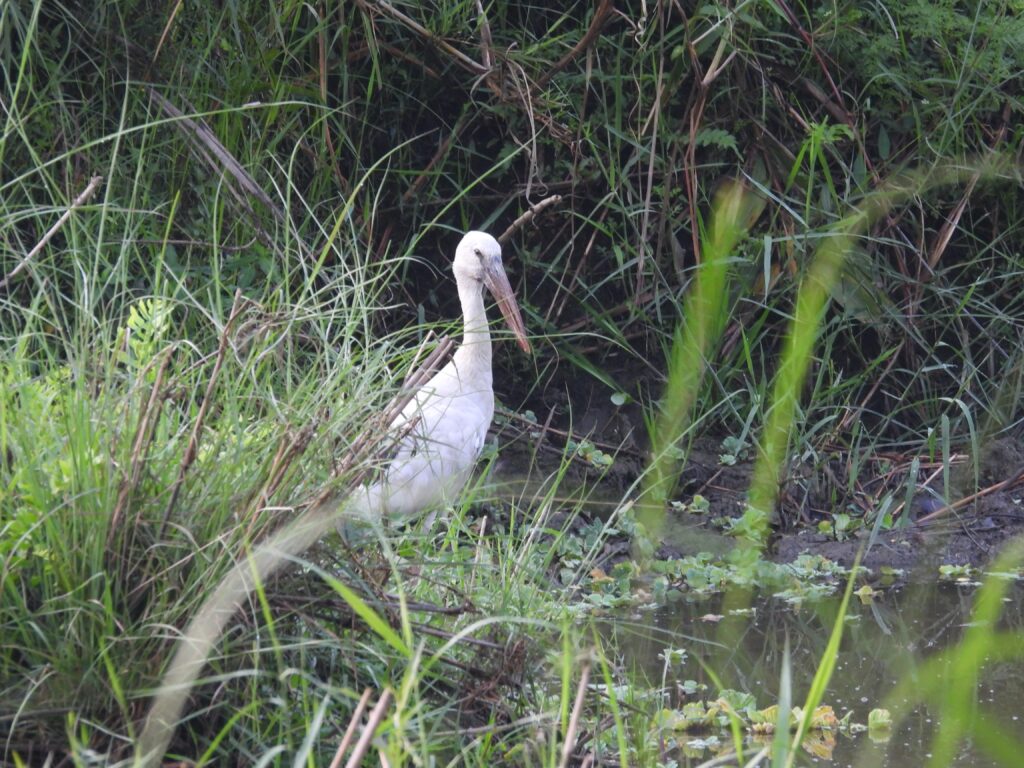
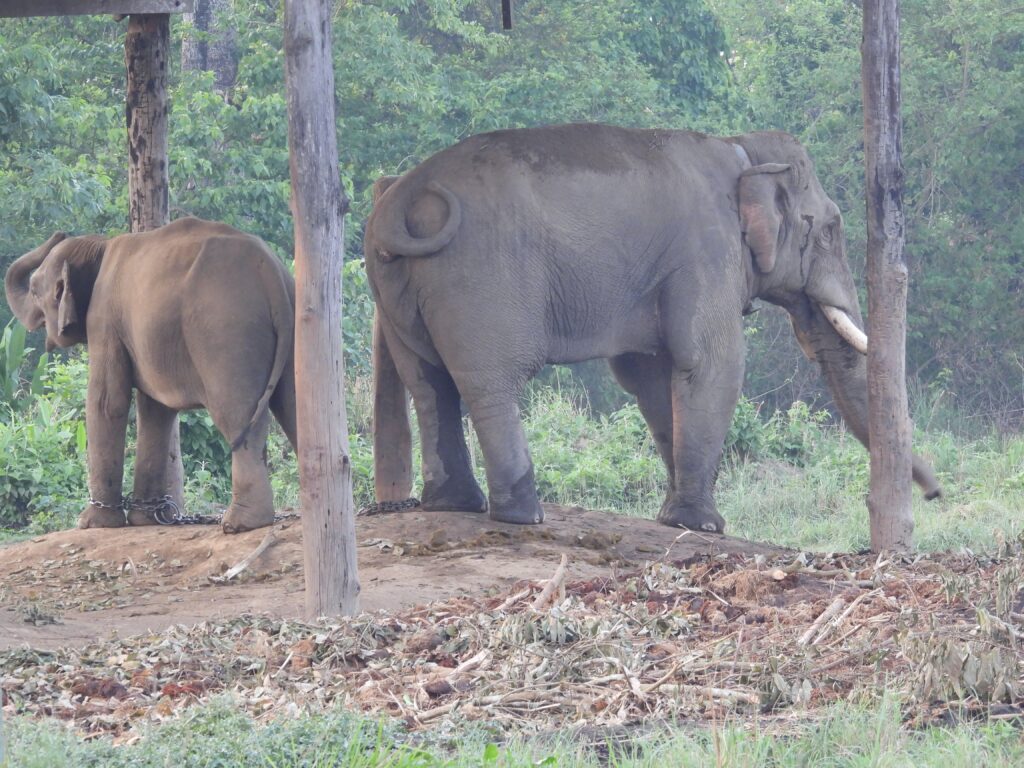
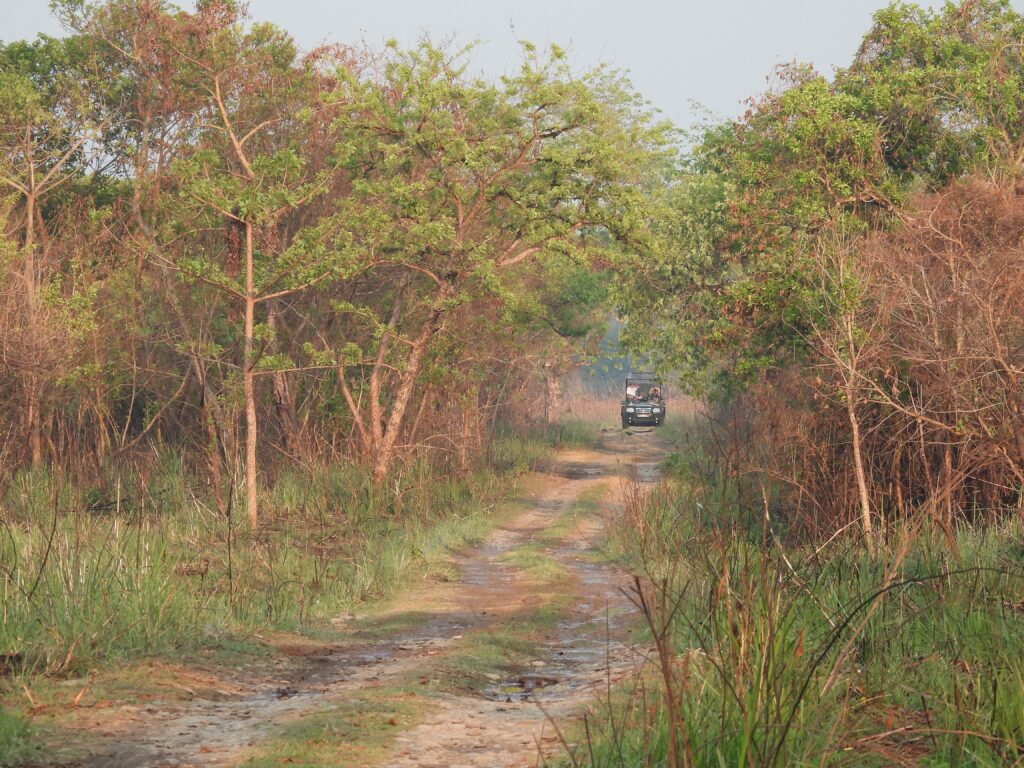
In the evening, we enjoyed a performance of traditional dances and singing by the native Tharu people. Each of the five dances invoked a theme, which included: (1) the long stick dance which shows how to be safe from the wild life; (2) the Thekara dance which is a celebratory dance after harvesting of their crops; (3) the Ghaila dance, which is named after the clay pot used to keep water cool to transport it into the farming land for the workers; and (4) the Jhumara dance, generally performed upon the occasion of a wedding or birthday ceremony, in which two people wear funny attire; and (5) the Damphu dance, typically performed during Holi Festival (the festival of color), in which the performers carry a goat sink drum decorated by peacock feathers and sing a holy song. The performance was very entertaining, and culminated in a celebratory dance involving the guests and a group picture. The dancers were very good, and the drummers very talented and entertaining!
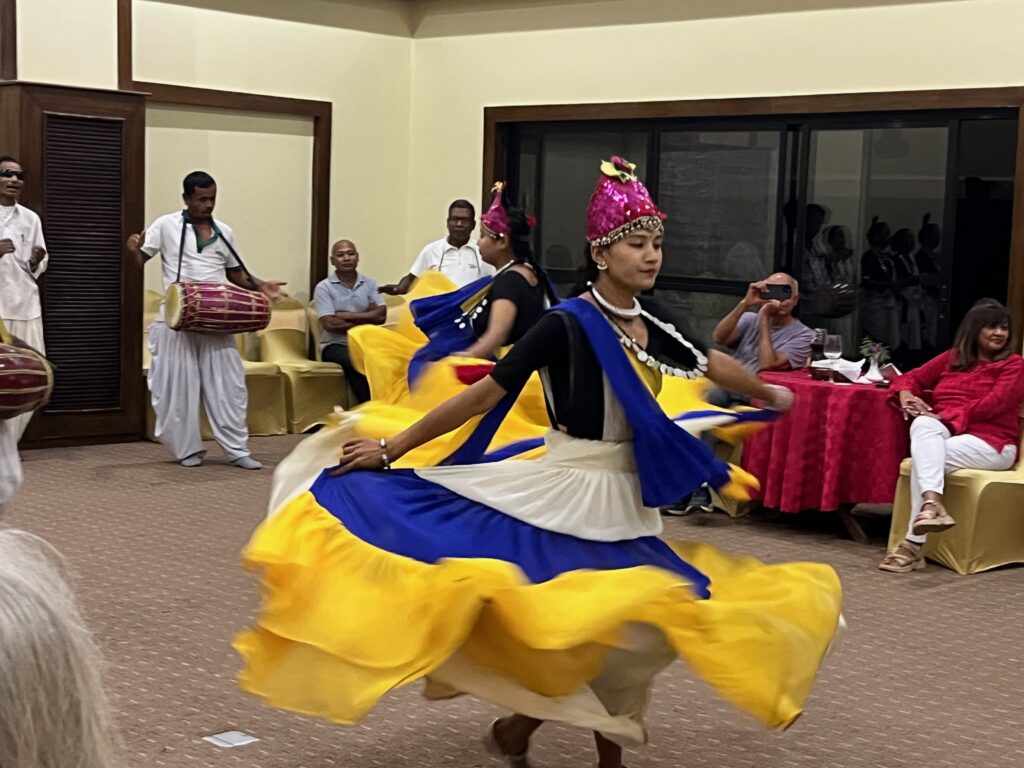
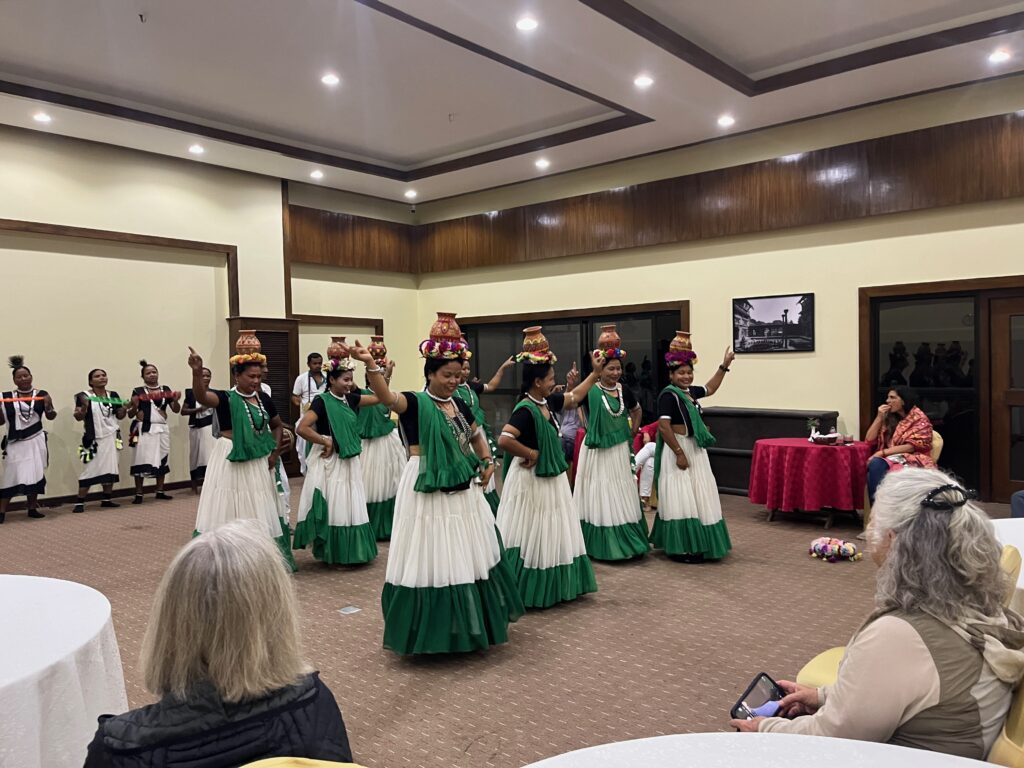
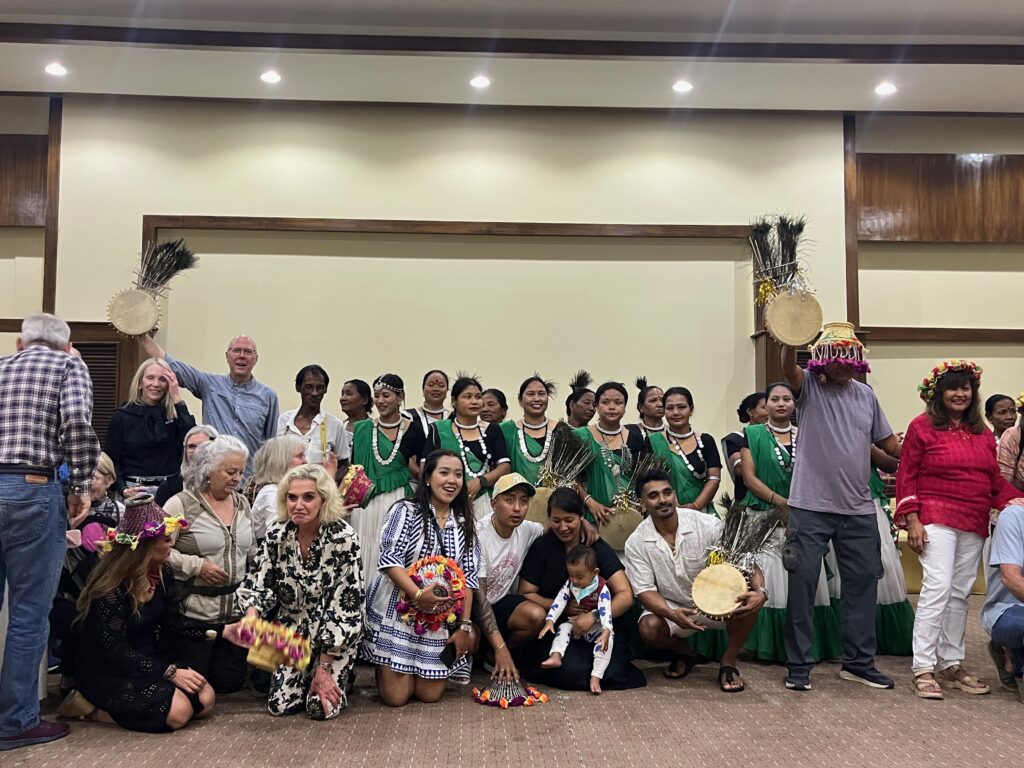
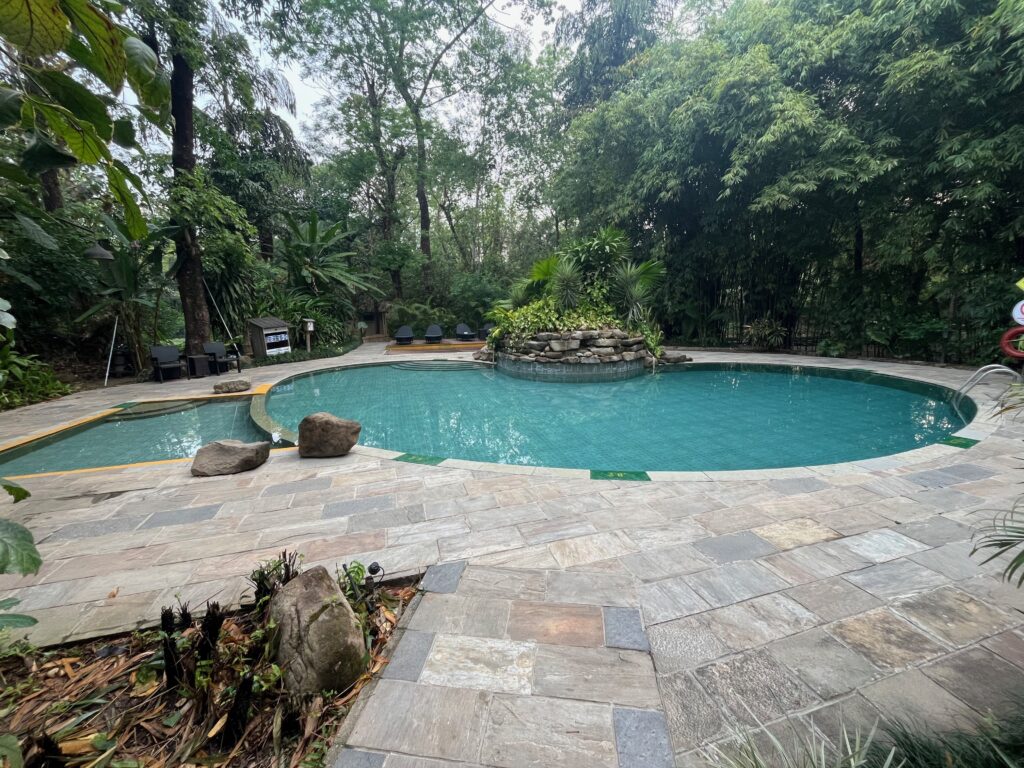
Hotel: Jagatpur Lodge
April 18 – Kathmandu
In the morning we boarded a short morning flight back to Kathmandu (28 minutes from wheels moving to wheels stopped) and checked into our hotel. We then had free time for lunch before meeting in the mid-afternoon for a tour of the city’s most famous site: Boudhanath. Revered by Tibetan Buddhists, this white-domed stupa painted with all-seeing eyes draws a constant stream of pilgrims who circumambulate the sacred site (again, always in a clockwise direction). The stupa is the largest in the world and a UNESCO World Heritage site. The first stupa at Boudhanath was built sometime after AD 600, when the Tibetan king, Songtsen Gampo, converted to Buddhism. According to legend, the king constructed the stupa as an act of penance after unwittingly killing his father. The first stupa was wrecked by Mughal invaders in the 14th century, so the current stupa is a more recent construction. The highly symbolic construction serves in essence as a three-dimensional reminder of the Buddha’s path towards enlightenment. The plinth (heavy base) represents earth, the kumbha (dome) is water, the harmika (square tower) is fire, the spire is air and the umbrella at the top is the void or ether beyond space. The 13 levels of the spire represent the stages that a human being must pass through to achieve nirvana.
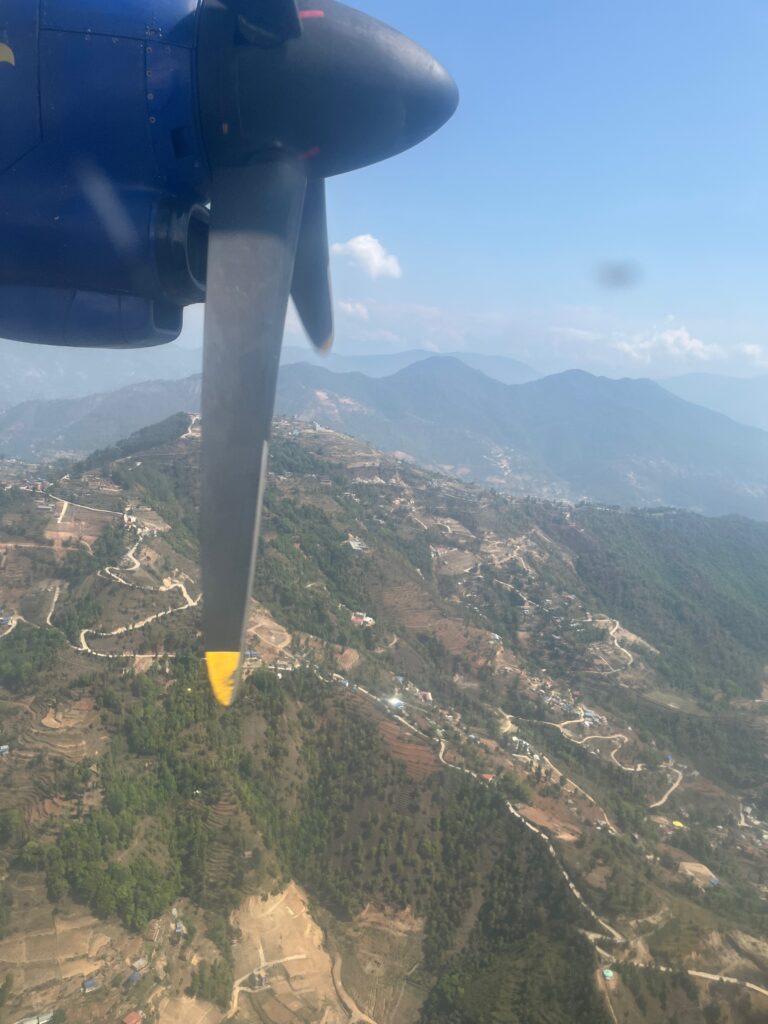
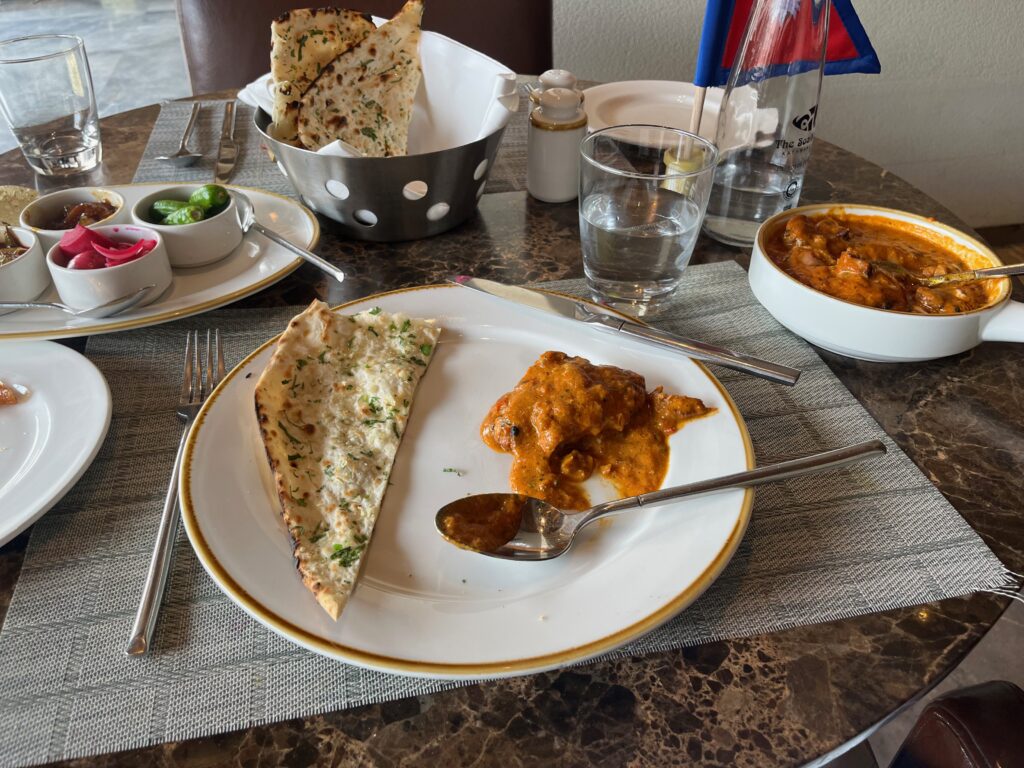
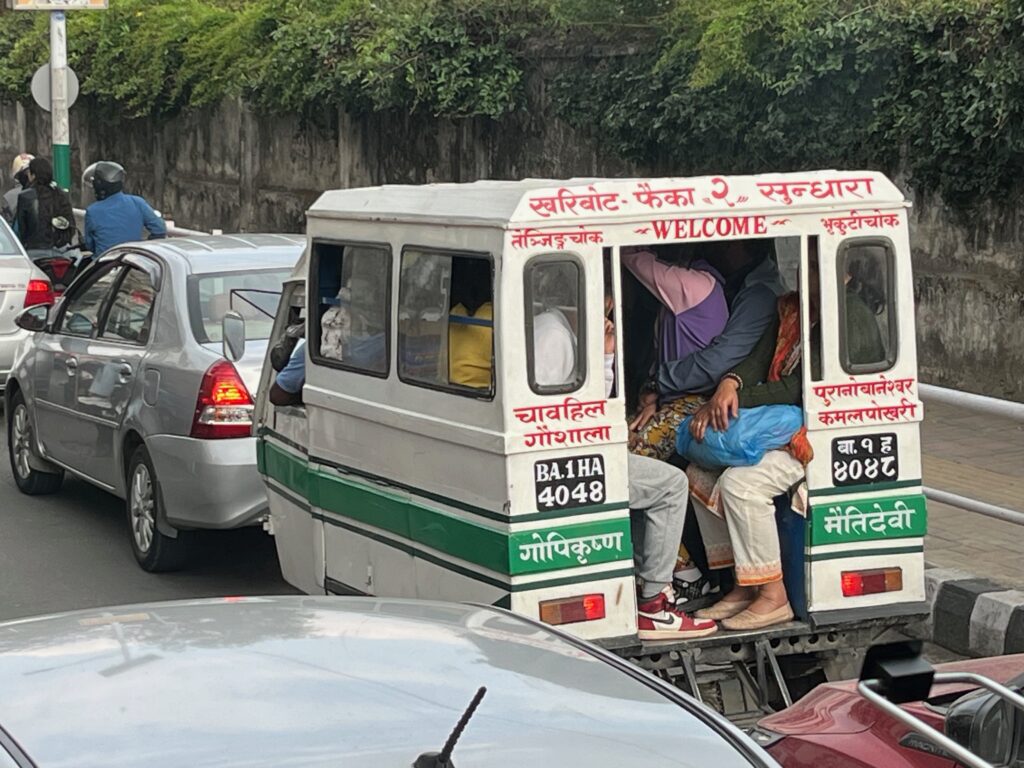
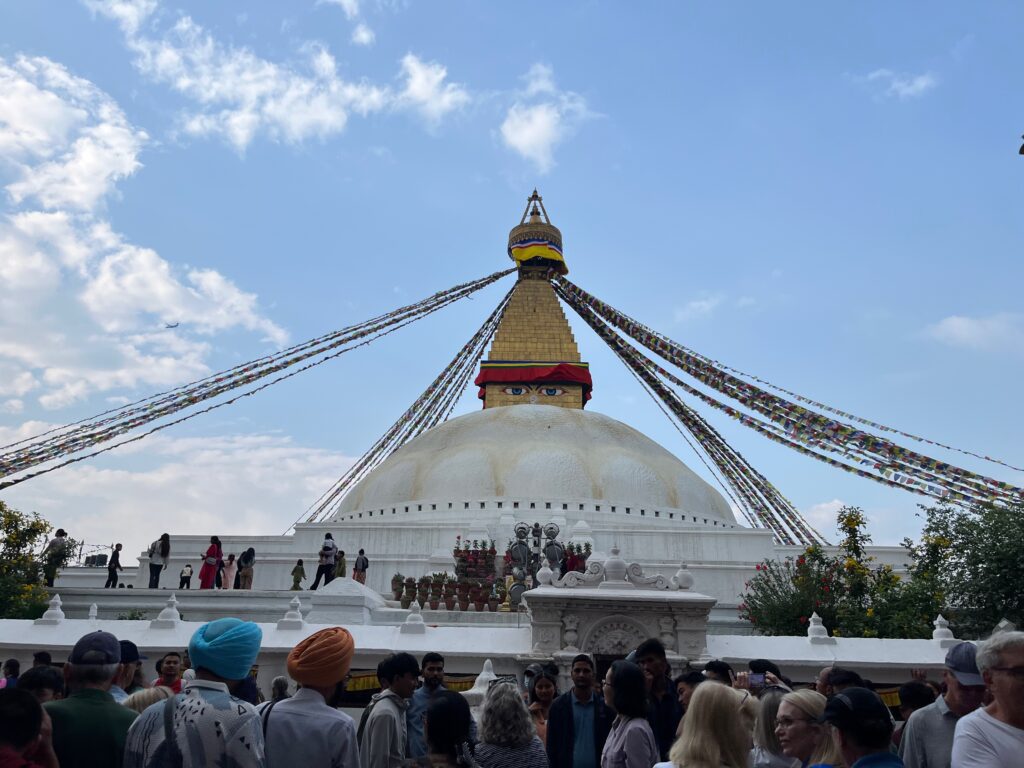
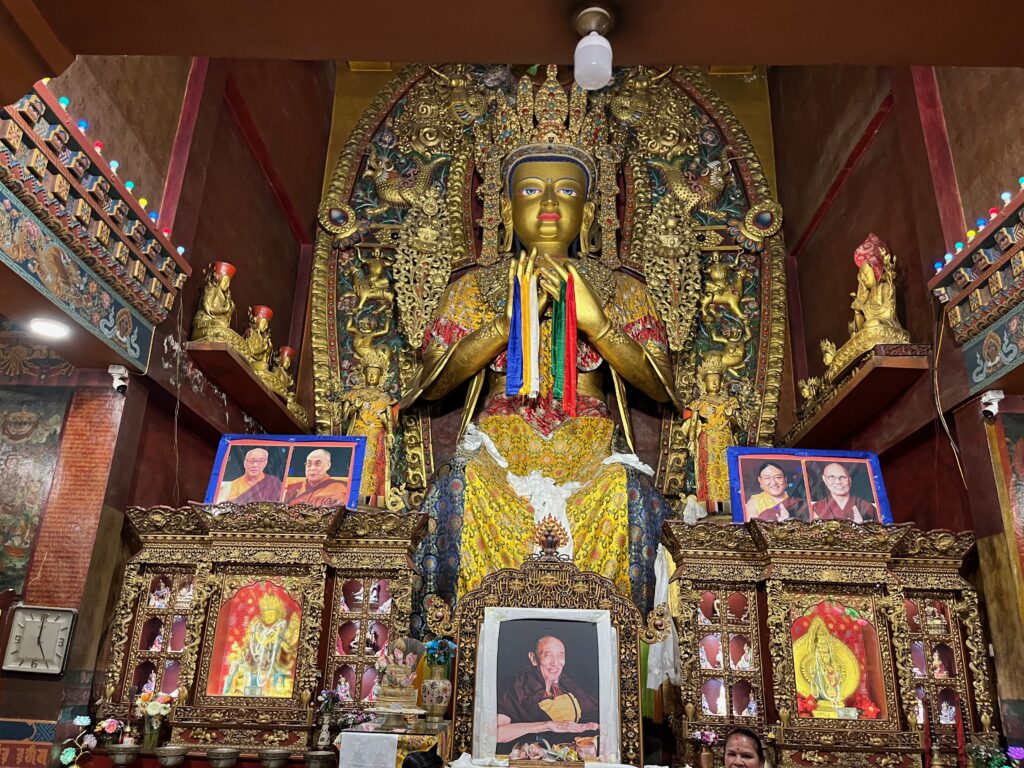
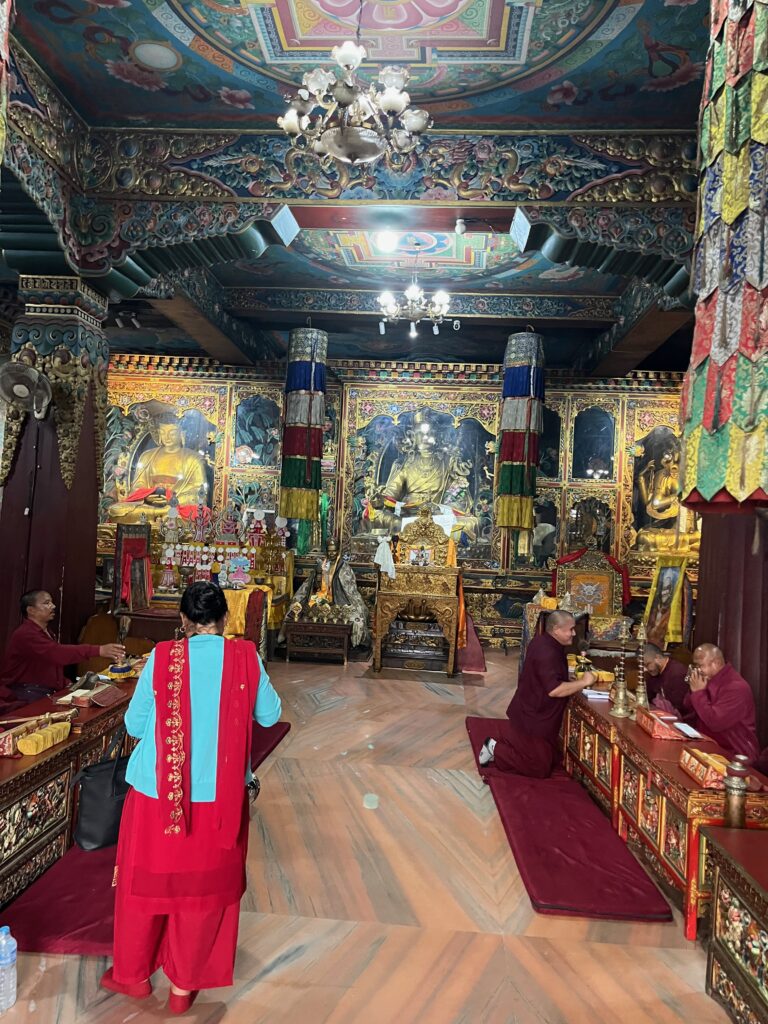
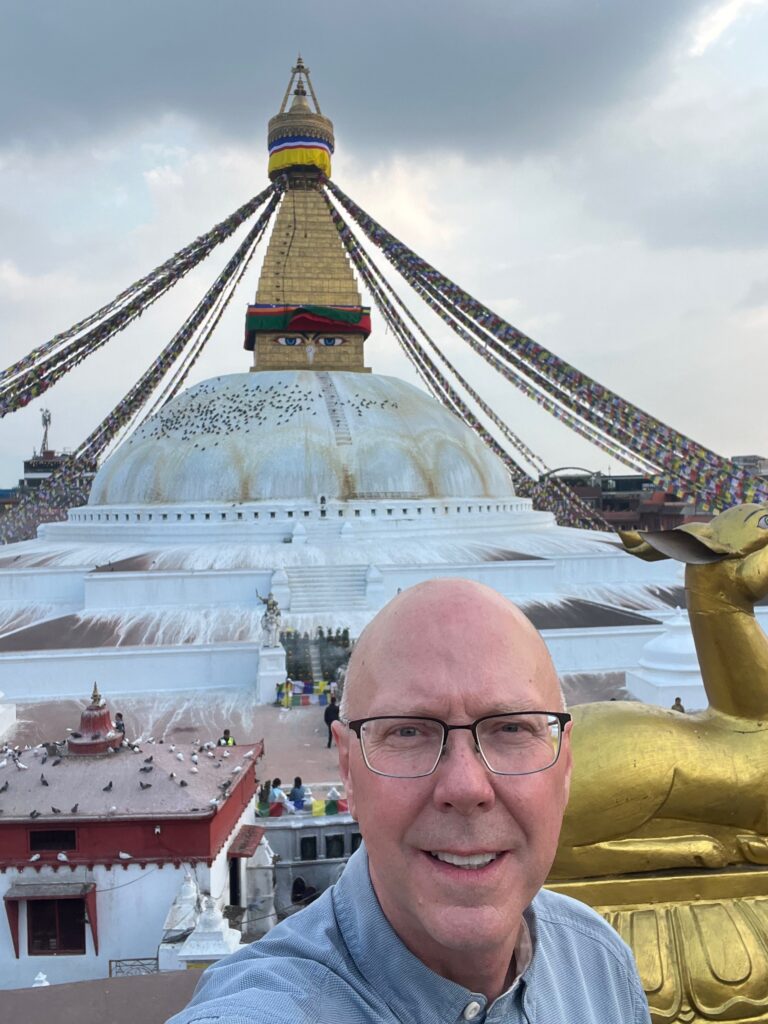
We then continued to the temple of Pashupatinath, dedicated to Hindu deity Shiva. The temple was classified as a UNESCO World Heritage Site in 1979. This “extensive Hindu temple precinct” is a “sprawling collection of temples, ashrams, images and inscriptions raised over the centuries along the banks of the sacred Bagmati river”, and is one of seven monument groups in UNESCO’s designation of Kathmandu Valley. The temple, considered one of the holiest pilgrimage sites for Hindus, is built on an area of 246 hectares (608 acres) and includes 518 mini-temples and a main pagoda house. One of the more interesting sights were took in what at Pashupatinath was the cremation portion of the Hindu funeral rite of Antyesti. In our case, the cremation was taking place outdoors in the temple complex using a funeral pyre comprised of wood weighing four times the weight of the body being cremated. At this particular temple, once completed the ashes are pushed into the river (considered to be a sacred body of water) to signify the final separation of the soul from the body.
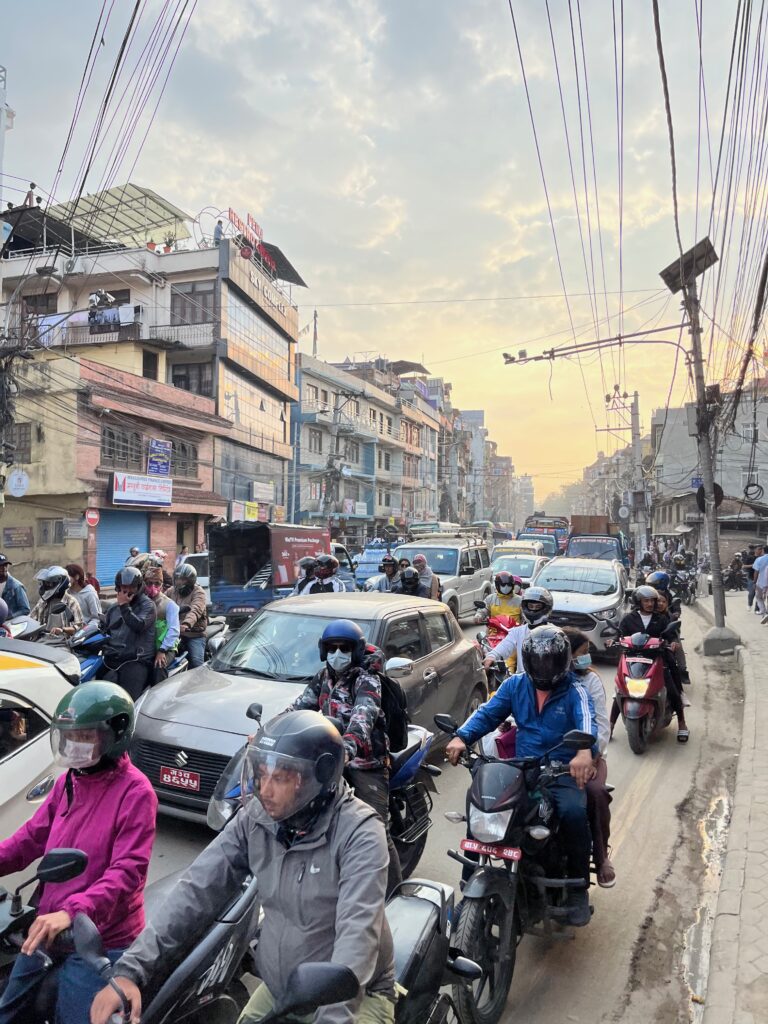
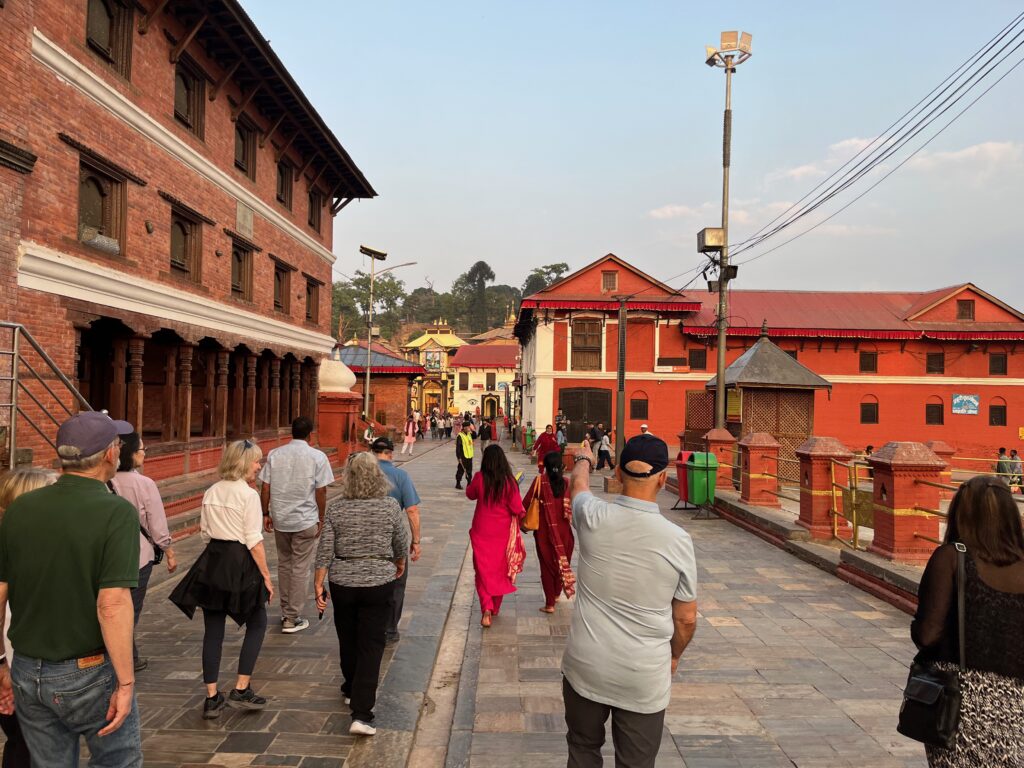
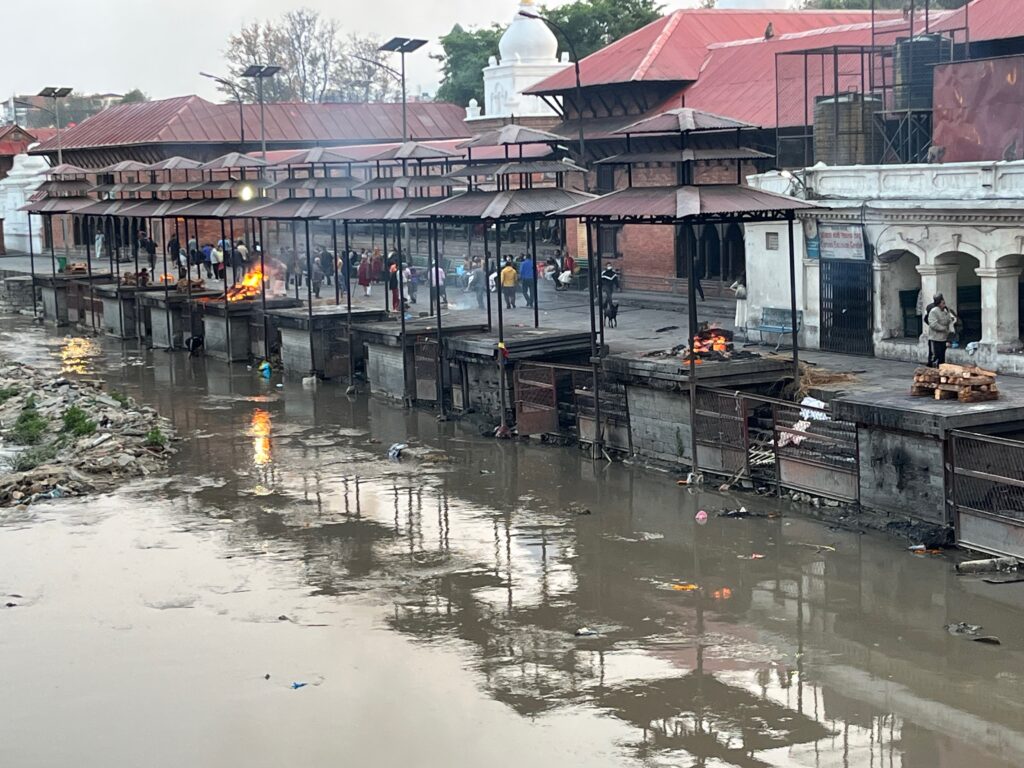
Hotel: The Soaltee
April 19 – Kathmandu Valley
This morning several of us in the group woke up very early to embark on a plane ride paralleling the Himalaya mountain range, thereby giving us a chance to see 8 of the 10 tallest mountains in the world. The plane rise was successful and allowed us a stunning view of the massive Himalayas.

After returning to our hotel, we set out to discover more of the Kathmandu Valley, a UNESCO World Heritage site that encompasses the temples and ancient royal cities of Patan and Bhaktapur as well as Kathmandu. We began with a tour of Patan Durbar Square, where hundreds of temples and stupas represent an array of architectural styles. The square also includes the beautiful Patan Museum dedicated to the dissemination of knowledge related to Buddhism. I learned a lot about Buddhism from the various displays and explanations throughout the museum. Furthermore, “Patan Durbar Square … bears witness to the political authority and civic life of the Malla rulers who controlled the city from the 14th to the 18th century. Once a royal palace complex, the Square was a living civic area where royal parades, markets, and religious ceremonies were conducted under the surveillance of intricately carved shrines and temples.”4
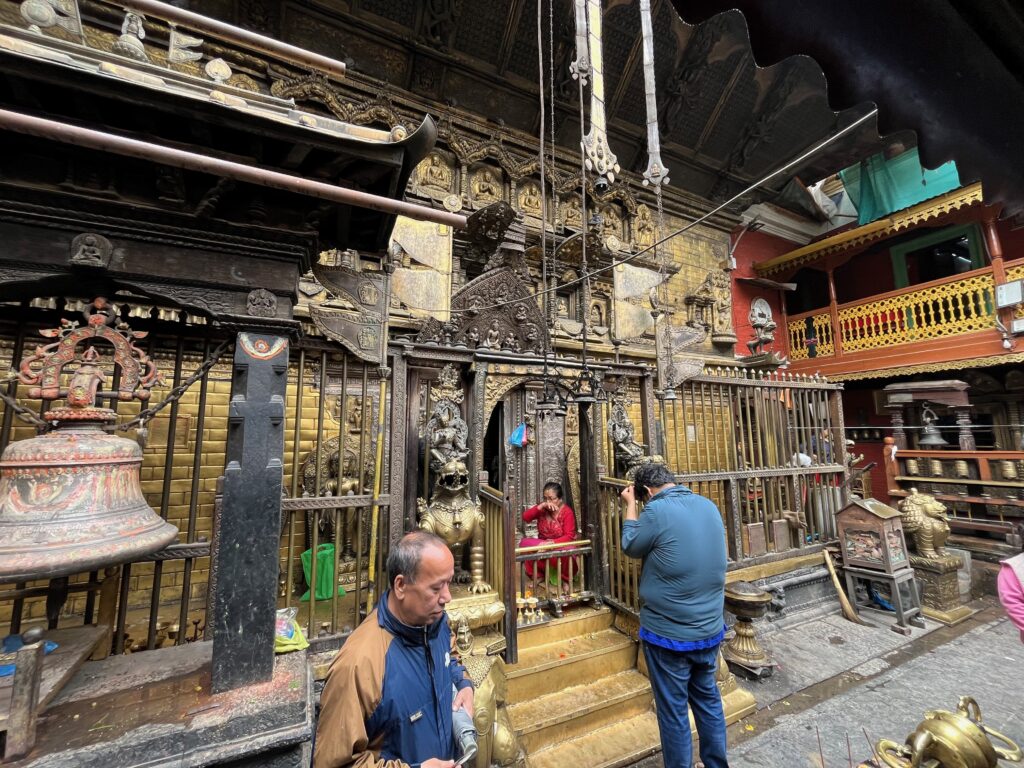
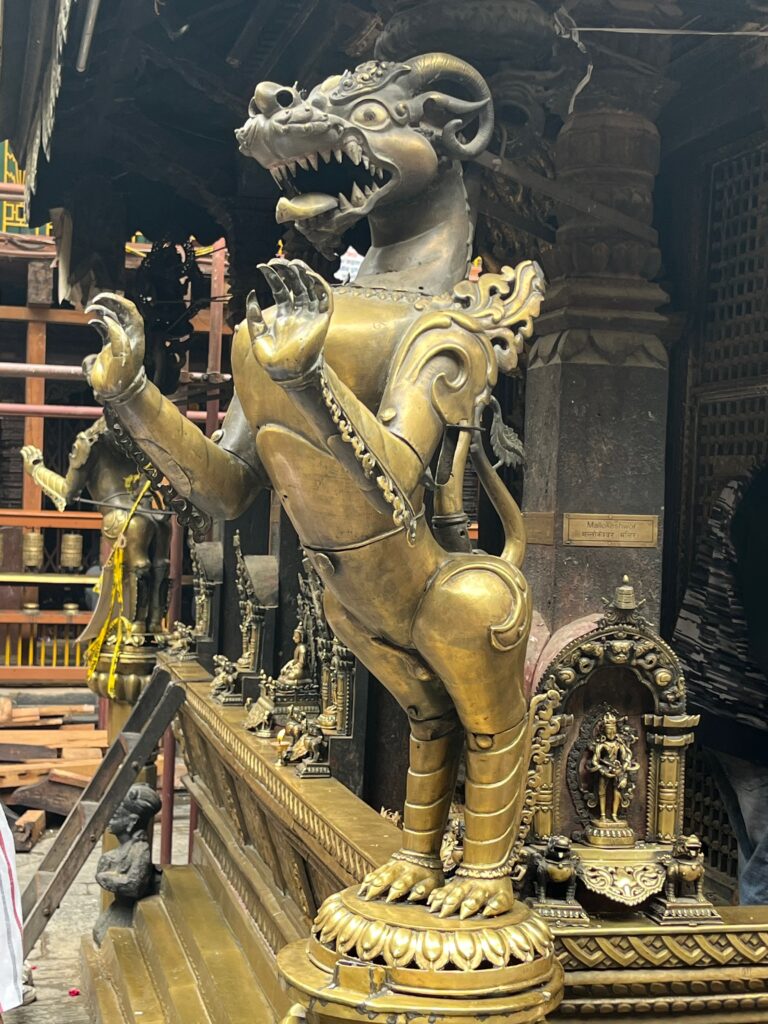
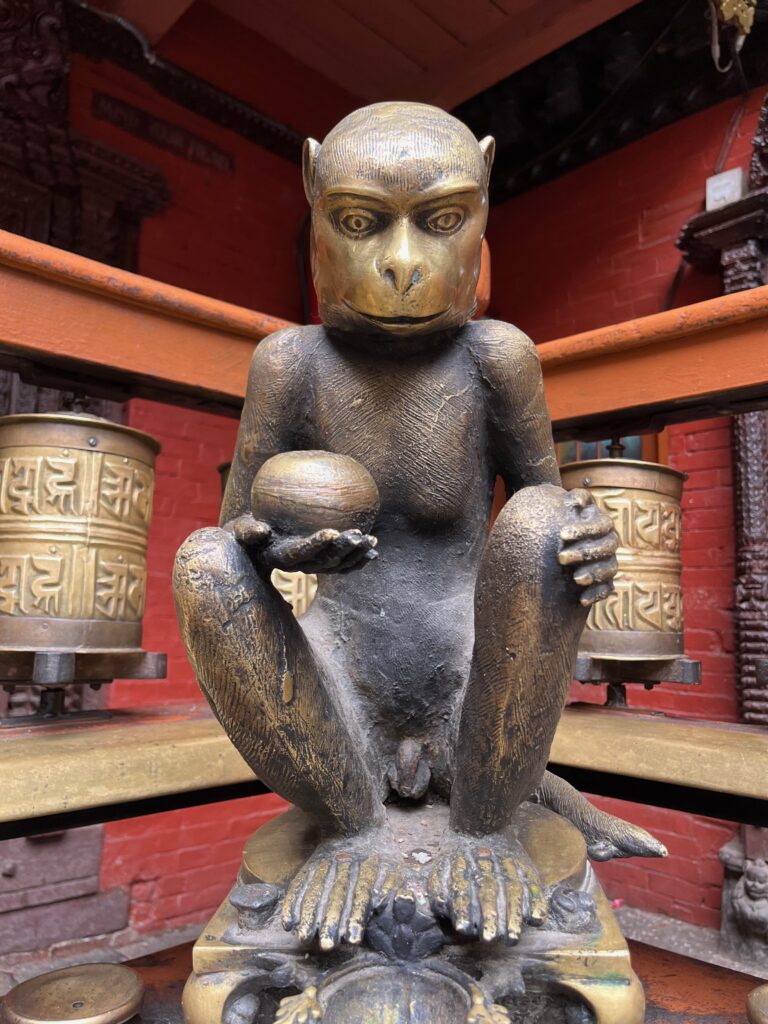
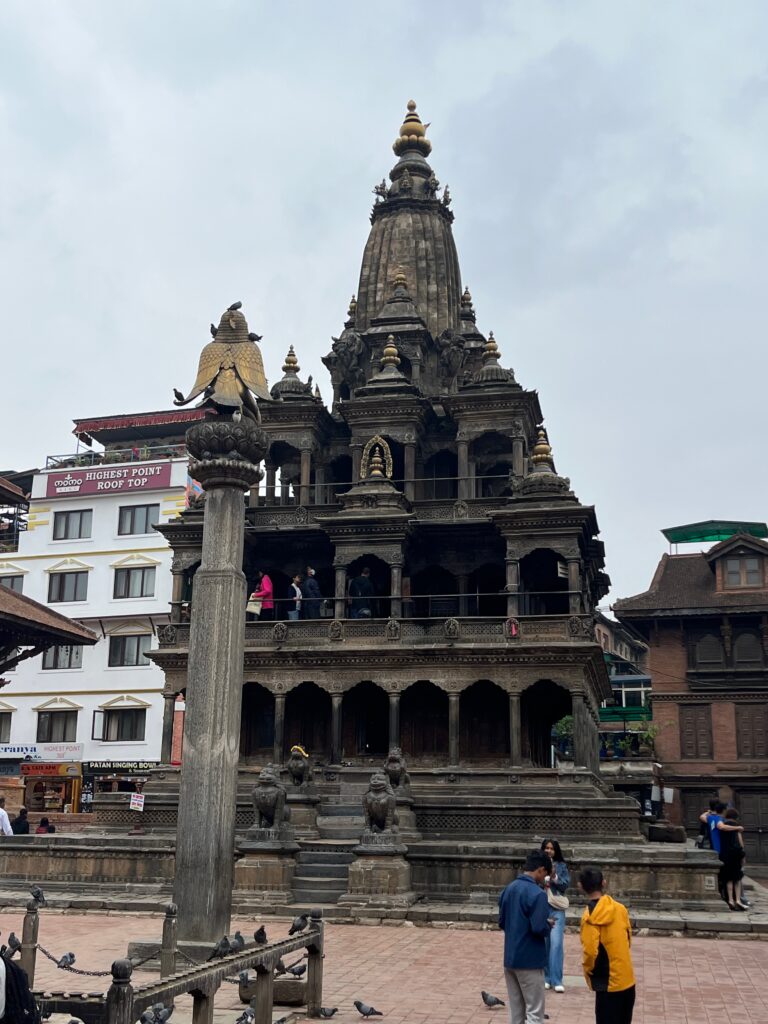
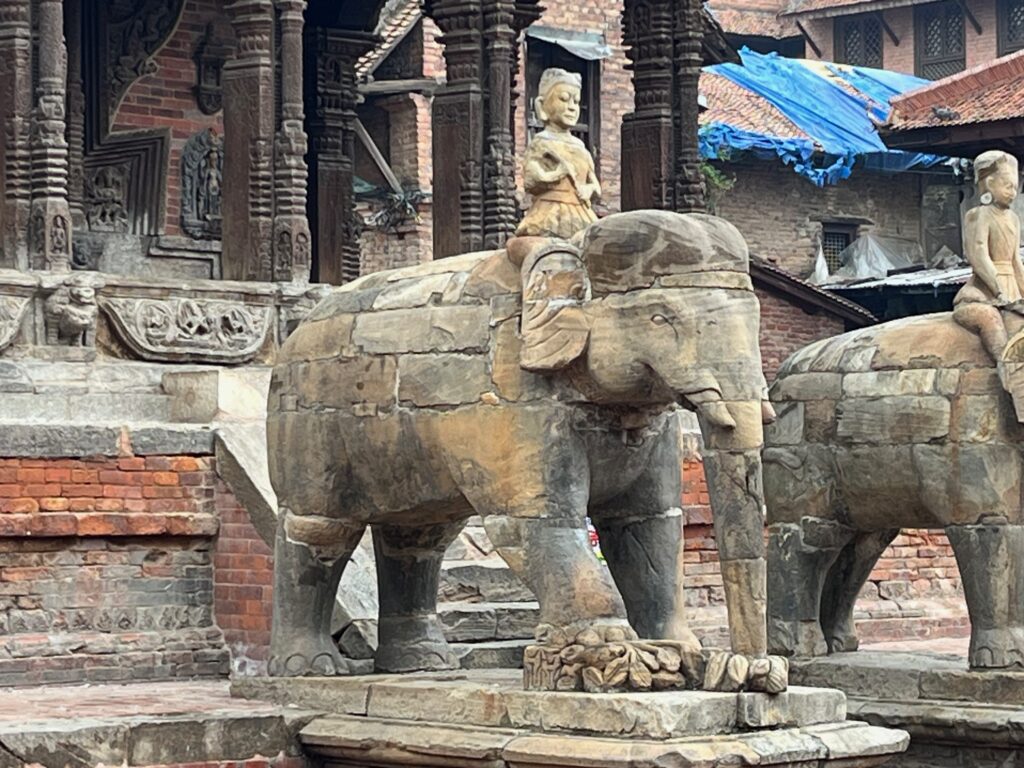
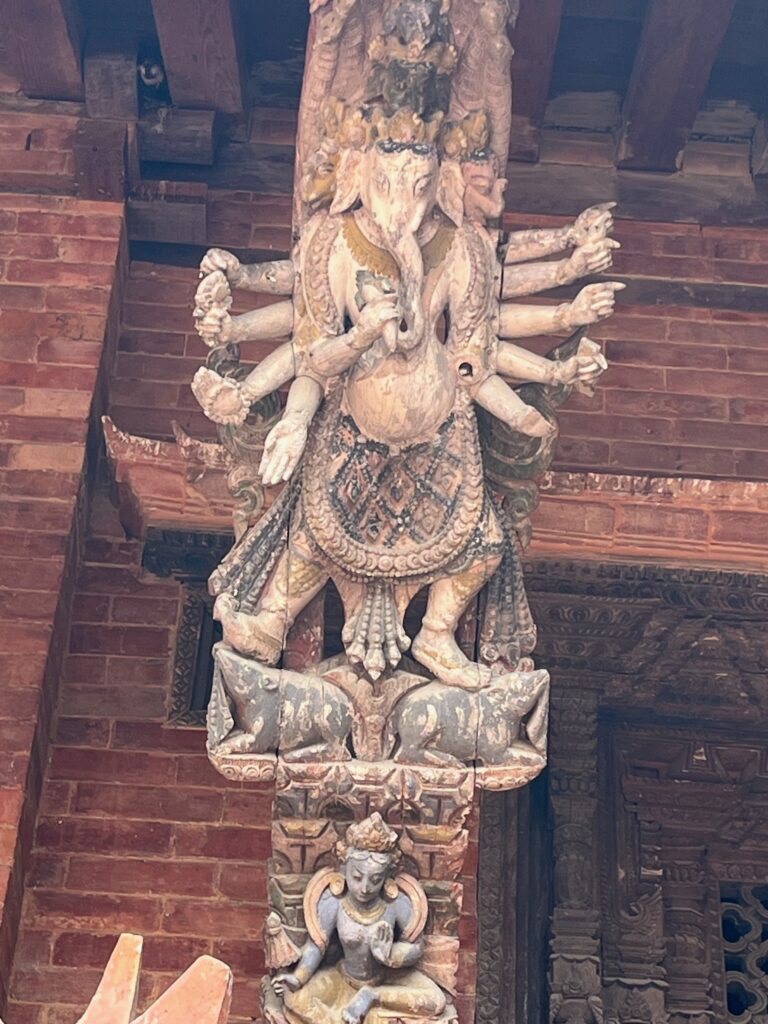
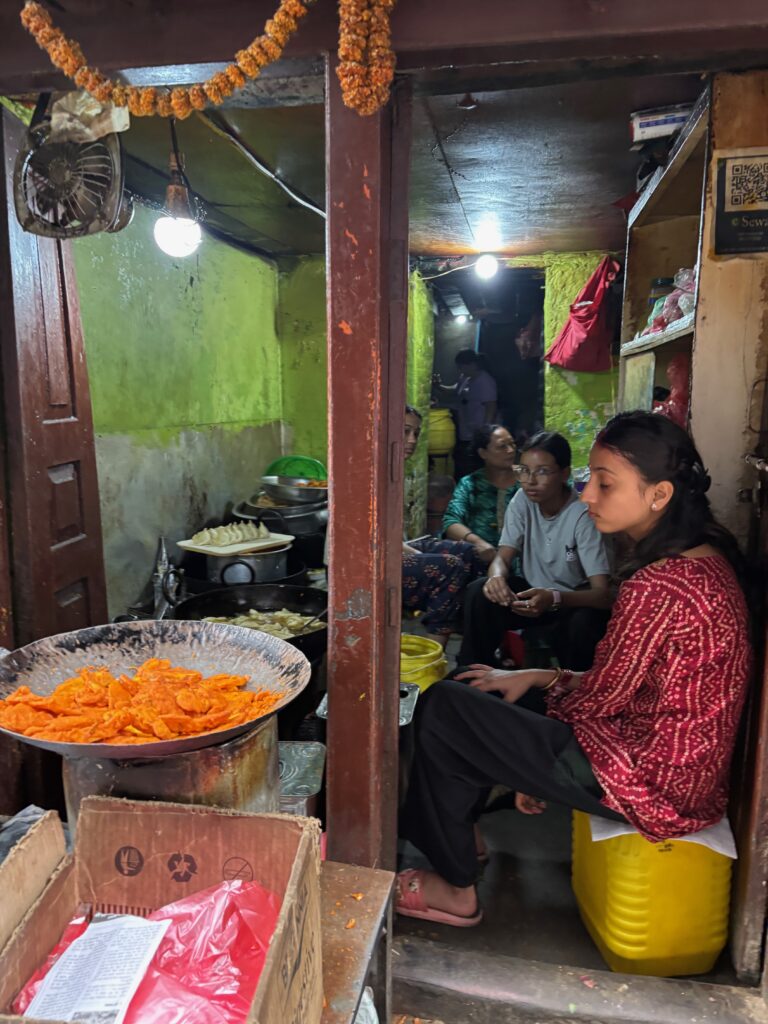
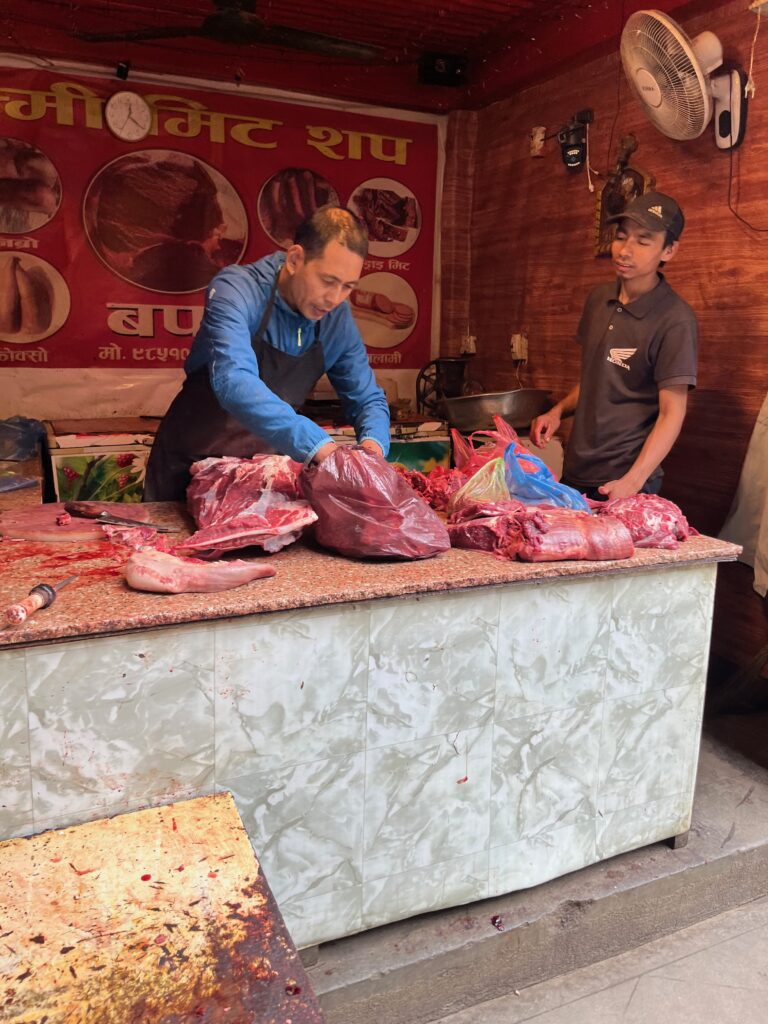
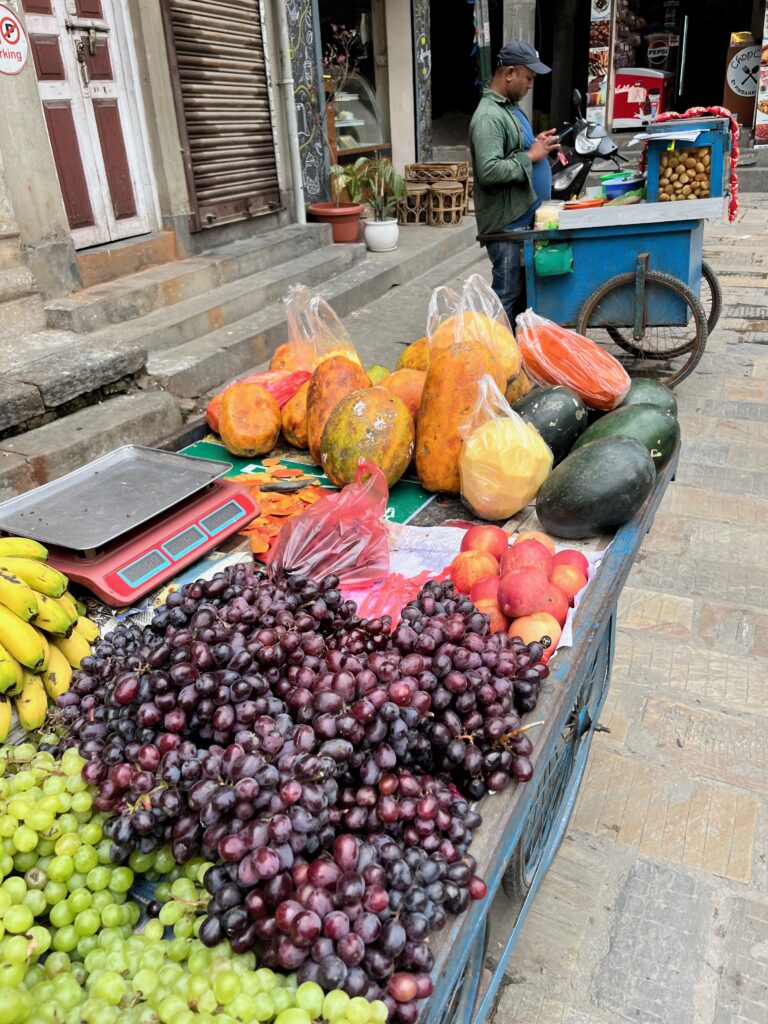
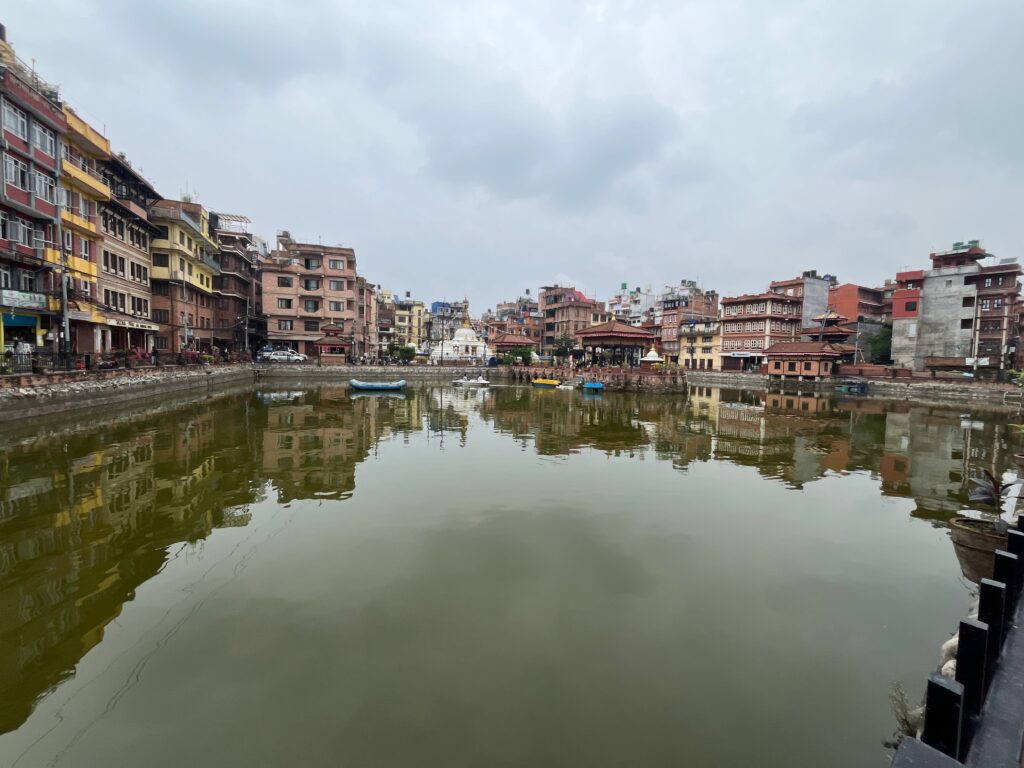
In the afternoon we traveled to nearby Bhaktapur, a powerful capital city from the 14th to 16th centuries and a UNESCO World Heritage Site. We explored its narrow alleyways, lined with medieval homes and temples. We also visited Taumadhi Square, the home of Nyatapola Temple.
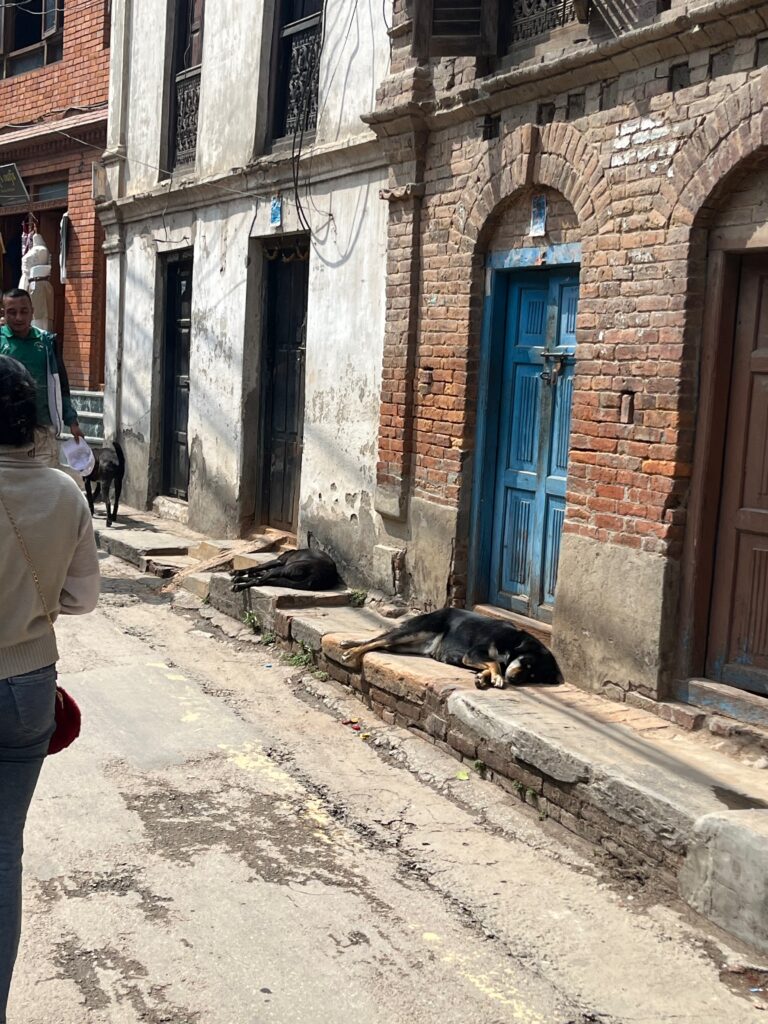

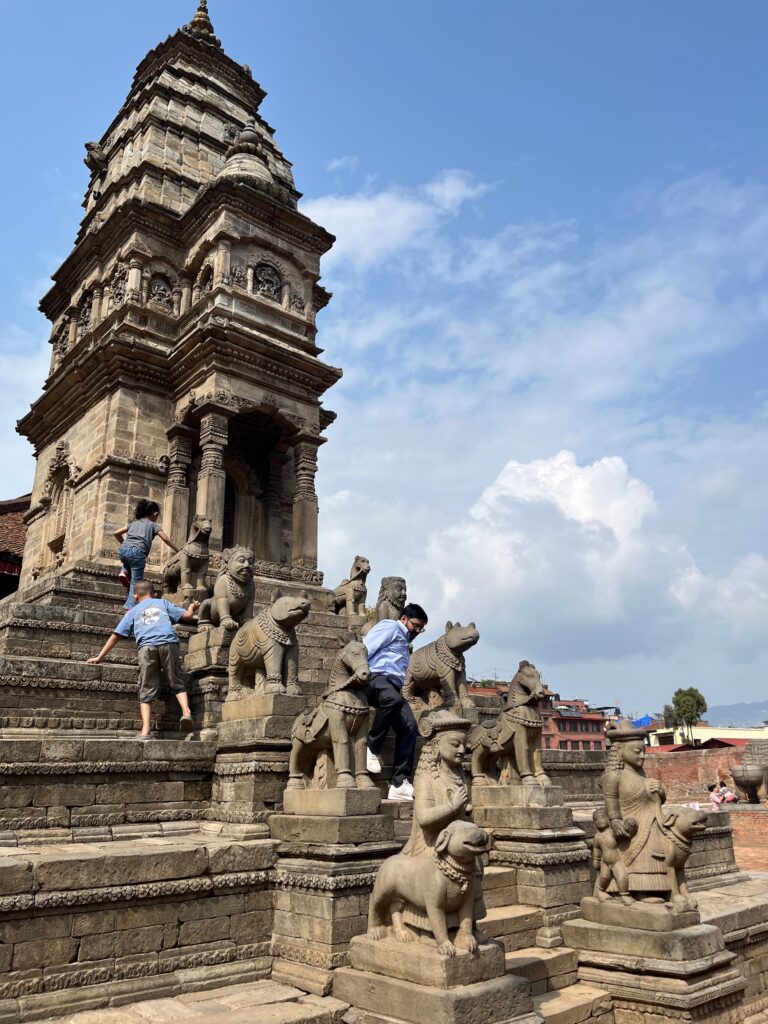
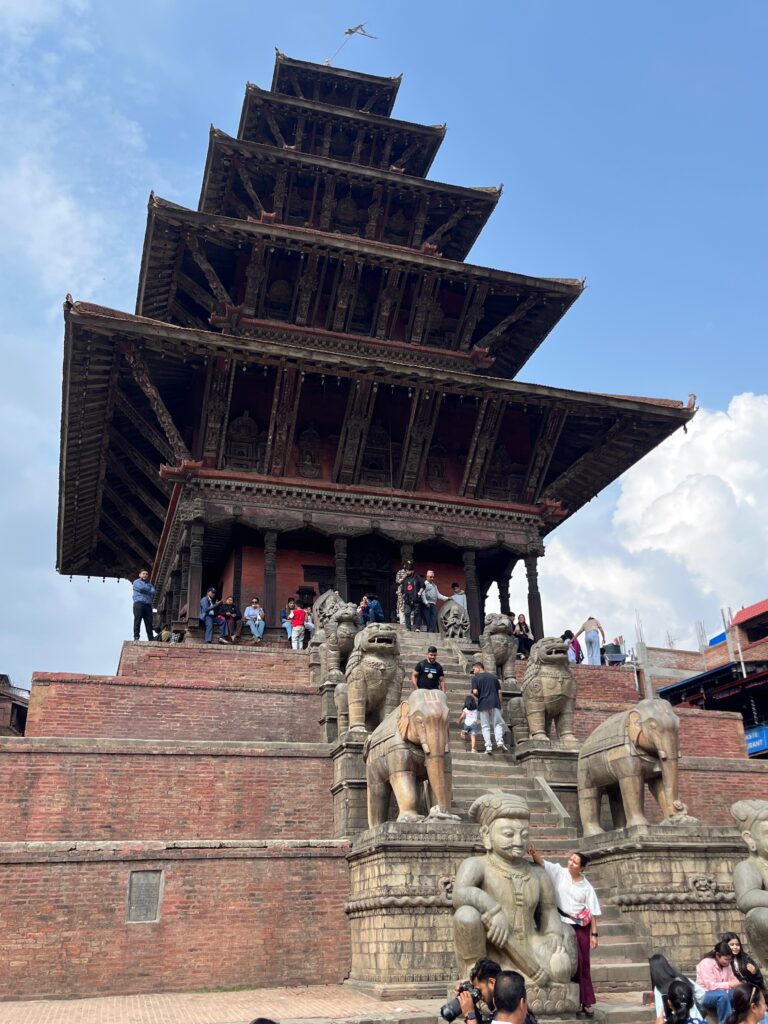
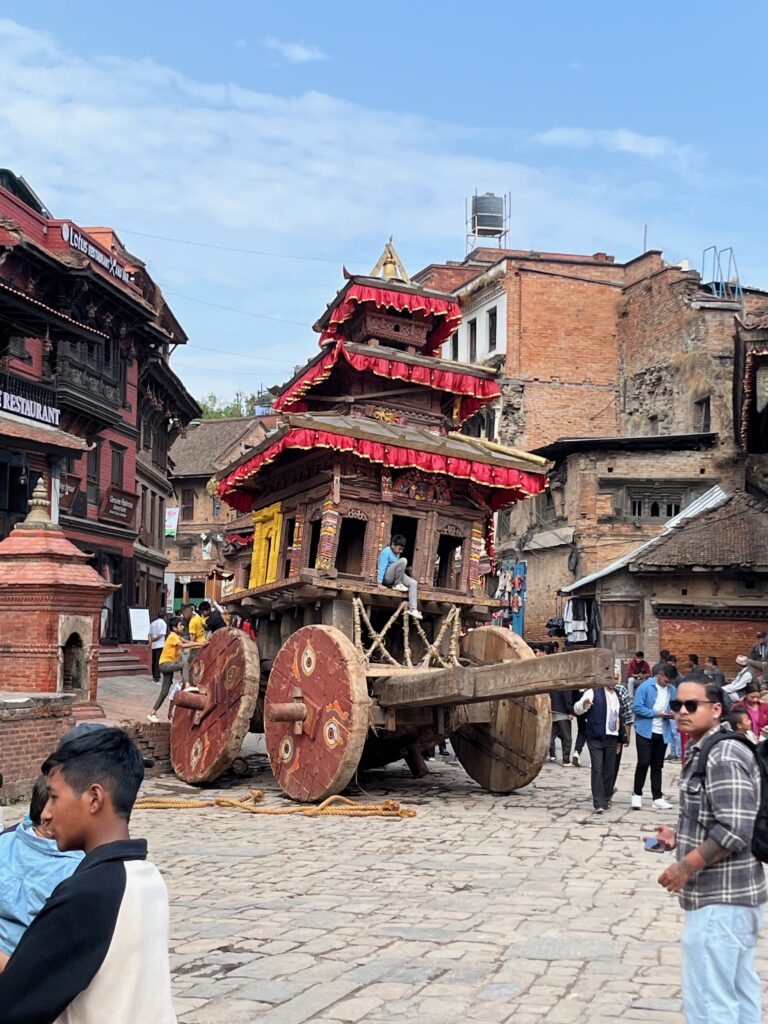
Hotel: The Soaltee
April 20 – Depart Kathmandu
Today I spent time working on this blog post, enjoying the beautiful weather, and spending the last moments with my tour companions. At 6 p.m. I bid goodbye to Nepal and boarded a the first of three flights to home. From my departure from the hotel to arriving home took slightly more than 37 hours.
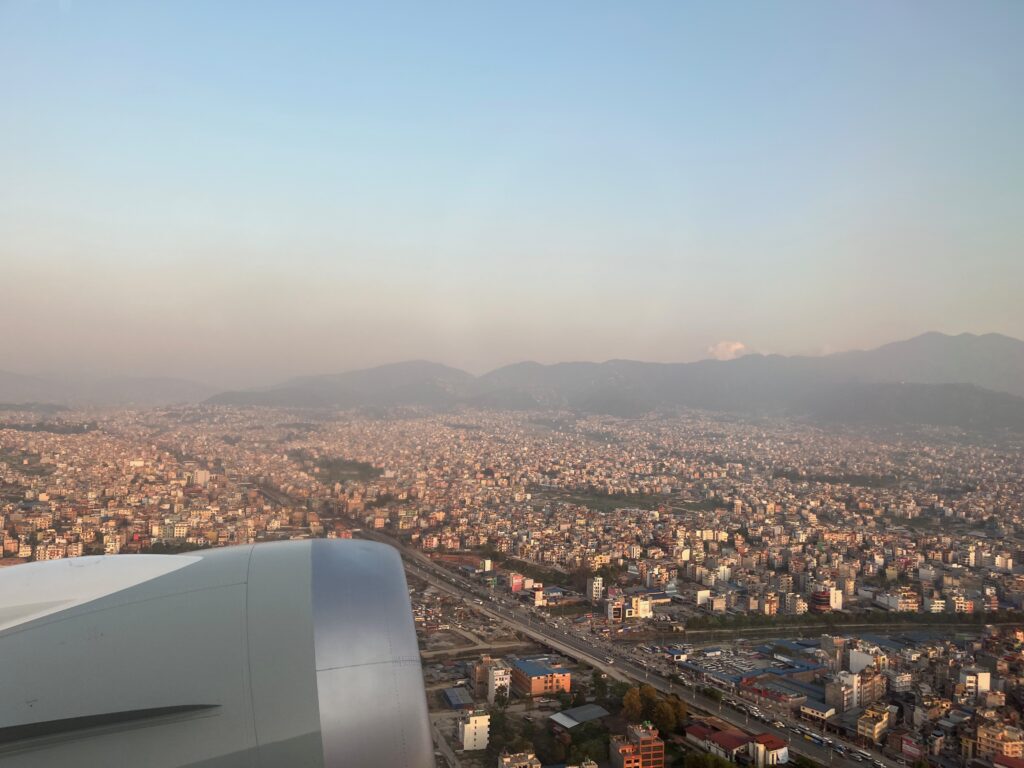
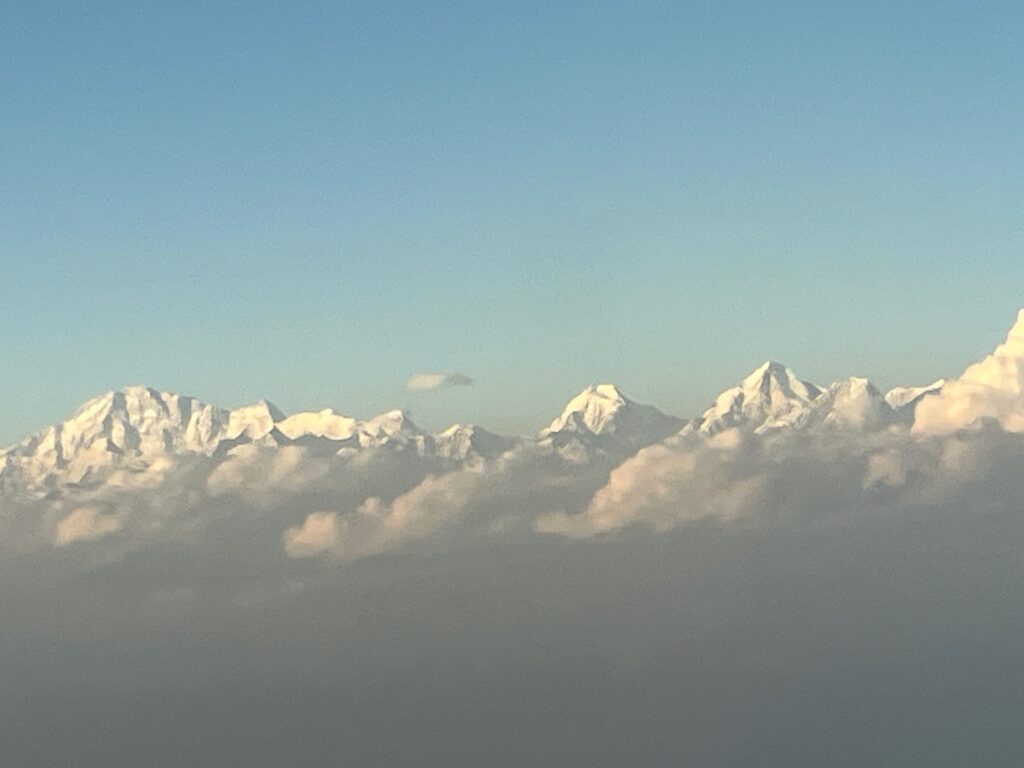
Some trip metrics you find of interest are provided below.
Flights: 11 (6 to get to/from Kathmandu, 2 to/from Bhutan, 1 from Bharatpur Airport to Kathmandu)
Hotels: 8 (3 in Bhutan, 5 in Nepal)
Activity Metrics (total per my Apple Watch; daily detail provided below):
- 246,760 steps;
- 107.14 miles walked;
- 1,126 “exercise” minutes; and,
- 496 flights climbed.
| Date | Steps | Miles | Exercise Minutes | Flights Climbed |
| April 3 | 16,557 | 7.62 | 62 | 2 |
| April 4* | 3,317 | 1.39 | 3 | 4 |
| April 5 | 6,352 | 2.76 | 11 | 6 |
| April 6 | 11,287 | 4.82 | 17 | 0 |
| April 7 | 10,298 | 4.38 | 31 | 17 |
| April 8 | 15,812 | 6.58 | 107 | 104 |
| April 9 | 13,978 | 5.94 | 74 | 49 |
| April 10 | 13,362 | 5.82 | 132 | 43 |
| April 11 | 20,852 | 8.85 | 155 | 99 |
| April 12 | 9,338 | 4.09 | 12 | 3 |
| April 13 | 11,927 | 4.99 | 48 | 17 |
| April 14 | 25,366 | 10.72 | 197 | 32 |
| April 15 | 19,131 | 8.21 | 99 | 75 |
| April 16 | 10,301 | 4.49 | 52 | 12 |
| April 17 | 18,787 | 9.62 | 71 | 13 |
| April 18 | 10,164 | 4.16 | 12 | 5 |
| April 19 | 12,304 | 5.17 | 18 | 2 |
| April 20 & 21** | 17,627 | 7.53 | 25 | 13 |
* Travel day: Short day due to loss of hours due to time zone change.
** Travel days: Long day due to gain of hours due to time zone change.
Thoughts on Bhutan and Nepal Generally
Bhutan is a relatively small country with little arable land. As stated above, most of its revenue comes from hydroelectric power generated from the water flowing from the snowmelt in the mountains. In addition, it’s a relatively small country in terms of population and size (ranked 160th and 133rd, respectively). Finally, 98.8% of its surface area is mountainous, which limits its ability to develop mass transportation of any kind. As a result of all these things, its tourism infrastructure is limited, as are the areas which are generally accessible to tourists. That said, the people of this beautiful country serve as amazing hosts to those who come to visit. The people are friendly, hard-working, and gracious to visitors. In addition, the country is generally clean. I don’t recall seeing much in terms of garbage along the roads or at the tourist sites. The food is typical of a third-world country, but is tasty and satisfying (i.e., lots of rice, chicken, beans, and vegetables). The people are proud of their culture and display it at every opportunity. I would go back and would love to venture off the beaten path to the eastern part of the country.
Nepal has many more people than Bhutan, and has much more developed tourism infrastructure. Nepal is ranked 49th in population and 93rd in size. While Nepal has more arable land than Bhutan, it is still predominantly a mountainous country (75% of its surface area is mountainous). It too has limited mass transportation due to the mountains within its borders. In Nepal’s case, it has developed a much bigger amount of tourism revenue, some would argue too big. I definitely noticed more garbage and waste along the roadways and hiking trails. Similar to Bhutan, the people are very friendly and gracious. The food selection in Nepal is greater and is heavily influenced by Indian and Chinese cuisine. In addition, one cannot ignore the impact of the April 25, 2015 earthquake that shook Nepal. “The April 2015 Nepal earthquake (also known as the Gorkha earthquake) killed 8,962 people and injured 21,952 across the countries of Nepal, India, China and Bangladesh…. Hundreds of thousands of Nepalese were made homeless with entire villages flattened across many districts of the country. Centuries-old buildings were destroyed at UNESCO World Heritage Sites in the Kathmandu Valley, including some at the Kathmandu Durbar Square, the Patan Durbar Square, the Bhaktapur Durbar Square, the Changu Narayan Temple, the Boudhanath stupa, and the Swayambhunathstupa.”5 There was still evidence of some of the destruction caused by the earthquake. The fact that the country has rebounded to the extent it has is a testament to the pride and work ethic of its people. I would also love to go back to Nepal and, perhaps, hike the Annapurna Circuit.
- CIA Factbook, https://www.cia.gov/the-world-factbook/countries/bhutan/, last updated March 18, 2025 ↩︎
- CIA Factbook, https://www.cia.gov/the-world-factbook/countries/nepal/, last updated March 19, 2025. ↩︎
- https://en.wikipedia.org/wiki/Nepal ↩︎
- https://www.re-thinkingthefuture.com/case-studies/a14028-patan-durbar-square-lalitpur/ ↩︎
- https://en.wikipedia.org/wiki/April_2015_Nepal_earthquake. See also https://whc.unesco.org/en/news/1296/ ↩︎
In closing…
I hope you enjoyed this blog. I enjoyed digging into the details of each country and presenting it for you in what I hope was an engaging fashion. If you have questions or comments, please put them in the comment section below or contact me directly! Thanks again for your time and interest.
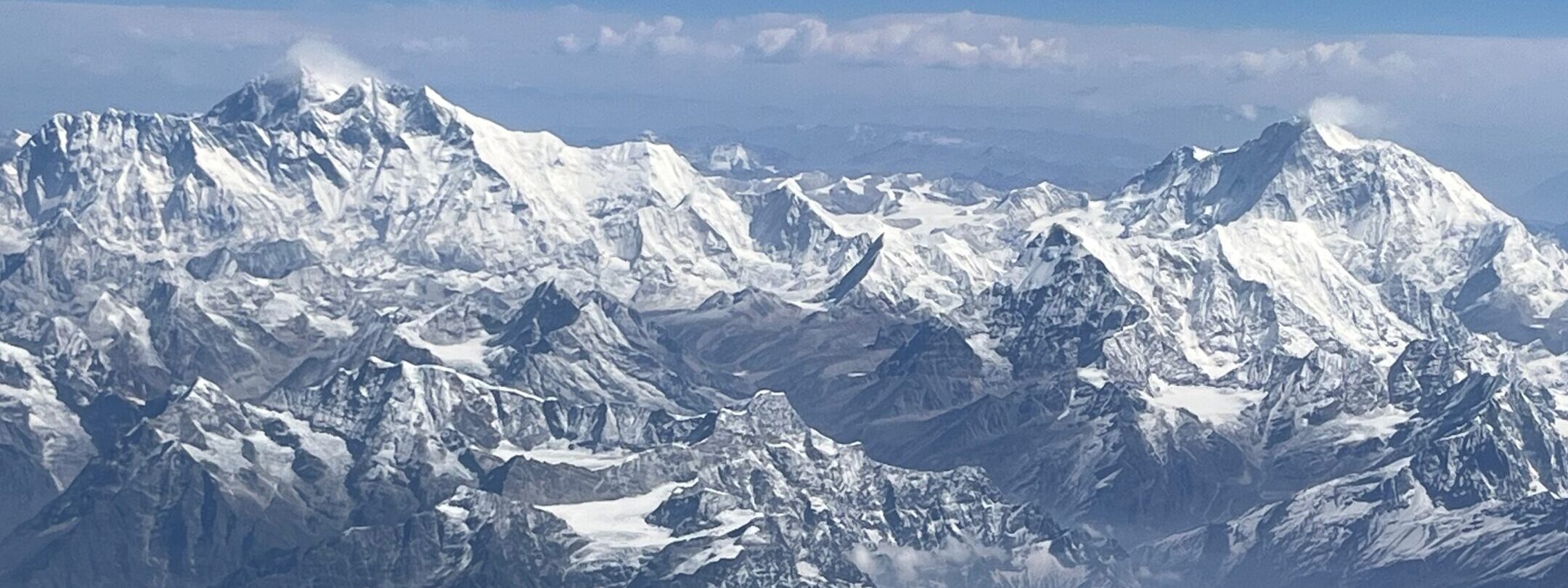
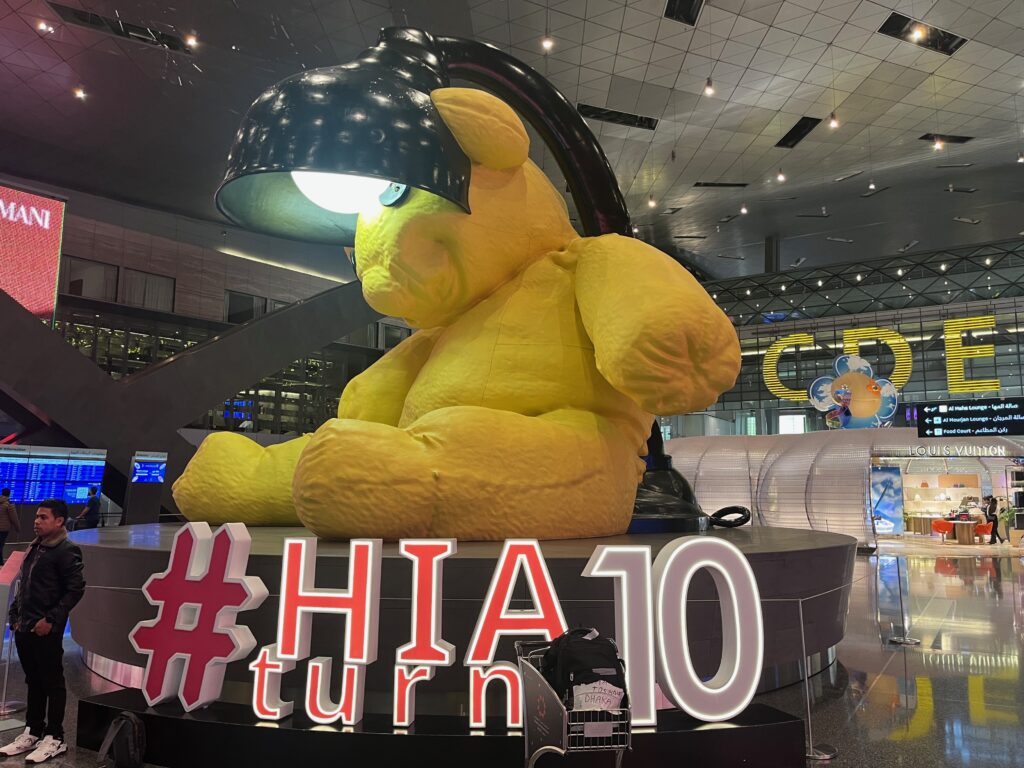
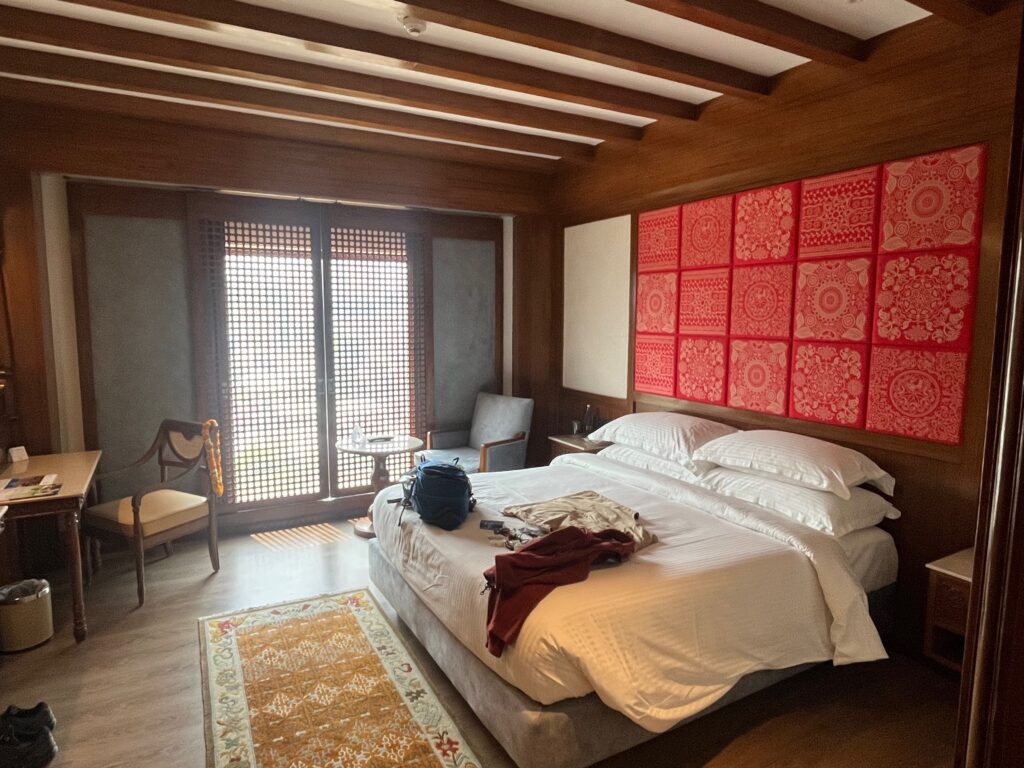
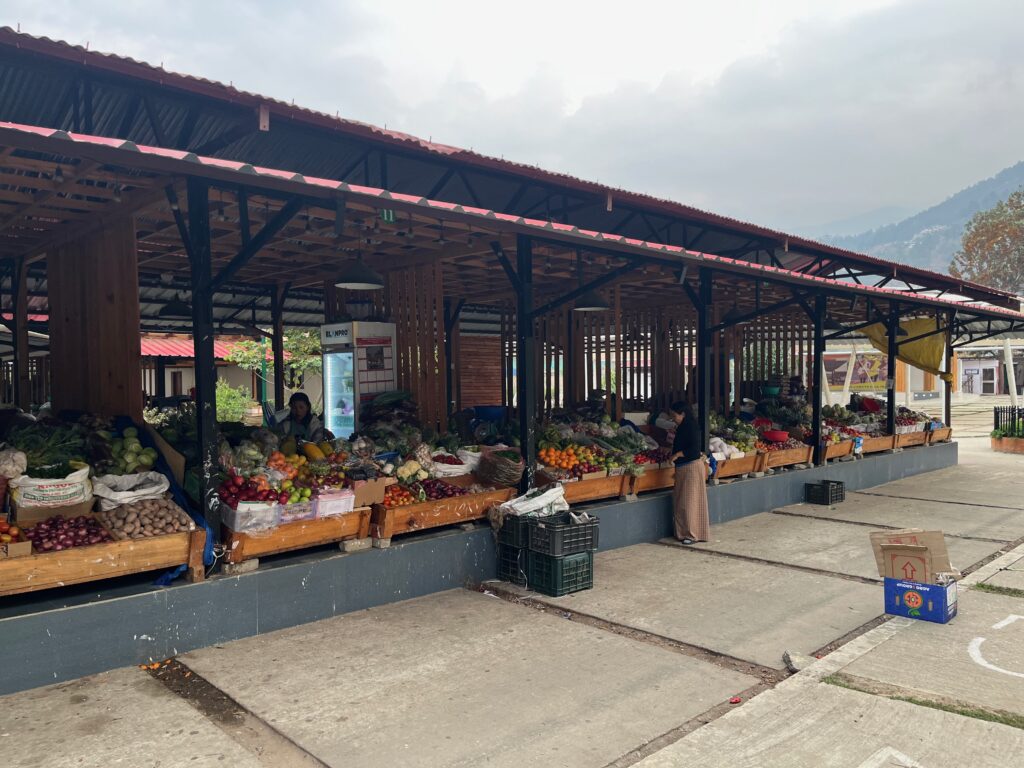
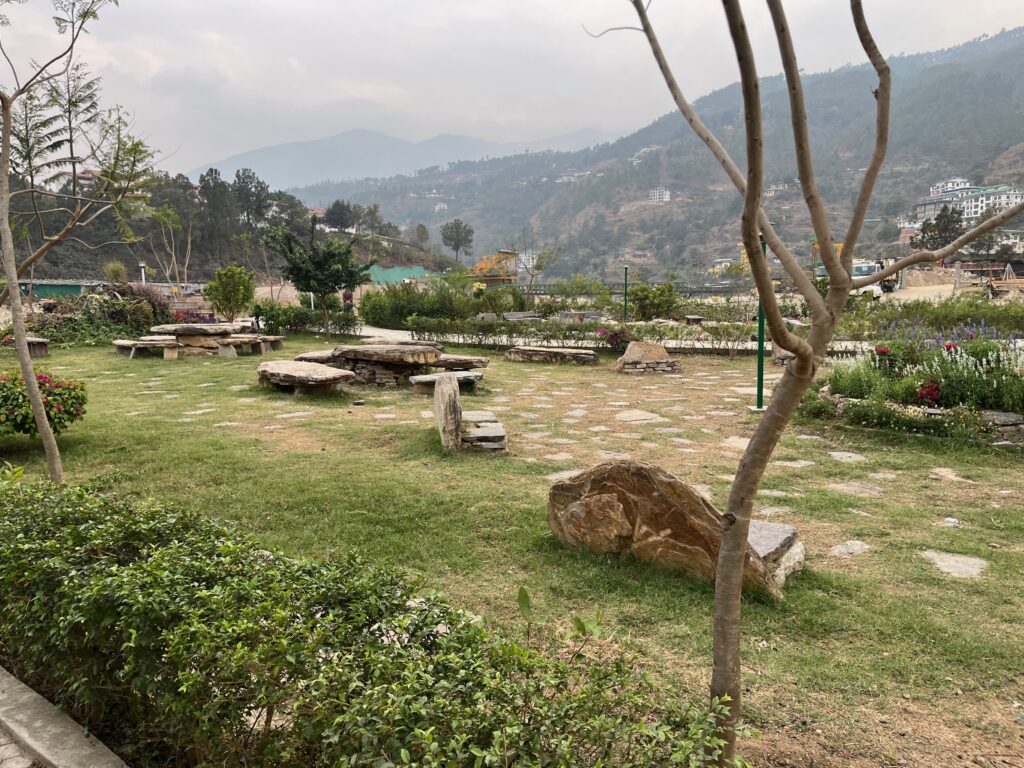
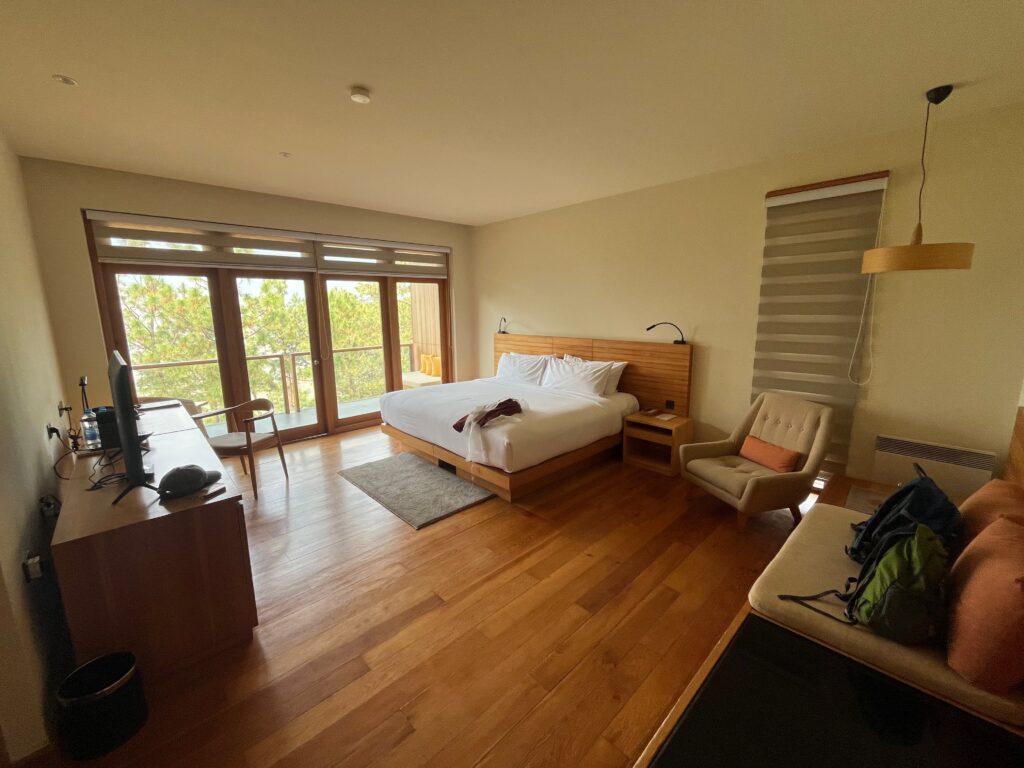
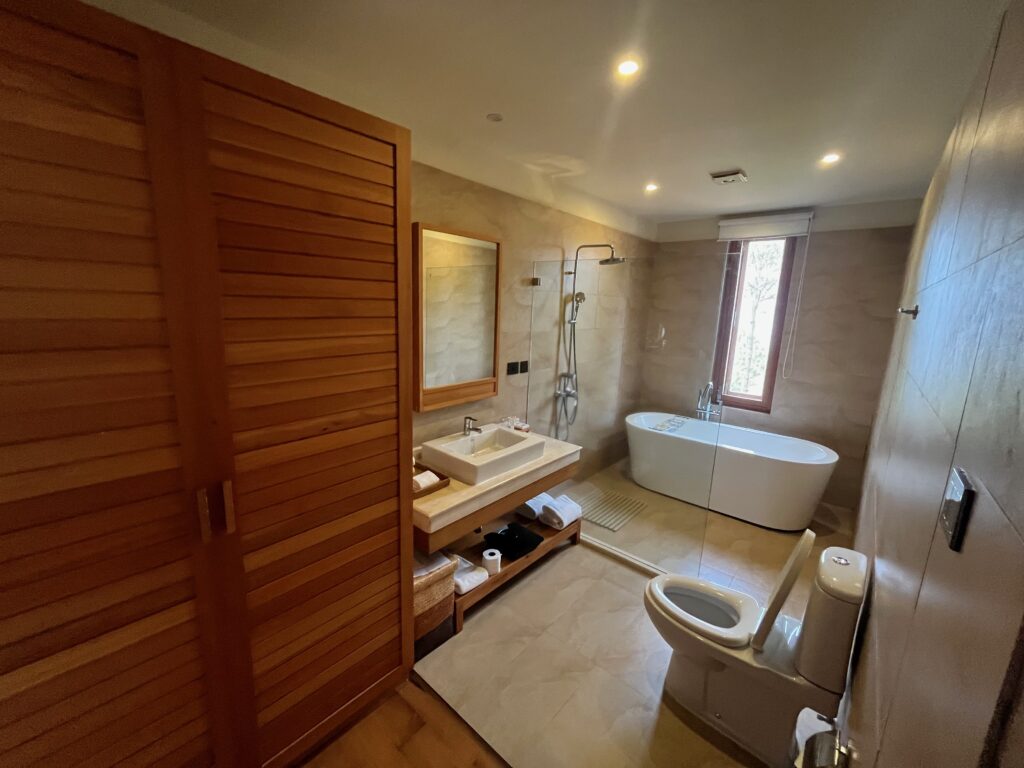
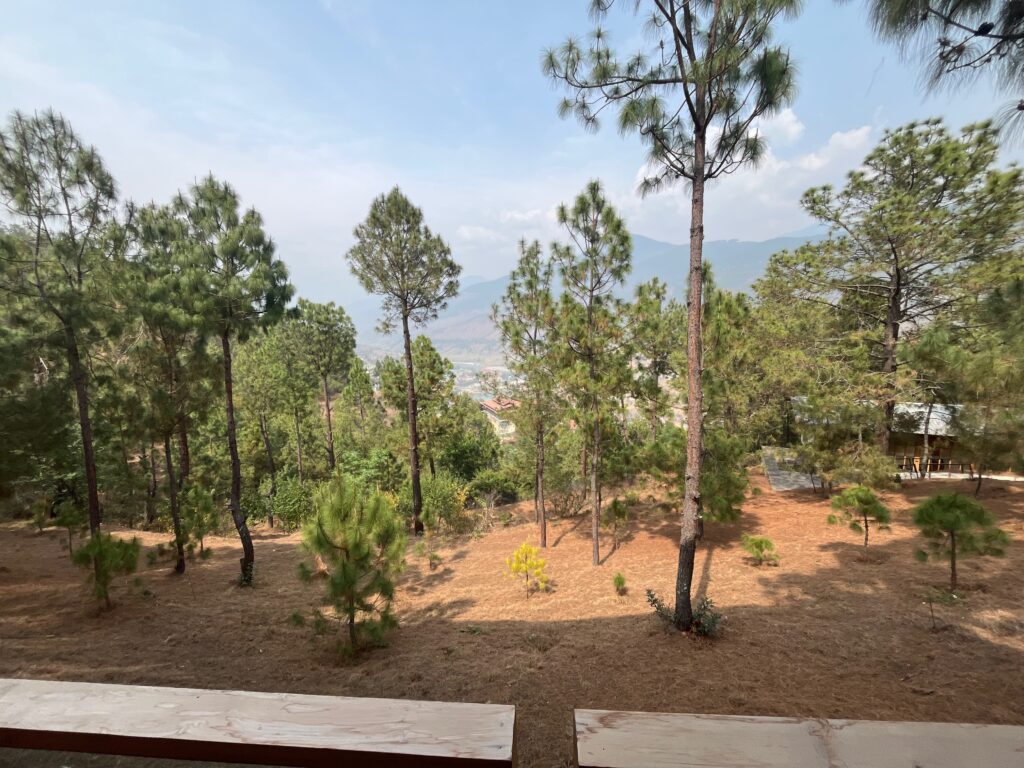
Thank you for this opportunity to travel vicariously with you! I always love hearing about your trips and seeing the photos.